Today, we visited Jungfraujoch, the “Top of Europe,” and the main event of this trip. After breakfast at the Belvedere, we headed out to take the train down to Grindelwald Terminal and caught the Eiger Express up to Eigergletcher. From there, we took the train up to Jungfraujoch. We checked out the beautiful scenery from the Sphinx Terrace and went outside to hike in the snow to Mönchsjochhütte on the southeast side of Mönch. After returning to Jungfraujoch, we visited the Glacier Plateau at the base of Jungfrau before heading back down to Grindelwald to end the day.
Based on the weather forecast, it looked like today would have the best weather during our five days in Grindelwald. So, we decided today would be the day that we head up to Jungfraujoch. The Jungfrau Travel Pass does not include access to Jungfraujoch but does provide a discount. The discounted fare is 63 CHF per adult, so not exactly cheap even at the reduced rate.
Like yesterday, we made it to breakfast at the 6:30am start time at the Hotel Belvedere. After eating, we caught the train down to Grindelwald Terminal. It was quite busy on the train with many heading to the Eiger Express with us. All the gondolas were going up full, very different from when we first arrived two days ago!
After reaching Eigergletcher, we went to queue for the train to Jungfraujoch. There are two separate queues, one for people with timed tickets and one for those without. We didn’t get timed tickets as it limits our schedule flexibility. It wasn’t a problem today. We managed to get near the front of the line.
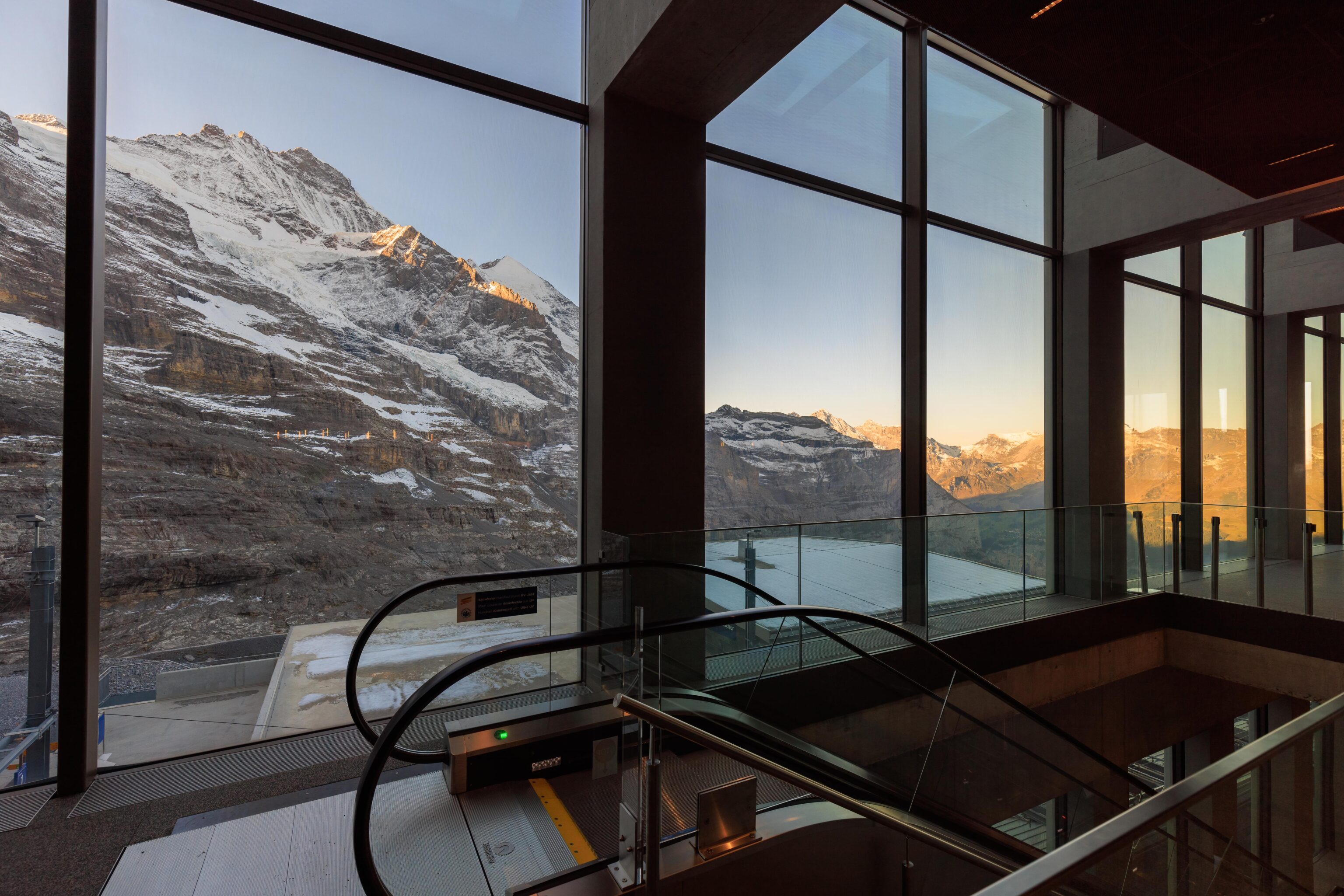
We arrived at around 8:40 and waited for around 15 minutes before we were able to go downstairs to the train platform.
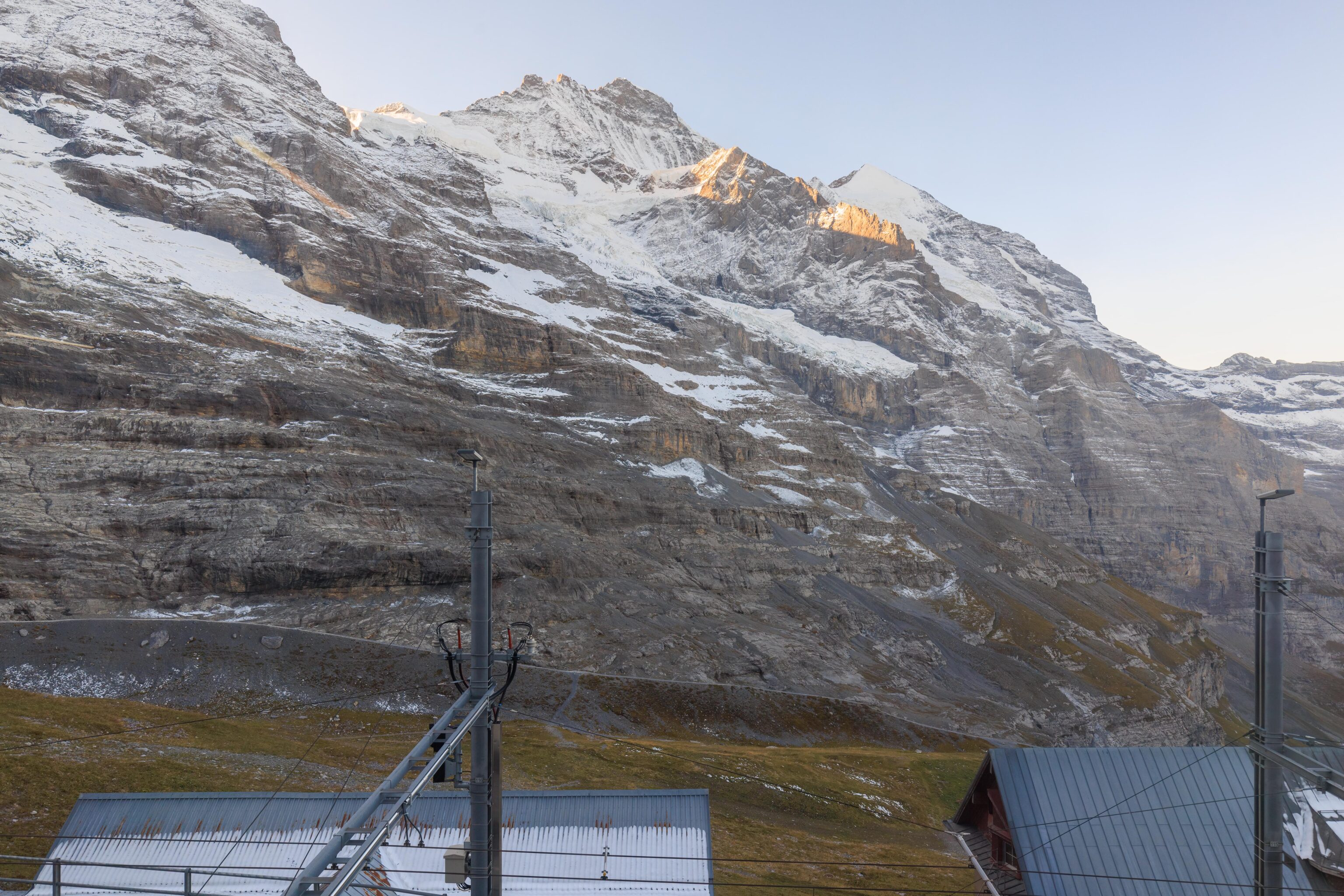
Once on the platform, still within the Eigergletscher building, we were given an area to wait along with boarding instructions. The way it works is that everyone has a seat. Each section of the train is assigned to specific groups. The groups include tour groups, which sit together, groups of people with timed tickets, and groups of people without timed tickets.
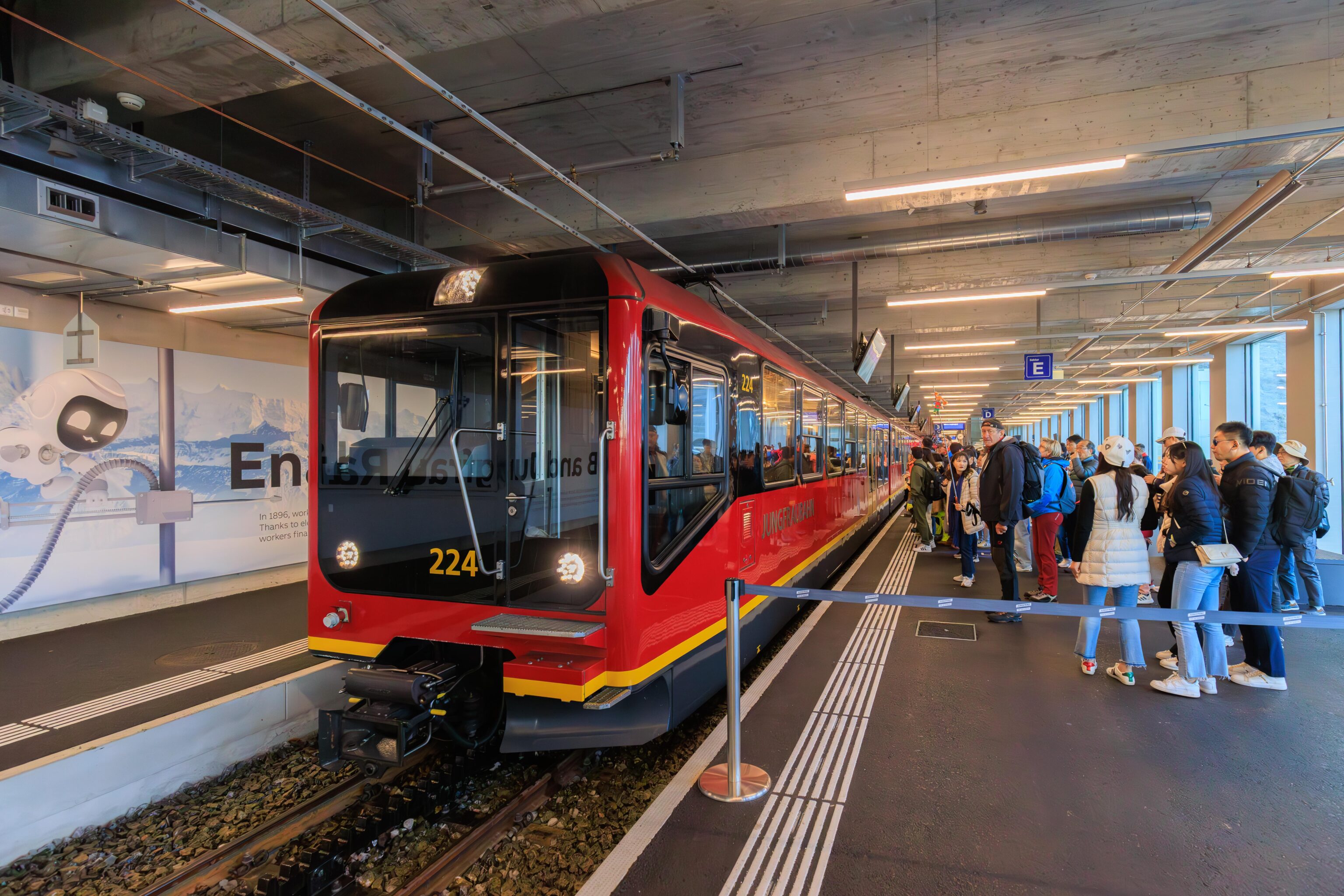
After about 15 more minutes, the train arrived.
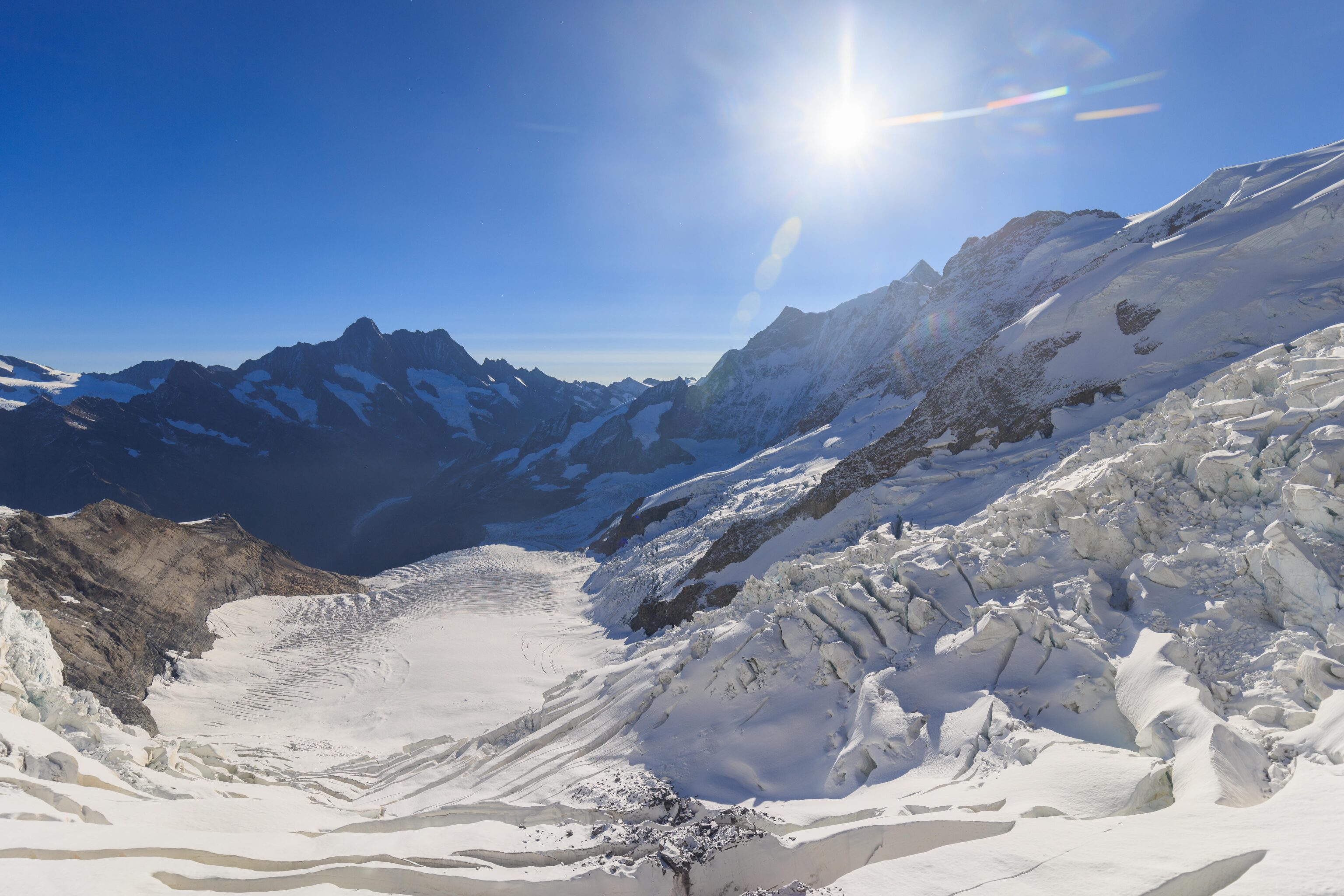
Other than a very short section after departing Eigergletscher, the entire route is underground. The train heads consistently upwards, first passing under Eiger. There is an intermediate underground station, Eismeer (Sea of Ice), where the train stops for a few minutes. This station, on the south side of Eiger, has windows that provides a view of the Lower Grindelwald Glacier.
The glass windows aren’t great for photography, only allowing for clear photos when photographing directly out. Unfortunately, the sun was right there as well!
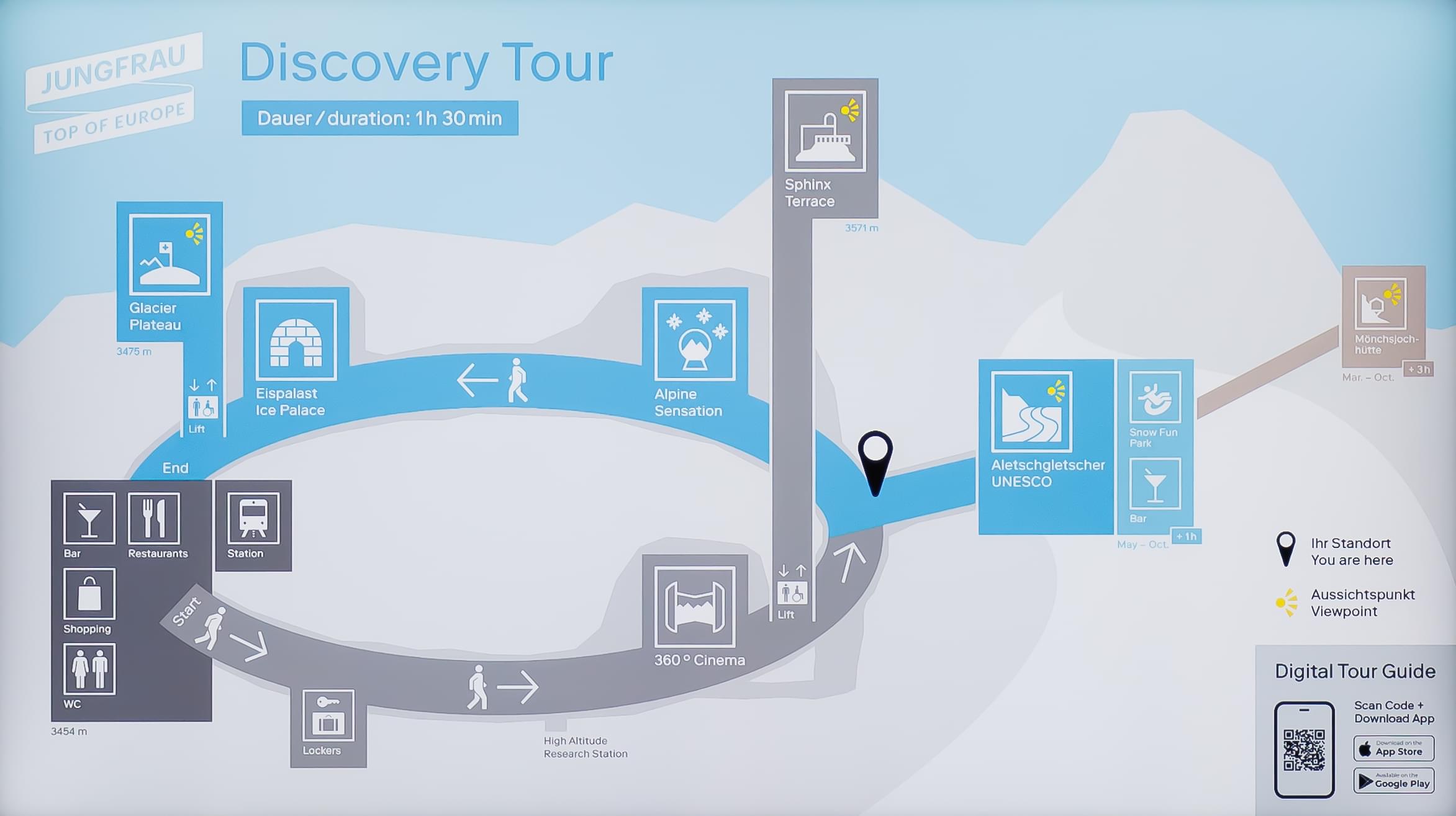
After reaching Jungfraujoch, there are a number of options available. This map, displayed on TV screens, provides a rough overview of the things to do. It is not drawn to scale at all, which we found out later on in the morning when we went to find the bathrooms!
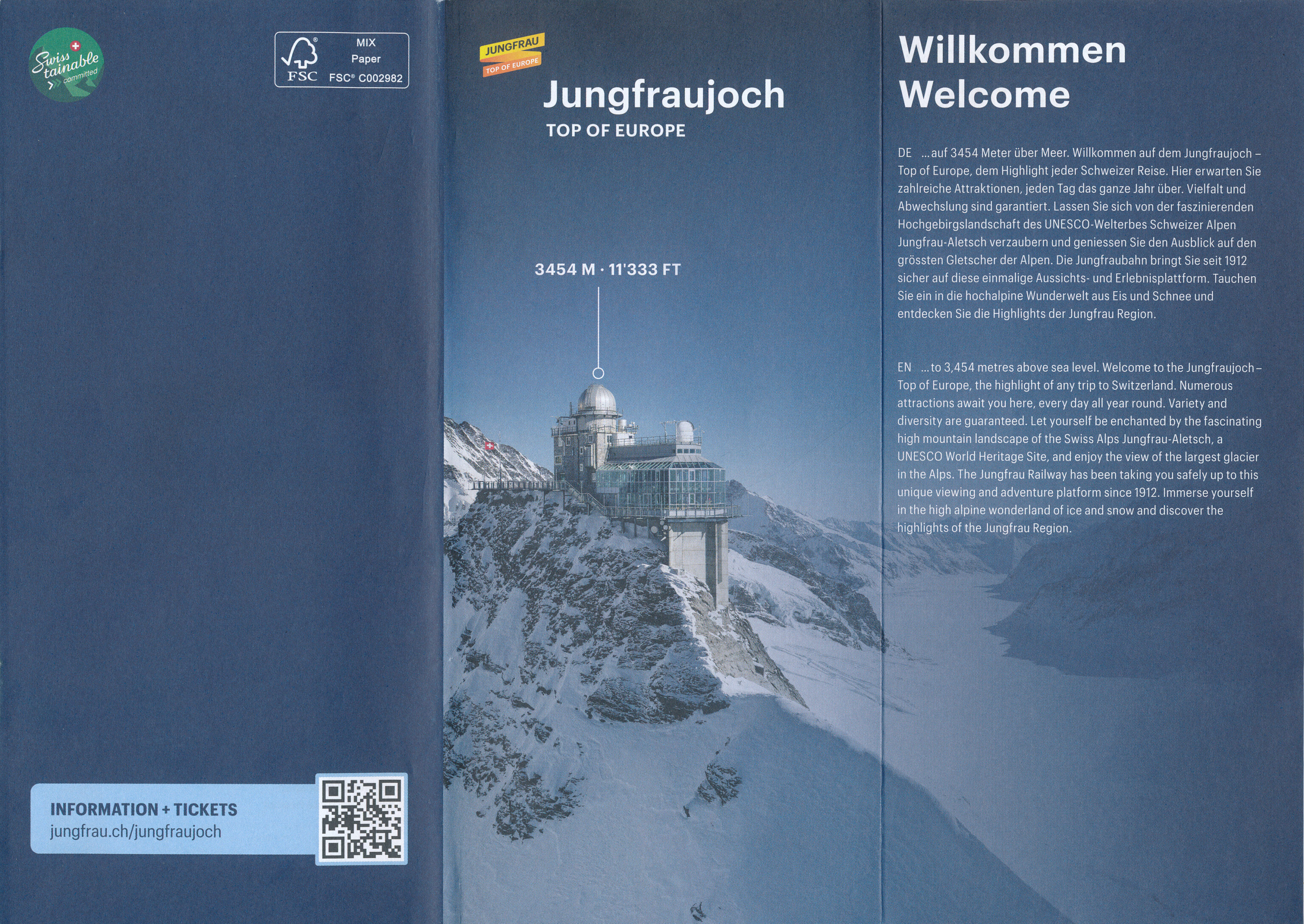
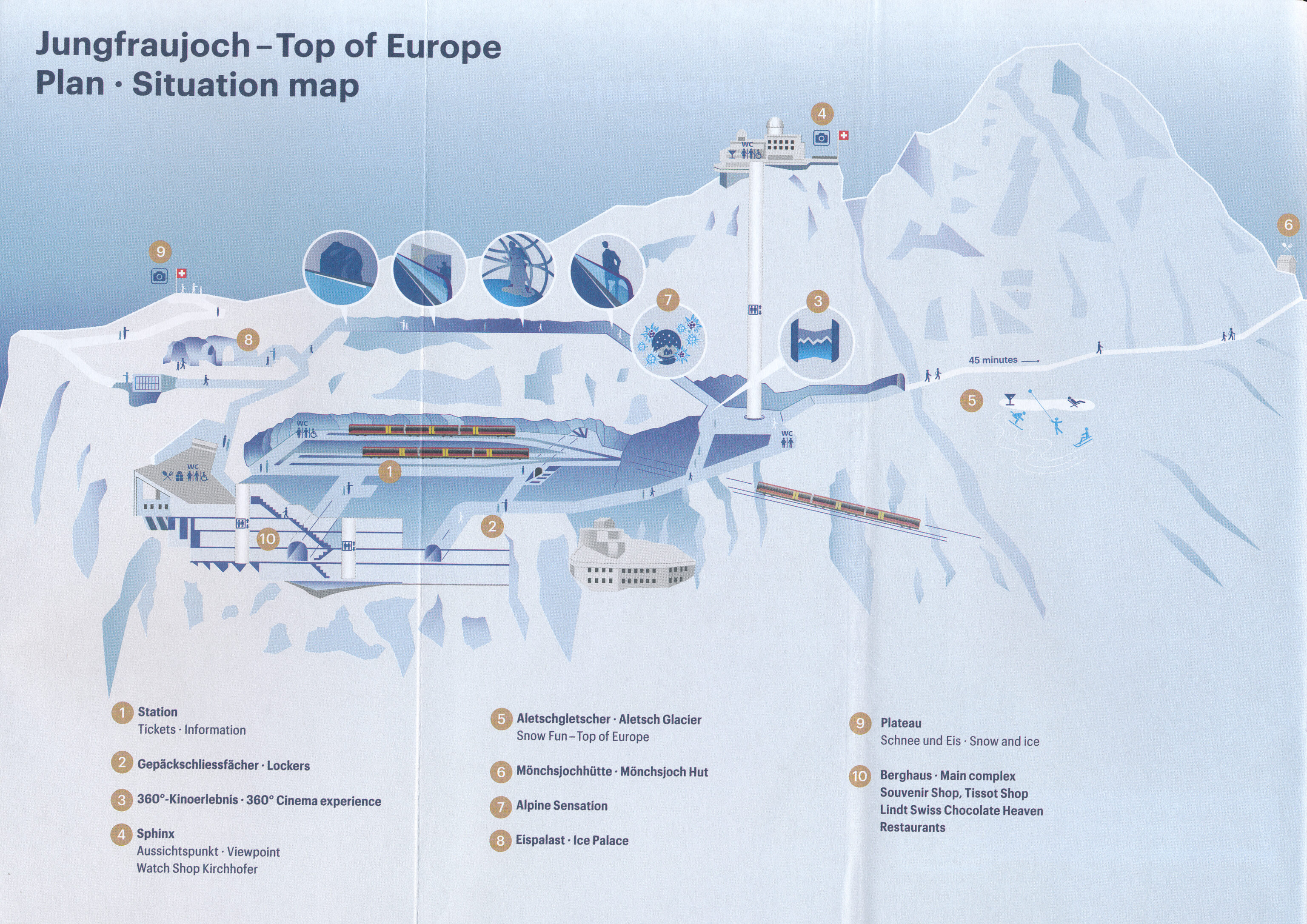
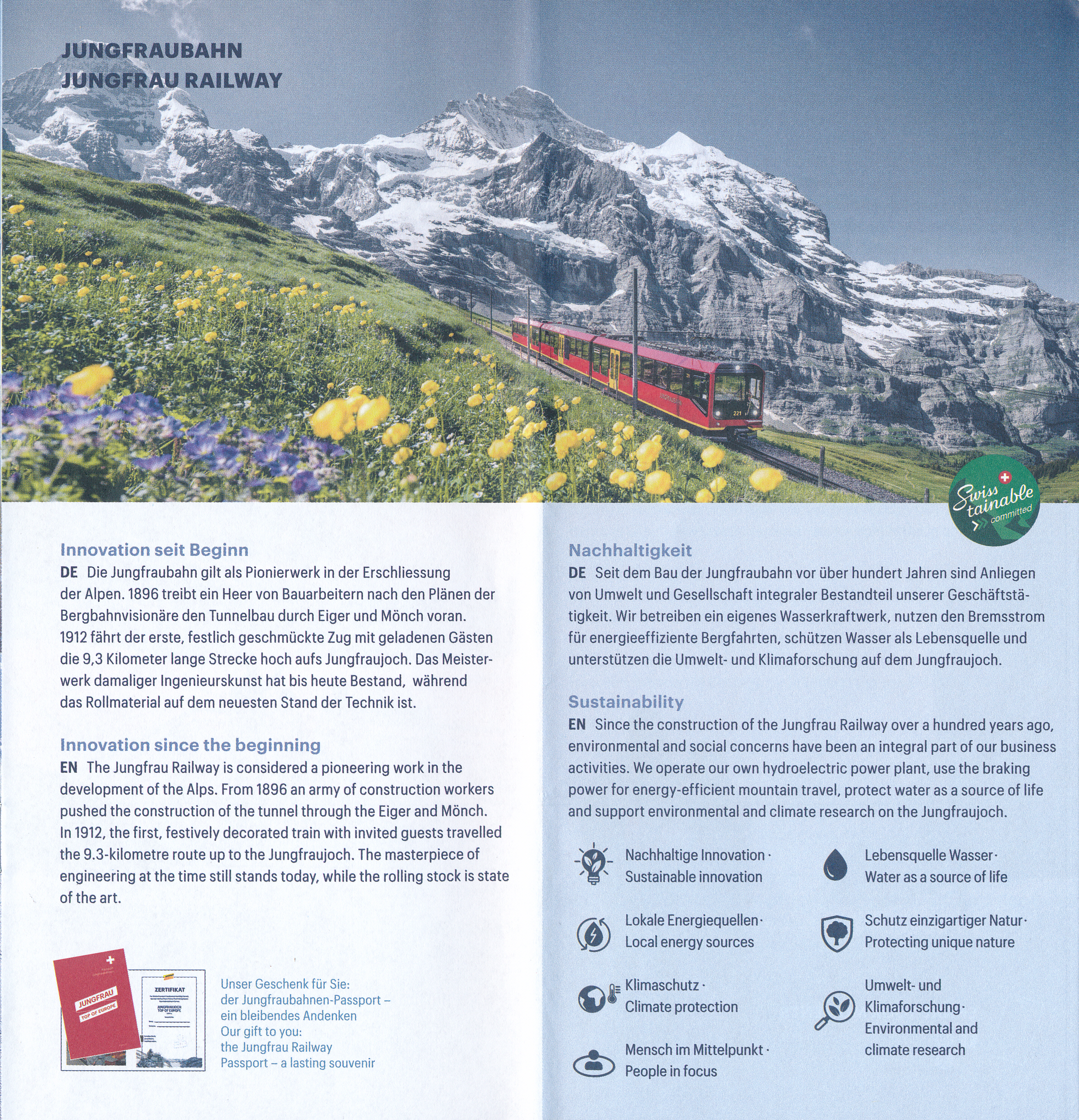
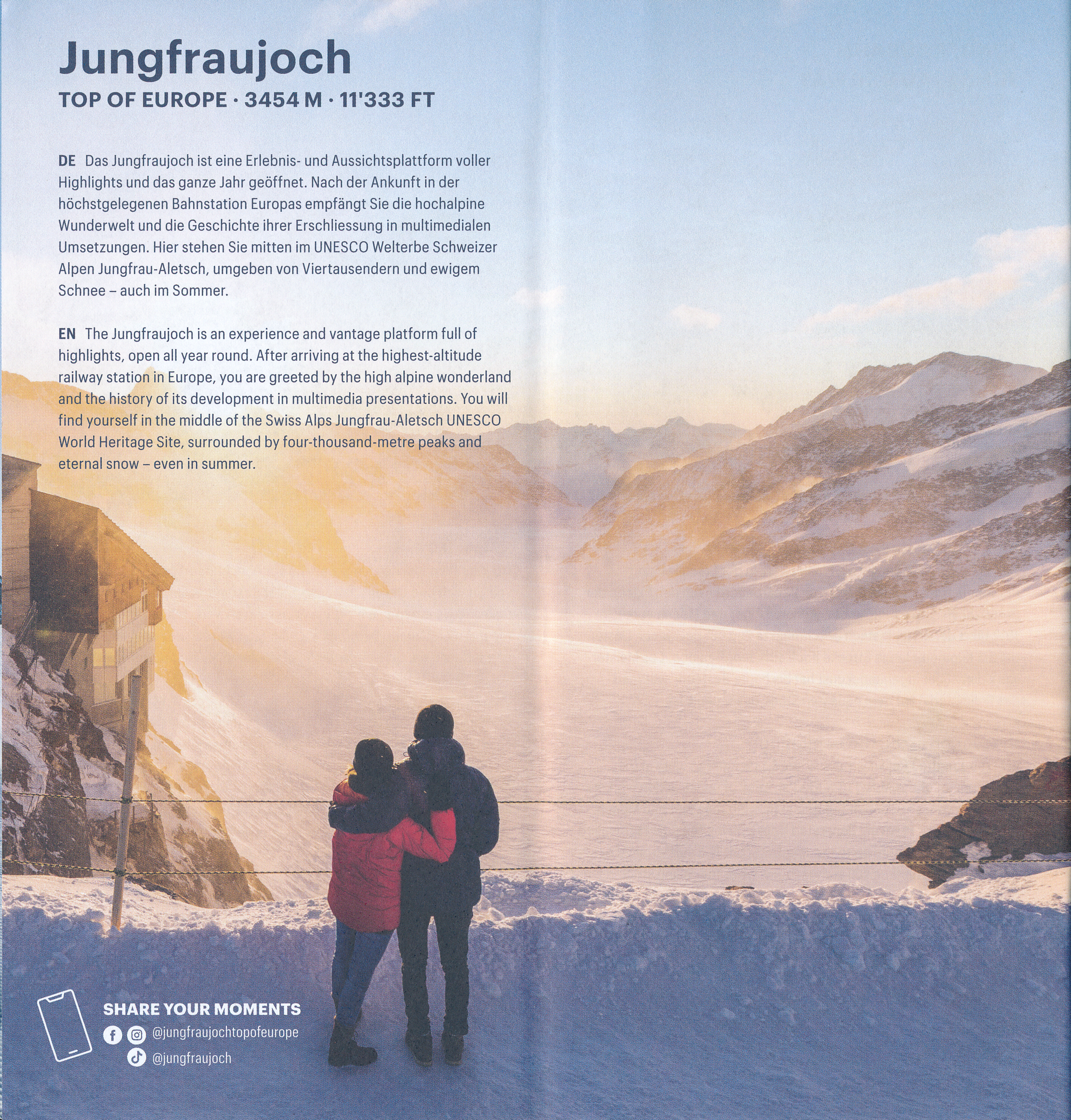
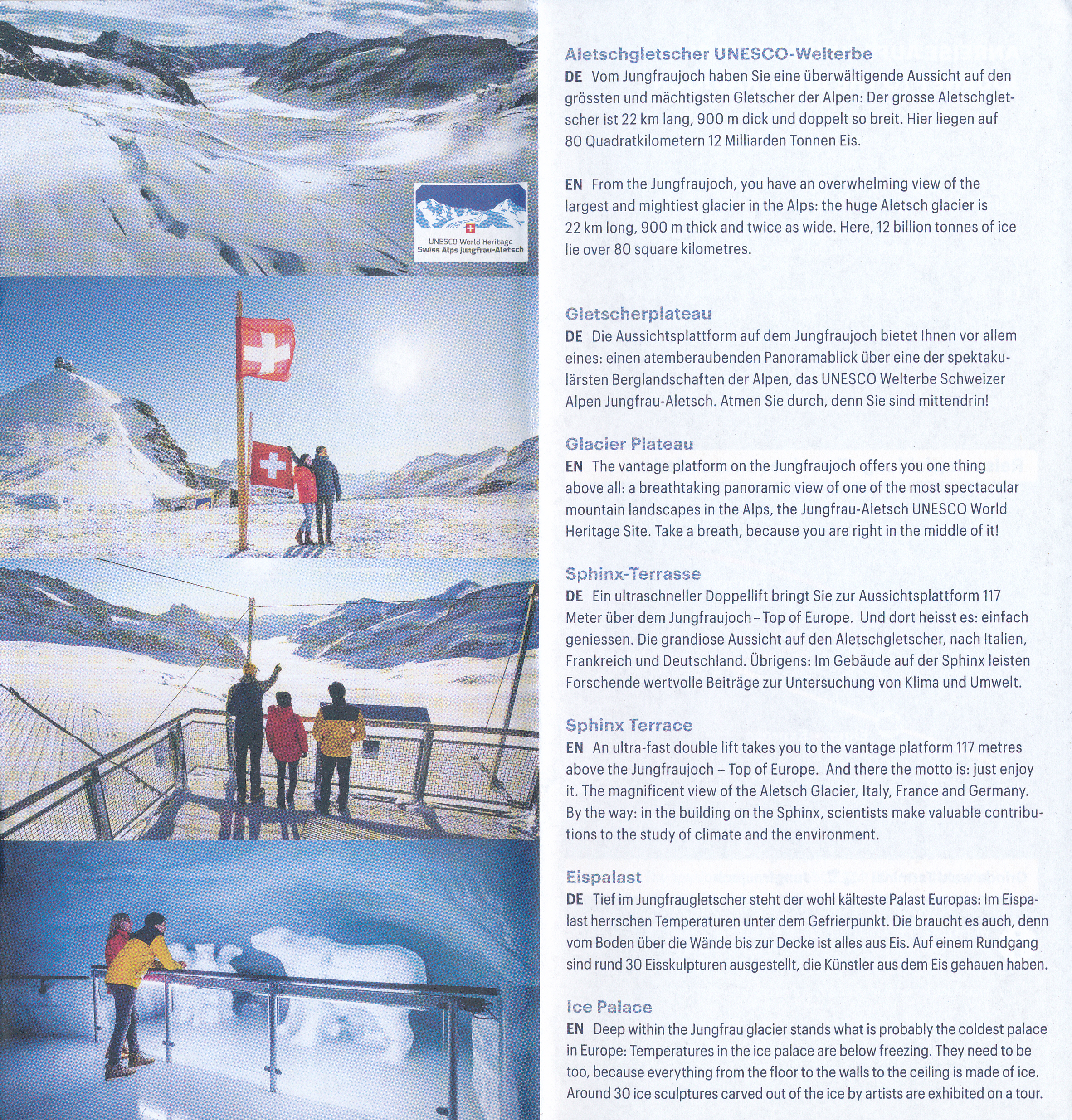
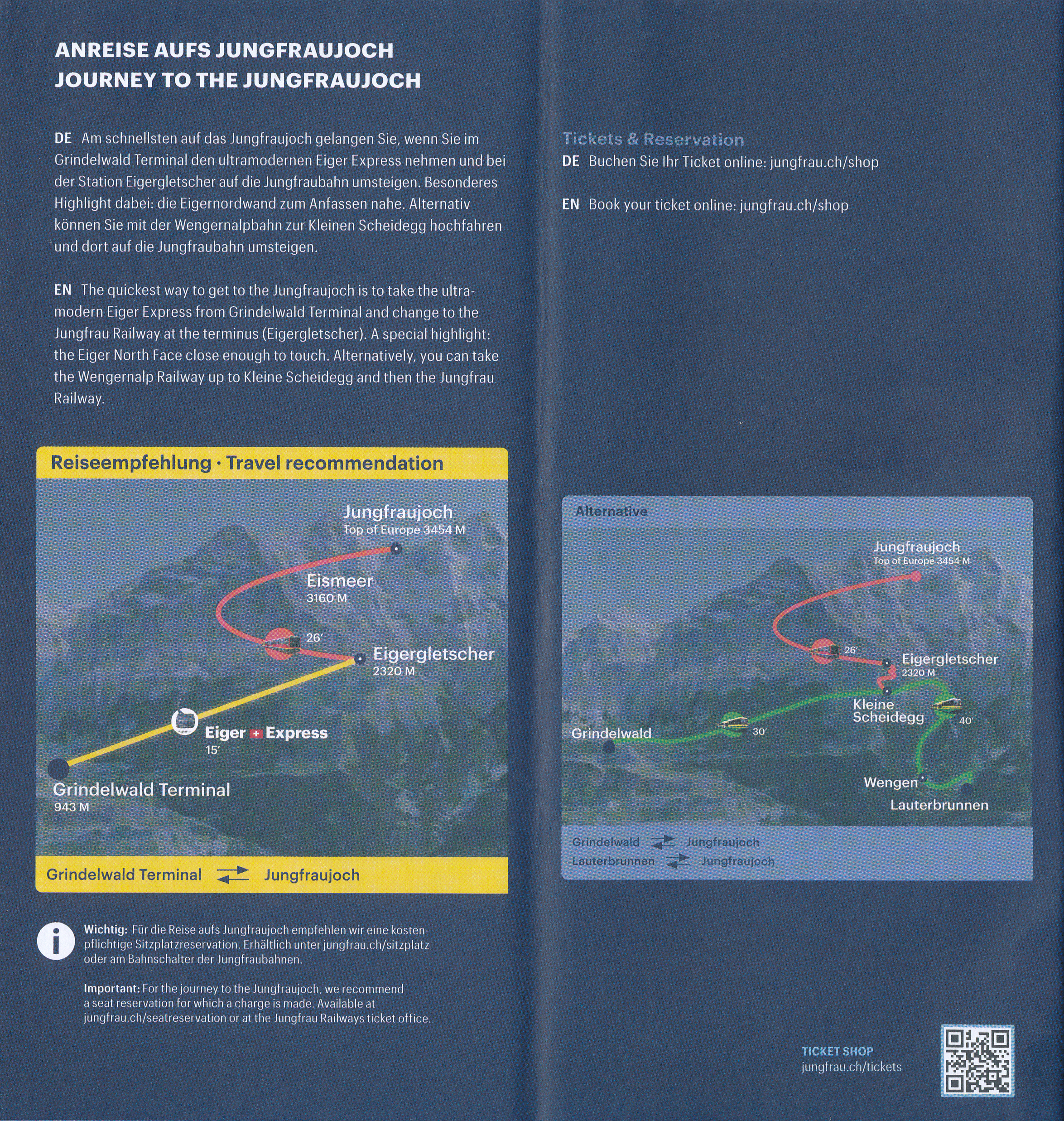
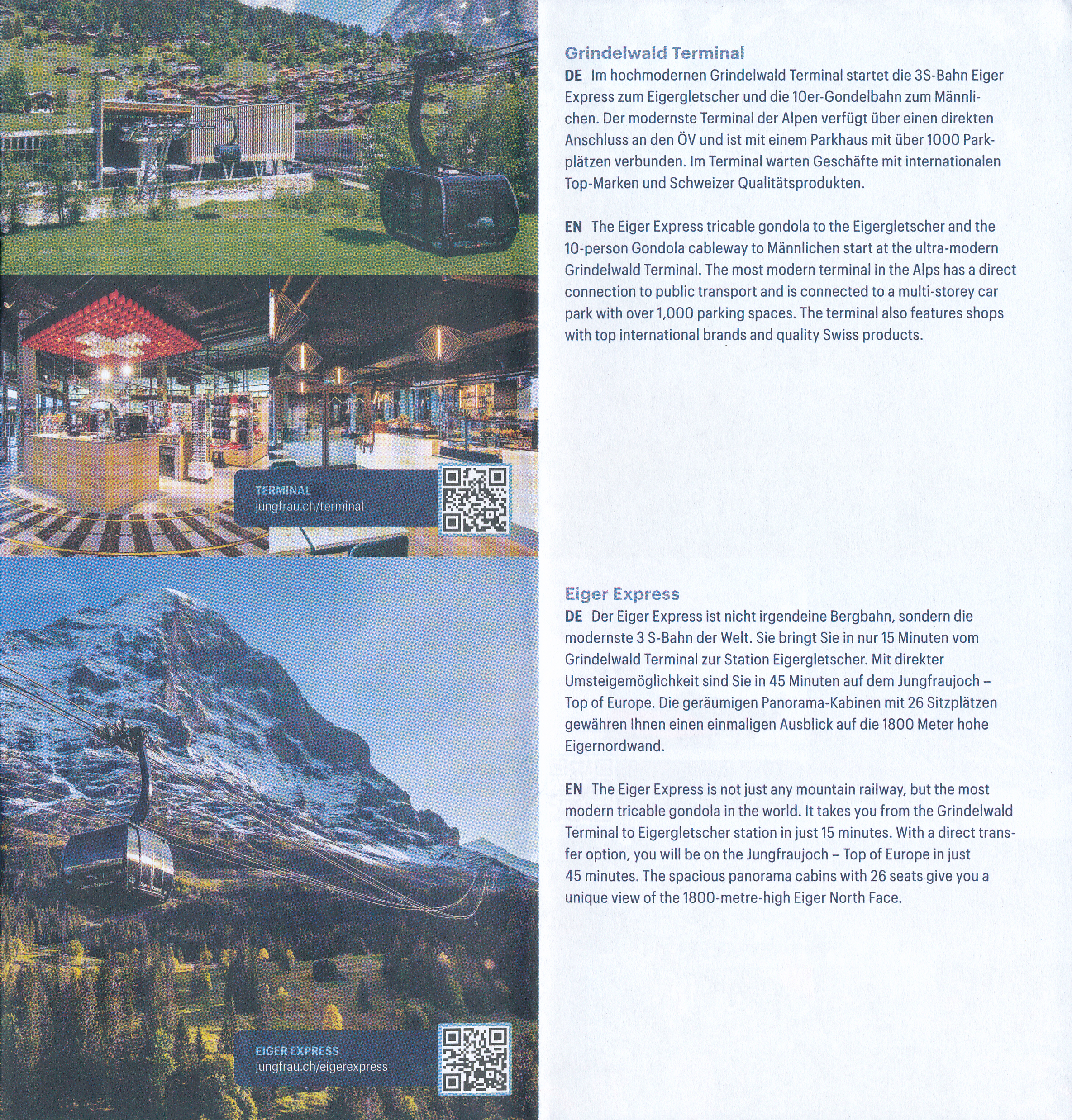
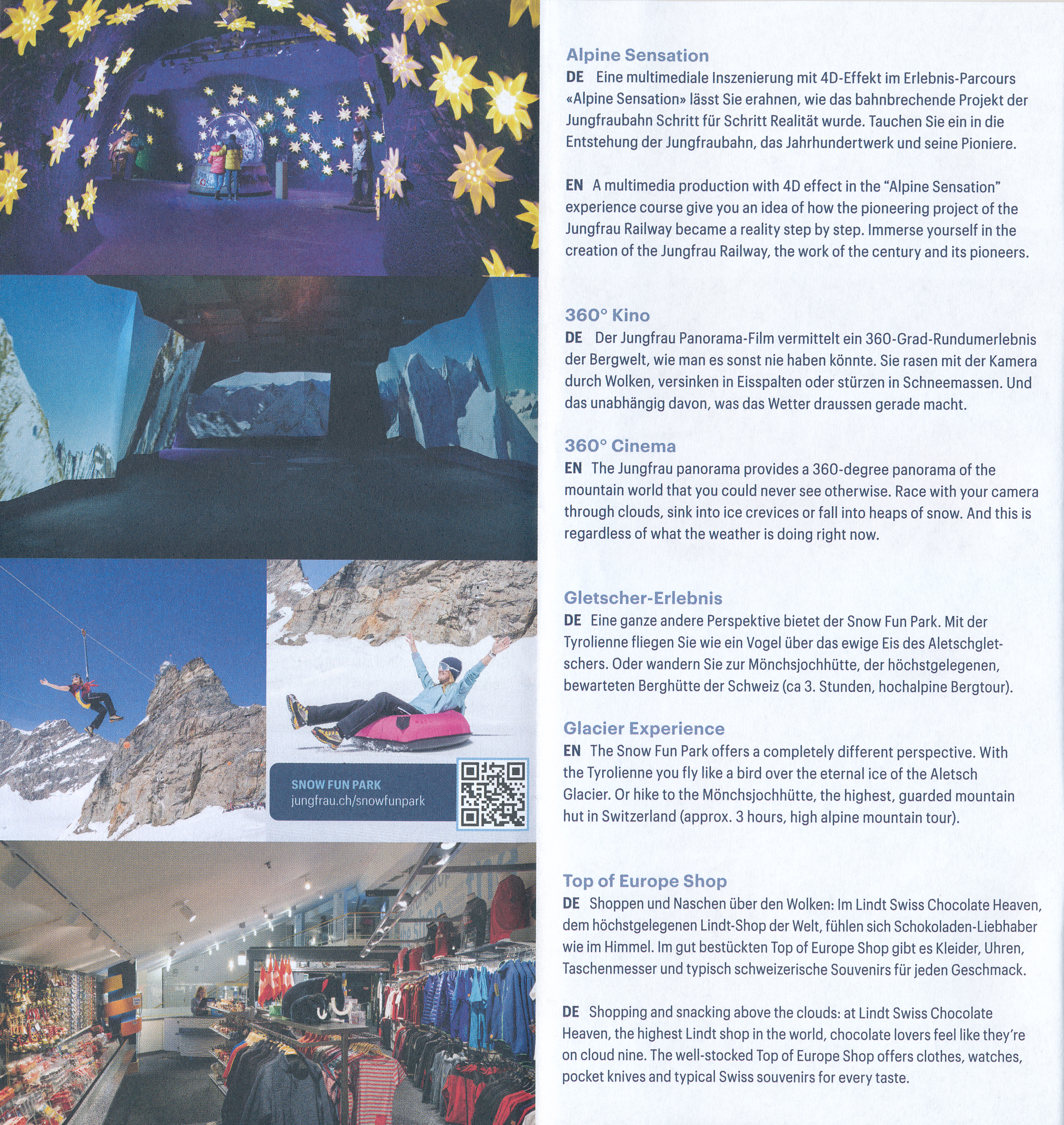
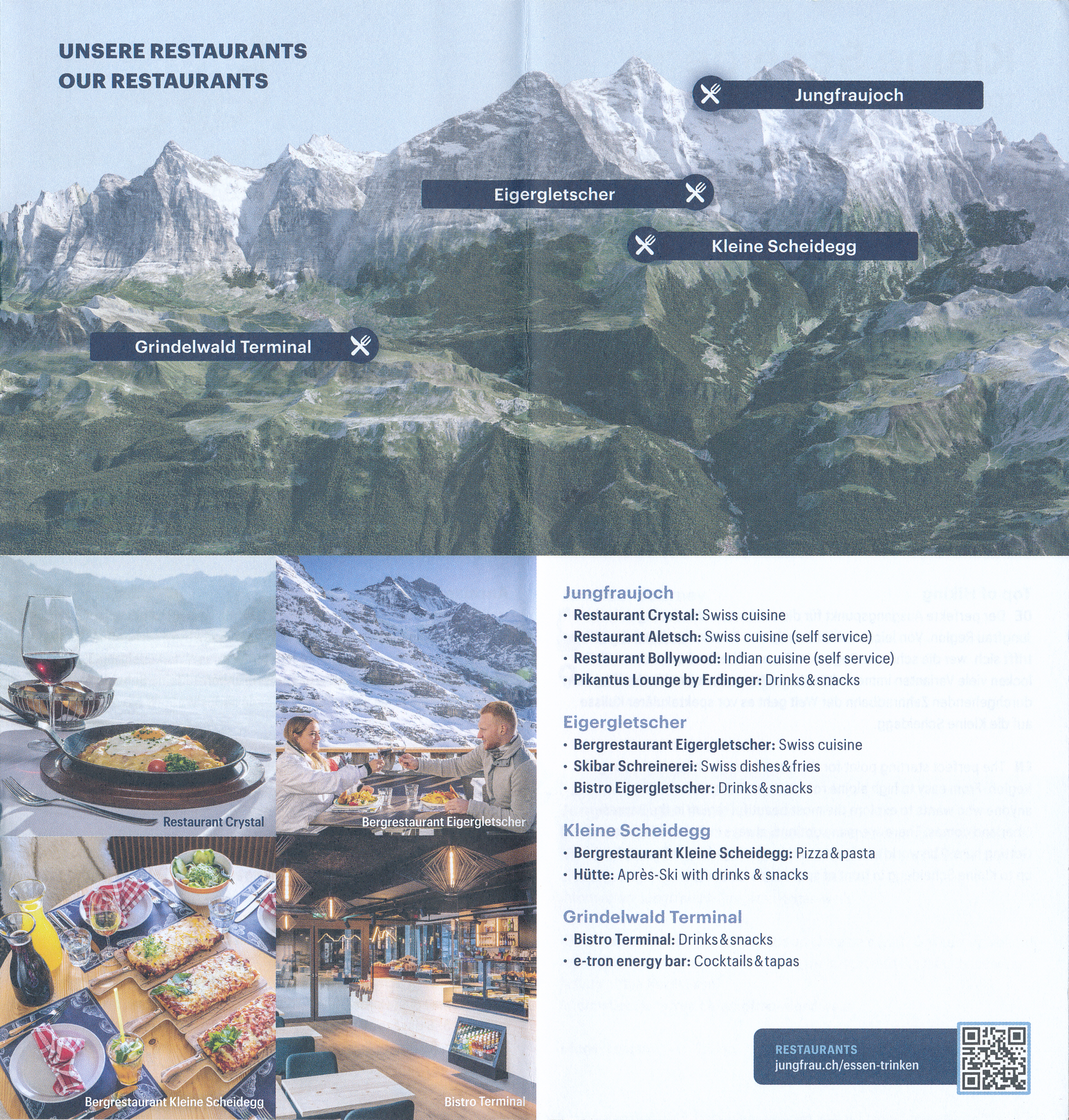
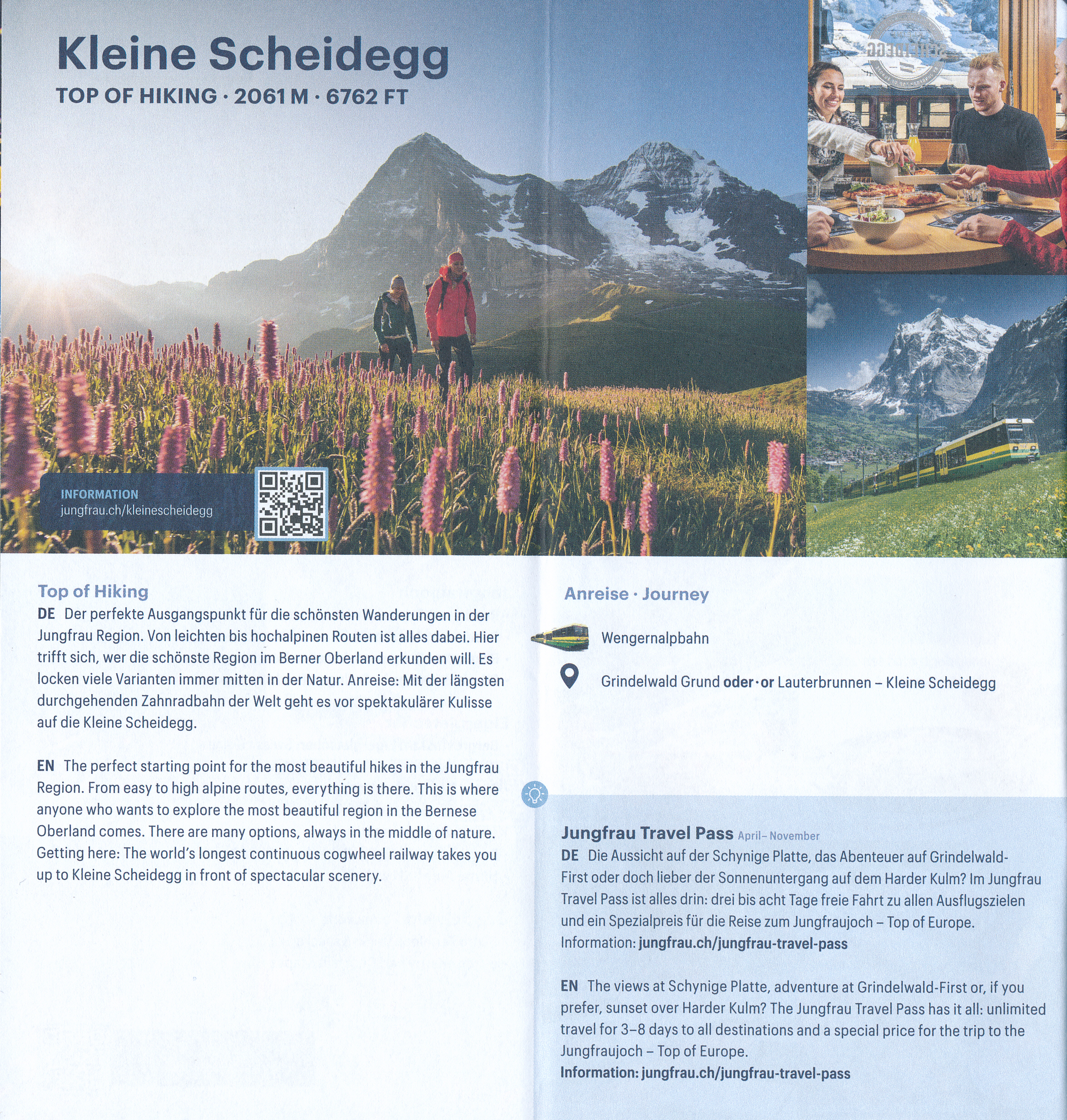
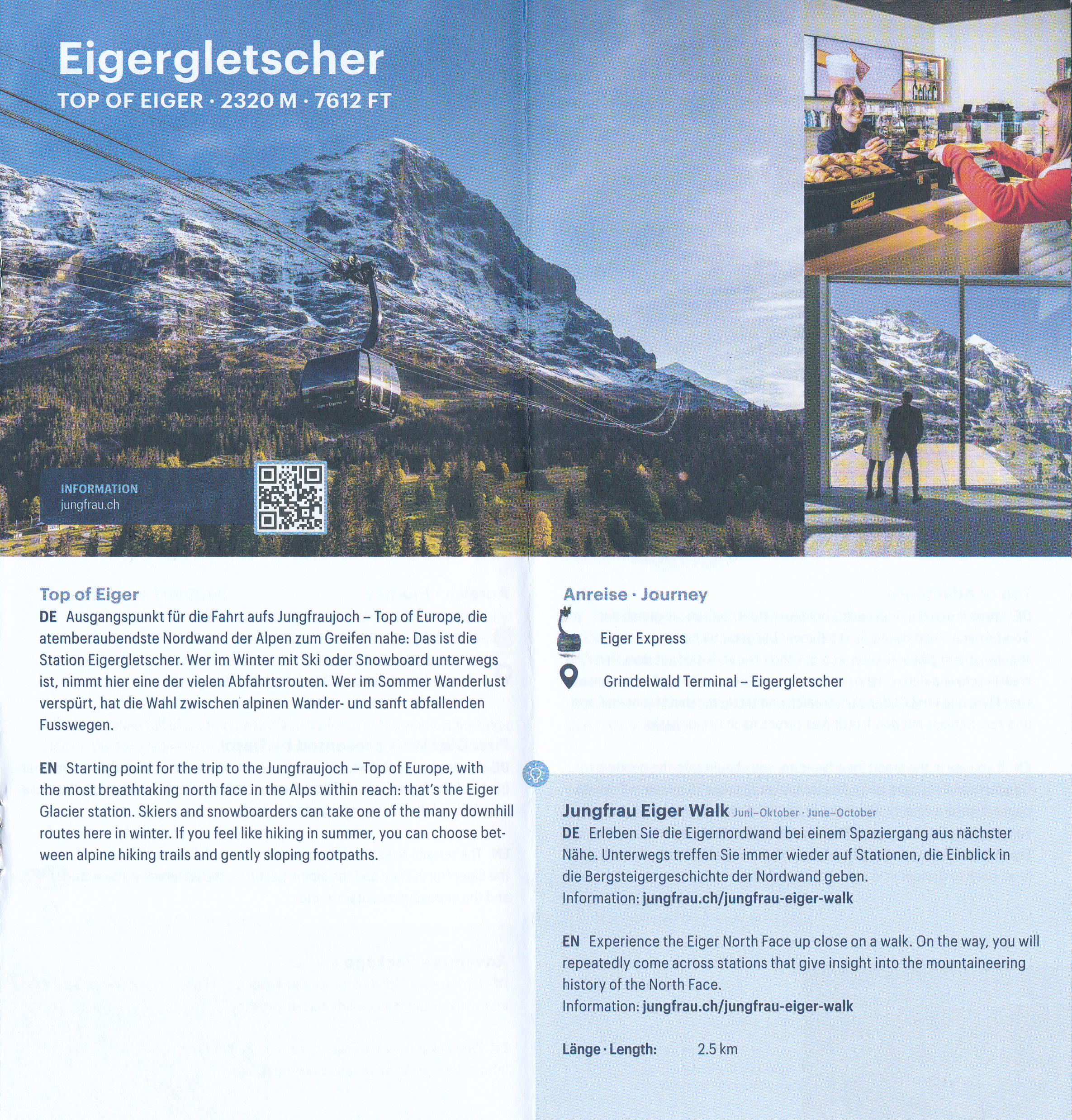
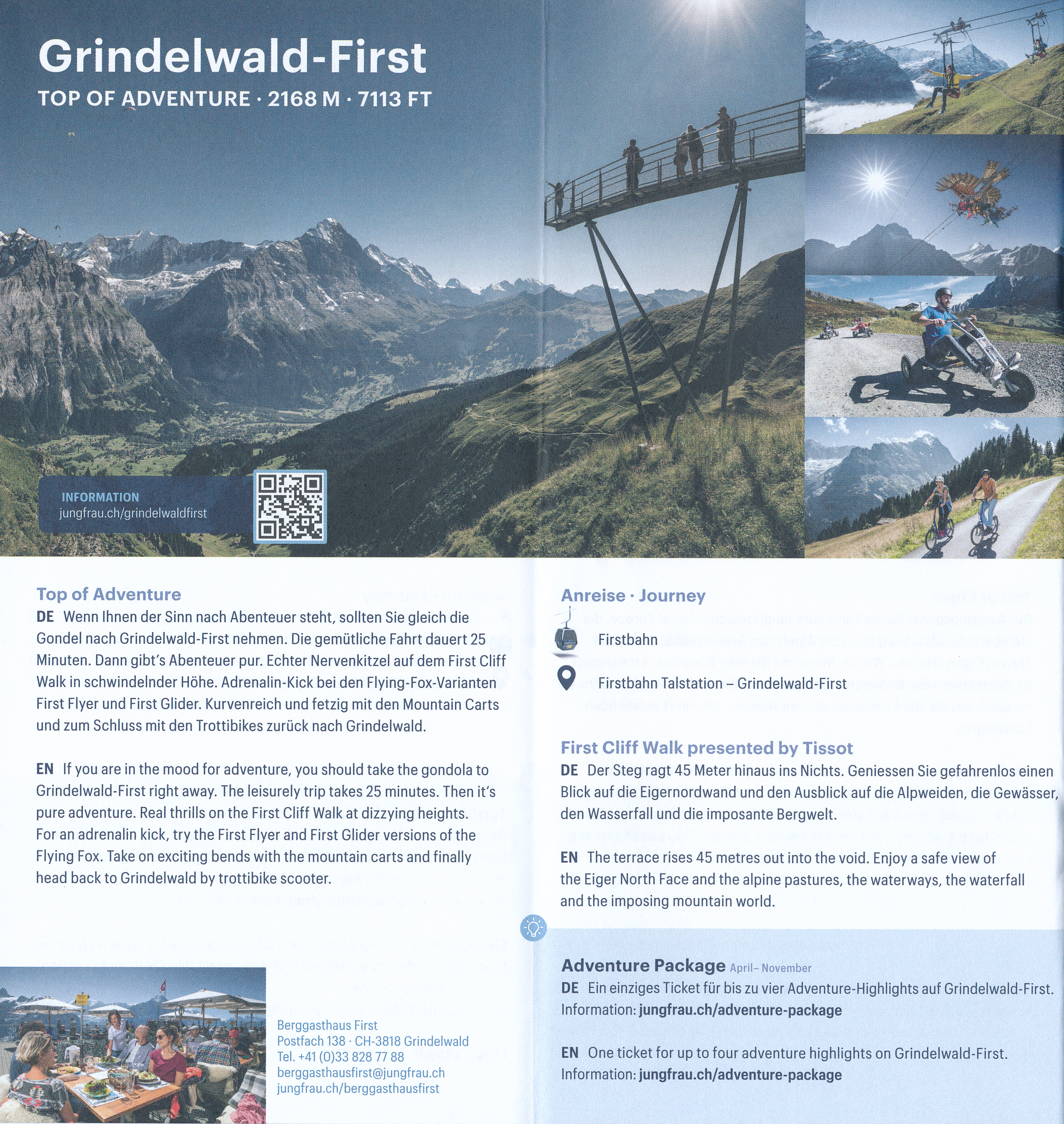
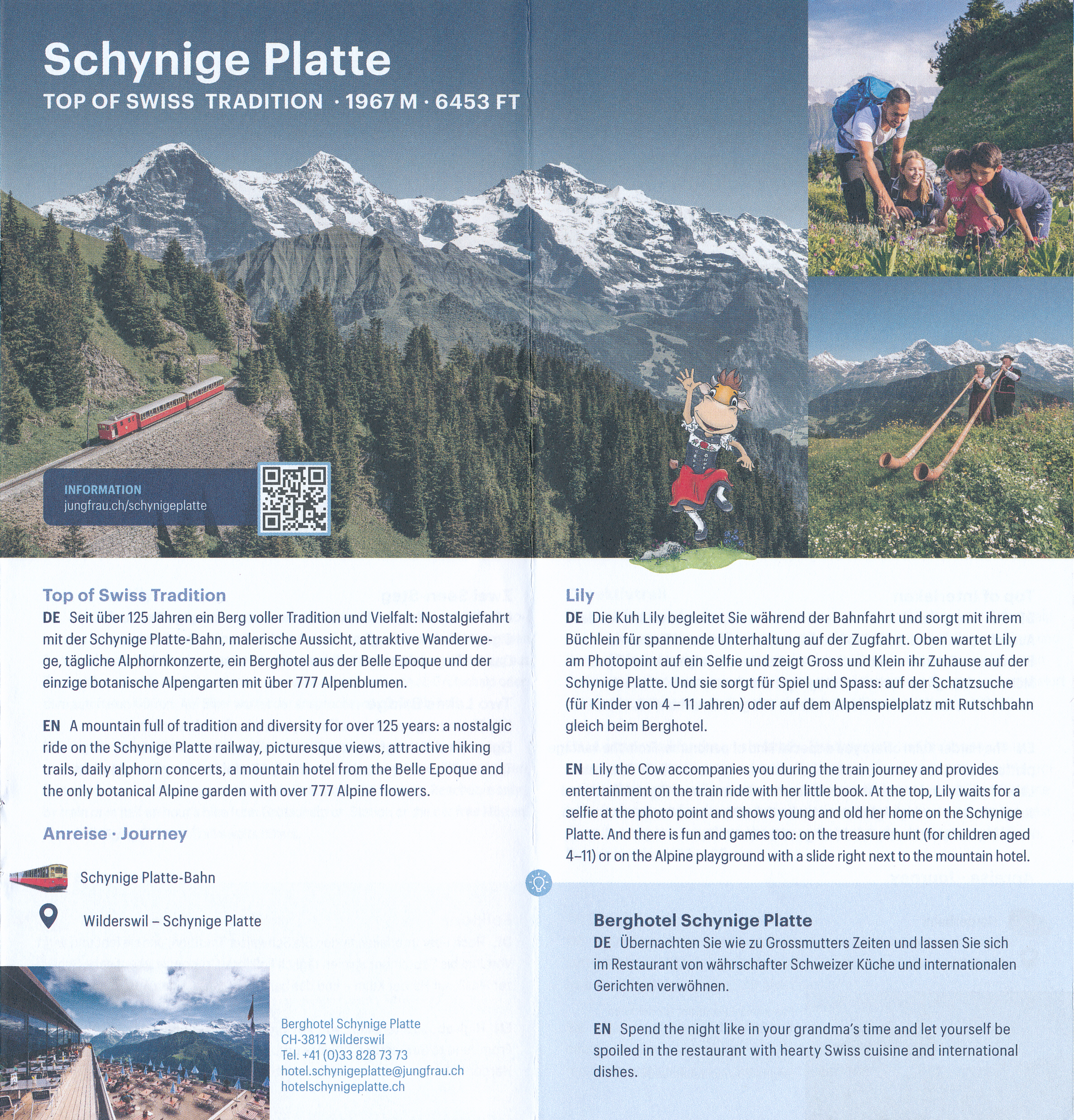
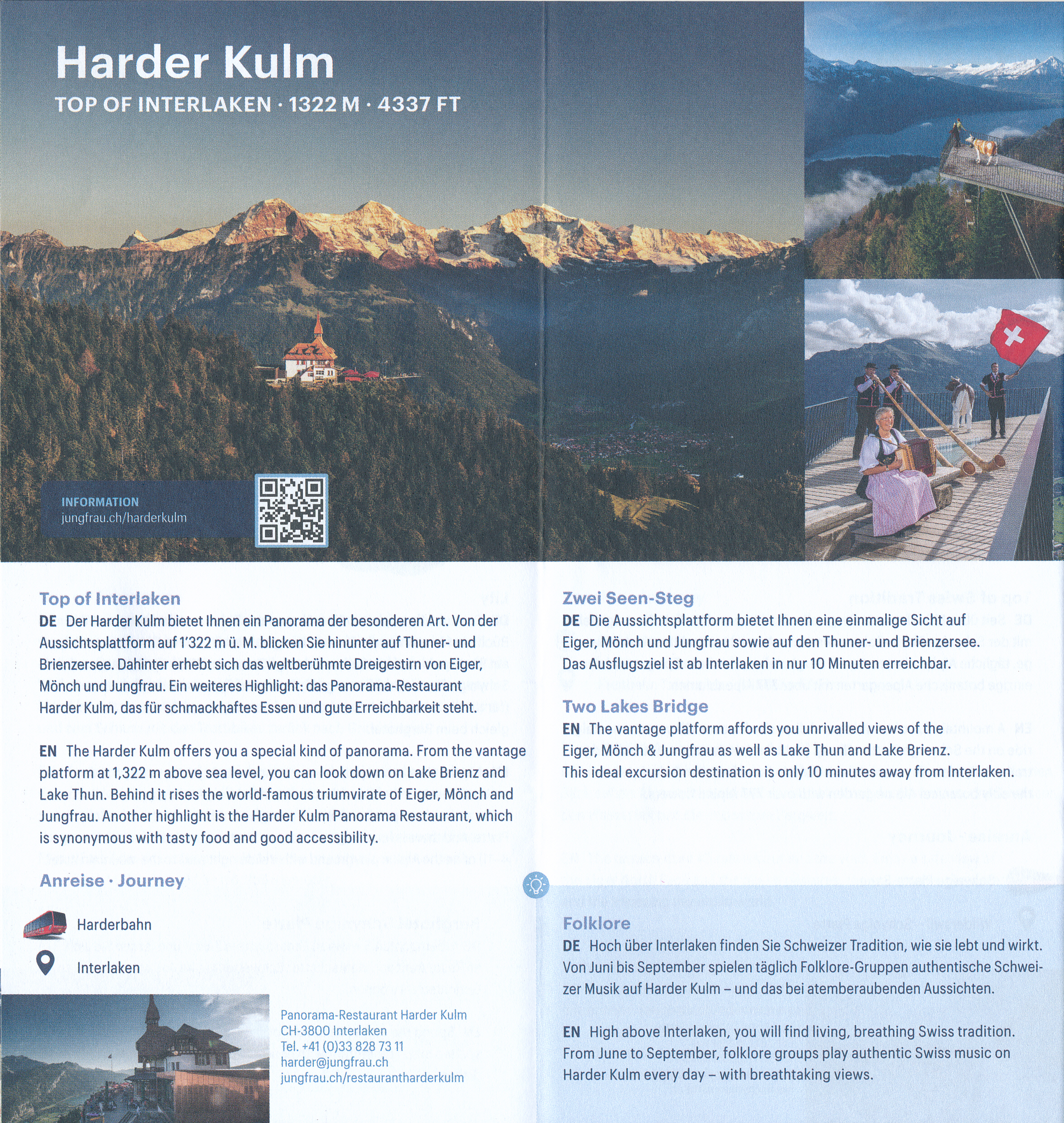
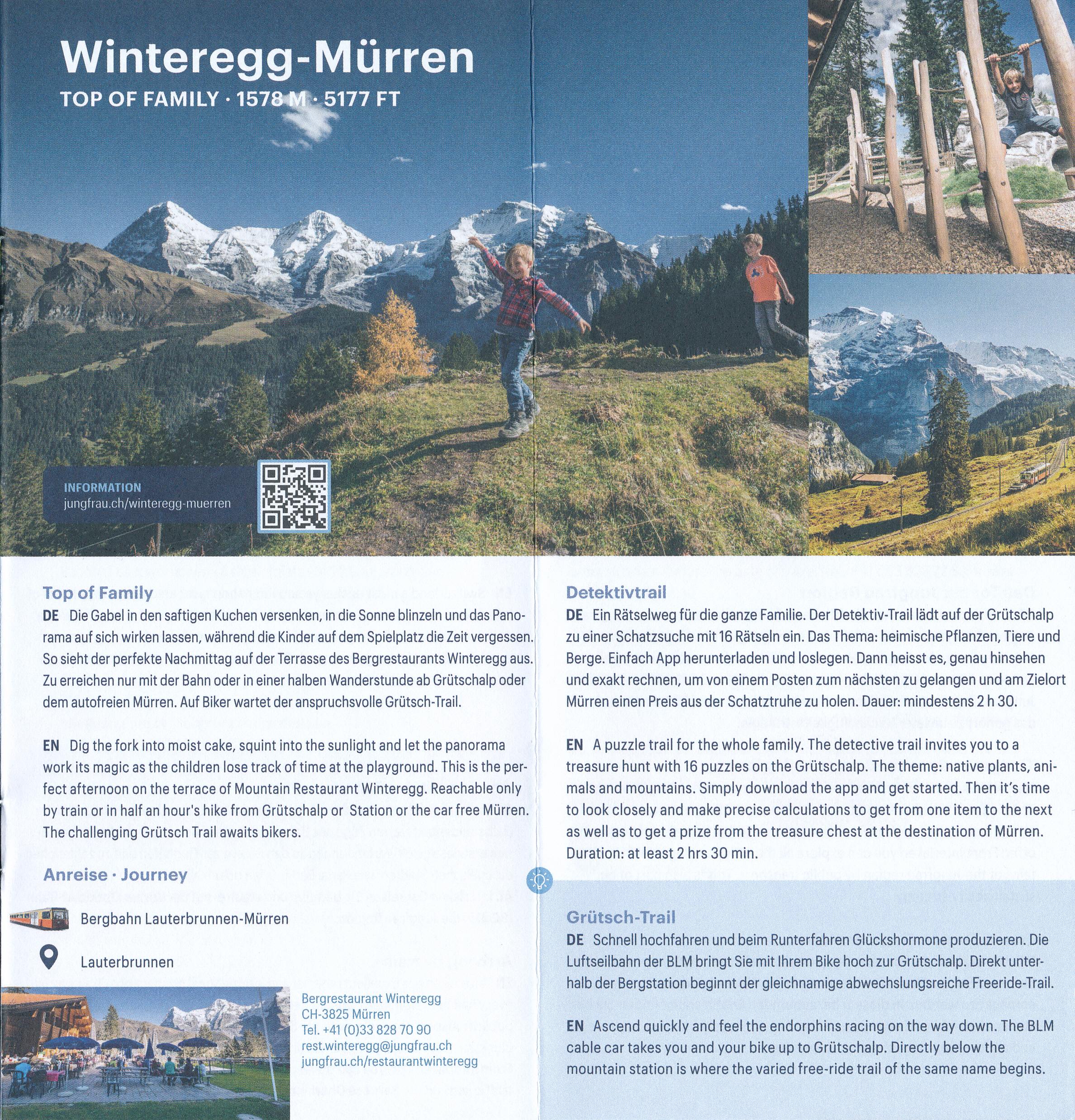
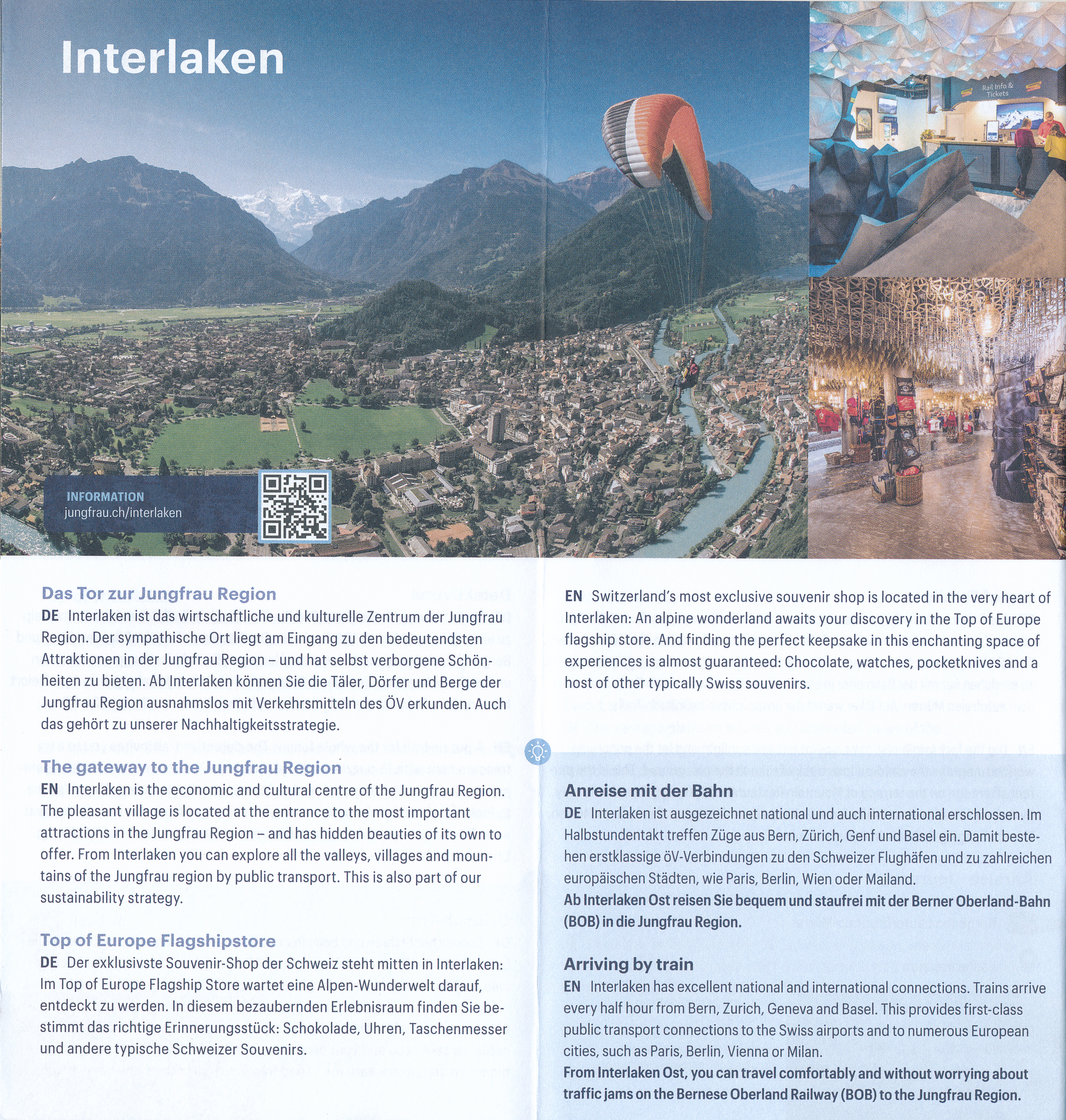
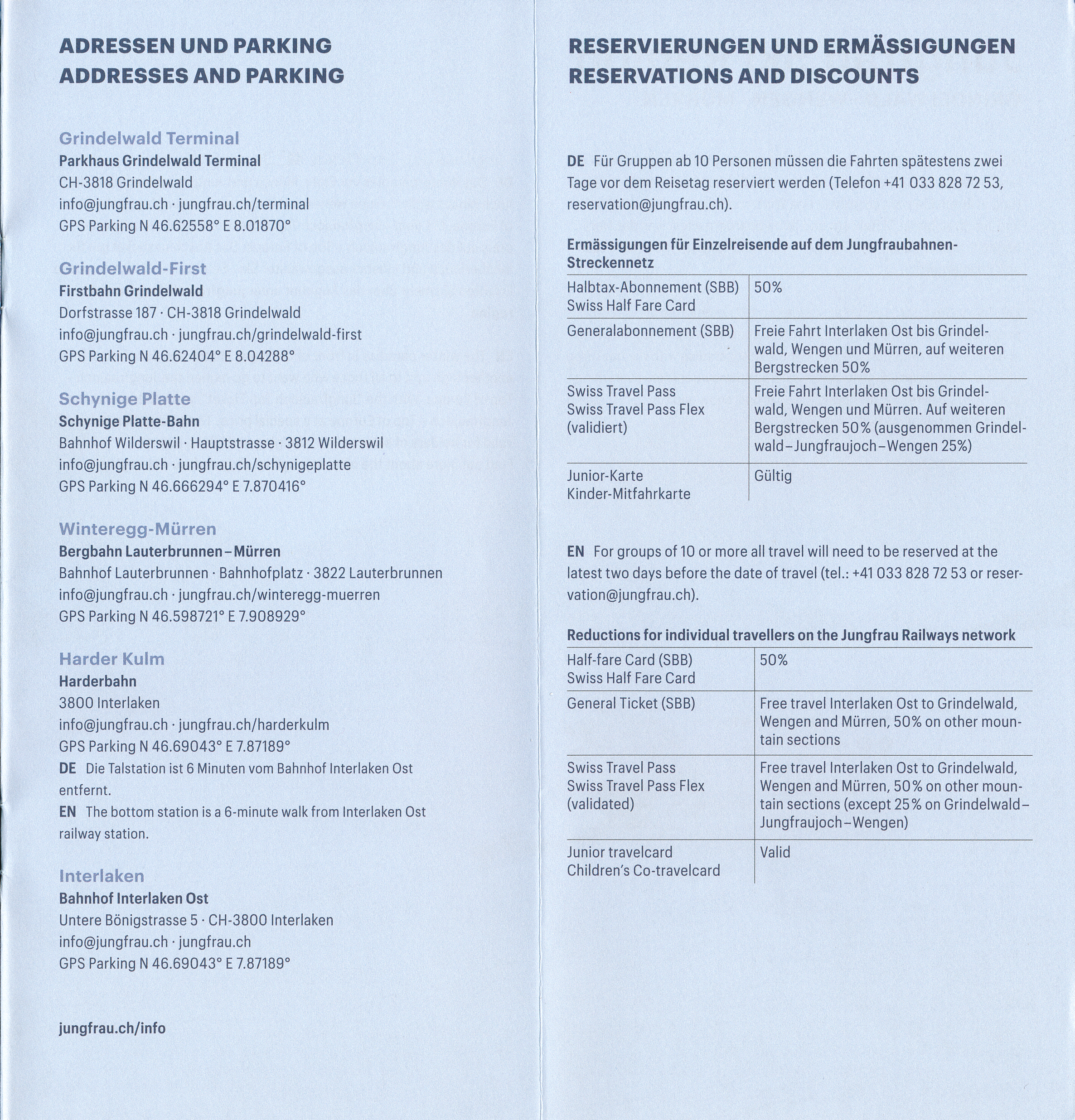
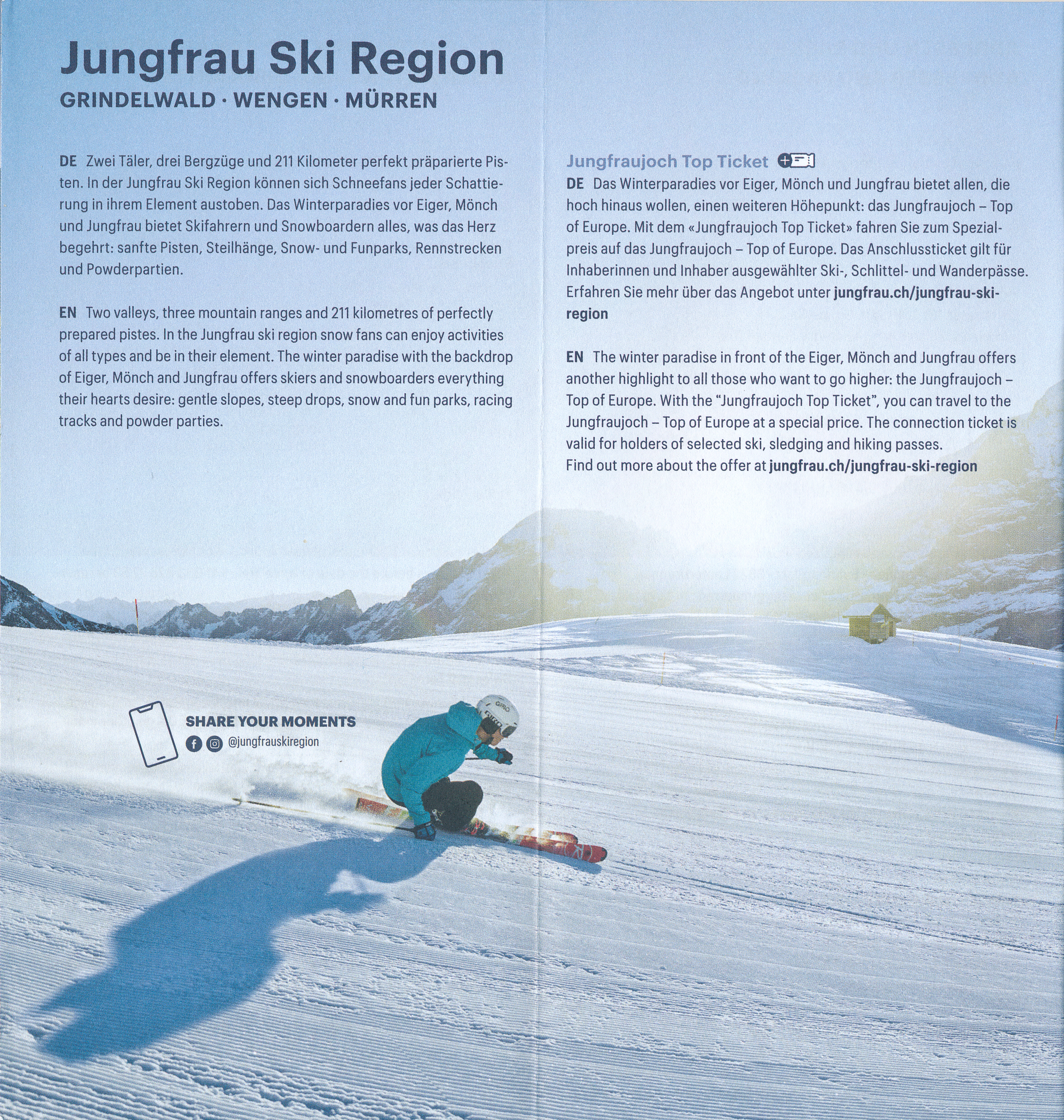
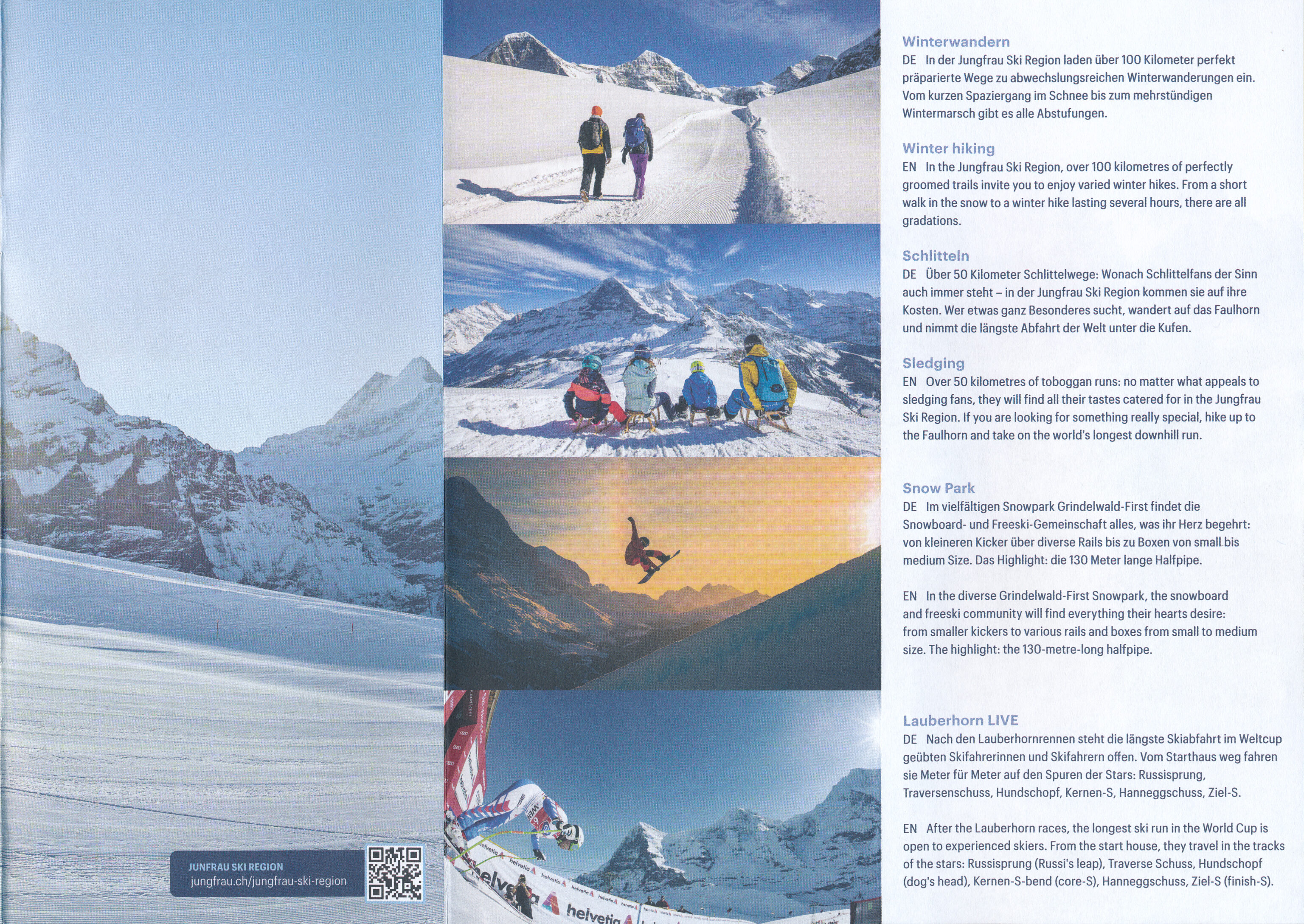
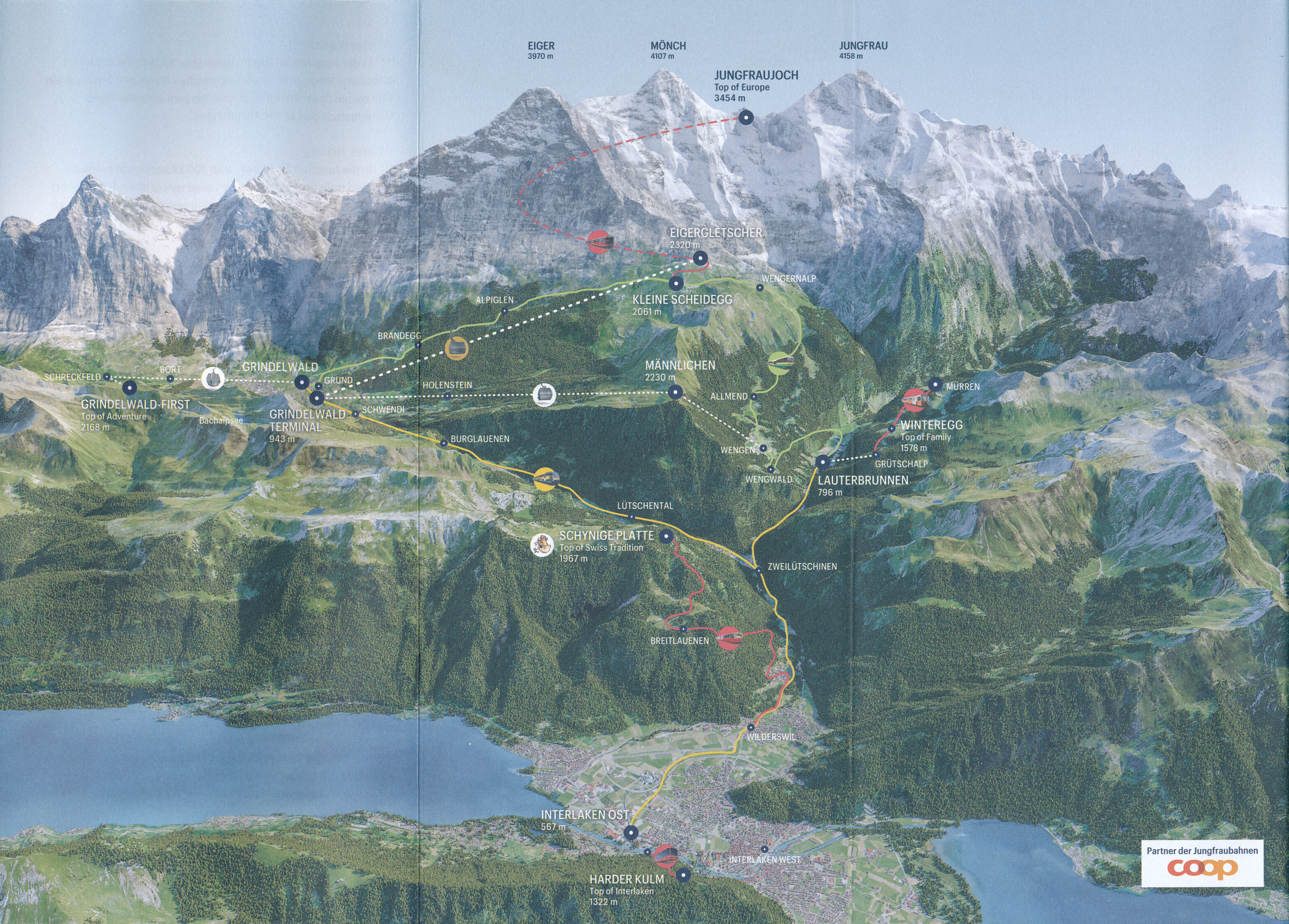
The Jungfraujoch brochure is pretty good as it has a much better map that shows where everything actually is.
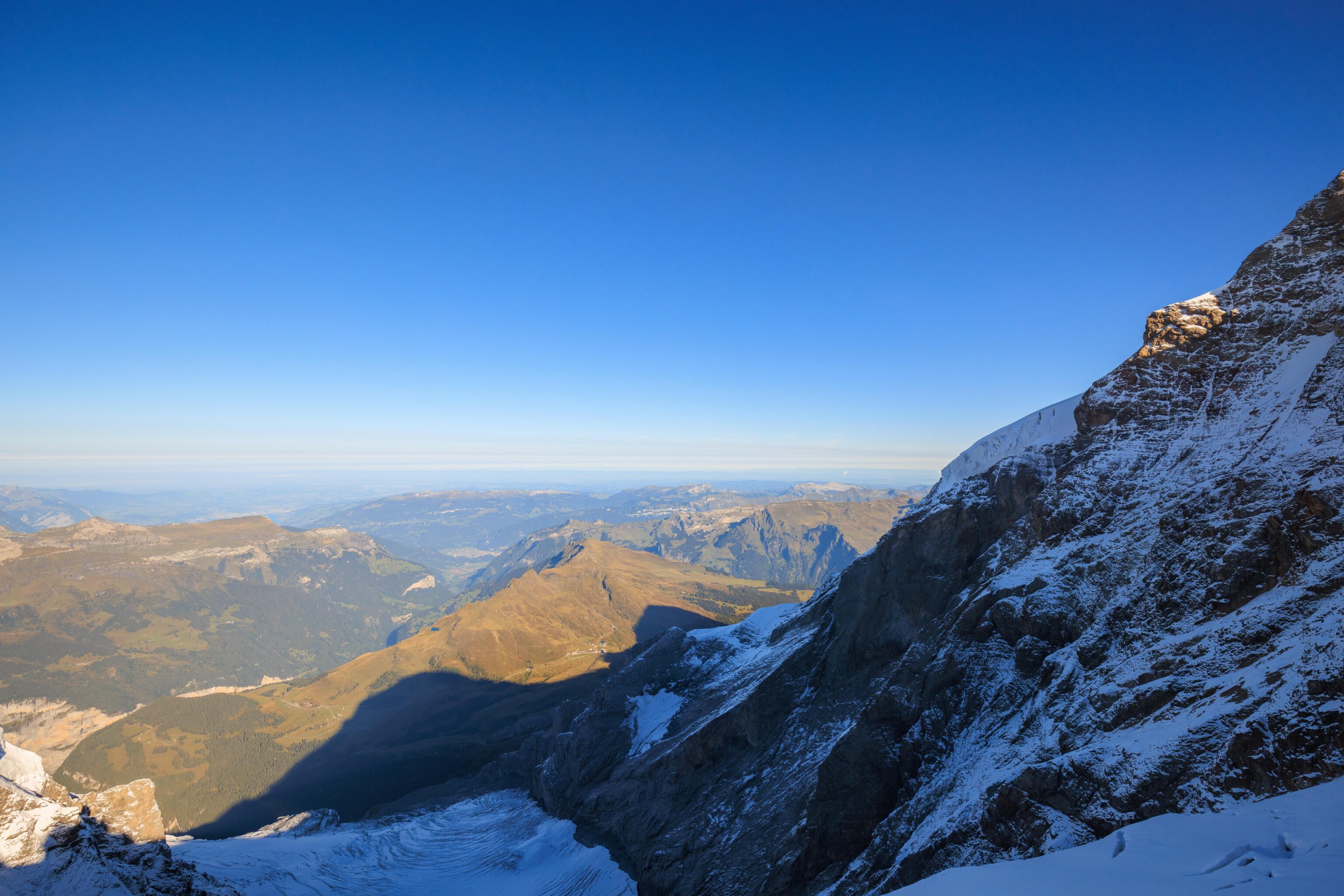
We started out by heading to the Sphinx Terrace. The terrace is above the station in a building that houses the Sphinx Observatory, an actual scientific facility. The terrace is accessed via an elevator. It is the highest point at the Jungfraujoch station.
The name Jungfraujoch comes from the station’s location. It is in a saddle between the Jungfrau and Mönch mountains. Joch, in German, is used geographically to mean saddle.
The “Top of Europe” slogan probably comes from the fact that Jungfraujoch is the highest elevation train station in Europe at 3,454 meters (11,332 feet). We’ve skied at higher elevations in the US and have driven up to 14,000 feet, so the actual elevation is quite manageable for us.
Klein Matterhorn, at 3,883 meters (12,740 feet), in the Zermatt region is accessible by aerial tram and higher than Jungfraujoch. So, “Top of Europe” is unfortunately not very top at all!
This was the view to the north from the terrace. We could see Klein Scheidegg way down below us. The Eigergletscher station is obstructed from view by the west side of Mönch.
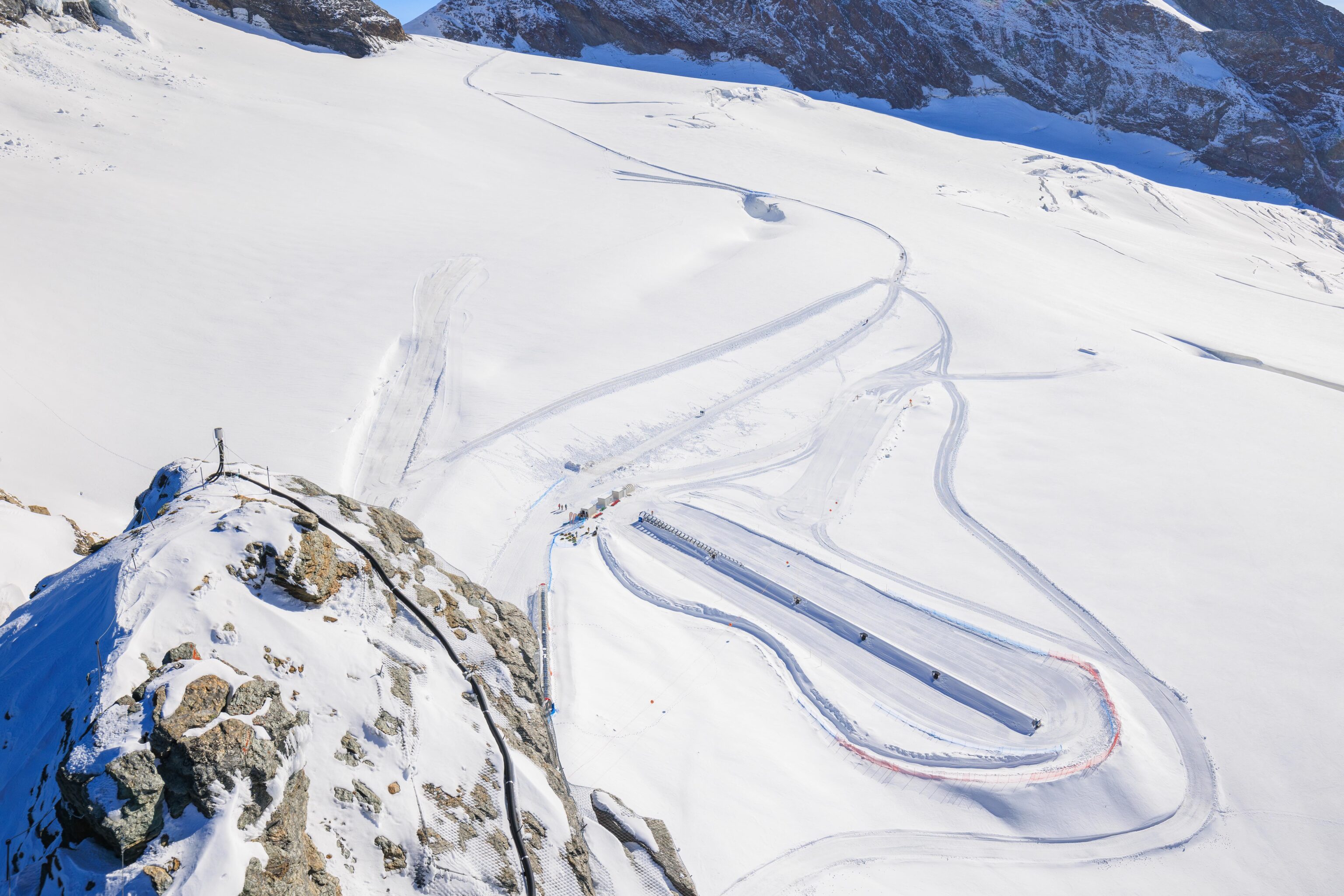
There is an exit below that leads out onto the snow. There is an area that is groomed for snow activities. There is also a trail that heads out to the east.
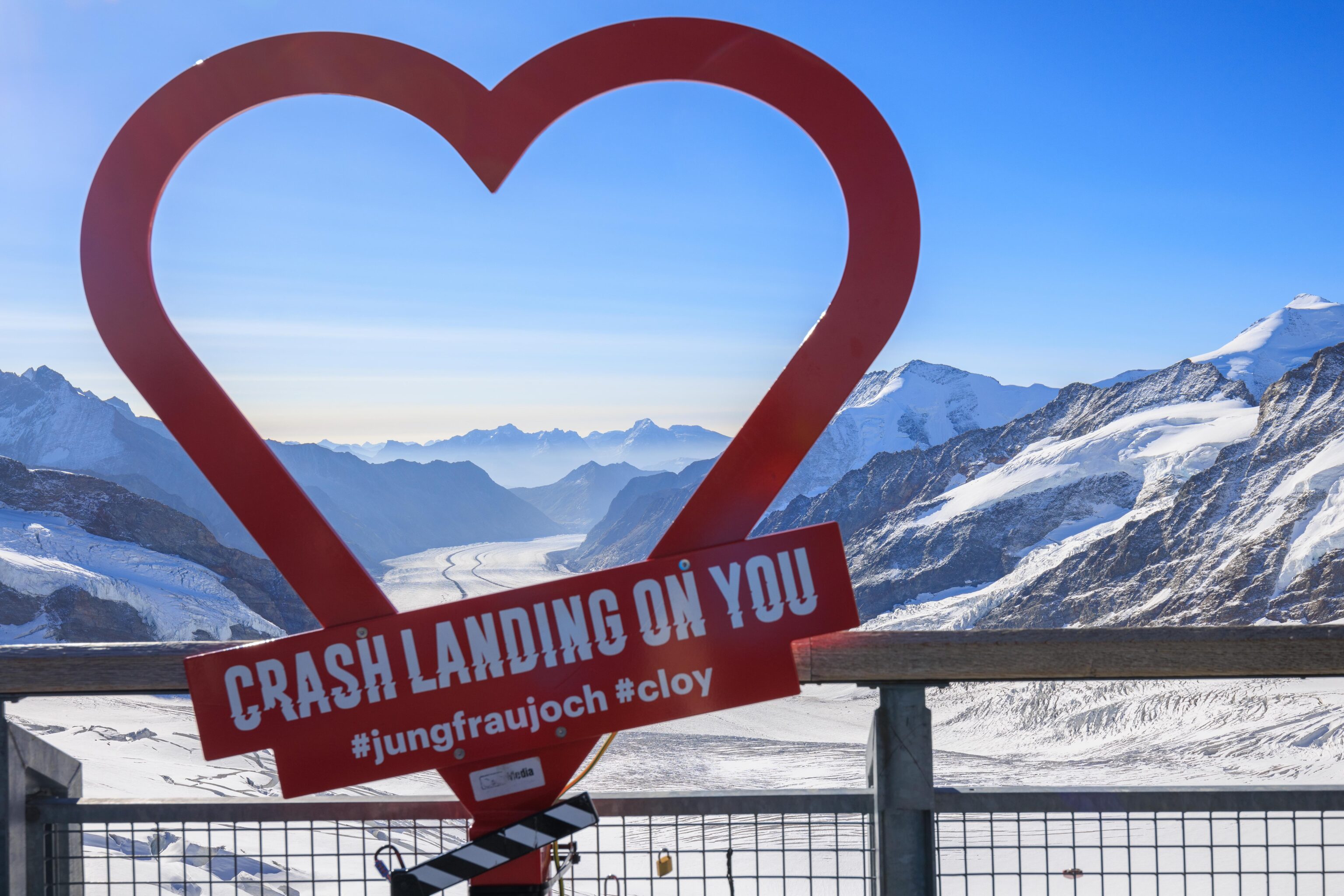
We found another Crash Landing on You sign! The scenes from the movie take place below the Sphinx Terrace, near the groomed activity area.
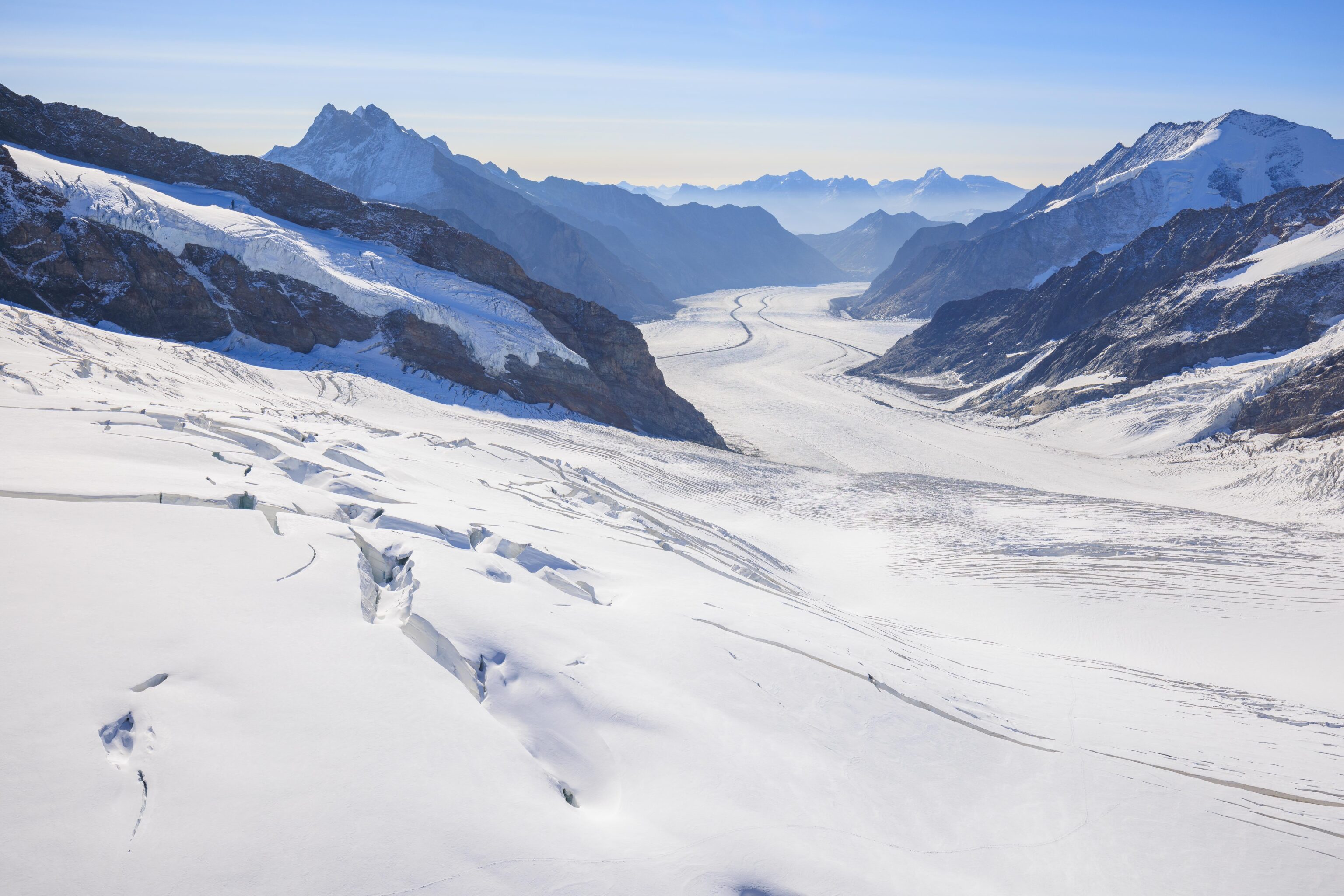
The Aletsch Glacier, largest in the alps, begins here and flows to the south, ending at the north side of the mountains that make up the Aletsch Arena ski area.
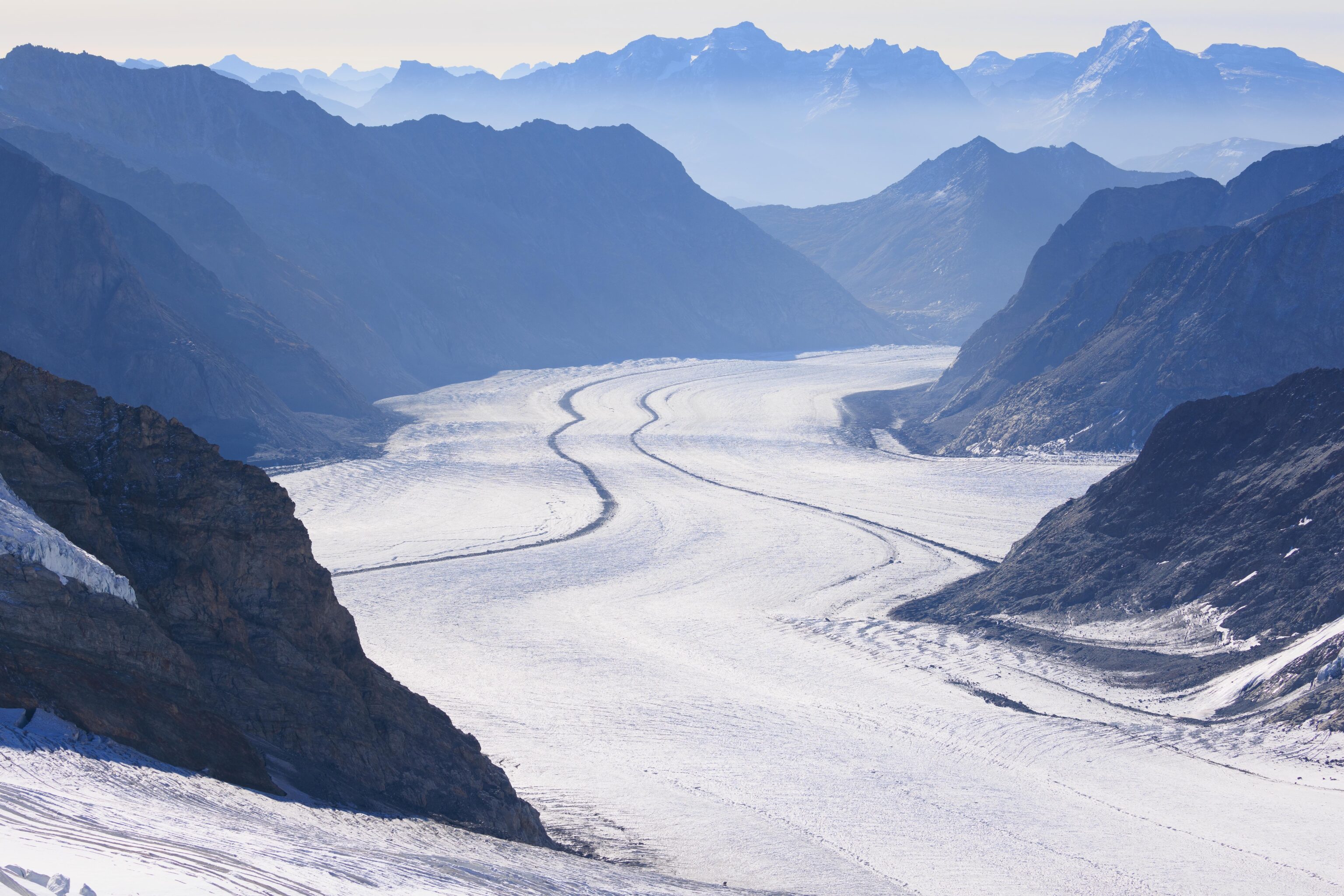
We switched to the telephoto lens to take a closer look at some of the features in the area. Aletsch Glacier is huge. It starts where we are, though the snow underneath us seems a bit more stable.
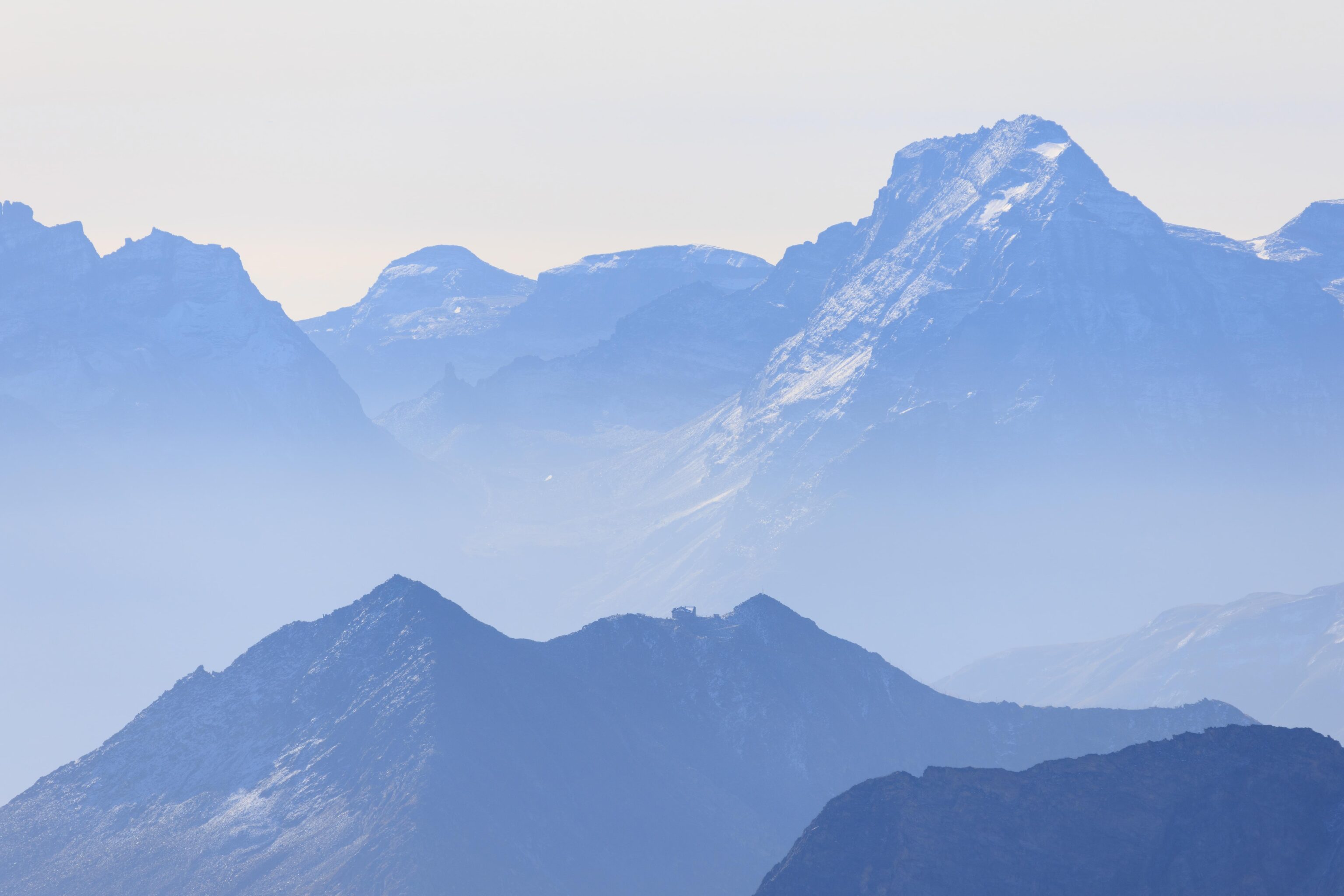
Above where the Aletsch Glacier turns to the west, we could see a building near a mountain peak. The peak is Eggishorn and the building to the right is the Eggishorn gondola station. We visited last year. Jungfrau, Mönch, and Eiger are all visible from there. We saw Jungfraujoch and the Sphinx Observatory while we were there as well!
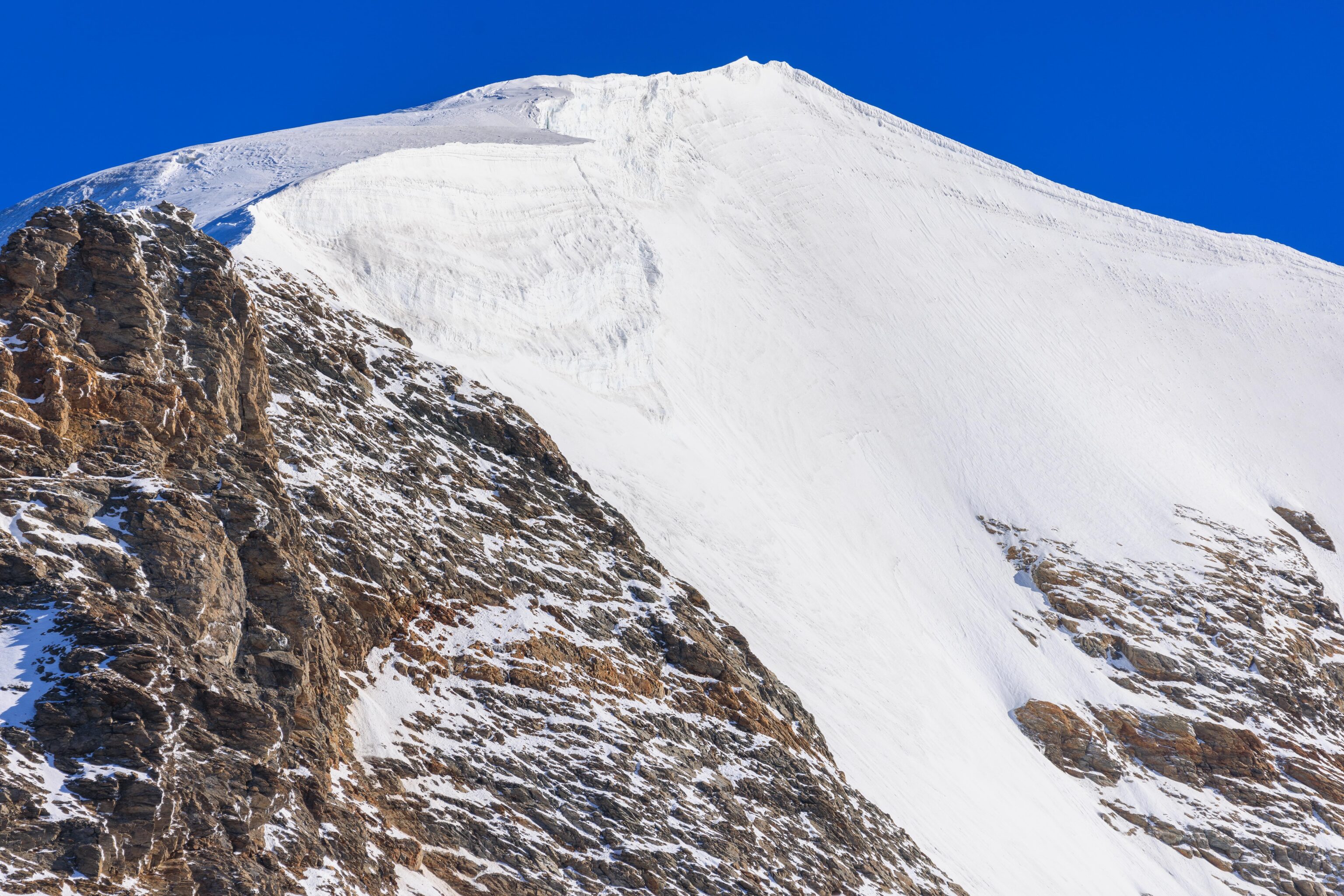
This is the peak of Mönch, the mountain to the northeast of Jungfraujoch.
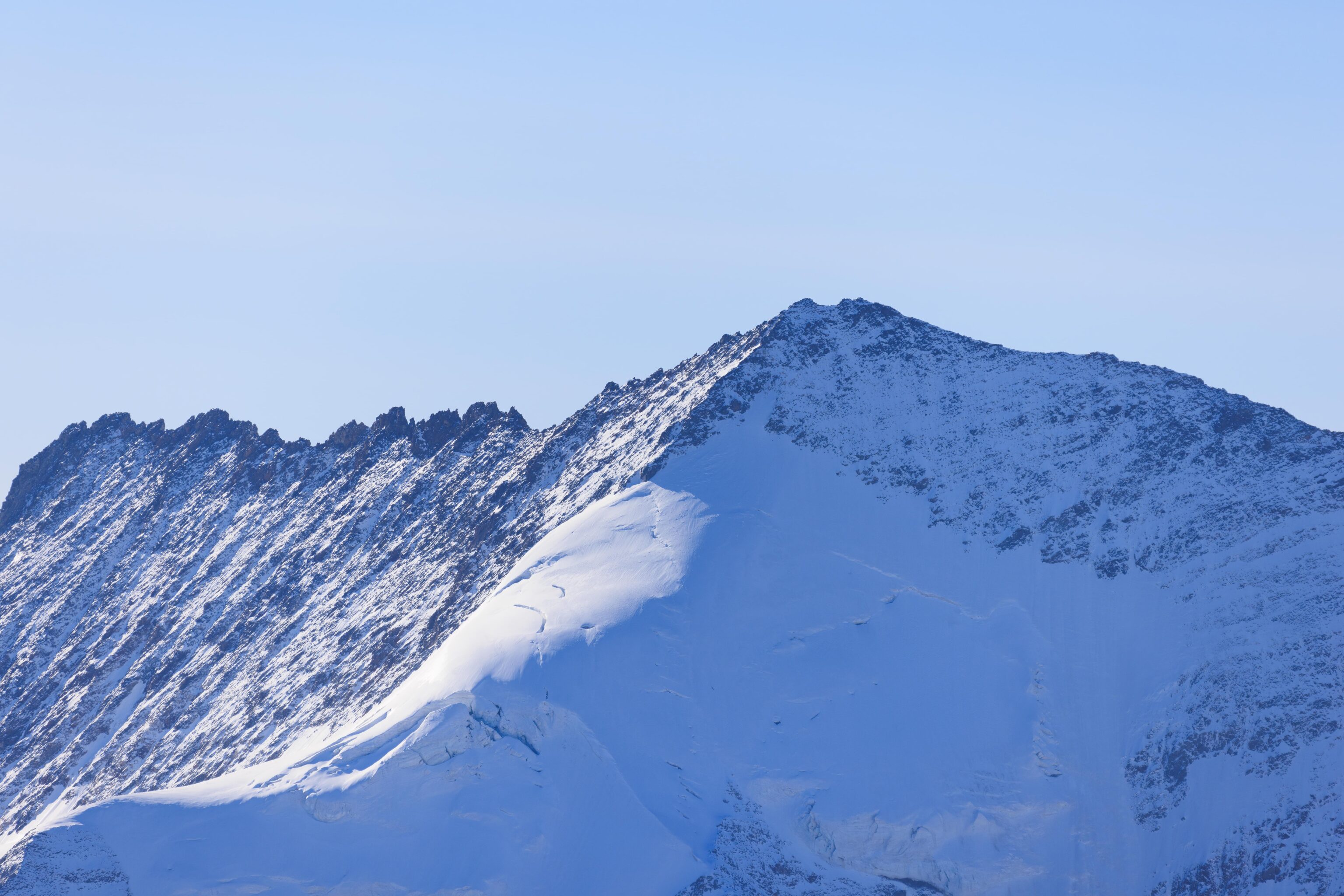
The peak of the Dreieckhorn. This mountain just happened to be one that we photographed because it looked prominent in comparison to other mountains in the area around it. We discovered PeakVisor while trying to identify it. This website is pretty neat, it generates a 3D model of the view from a given point and labels the peaks that can be seen. Trying to identify mountains can be difficult without some sort of reliable reference as they can appear very different depending on perspective and are often misidentified on the Internet.
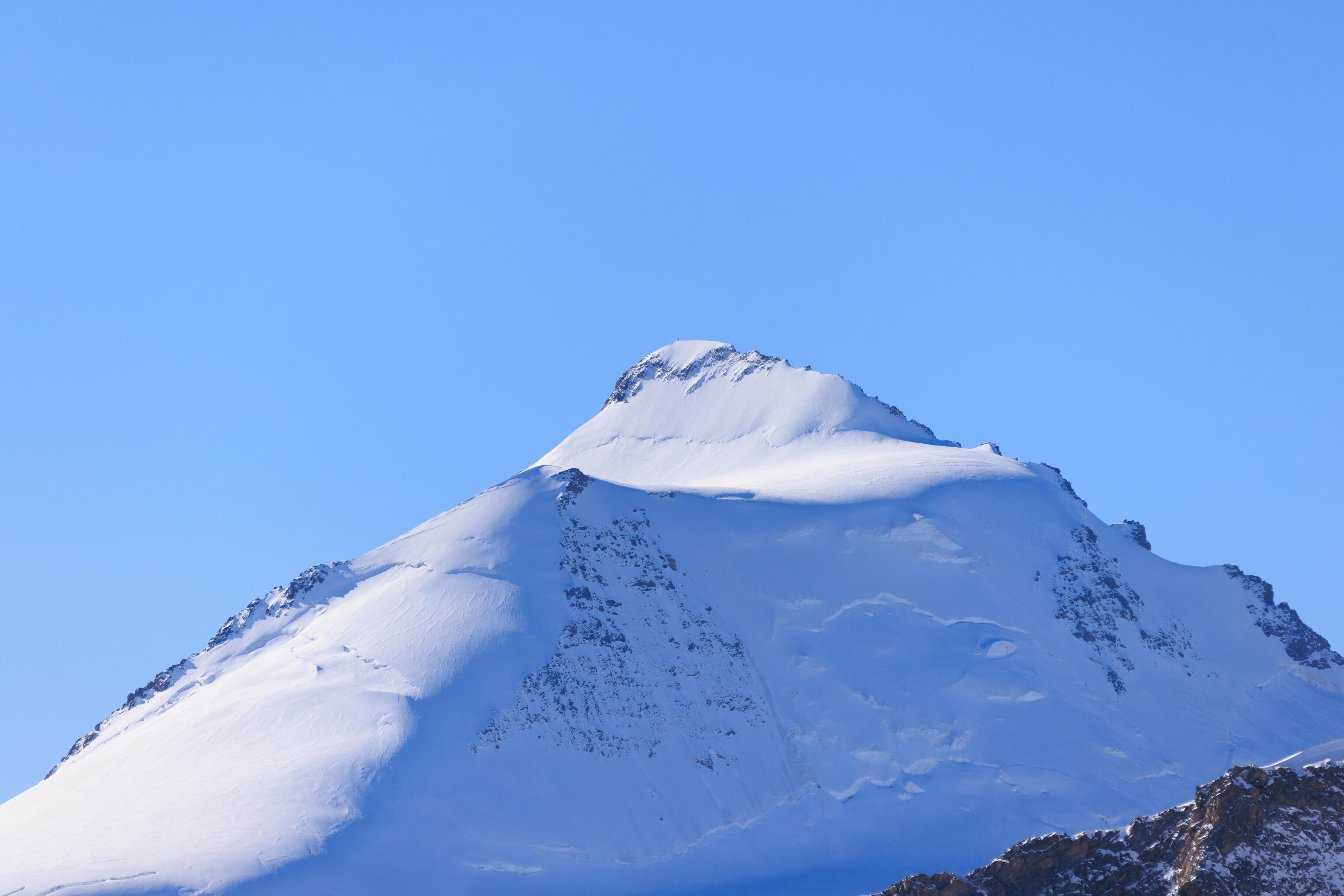
This tall mountain is the Aletschhorn, the second highest mountain in the region at 4,193 meters. When we saw it from Eggishorn last year, it appeared as a perfect pyramid.
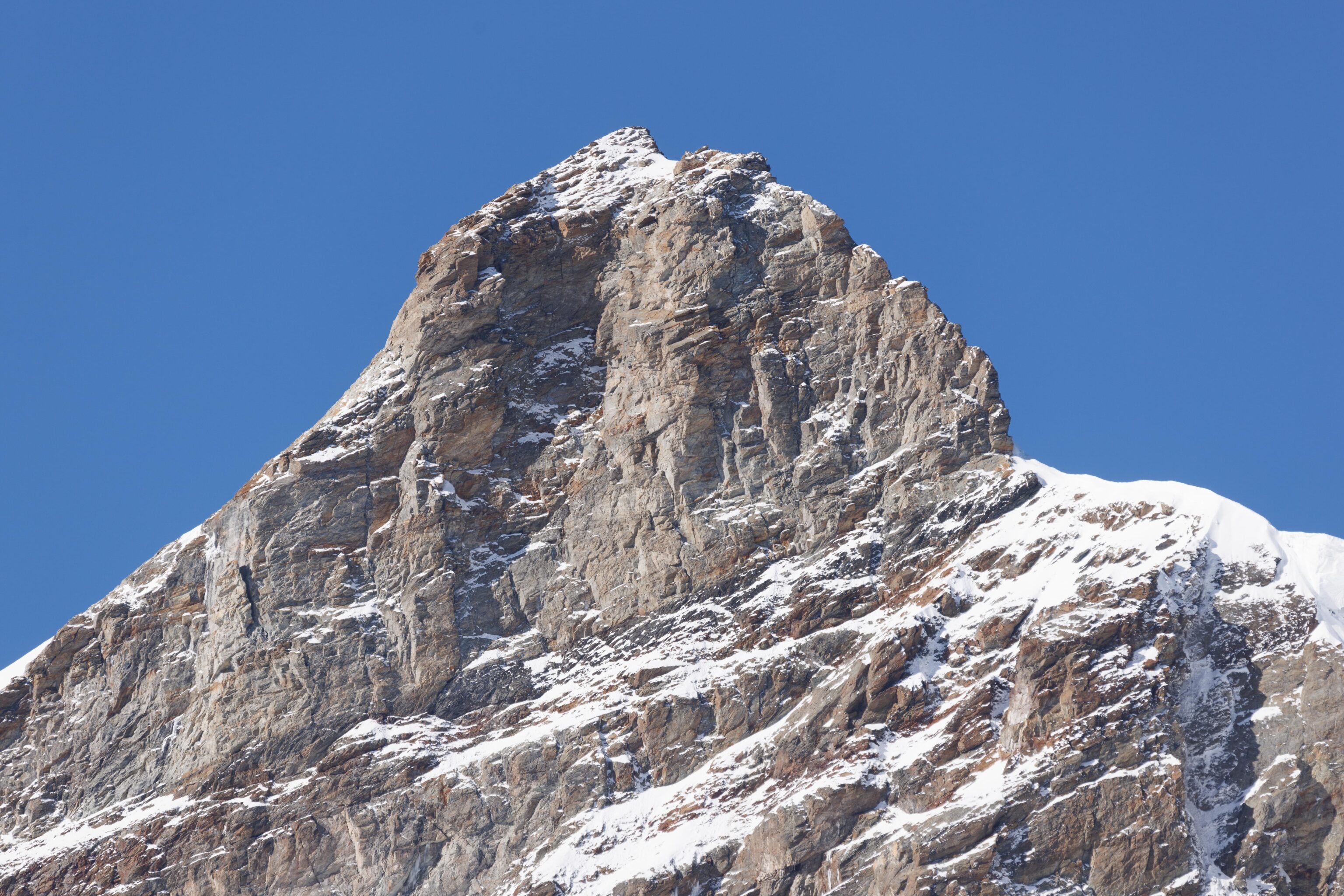
Finally, we have Jungfrau!
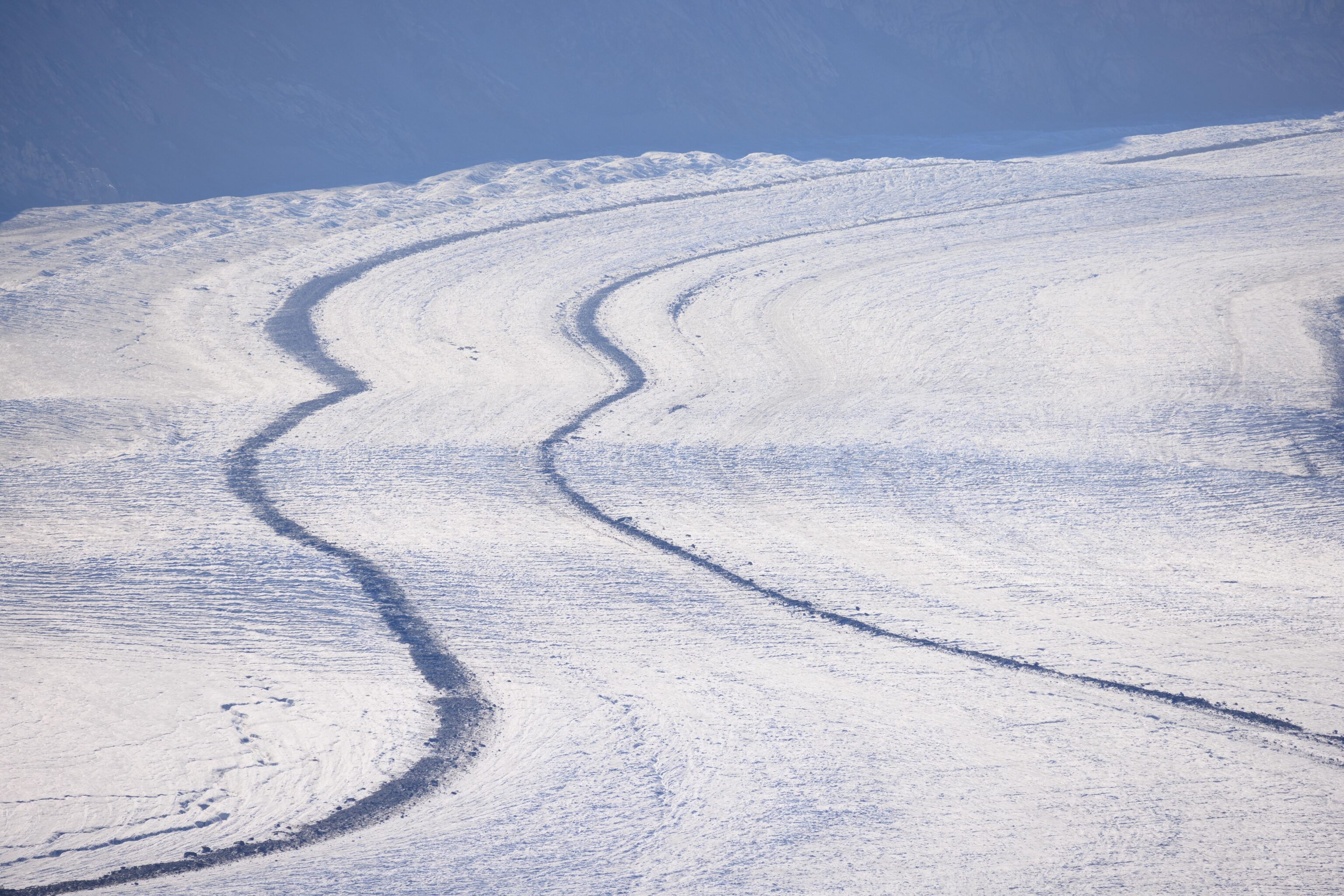
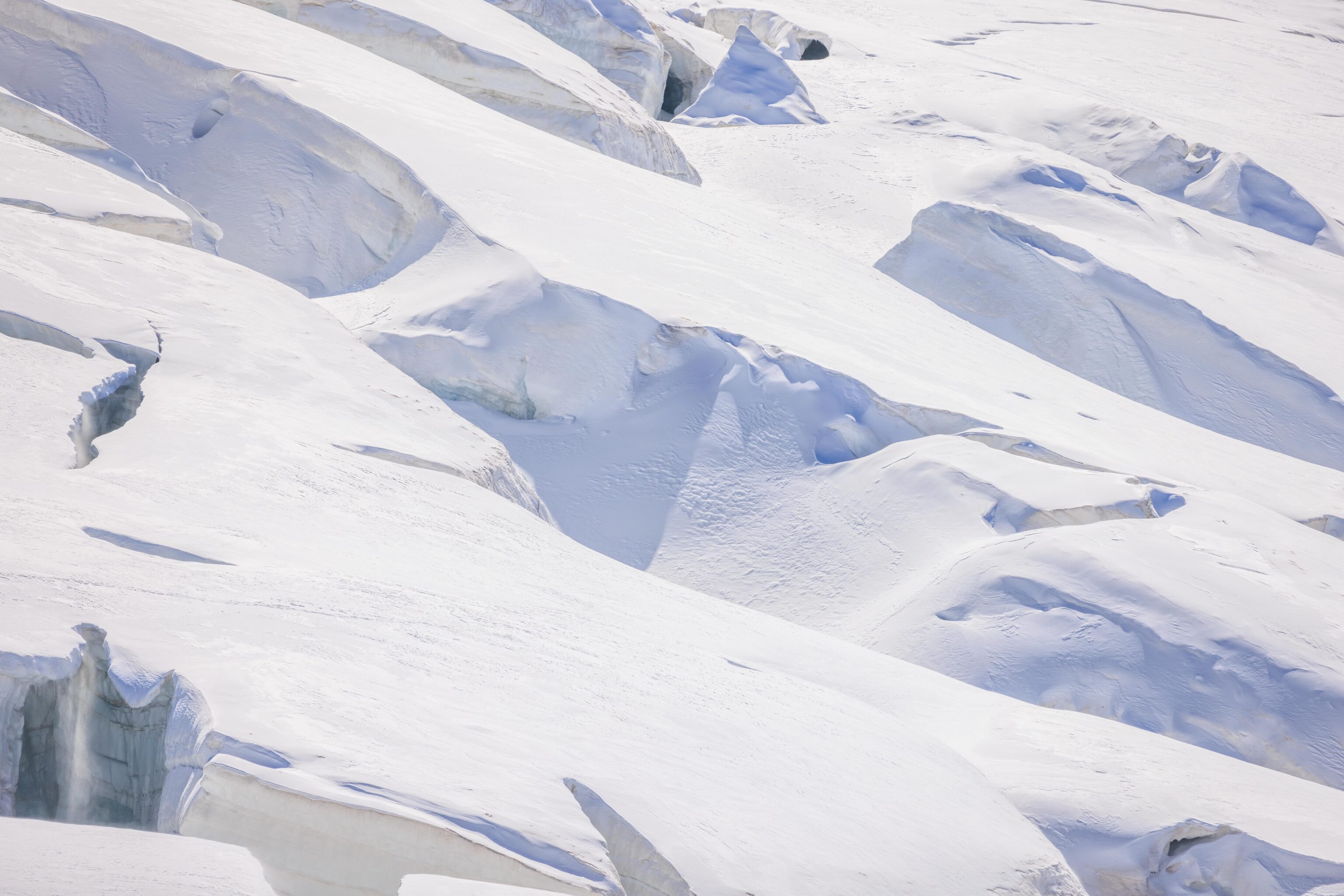
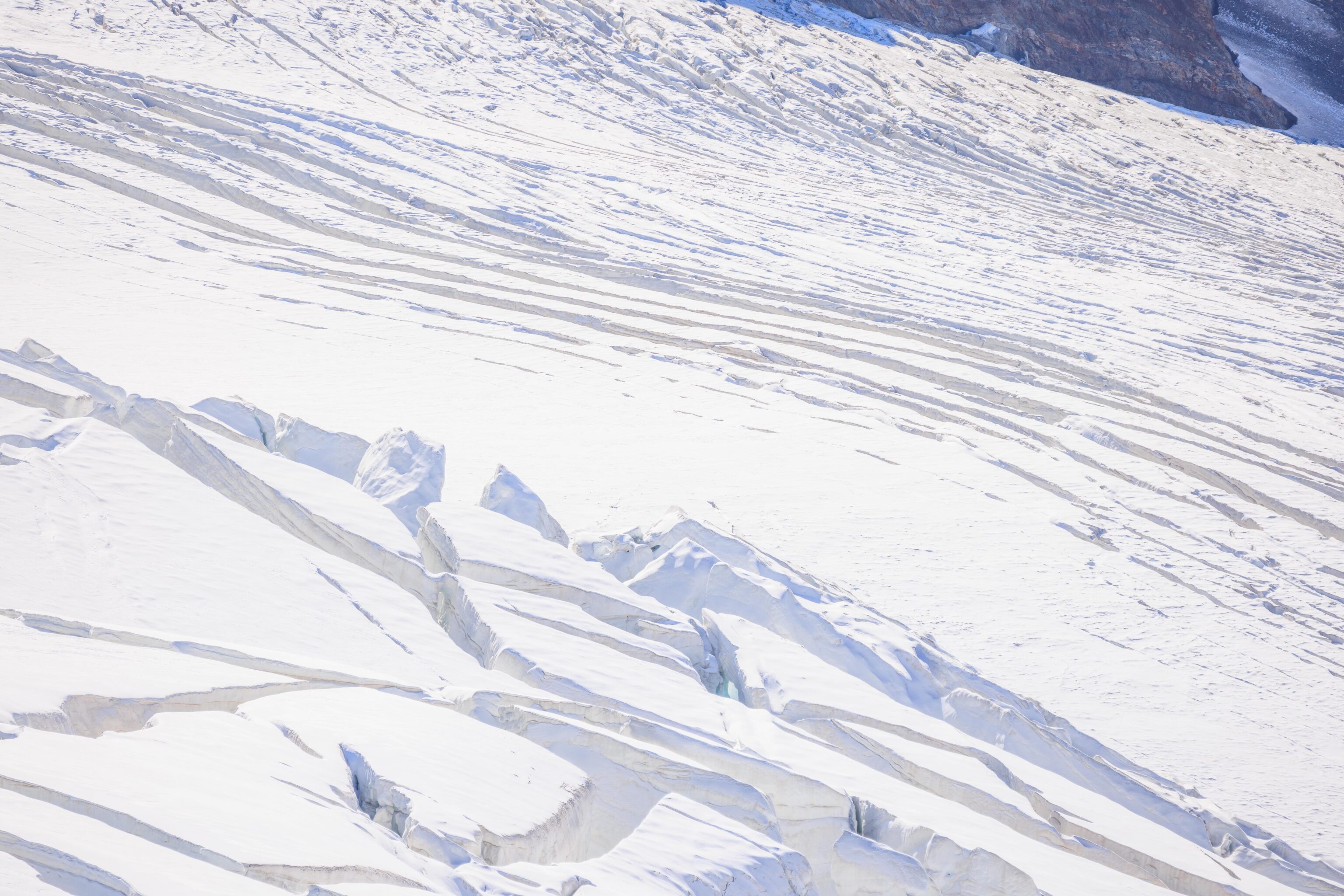
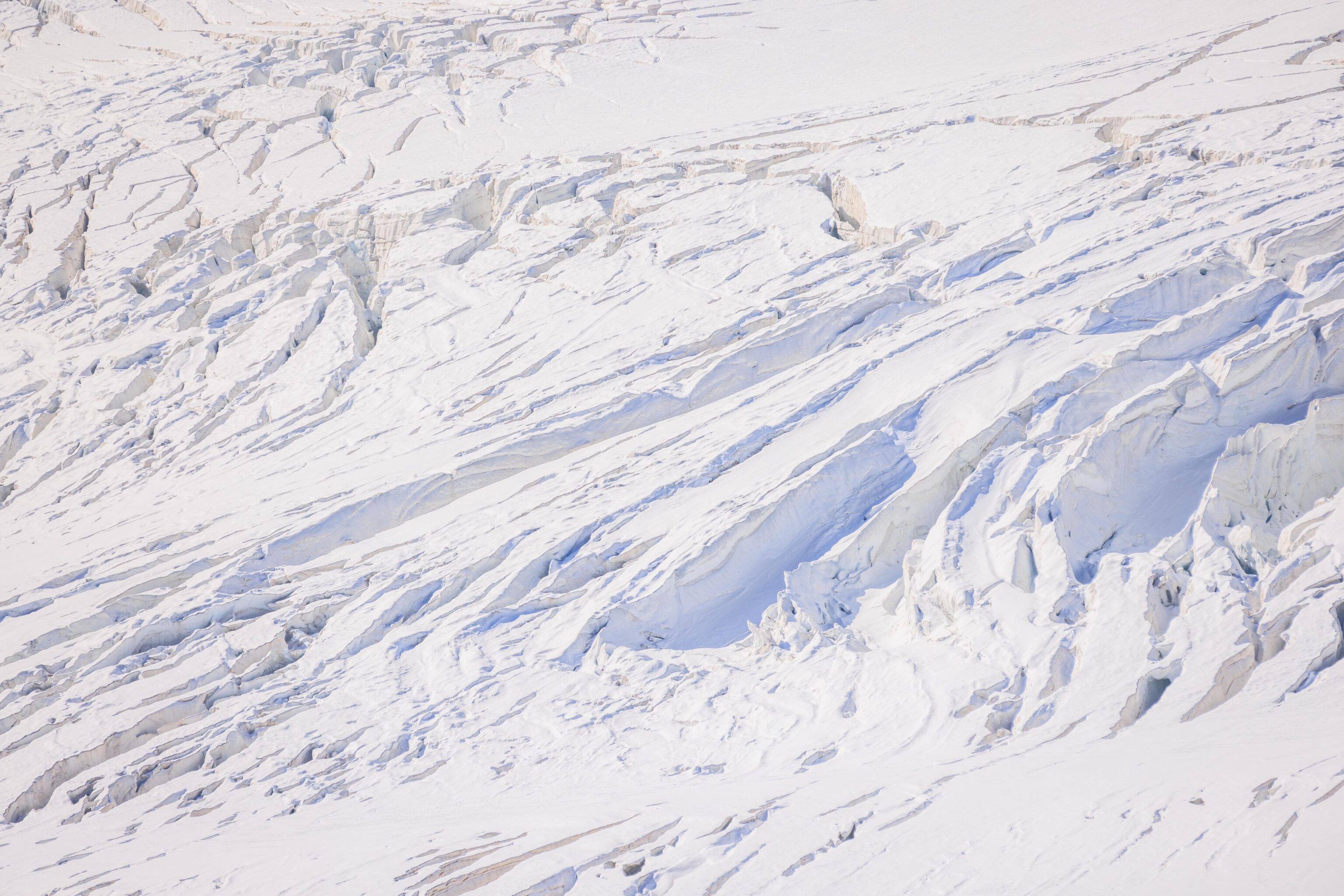
We also took a look at some of the glacial elements below us.
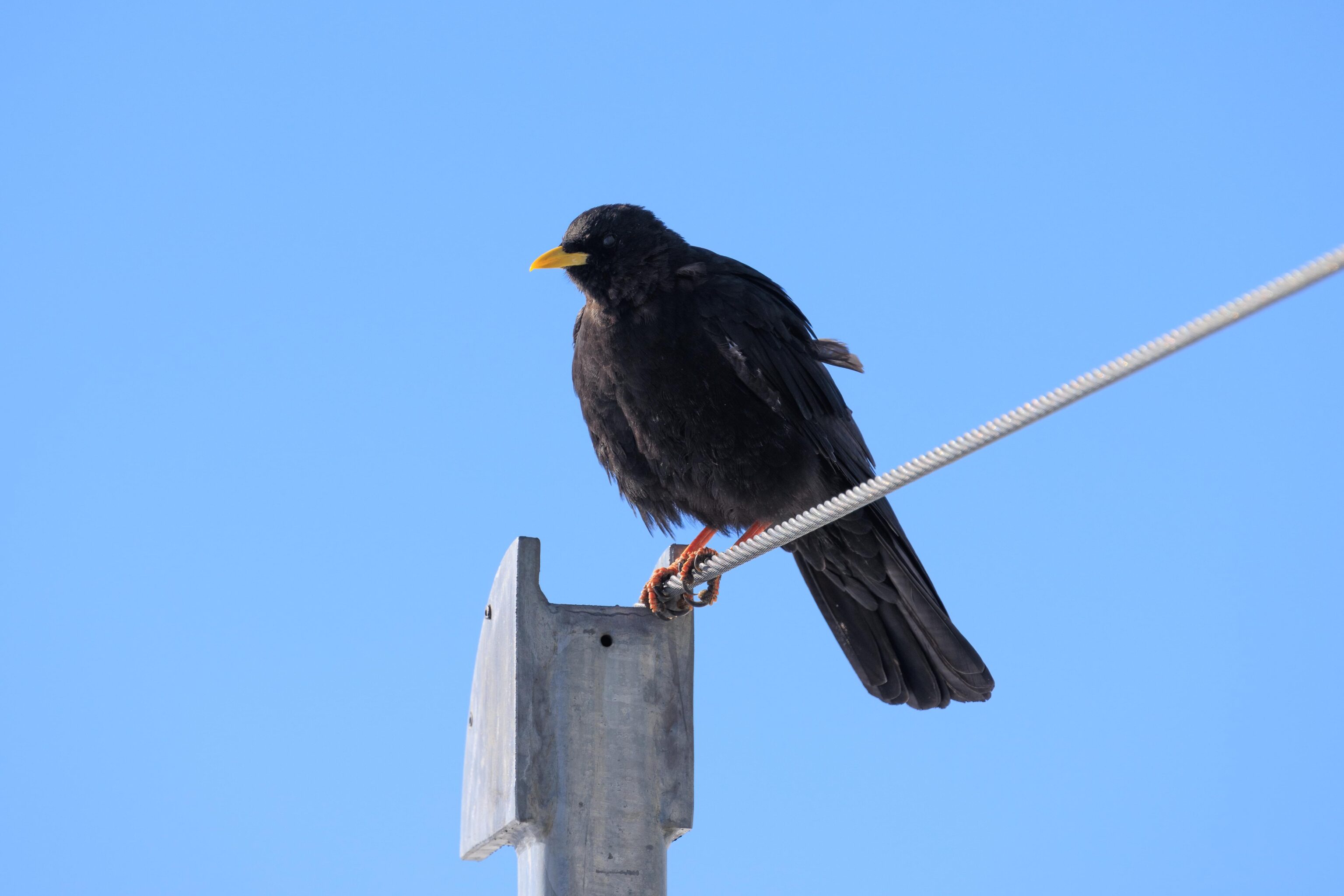
This bird looks extremely similar to the Eurasian Blackbird. However, it lacks the prominent eye ring of the species. We think it is actually a Yellow-Billed Chough, a species that lives in high mountain areas. It is possible that we’ve previously misidentified this species, having seen them often in alpine environments!
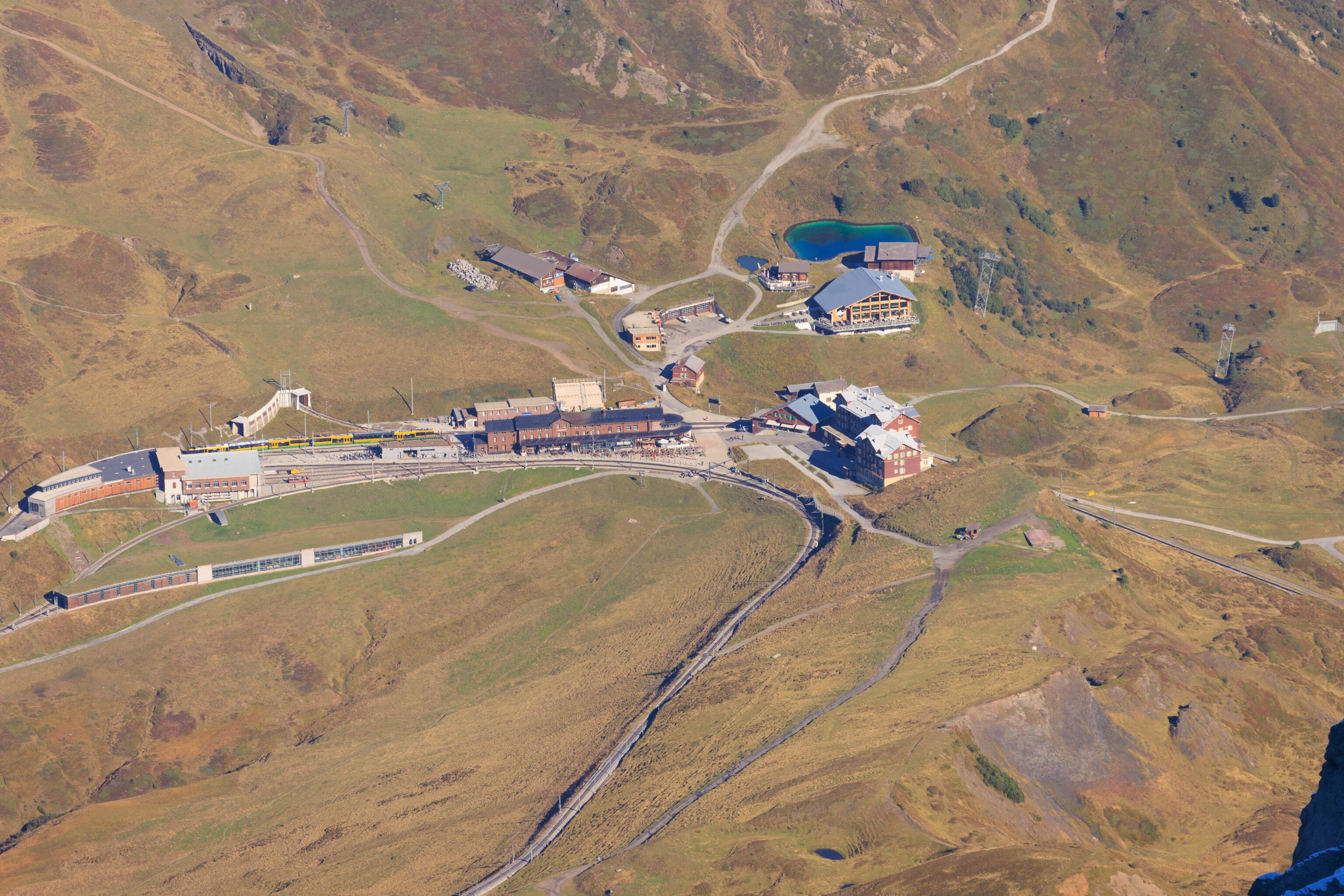
We also pointed our lens at human created features. We had a great view of Klein Scheidegg below us. Klein means small, there is also a Grosse, or large, Scheidegg in the region. It is on the opposite side of Grindelwald and accessible by bus.
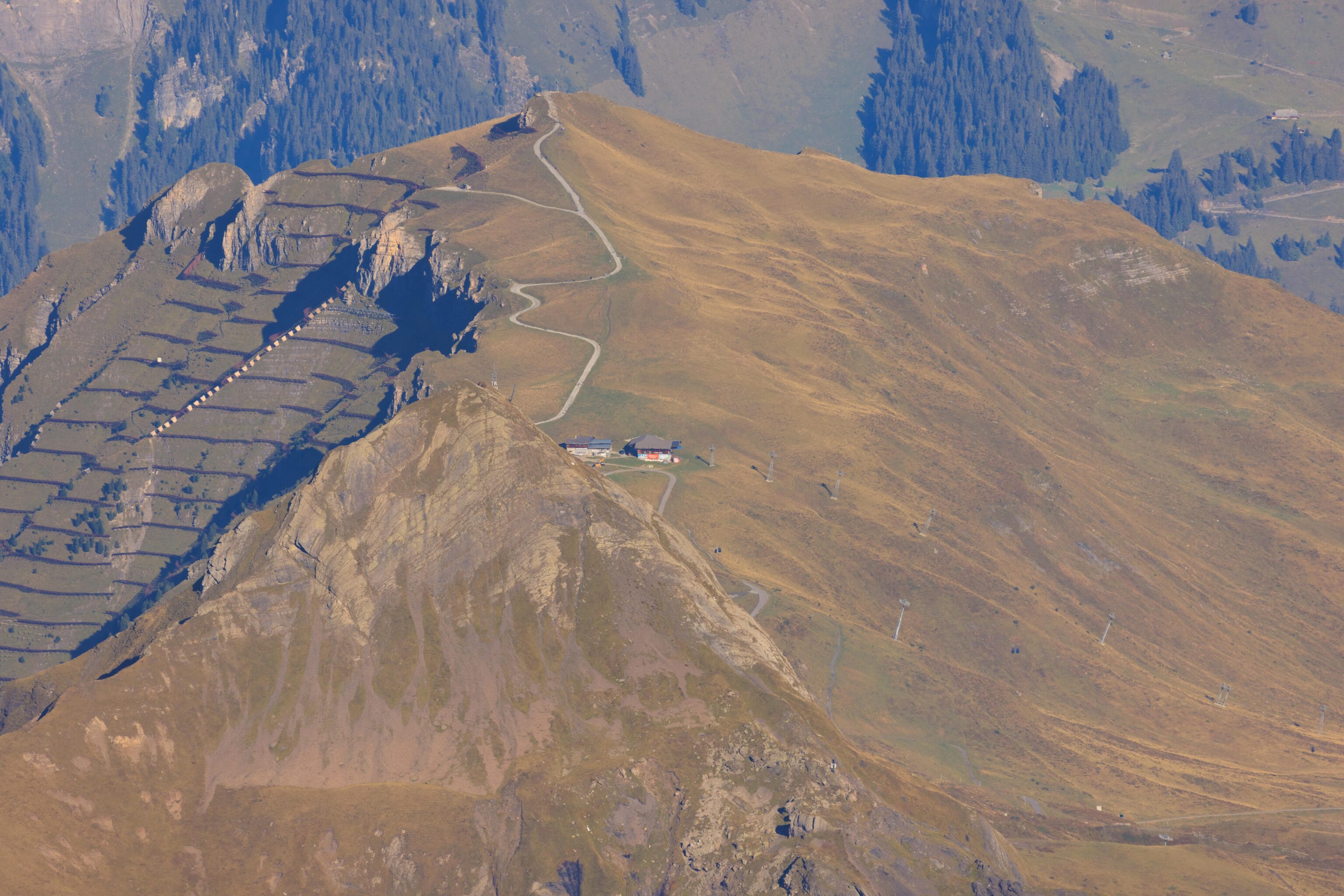
Looking at the mountain beyond Klein Scheidegg, we could see Männlichen, accessible by gondola from Grindelwald Terminal or aerial tram from Wengen. Or, hiking up from Klein Scheidegg. Most of the buildings are hidden by Tschuggen, the mountain in the foreground.
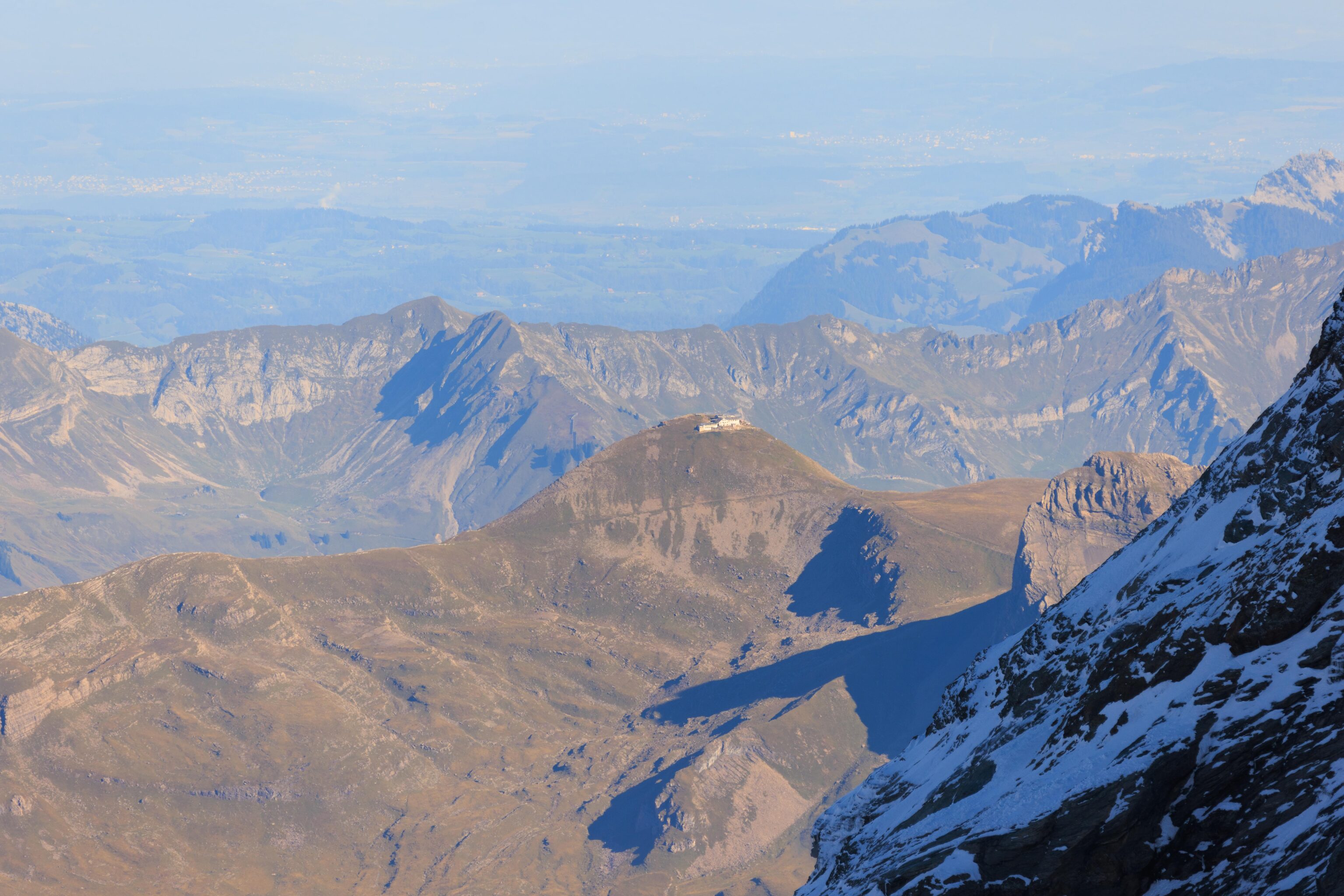
This dome shaped peak is Faulhorn. It is the peak at the far, or west, side of the Bachalpsee. It is easily identified by the presence of the Berghotel Faulhorn at the very top. The hike from First via Bachalpsee is supposed to be relatively easy, other than the steep 400 meter ascent beyond Bachalpsee.
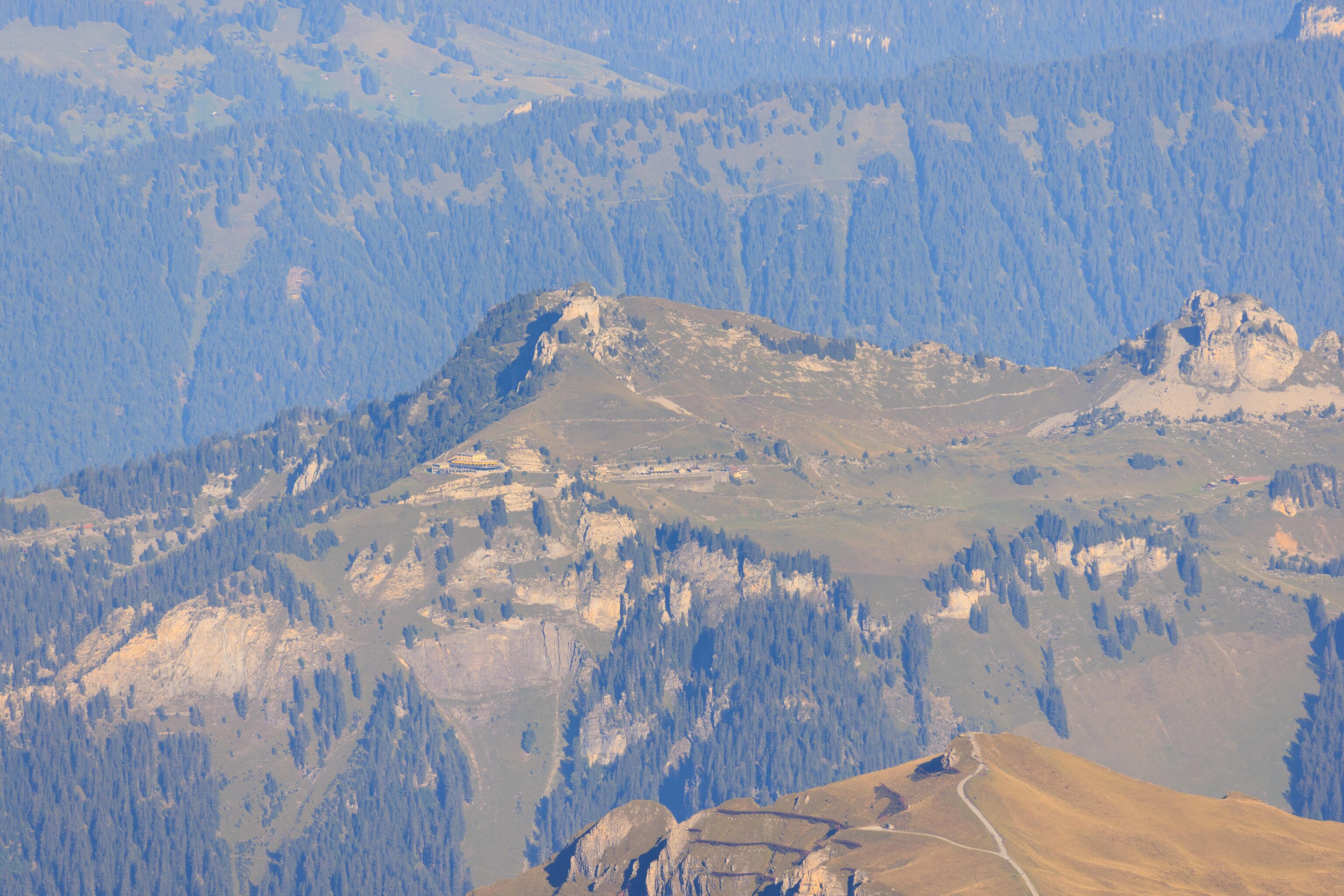
The cluster of buildings at the center of the frame is Schynige Platte. Access via train is included as part of the Jungfrau Travel Pass, though it is unlikely we will make it there during this trip. The peak of Männlichen is in the foreground at the bottom right.
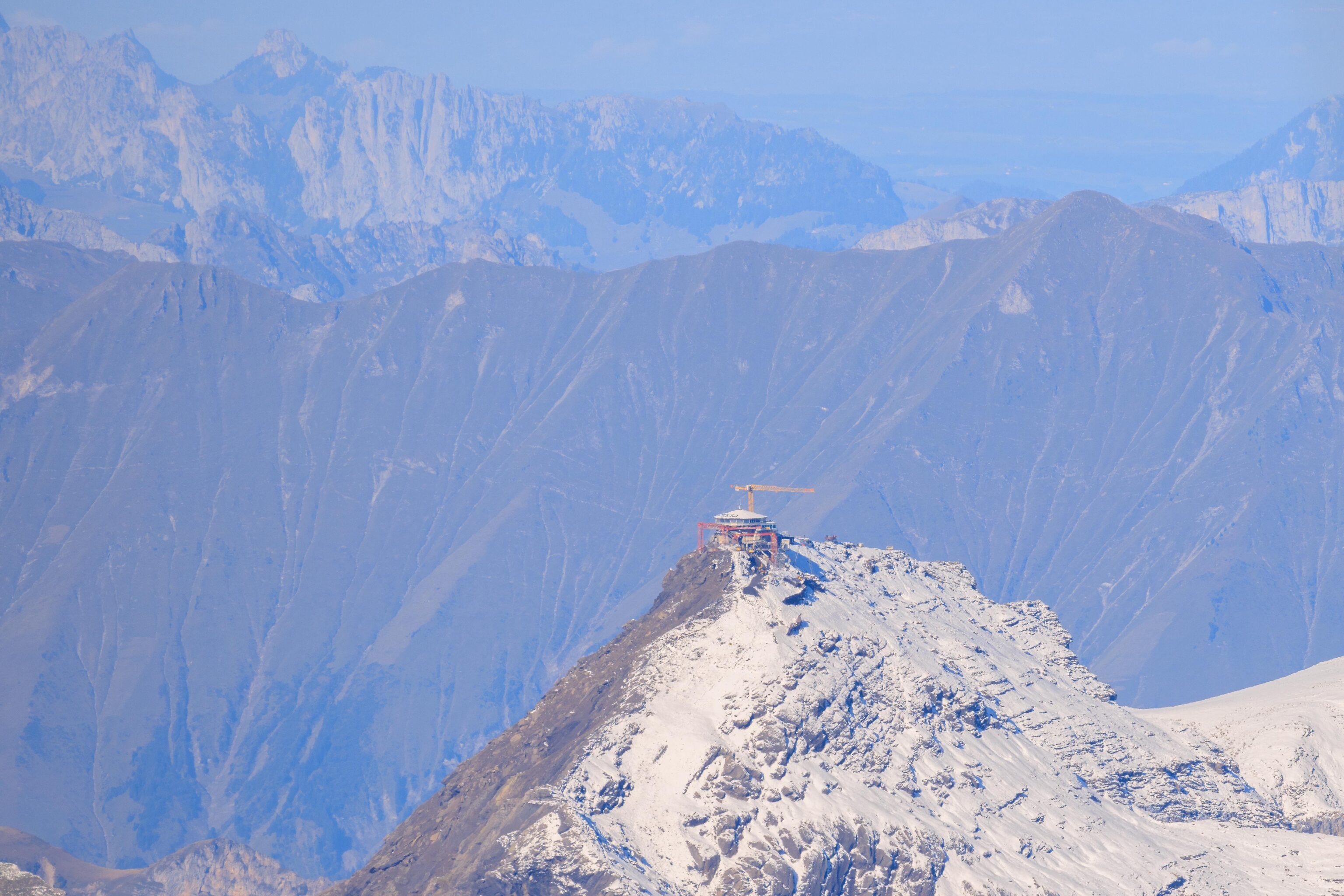
Looking to the west, we could see Schilthorn. The structure at the top is Piz Gloria. It is currently being renovated, although it is still open to visitors. Access is by a two stage trip via aerial tram, starting near Lauterbrunnen.
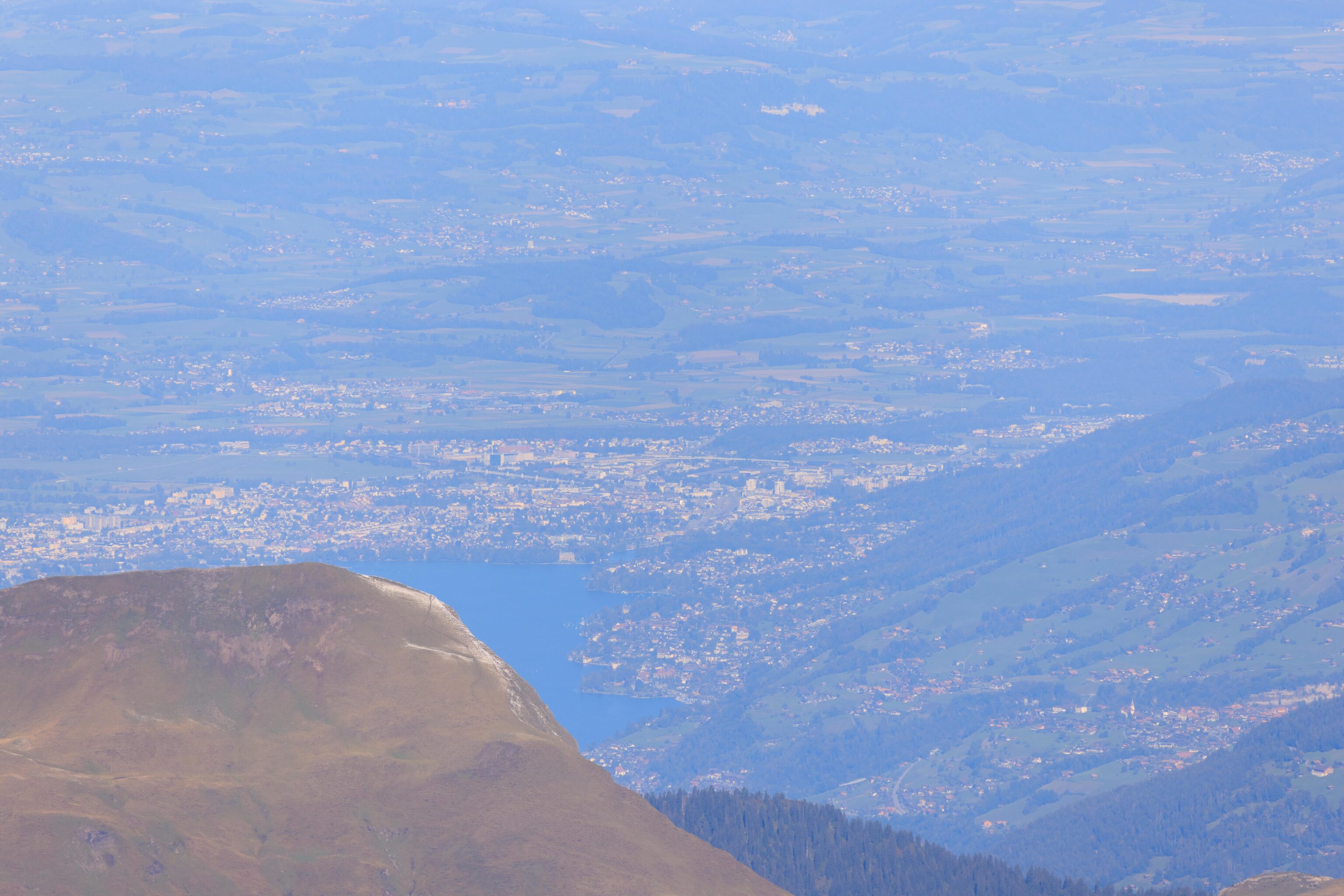
Looking far to the northwest, we could see the northern tip of the Thunersee and the city of Thun. We passed through Thun while on the train from Bern to Interlaken.
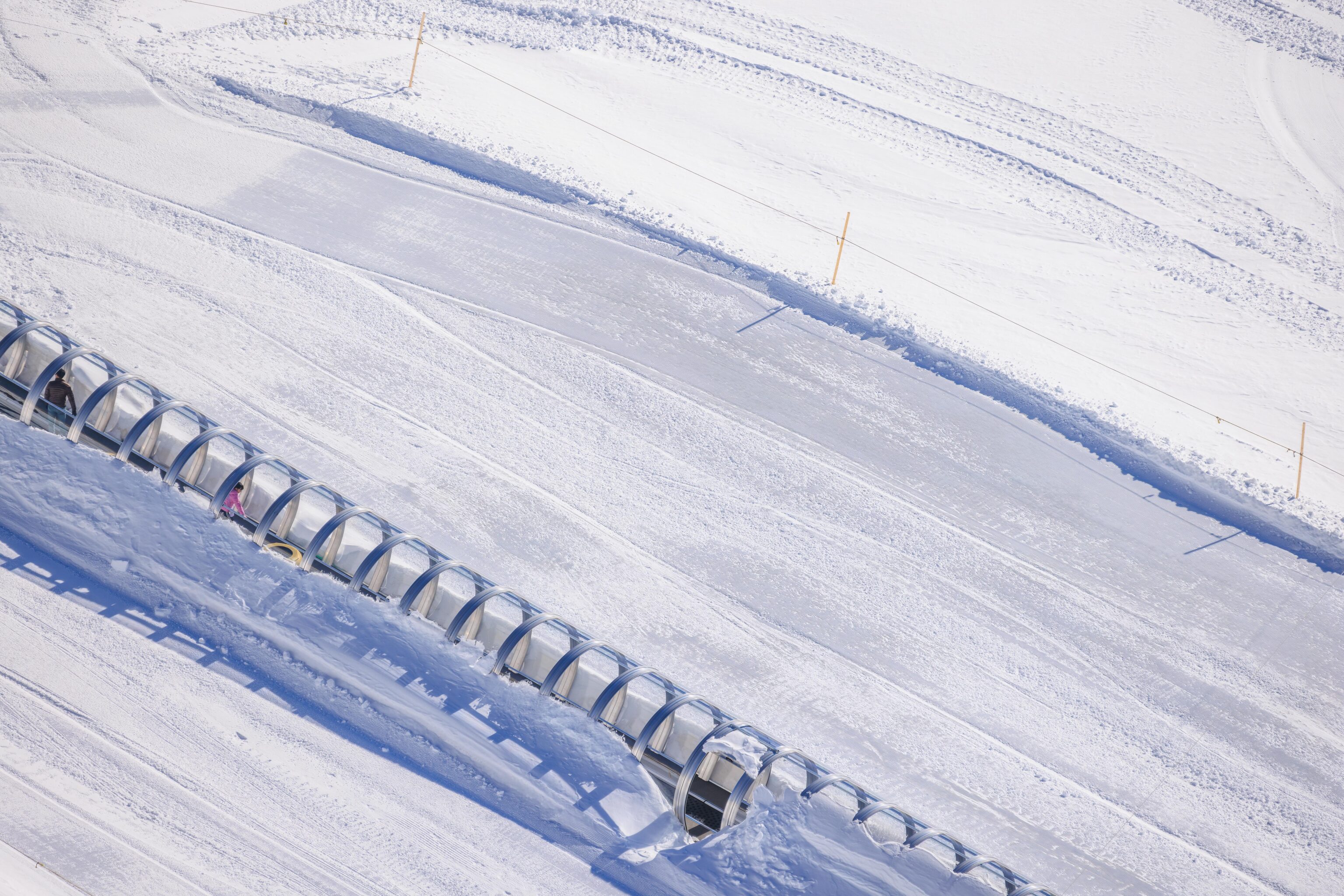
Looking at things closer to us, we could see the groomed activity area below. Skiing and snowboarding are available here.
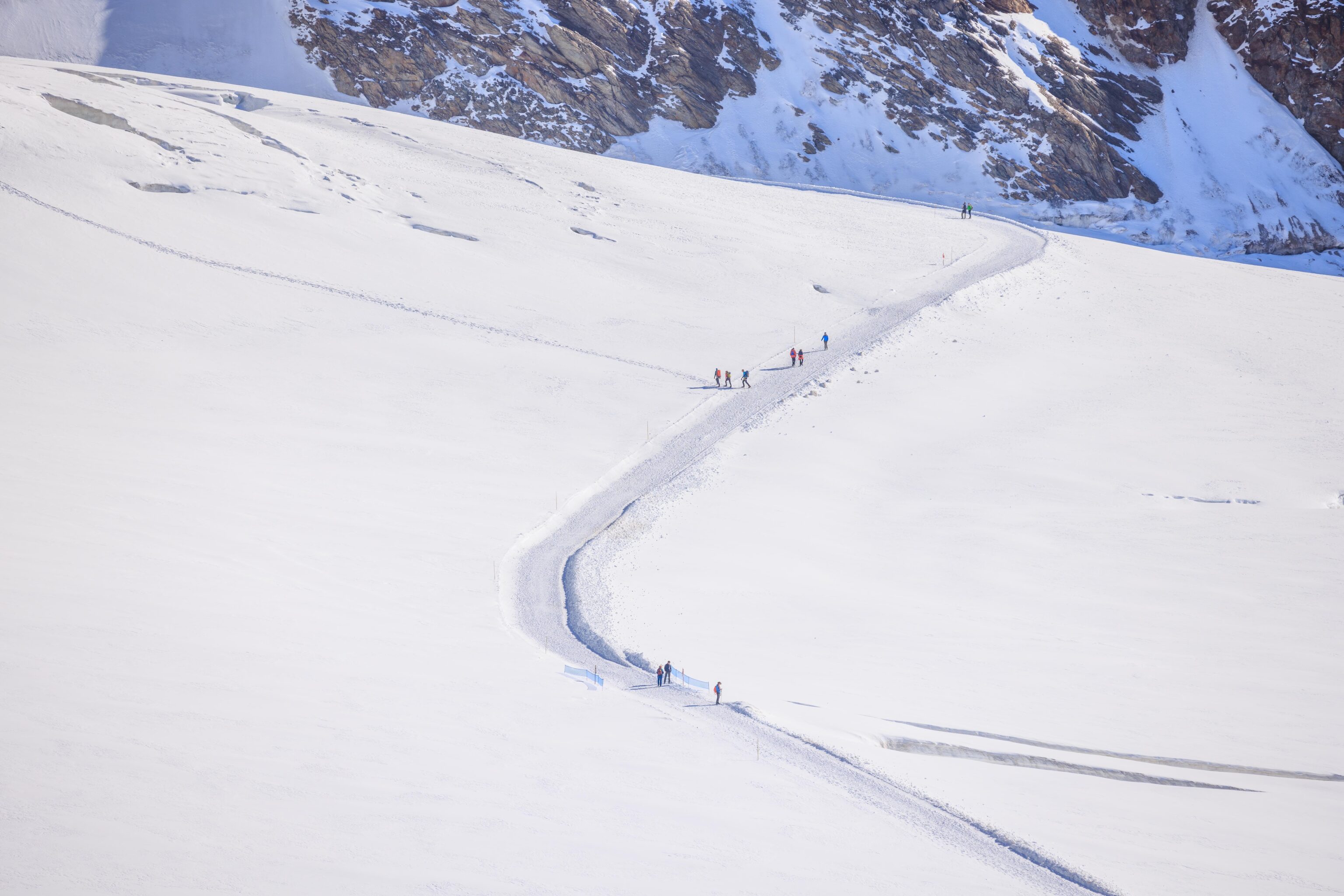
Looking to the east, we could see a few people on the snow trail. We weren’t sure at the time where exactly this trail led but figured we’d go out and take a look later on.
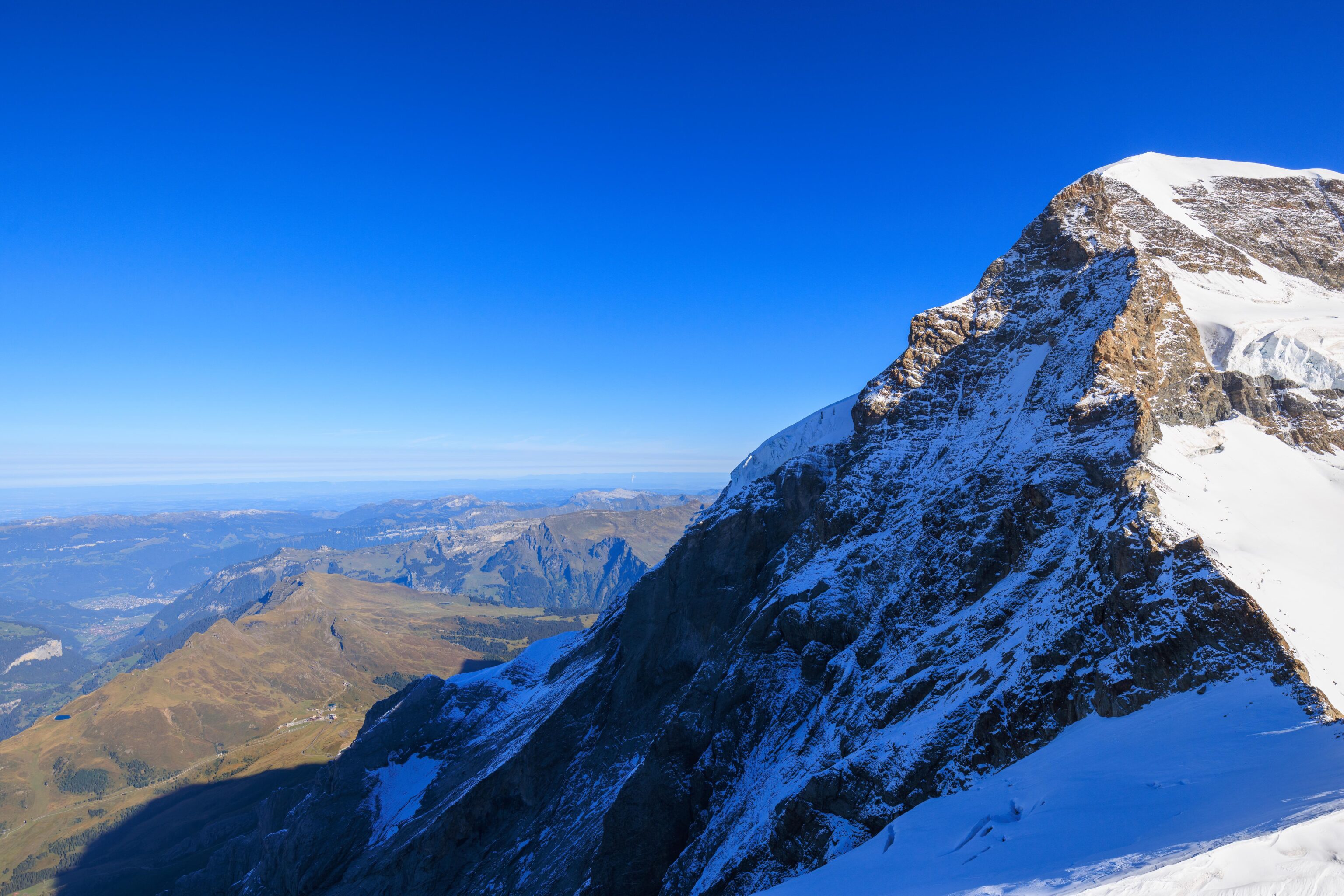
We switched back to the wide angle lens for a few final photos before heading back down. Here, we can see the top of Mönch as well as Klein Scheidegg and Männlichen below.
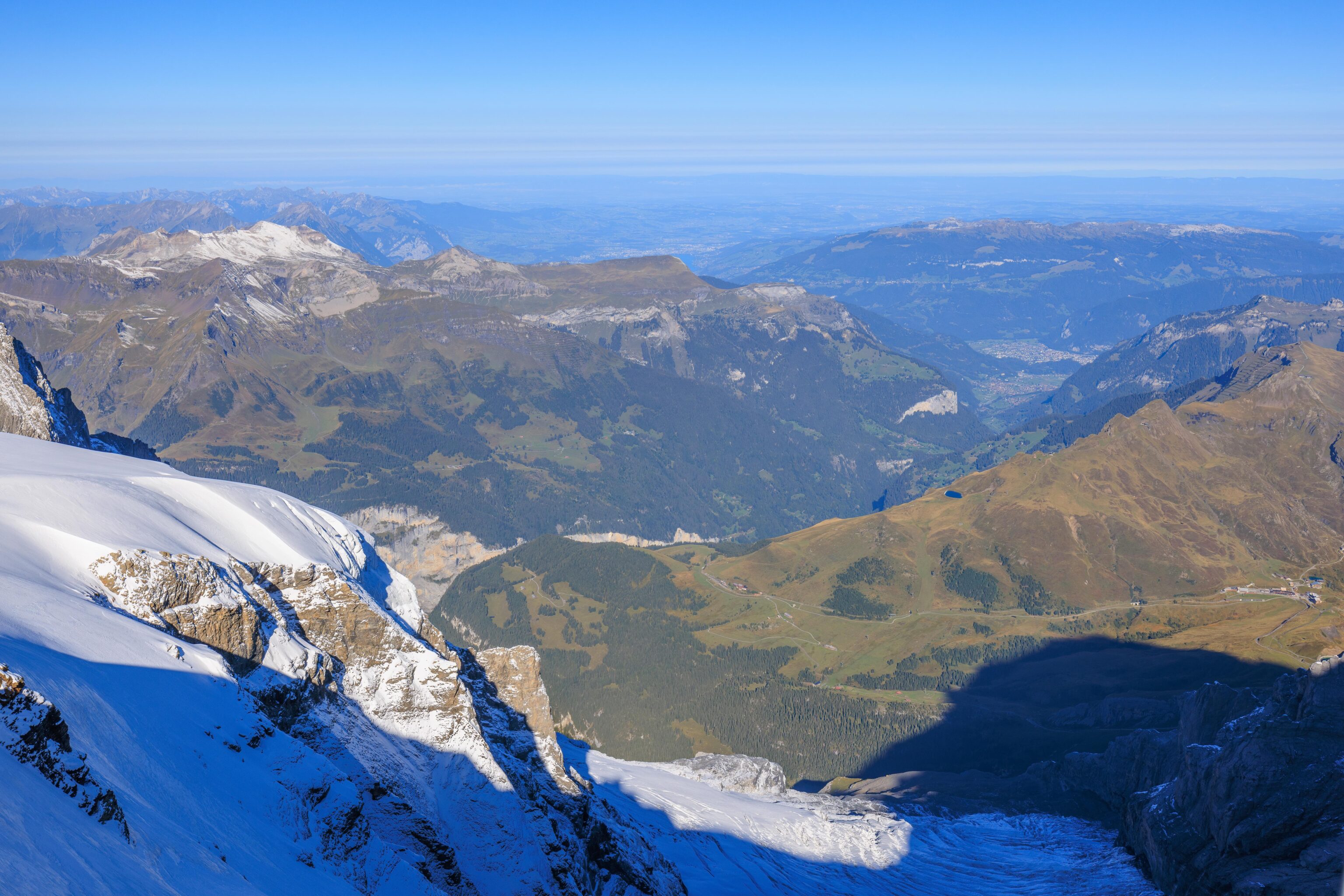
A continuation of the view to the west.
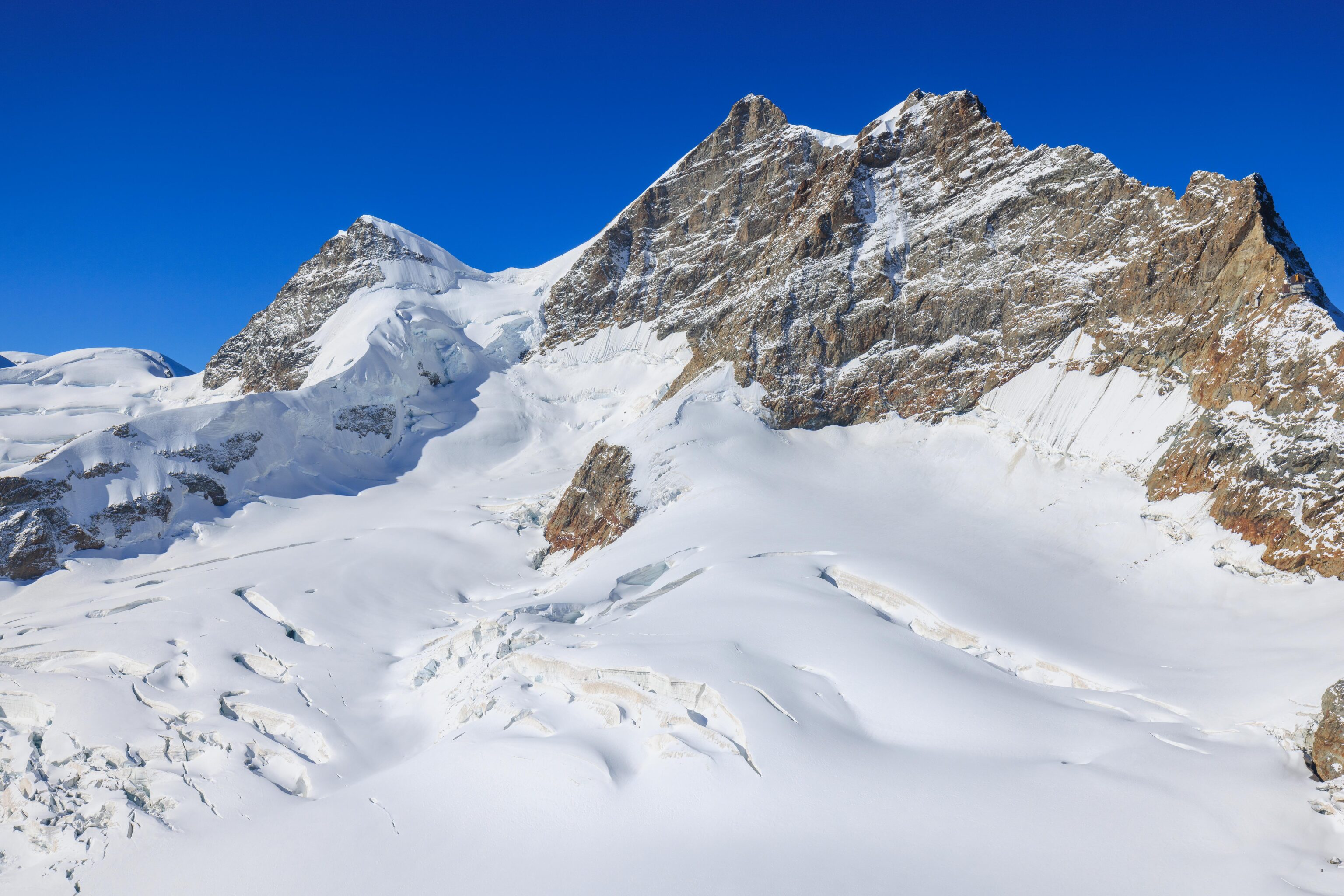
A wide angle view of Jungfrau.
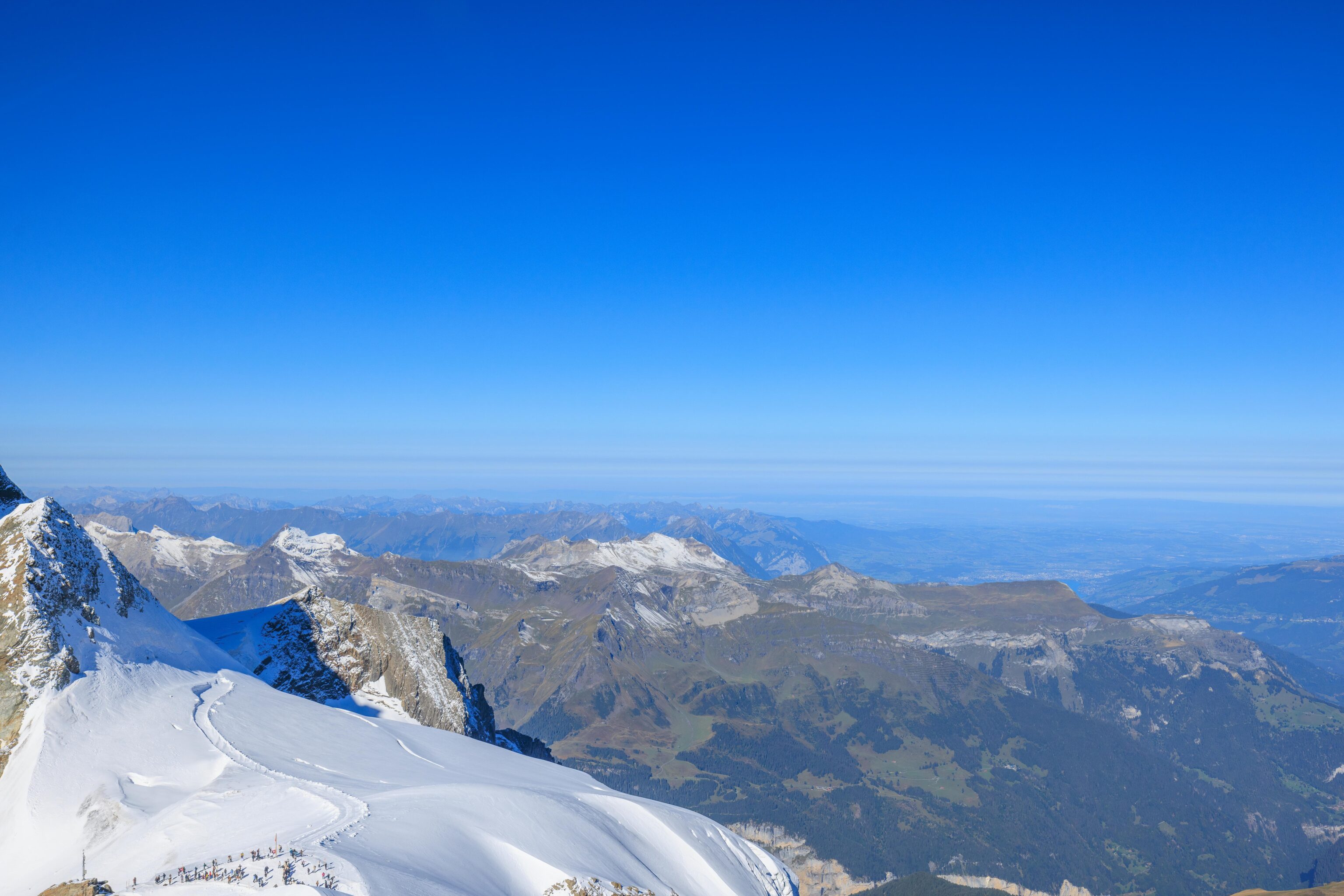
And finally, just to the right of Jungfrau’s peak. Down below, we could see another outdoor area of Jungfraujoch, the Glacier Plateau. The Schilthorn and Piz Gloria atop it is visible to the right of Jungfrau. It is below us at 2,970 meters.
We headed back down via elevator. The bathrooms nearby were closed for cleaning so we decided to head back to the station area. We decided to continue walking the Discovery Tour loop indicated on the TV screen. Unfortunately, it turned out to be much farther than simply backtracking as the diagram of the route is not to scale.
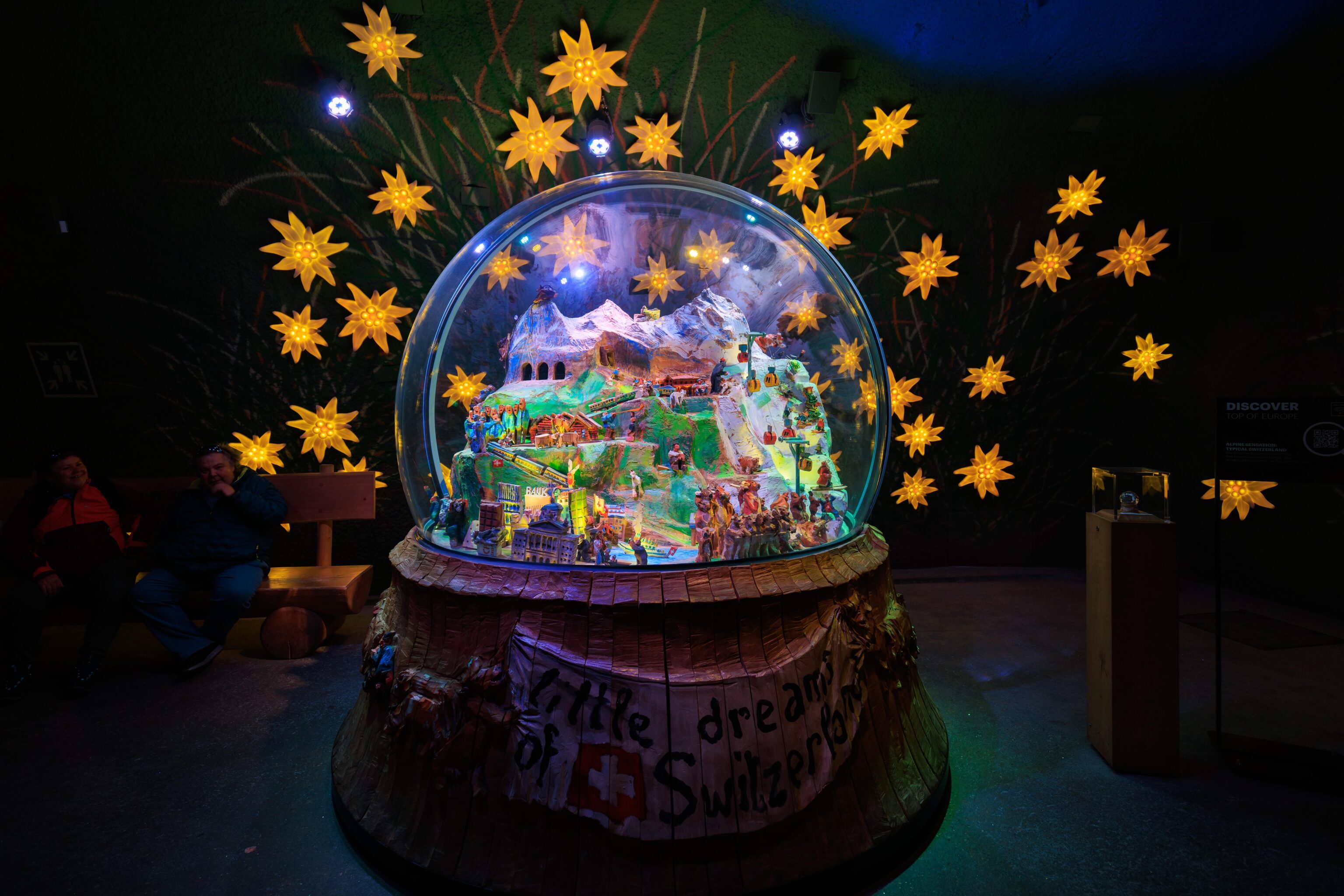
We first passed through the Alpine Sensation. This sculpture of a snowglobe, labelled as Little Dreams of Switzerland, depicts the Jungfrau region from Interlaken up to Jungfraujoch.
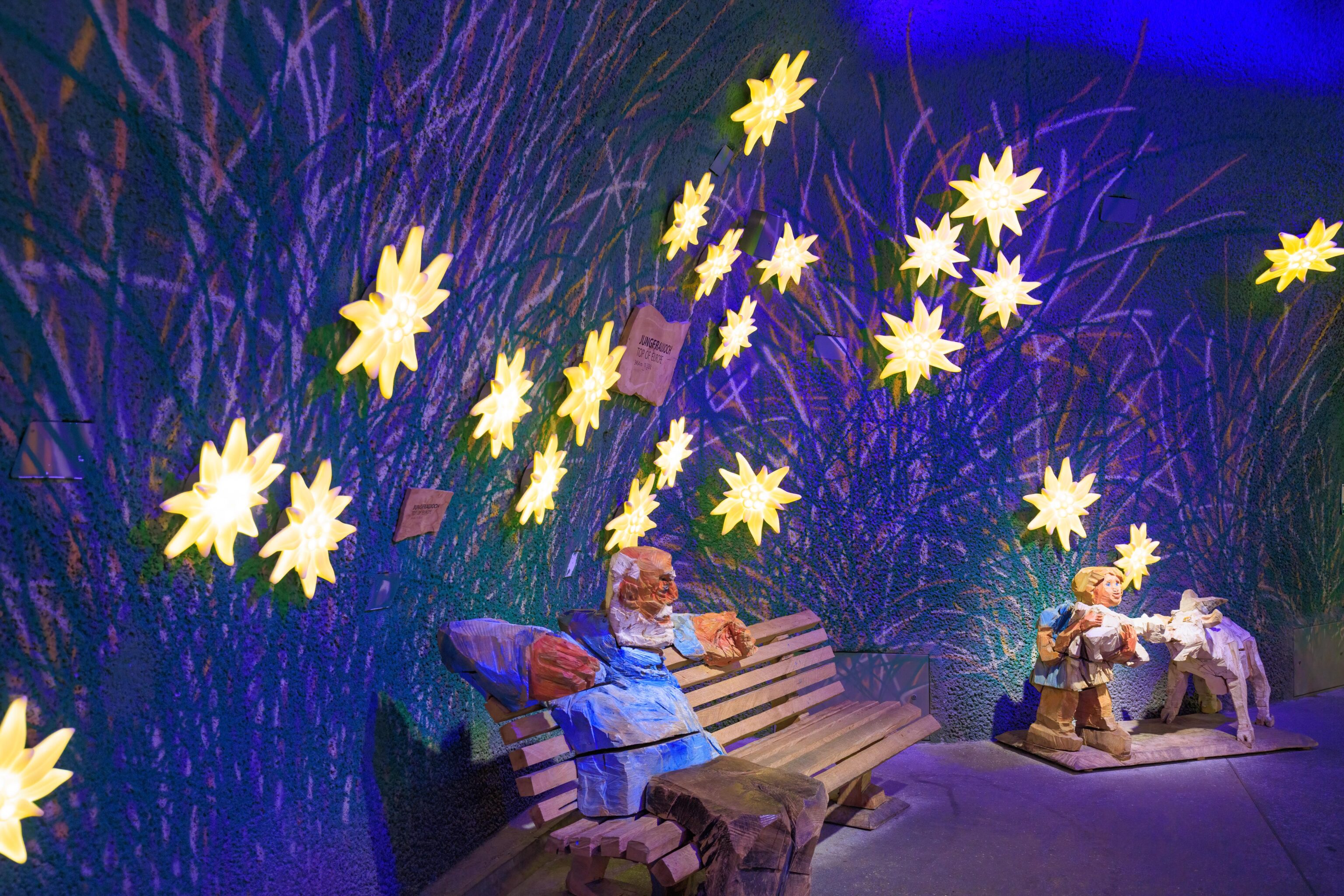
We next passed by these sculptures of two people and two goats.
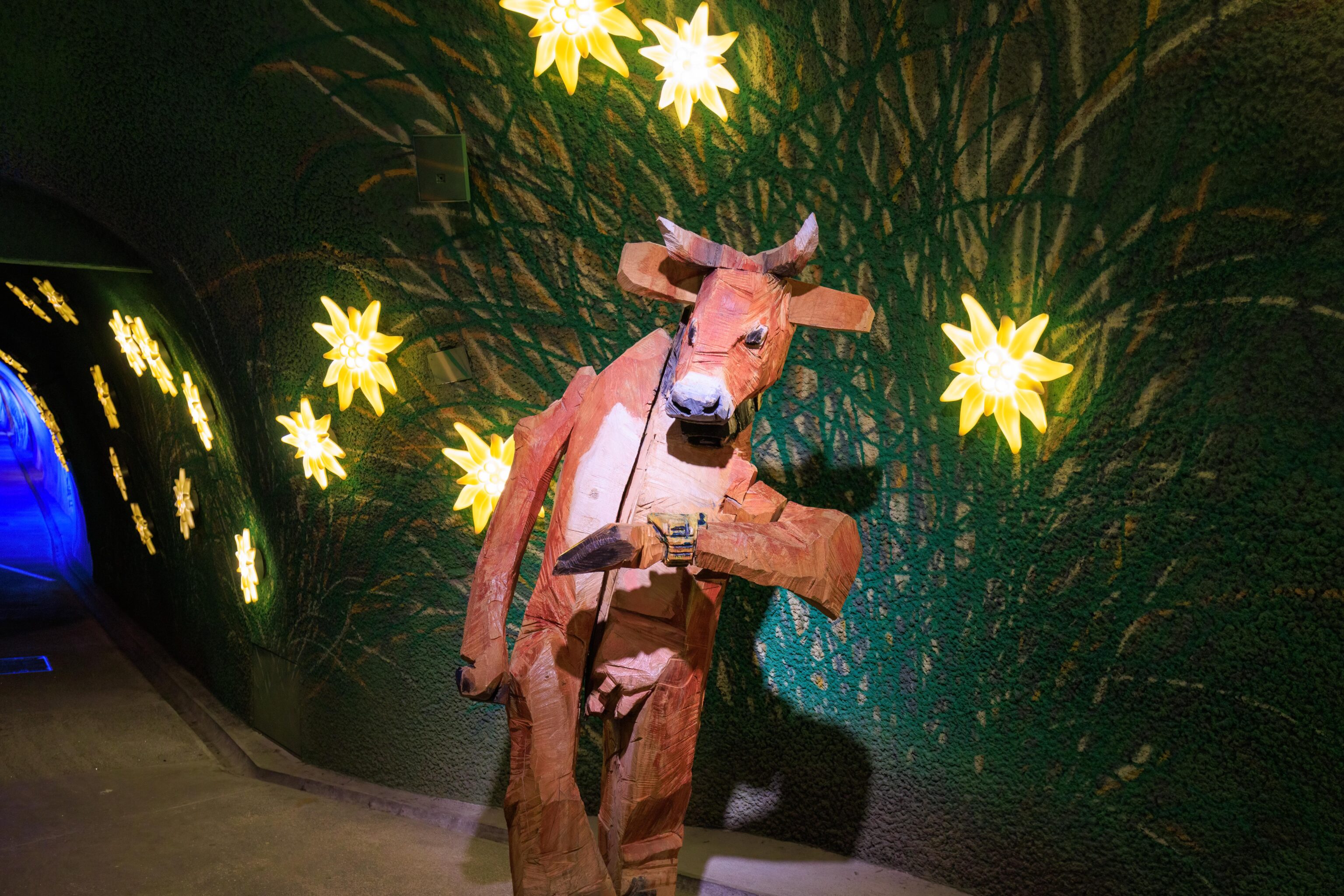
Swiss cows have Swiss watches, obviously!
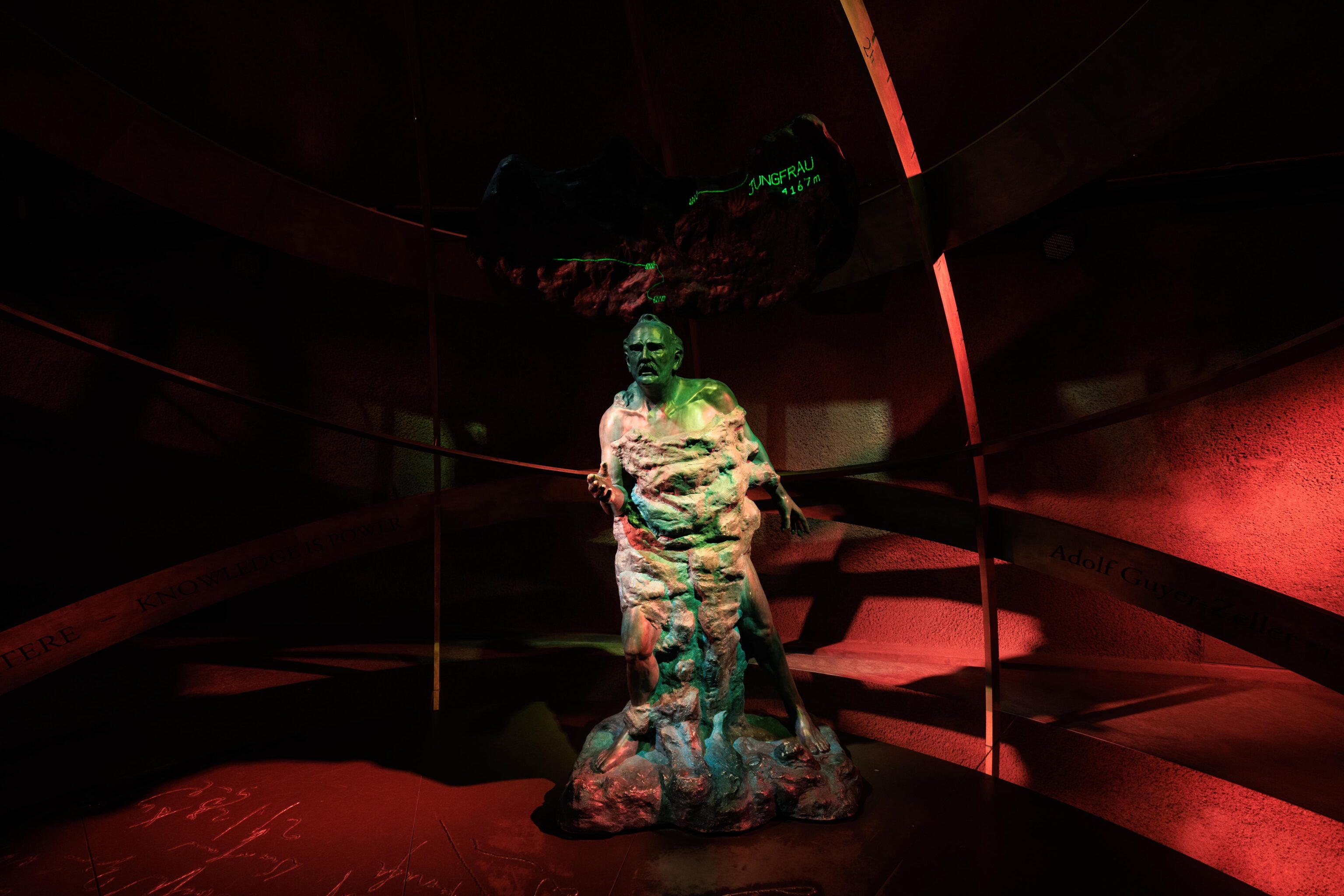
This rather creepy looking dude is supposed to be Adolf Guyer-Zeller, founder of the Jungfrau Railway and responsible for building the railway up to Jungfraujoch.
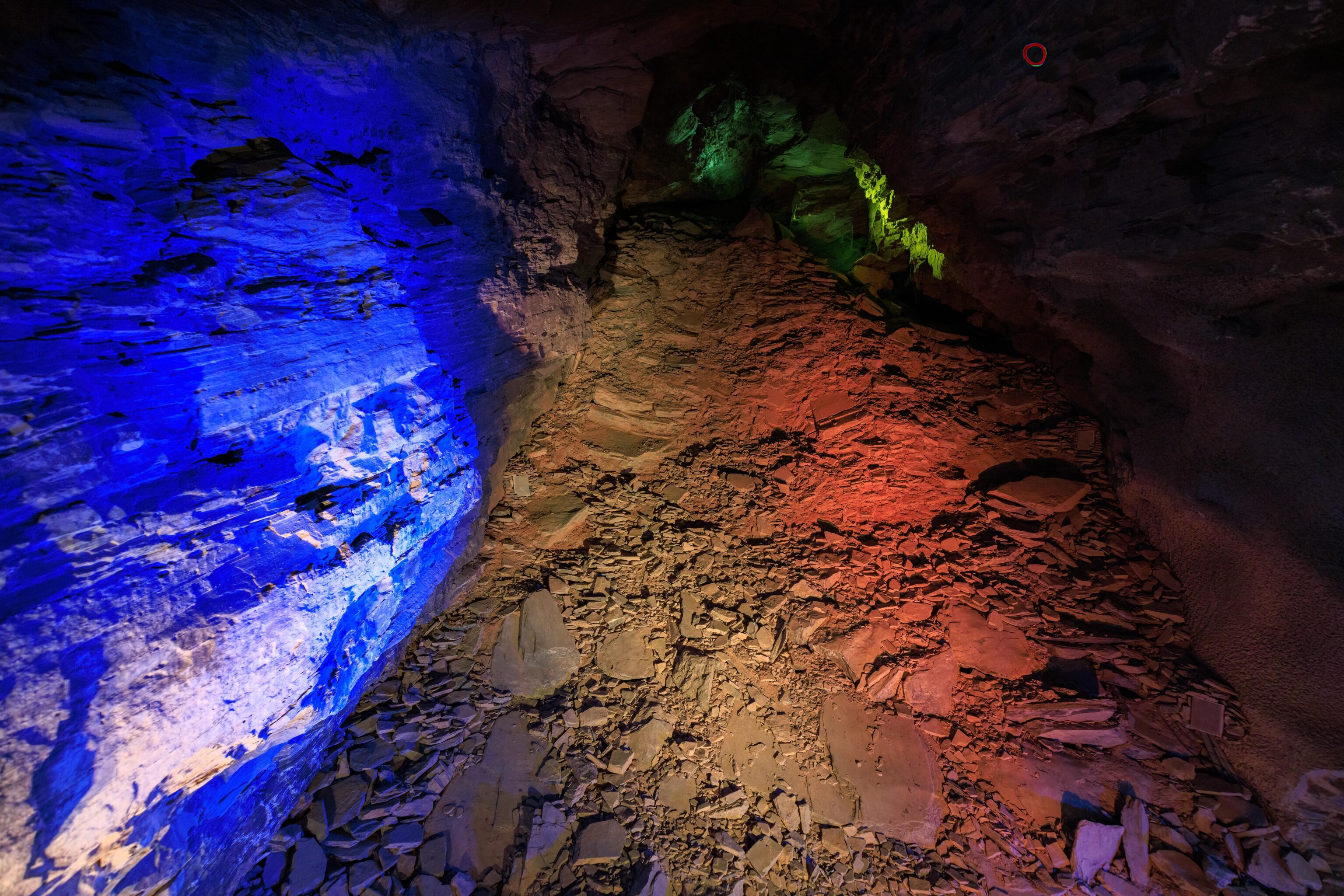
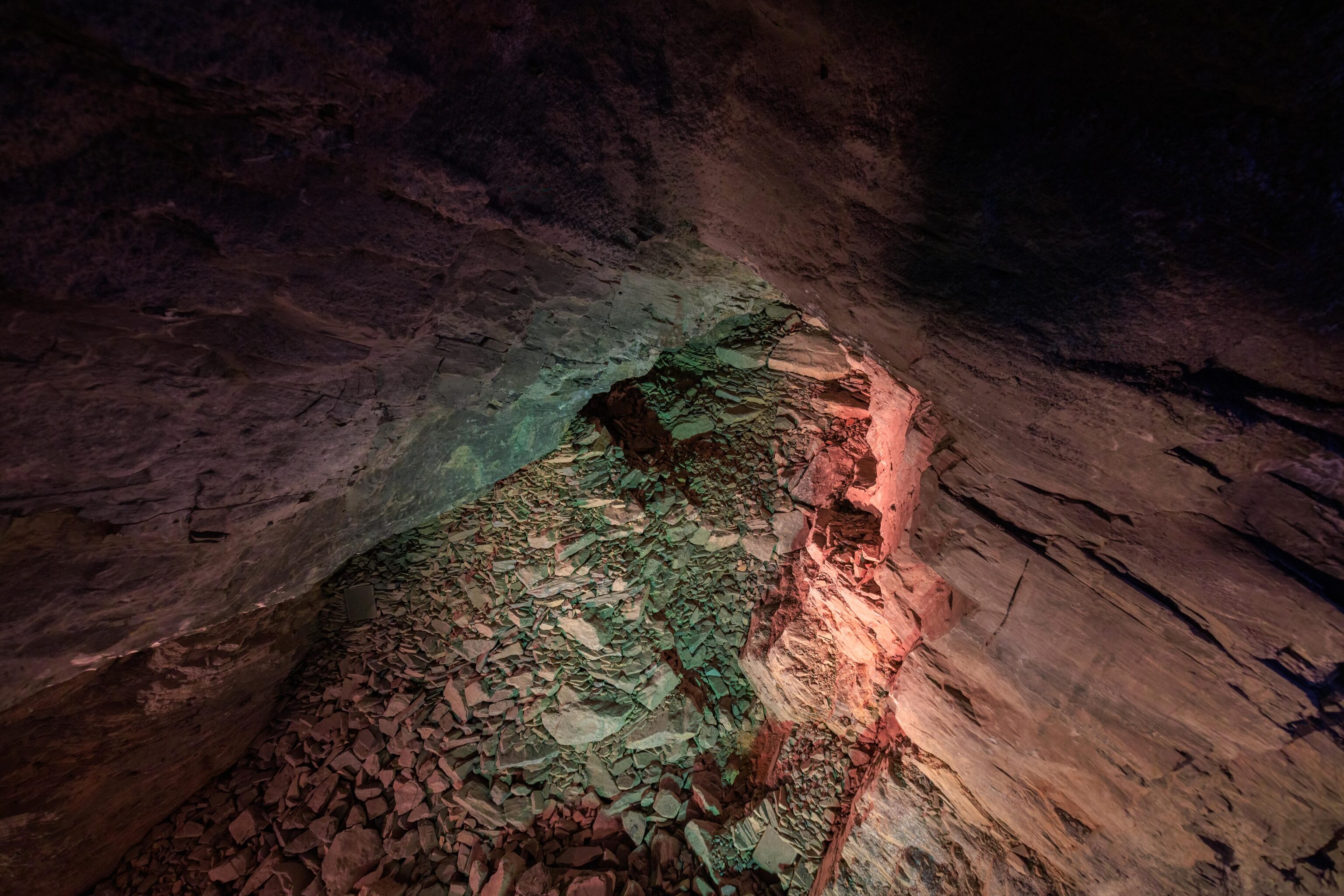
We then passed through what seems to be a natural section of cave.
We then walked for awhile, bypassing the Ice Palace and Glacier Plateau to make it back to the station’s top floor. We visited the bathrooms and then took the elevator back down to where we started earlier in the morning.
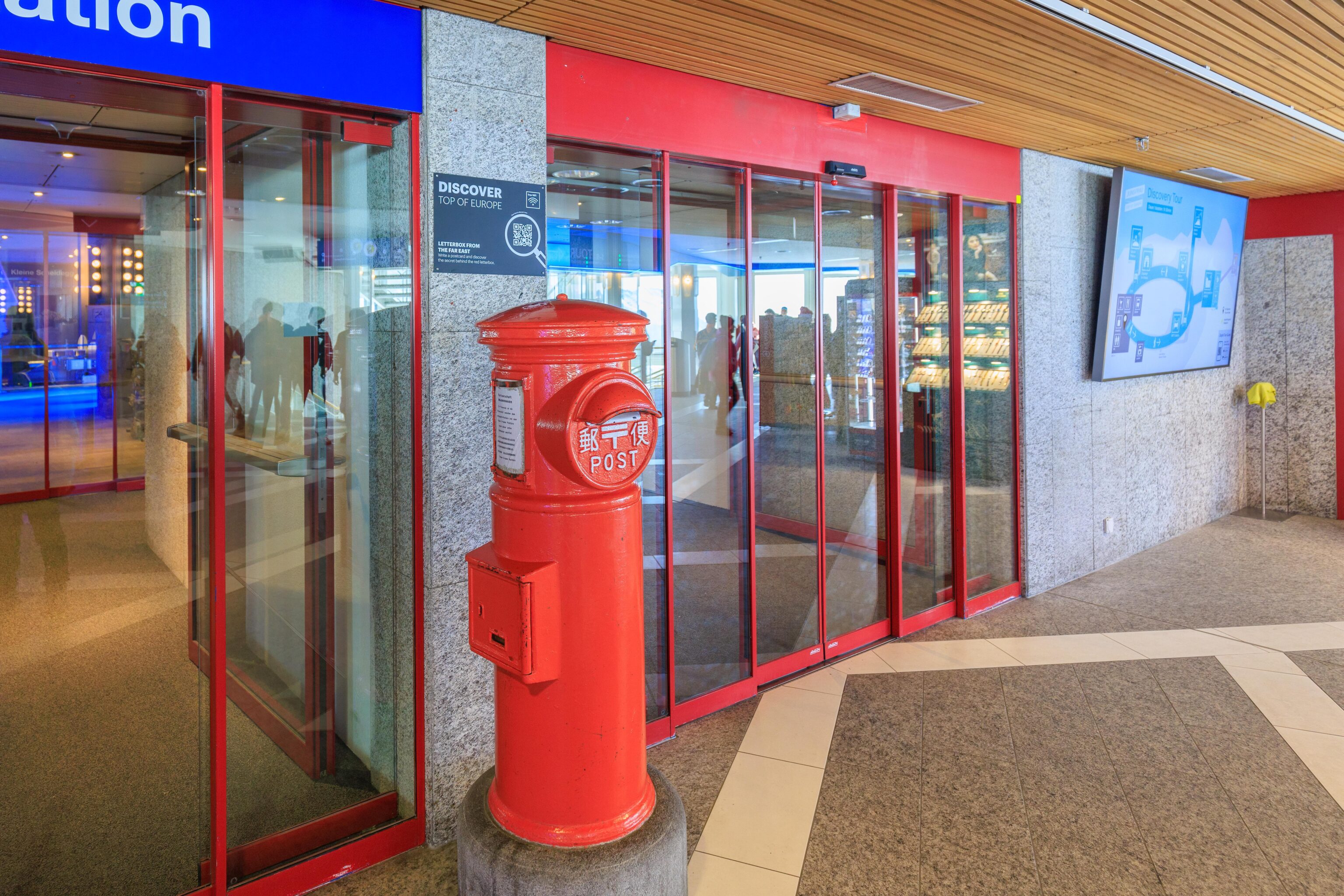
We noticed this Japanese post box! Apparently, Mount Fuji and Jungfraujoch exchanged post boxes as part of a mountain post office twinning program.
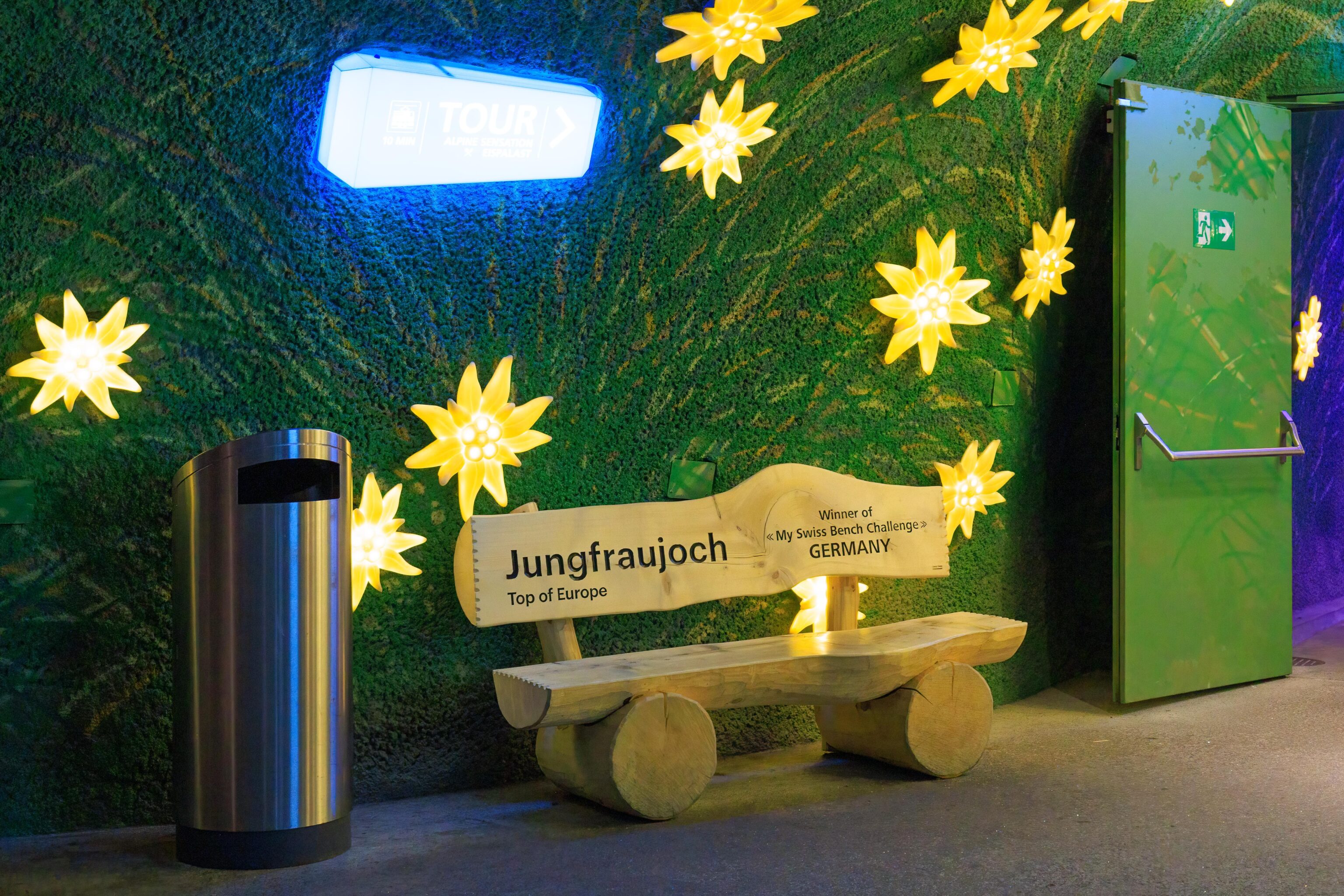
We started again on the Discovery Tour path, passing by the elevator to the Sphinx Terrace and taking a side path that leads outside. The TV display map indicated that a trail leads to the Mönchsjochhütte and that it requires more than 3 hours, though it wasn’t clear what that time meant. Does it take 3 hours to get there? The brochure actually lists a 45 minute travel time, though we didn’t notice it at the time.
We noticed this bench showing the winner of the My Swiss Bench Challenge being Germany. What is this? It turns out that there was some sort of online vote, with the winner getting a bench at Jungfraujoch. The winner was announced by tennis star Roger Federer. He was apparently the brand ambassador for Swiss tourism.
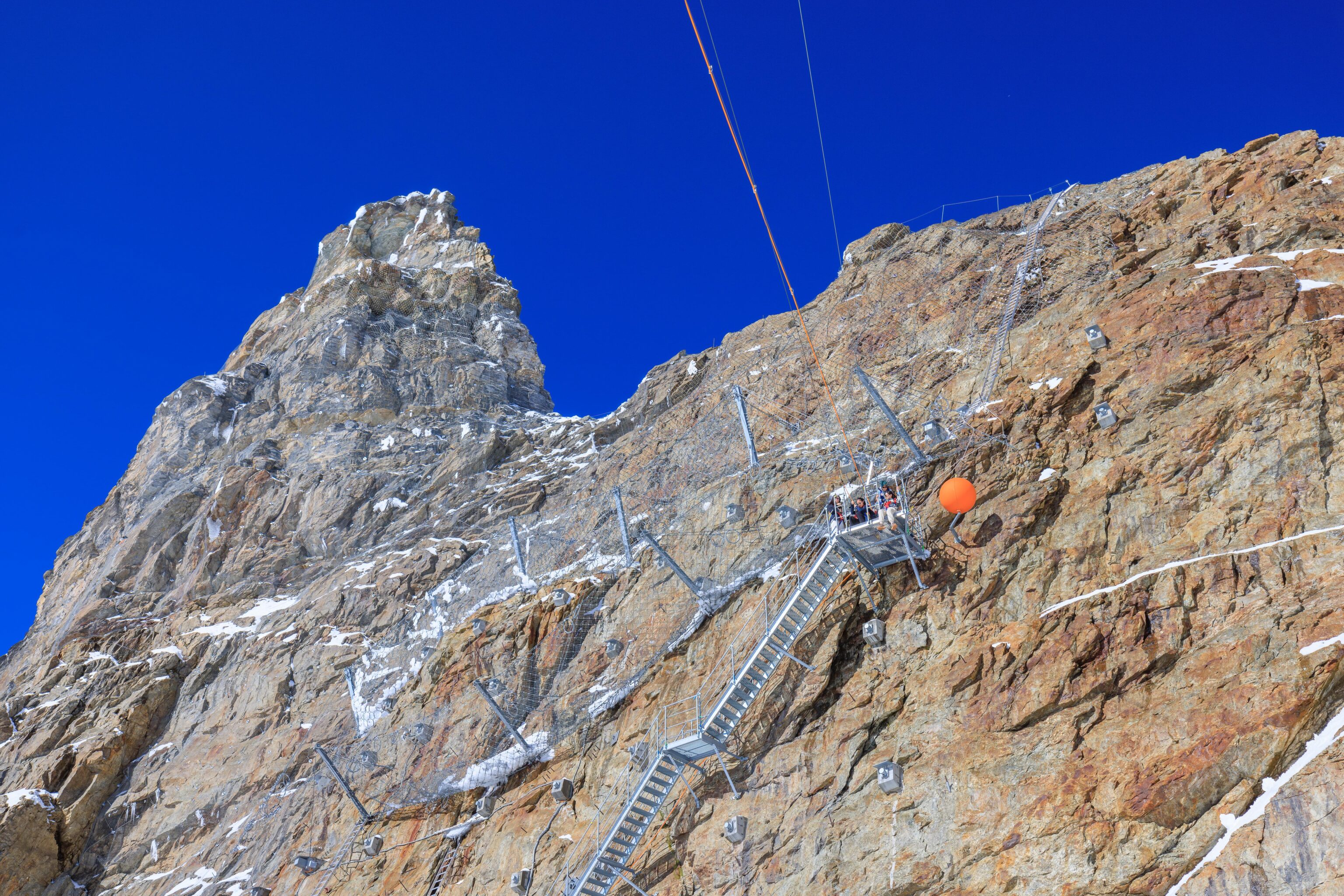
We stepped outside and noticed this zip line above us. It goes quite some distance away, beyond the small ski and snowboard area that we saw earlier from above.
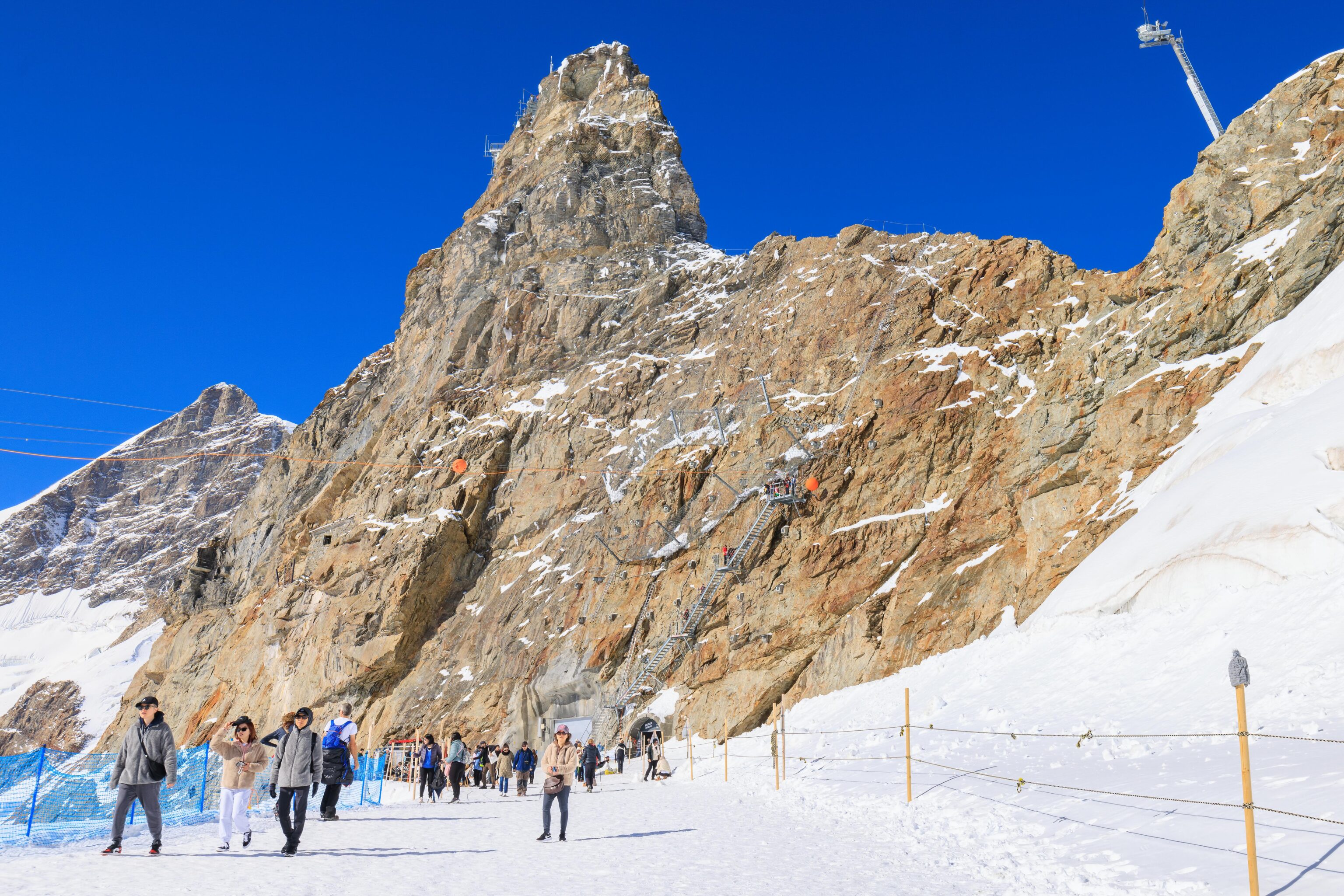
The entrance to Jungfraujoch is below the zip line, right by the stairs. The Sphinx Terrace is directly above. It mostly is obscured from view but a tiny bit of the terrace structure is visible along with a few people. The thing on the right that looks like a cherry picker might be something used for scientific observations?
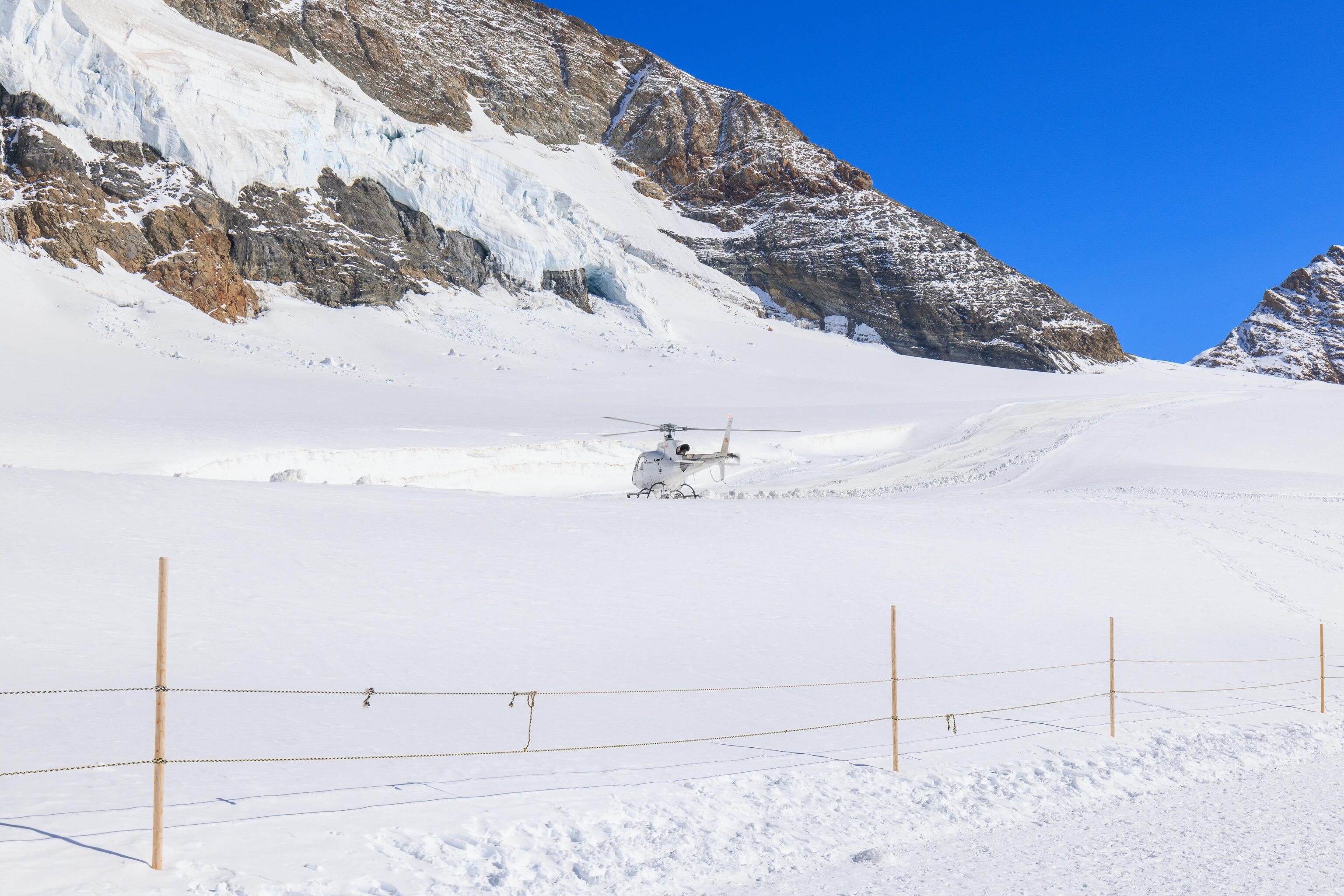
This helicopter landed on the snow nearby, between the trail and Mönch. It seemed to be a helicopter sightseeing tour, which includes landing and walking around at Jungfraujoch. One company, Swiss Helicopter, advertises a tour for 1450 CHF for five people.
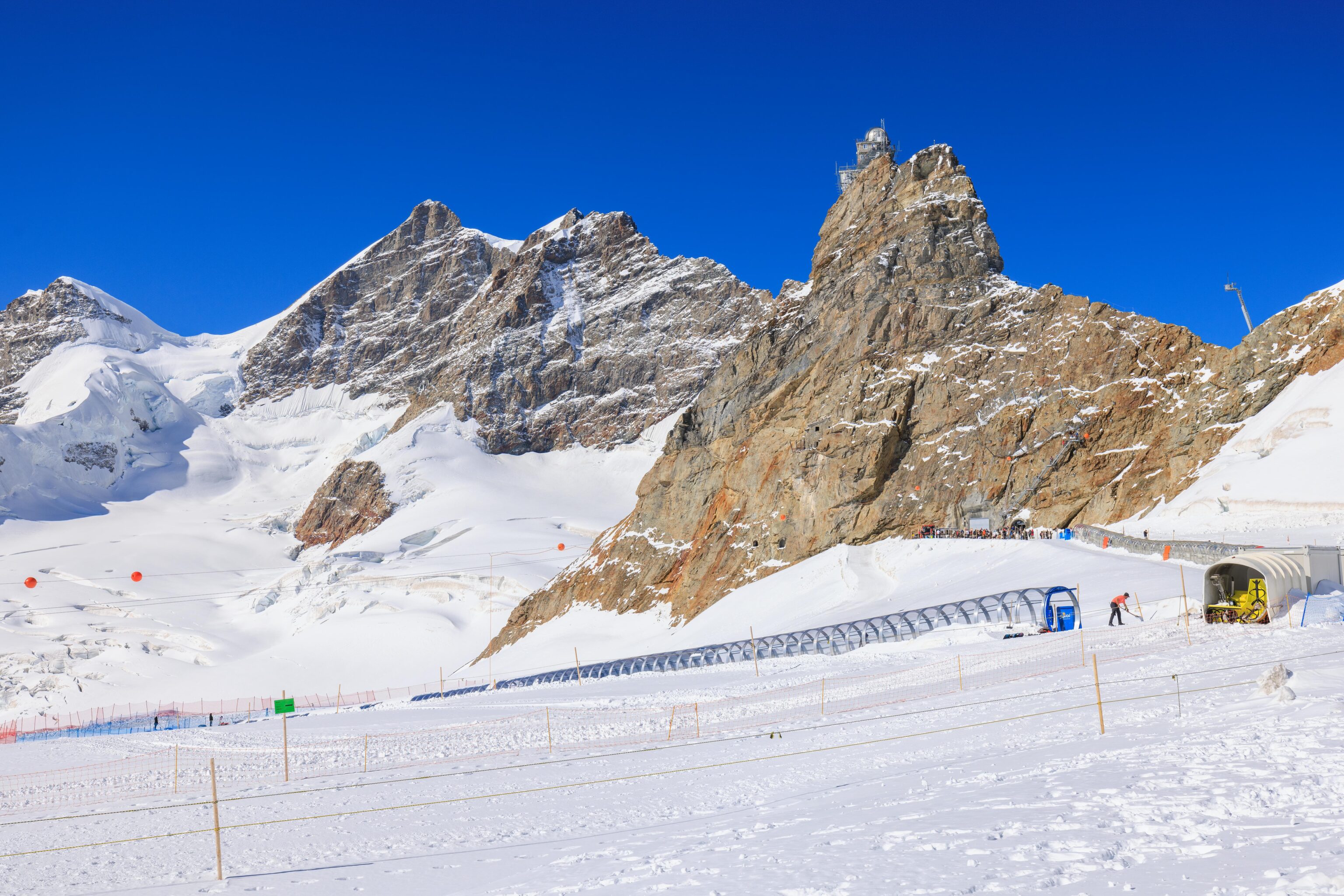
We came fully equipped for winter conditions. We put on our microspikes and decided to hike as far as seemed reasonable. Most people seemed to stay right by the Jungfraujoch entrance.
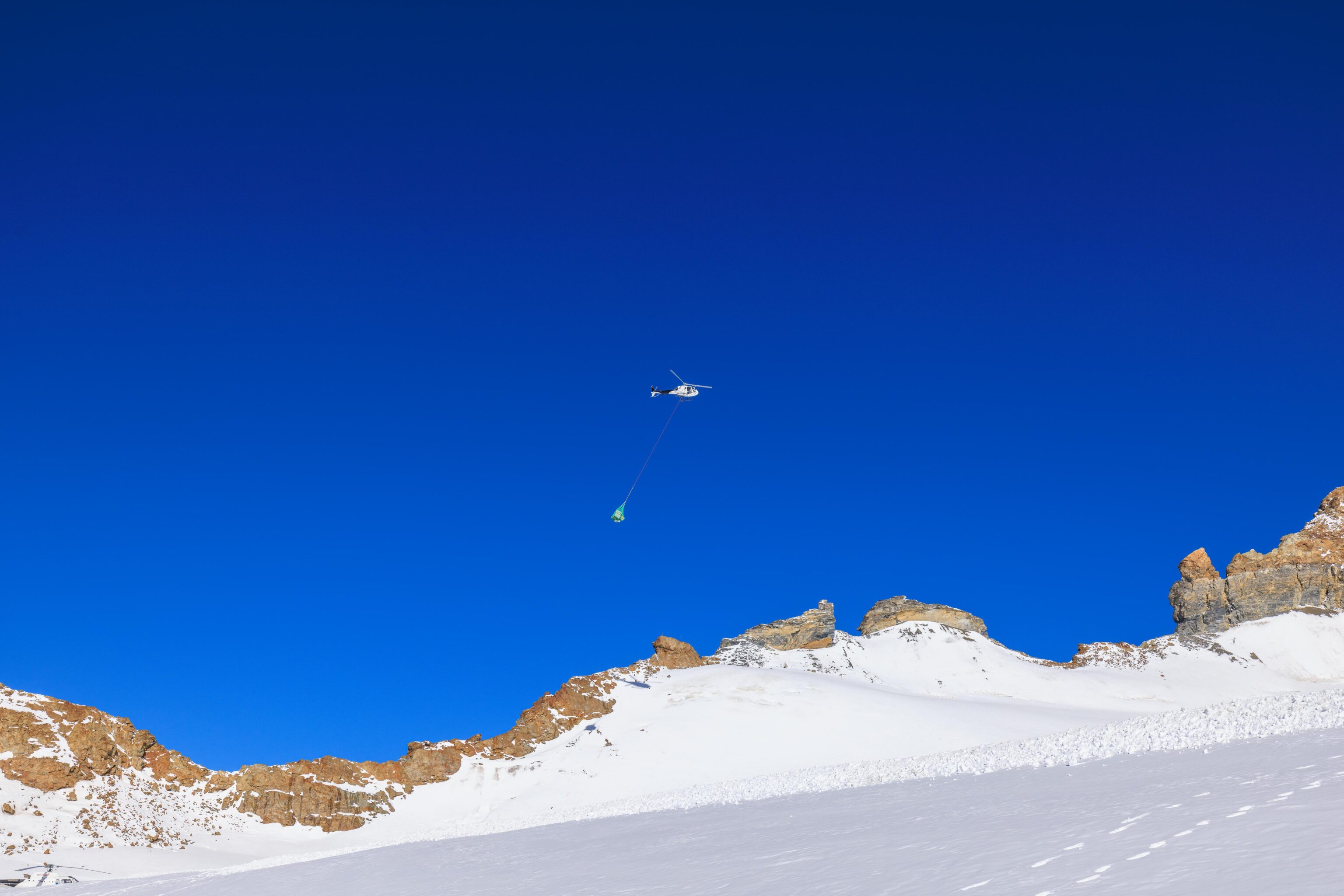
We saw this helicopter fly by, carrying a load to some destination to the east.
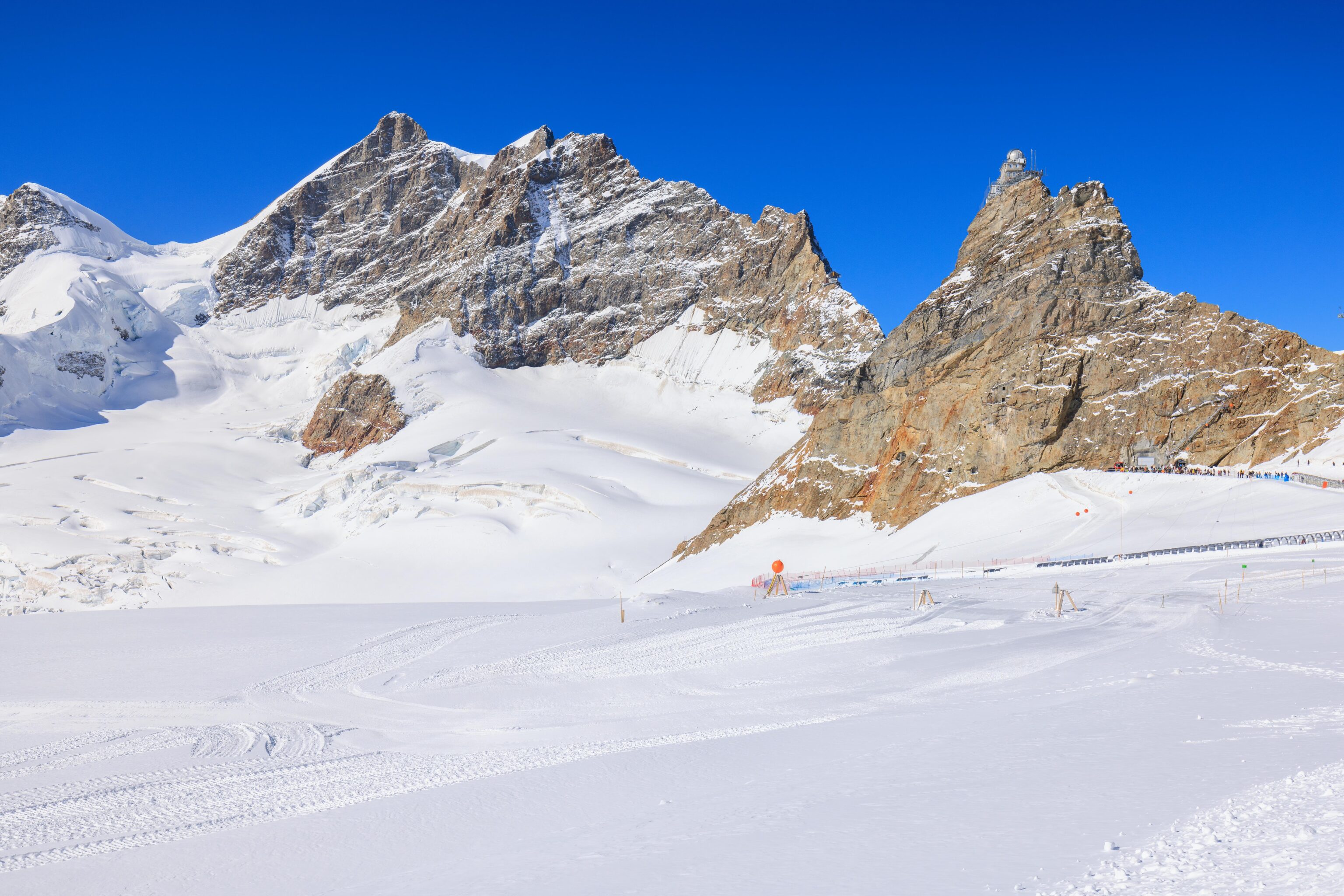
The wooden structures on the right are the lower ends of the zipline. The way it seems to work is that the zipline droops down right above the snow, and the rider drags their butt on the snow to stop! It is entertaining to watch!
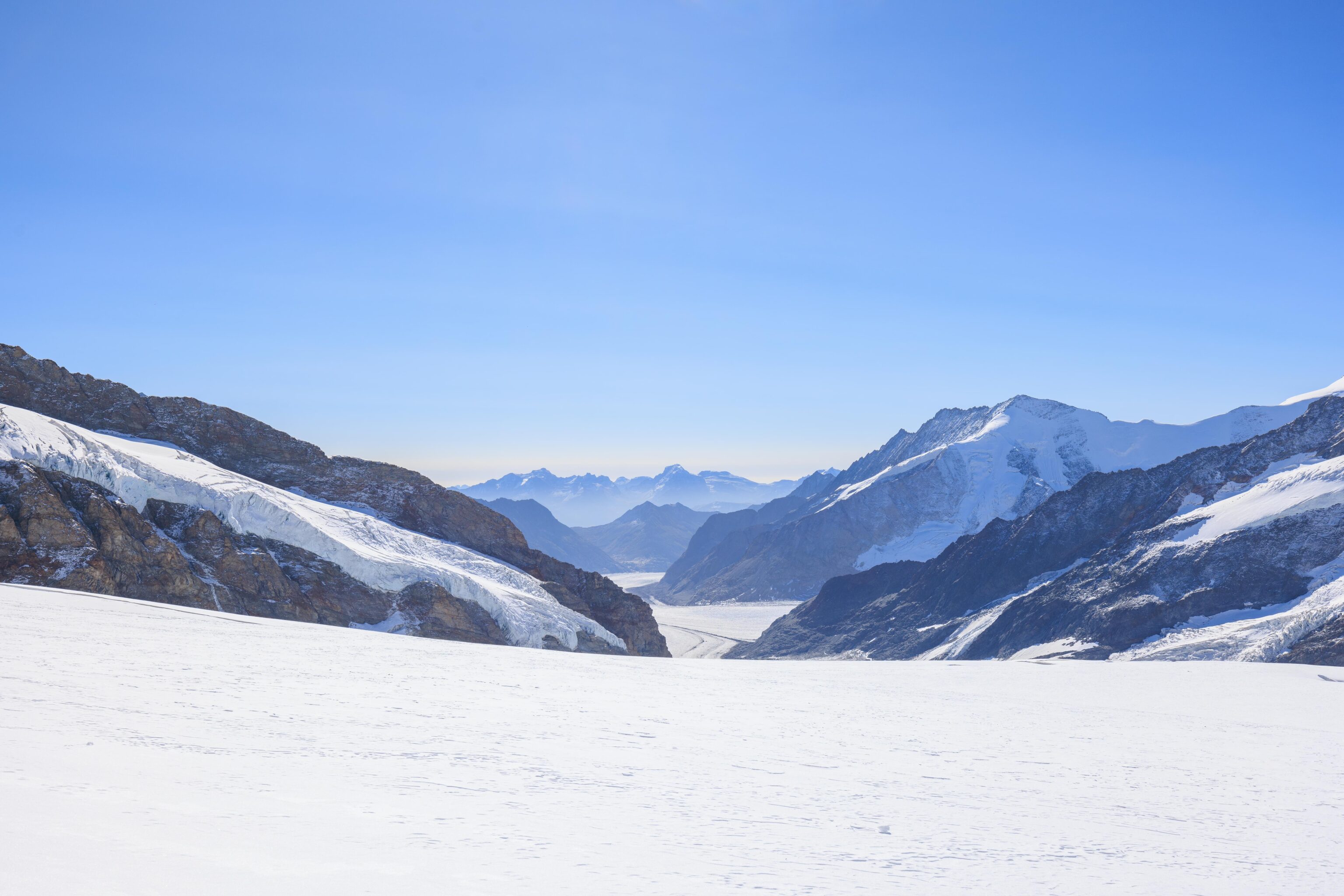
Looking to the south, or to our right in the direction of travel, we could see a bit of the Aletsch Glacier below.
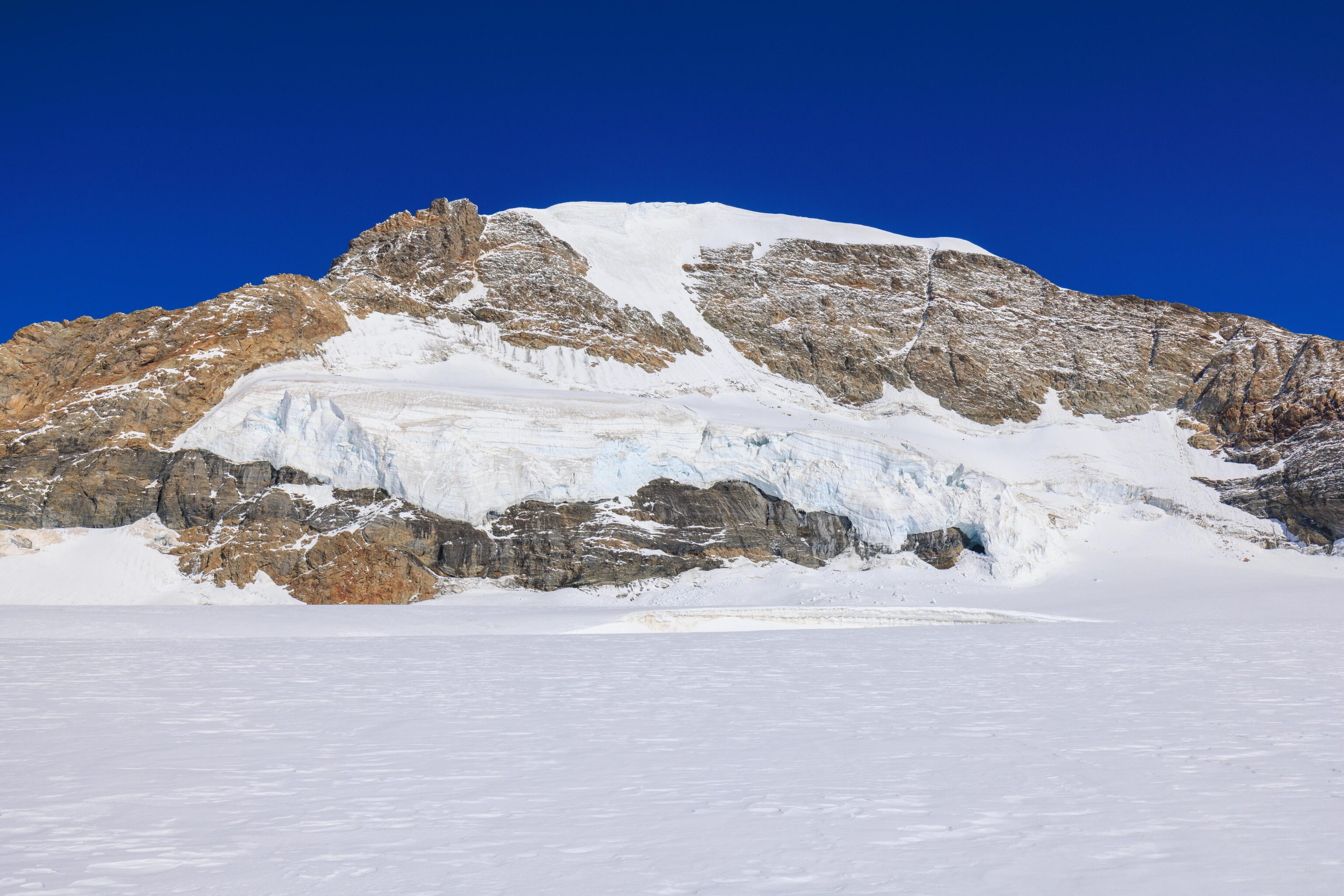
To our left, or north, was Mönch.
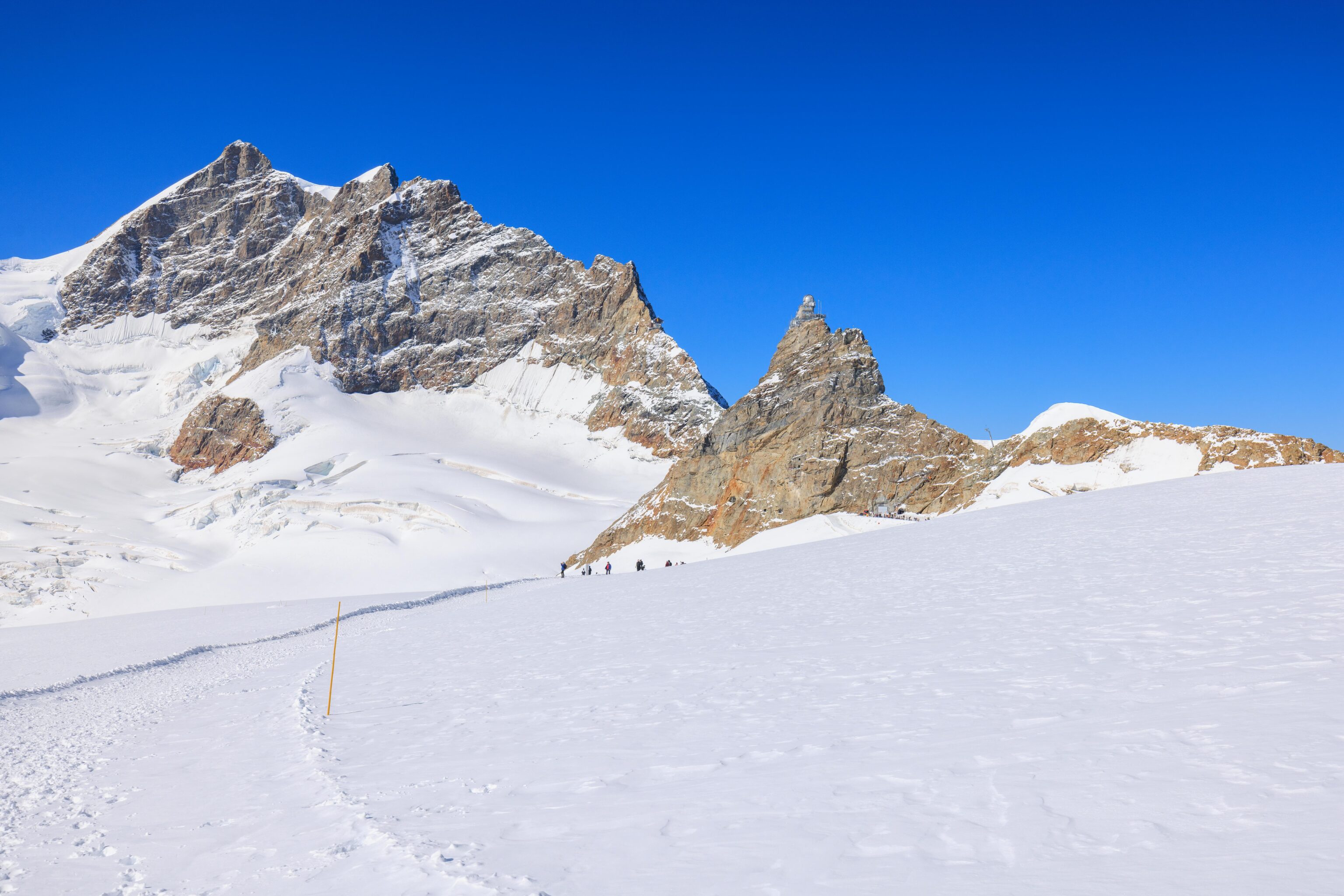
After walking for a bit, we could see the Sphinx Observatory on the peak above Jungfraujoch. There is also a structure on the east ridge of Jungfrau, it is visible directly to the left of the Sphinx. This is apparently a former transmission station and is currently owned by the Jungfrau Railway which hopes to develop it for tourist purposes. There is a small funicular in the mountain that leads to the station.
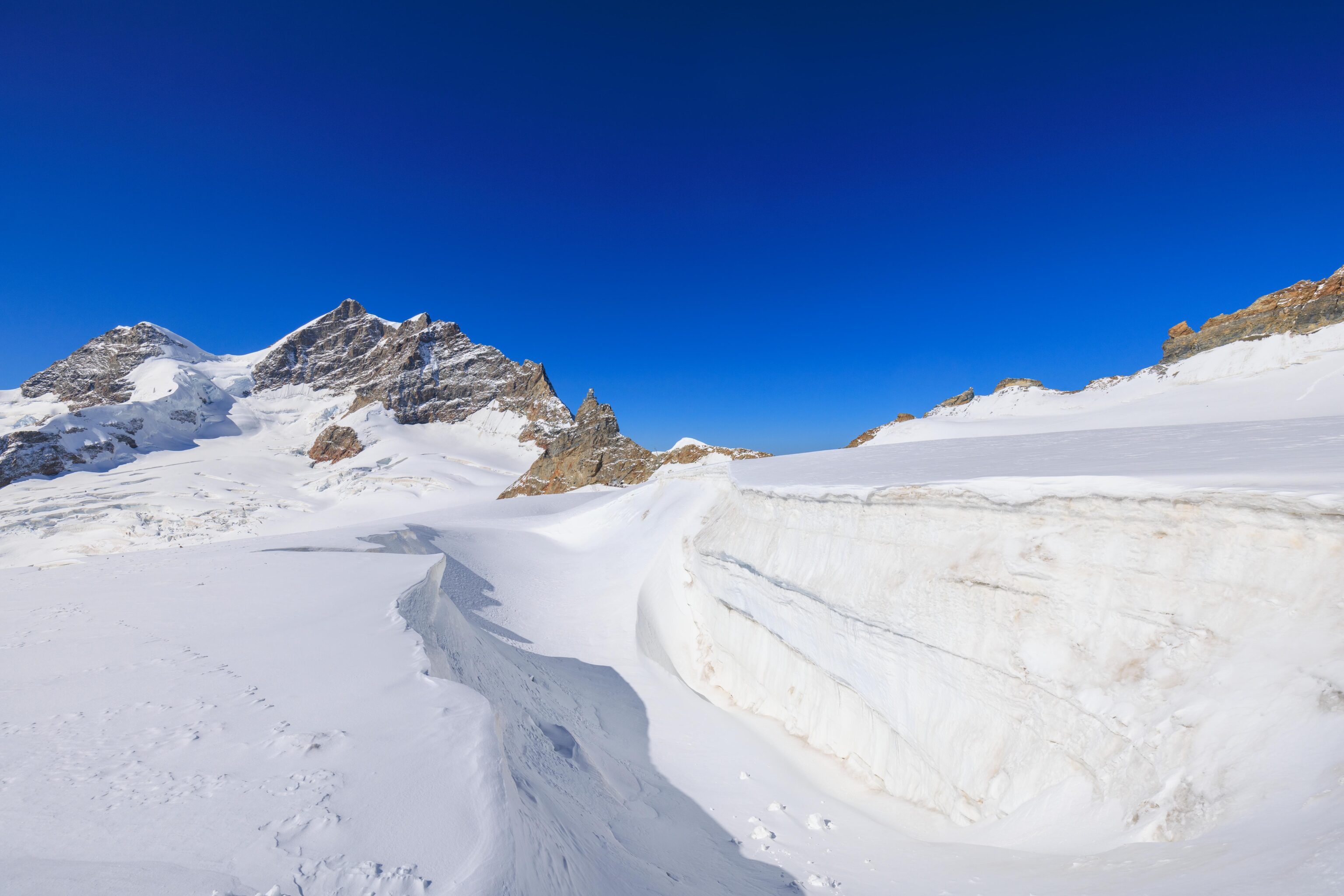
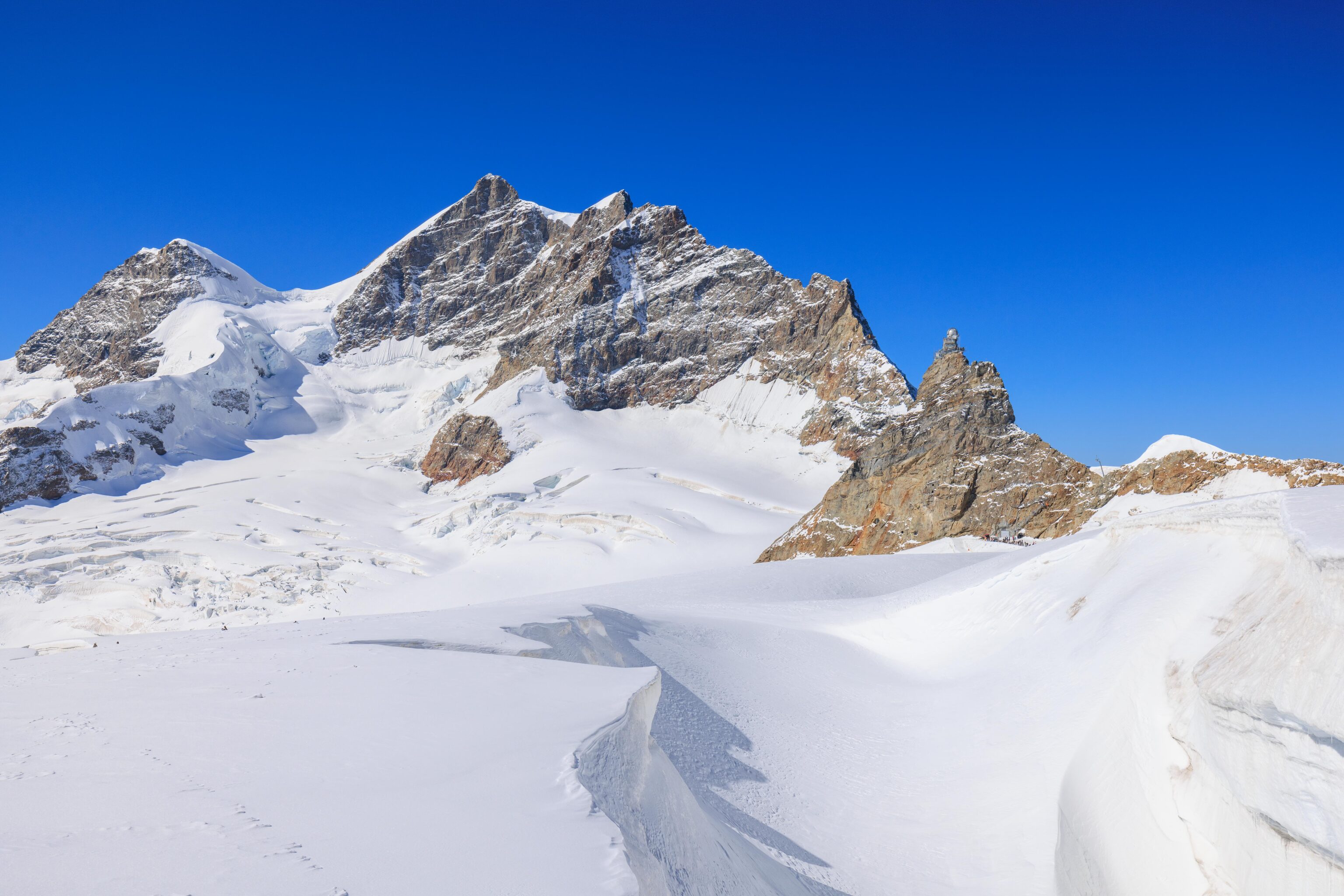
We passed by this crevasse. It seems that the snow trail was built by filling part of it in rather than trying to go around.
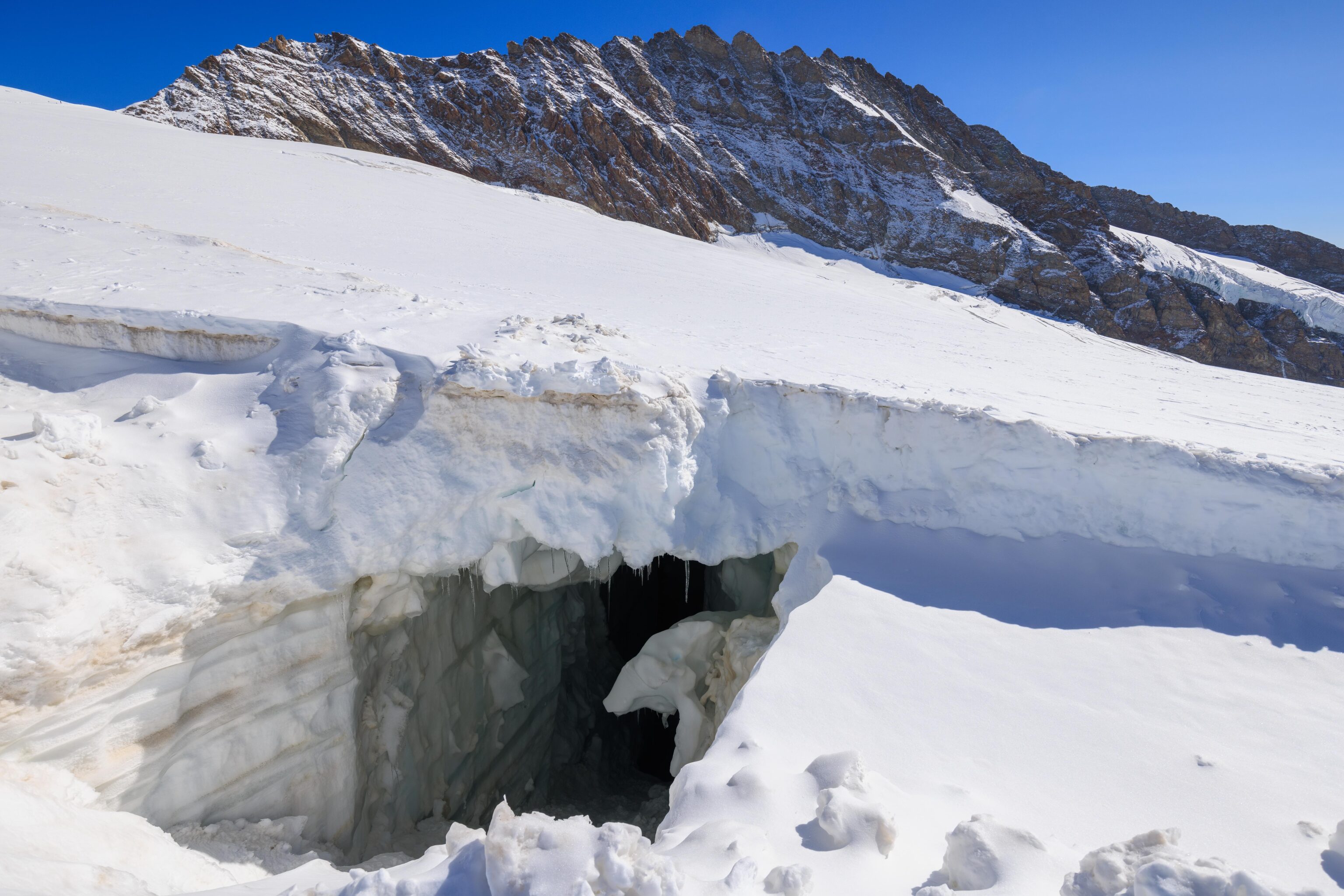
There is what can probably be described as a snow cave.
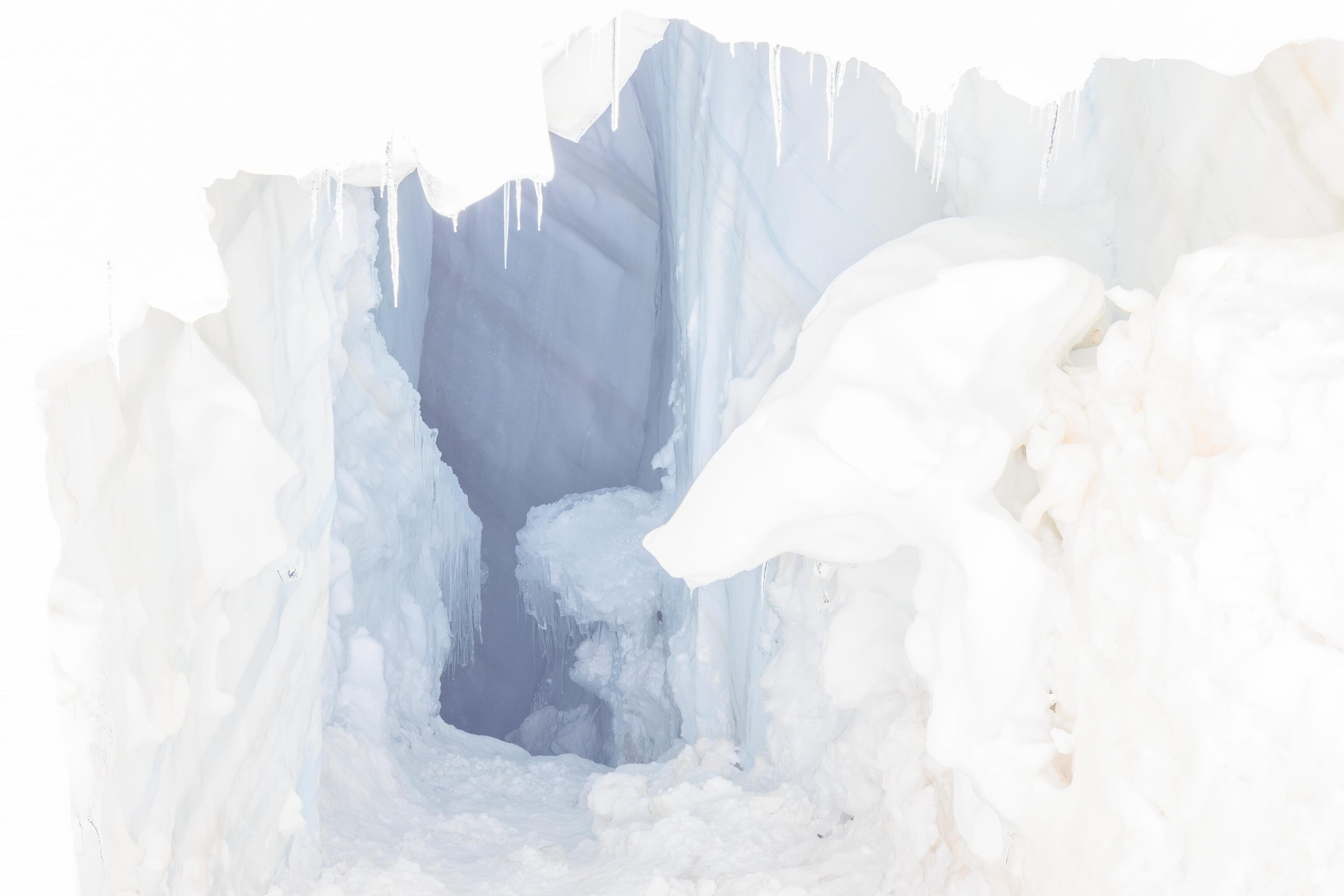
The cave, overexposed to show the walls inside.
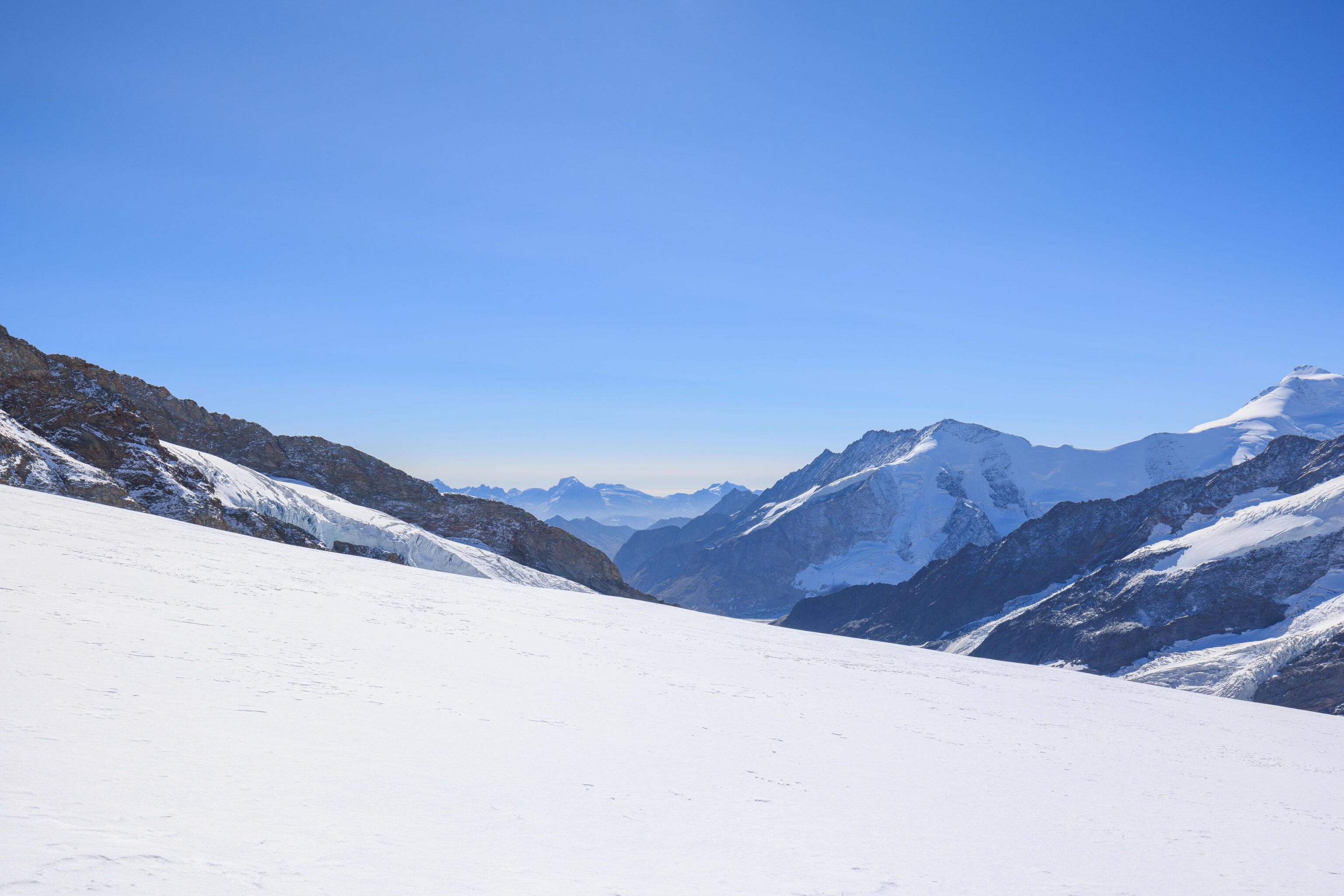
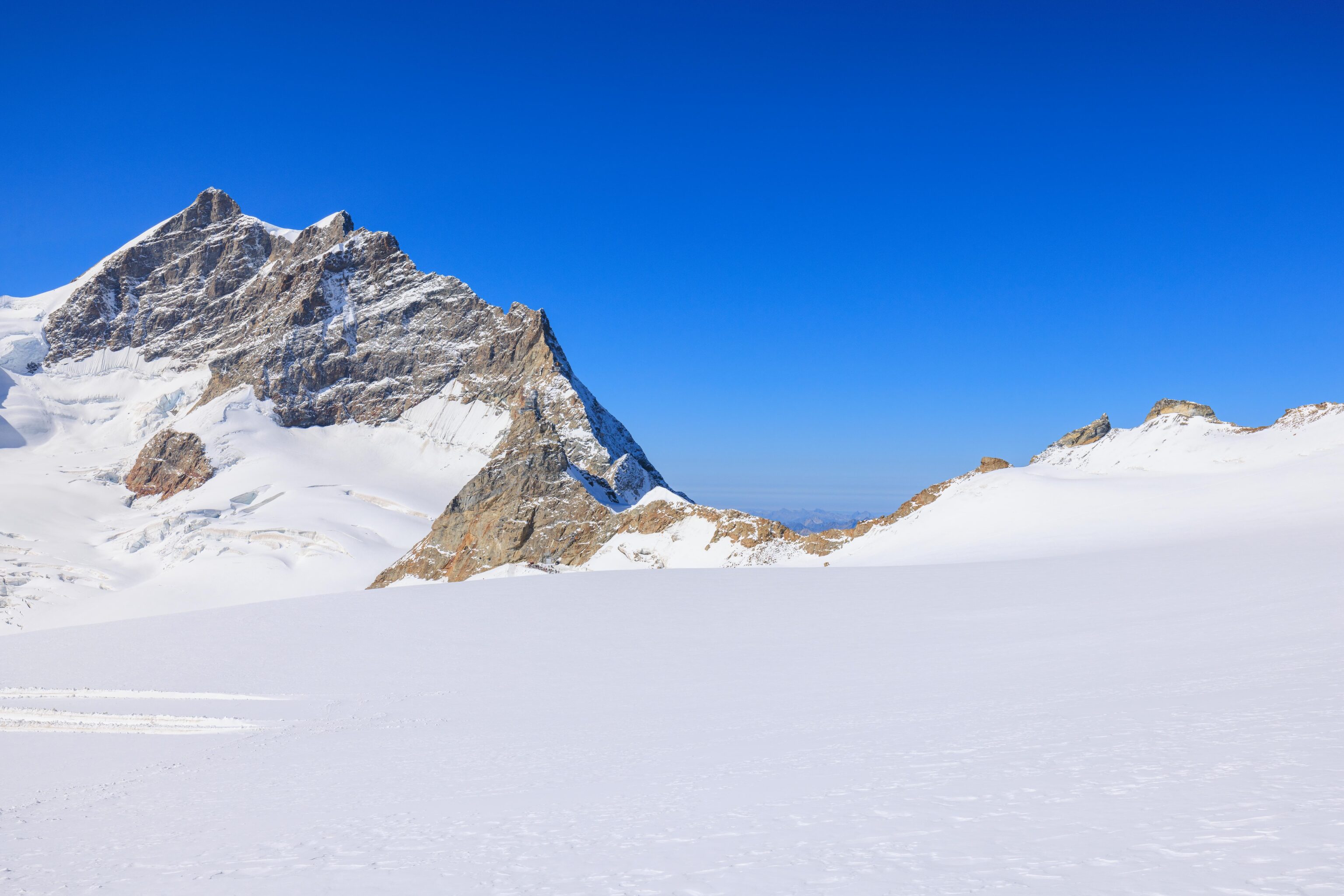
We continued onward.
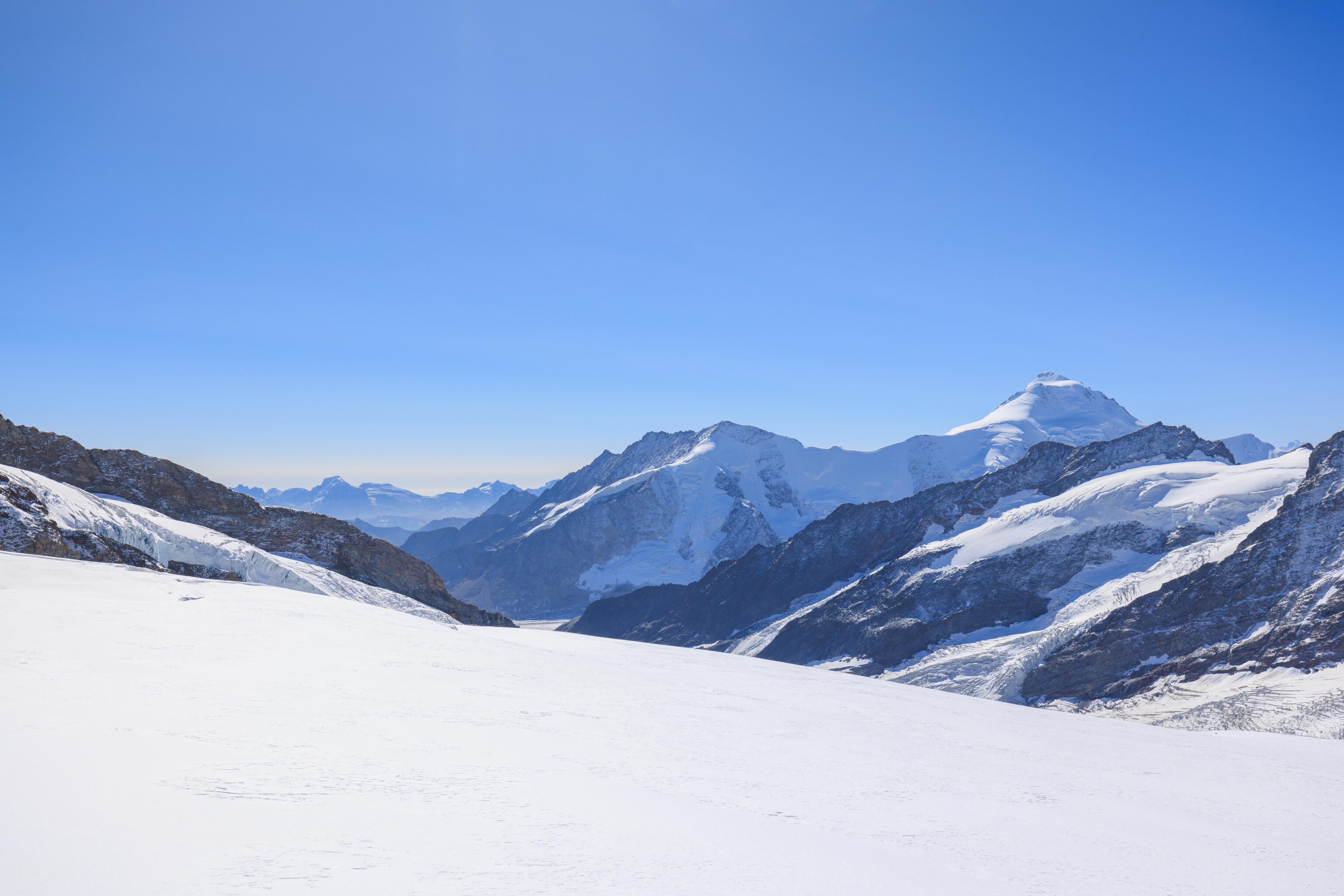
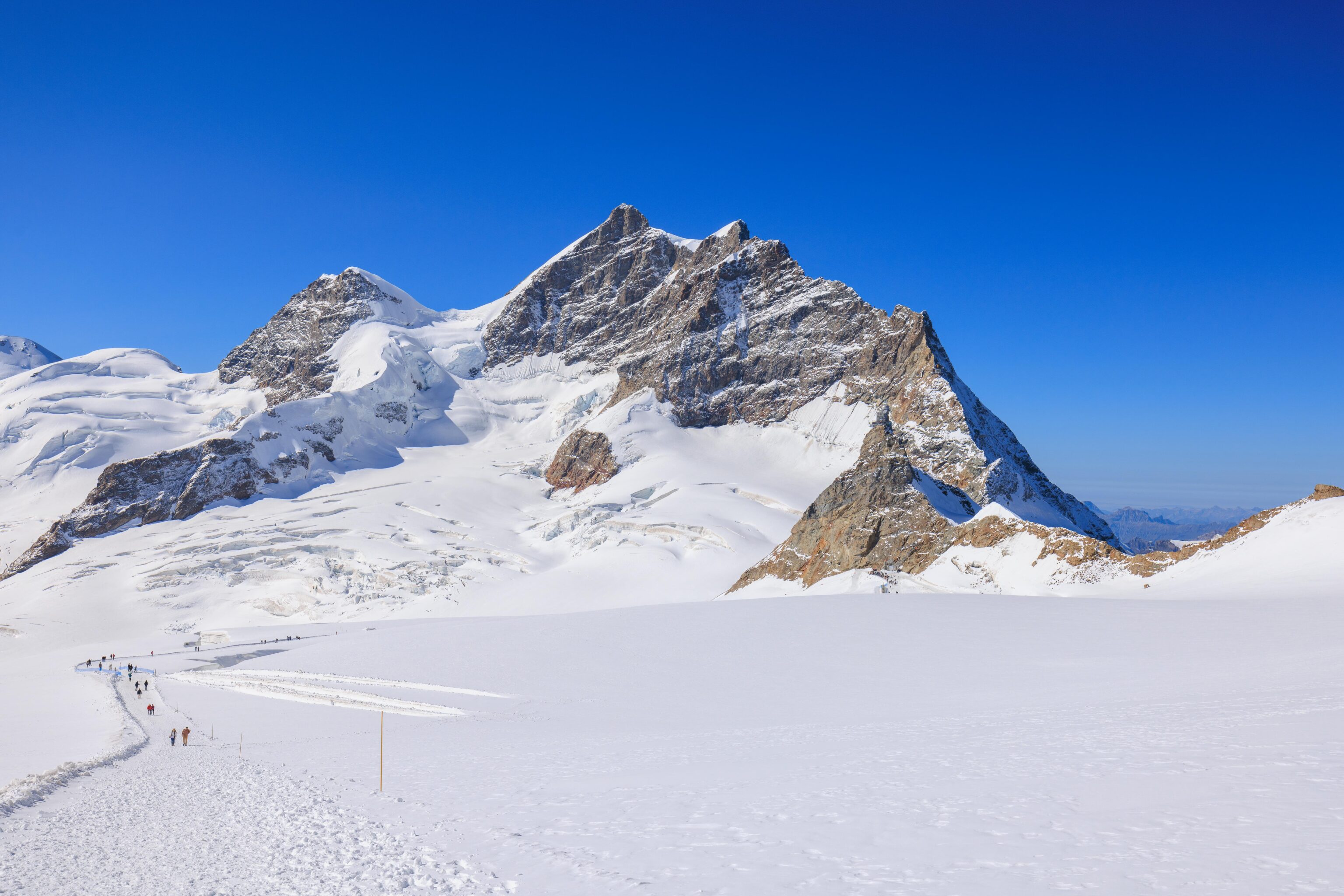
We stopped periodically to briefly rest and to take photos.
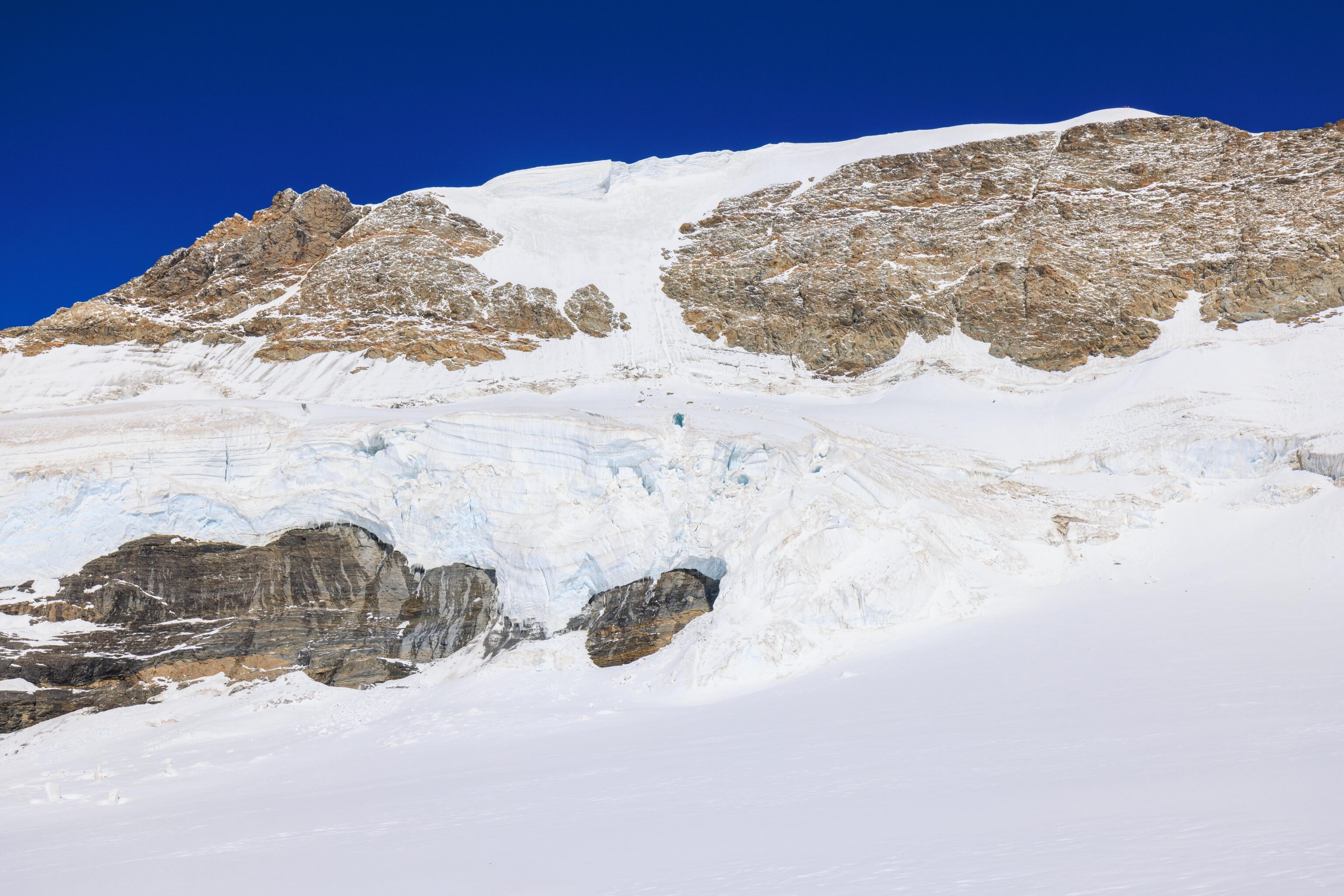
Some of the snow on the side of Mönch had a nice icy blue color. It is a bit hard to make out but there are three people up on the summit. They are all the way on the right, near the end of the snow on the peak. There seems to be at least one other person up there, to the left of the trio.
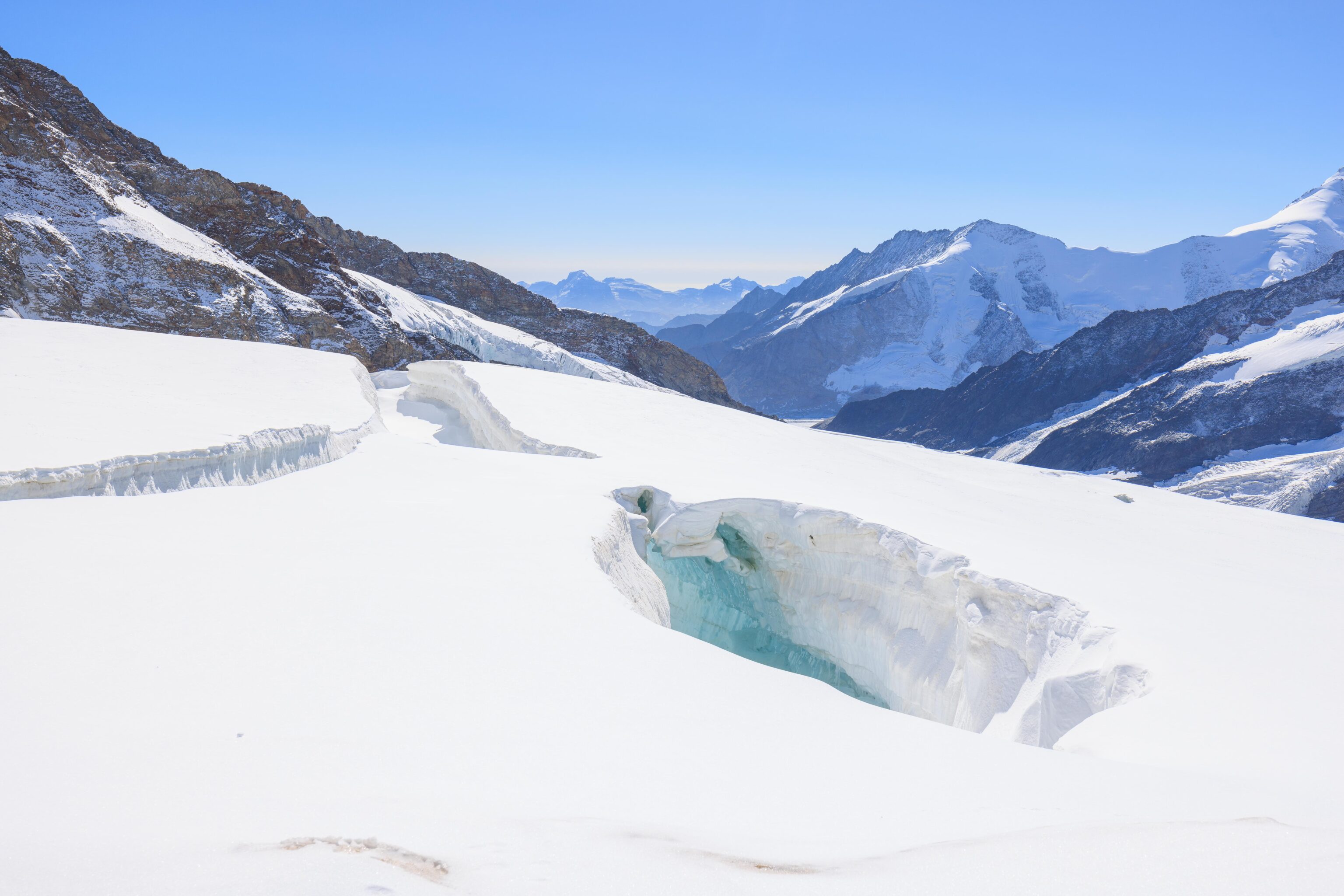
We passed by another crevasse.
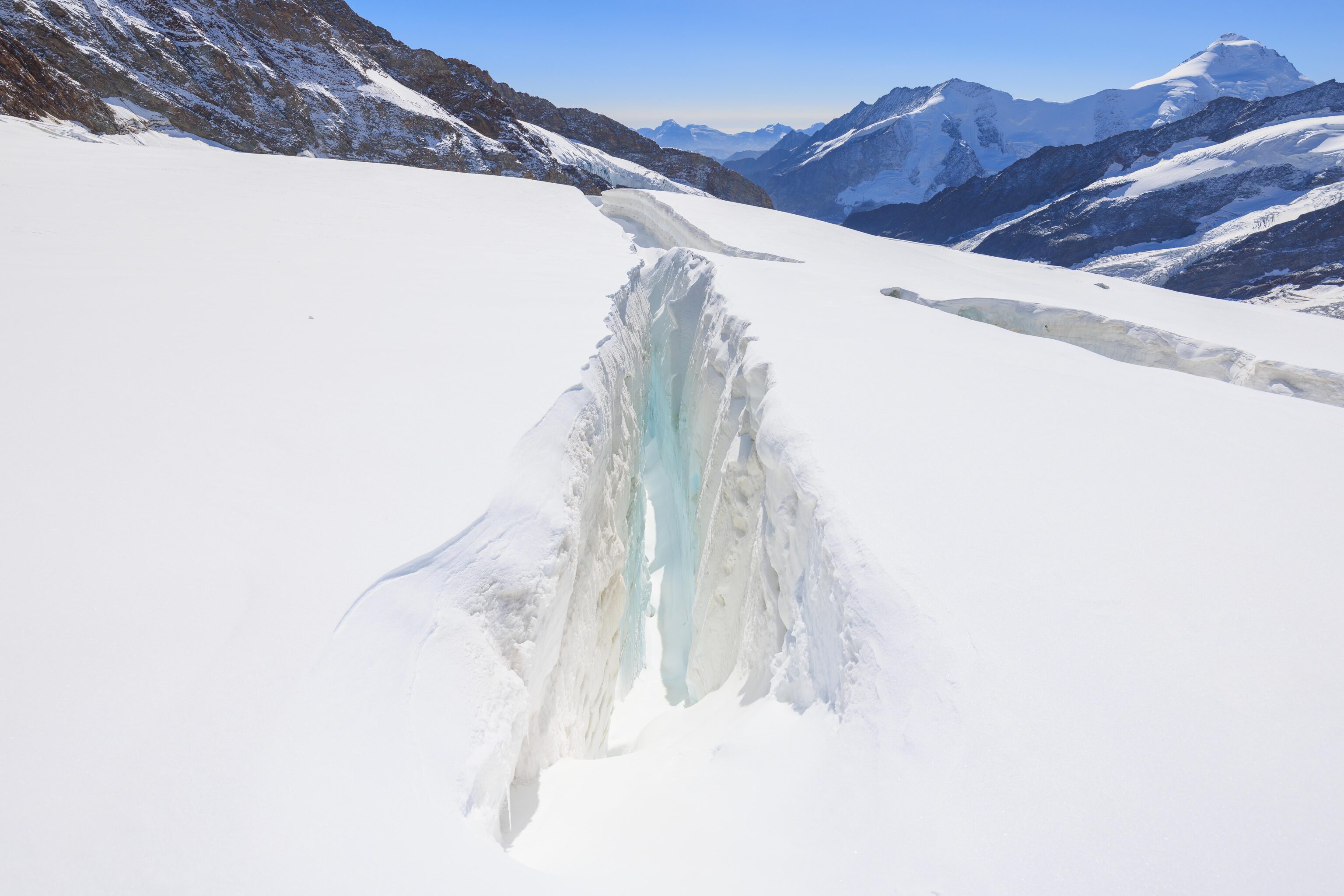
Definitely don’t want to fall down in there!
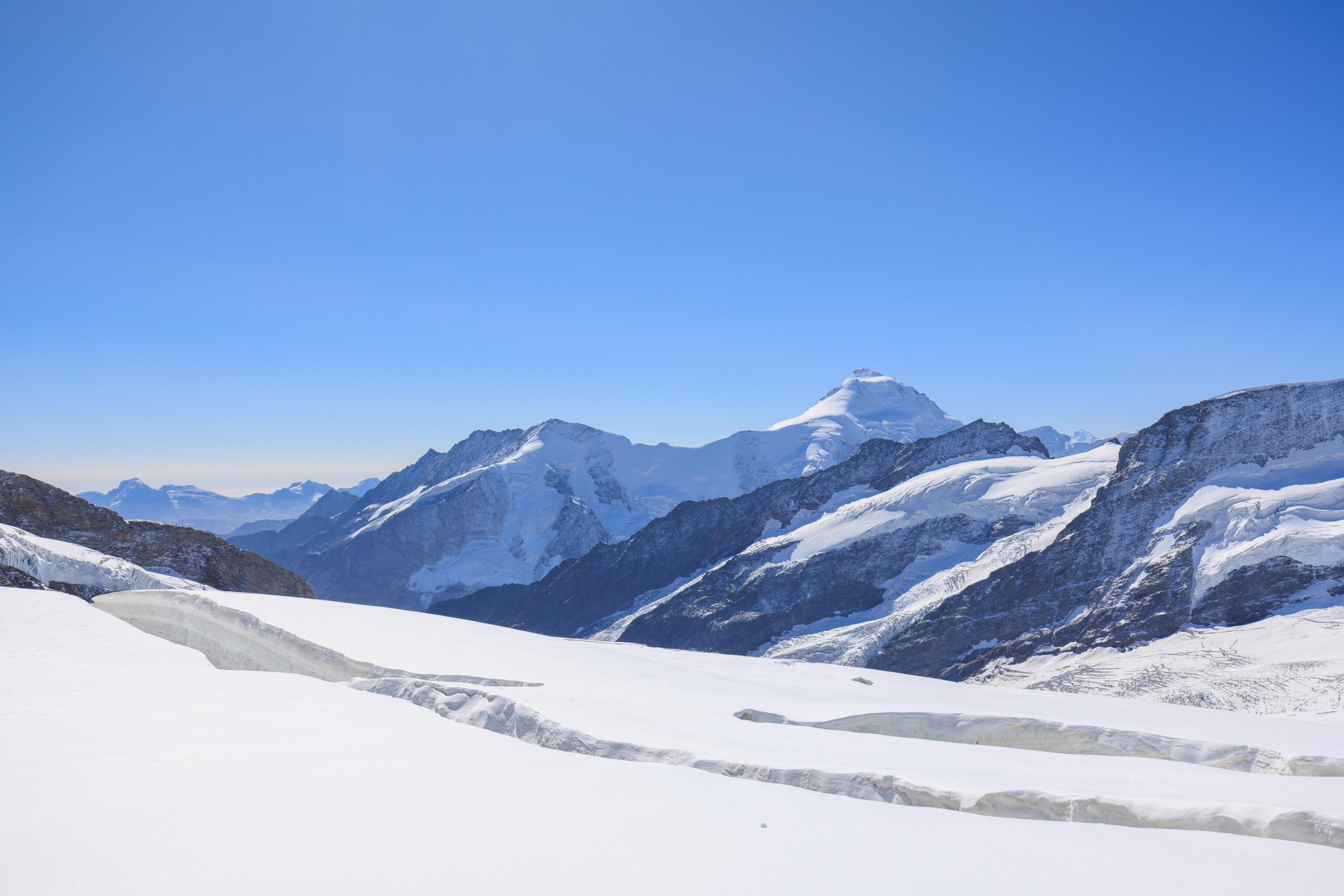
This set of crevasses was much longer than the one we passed by earlier.
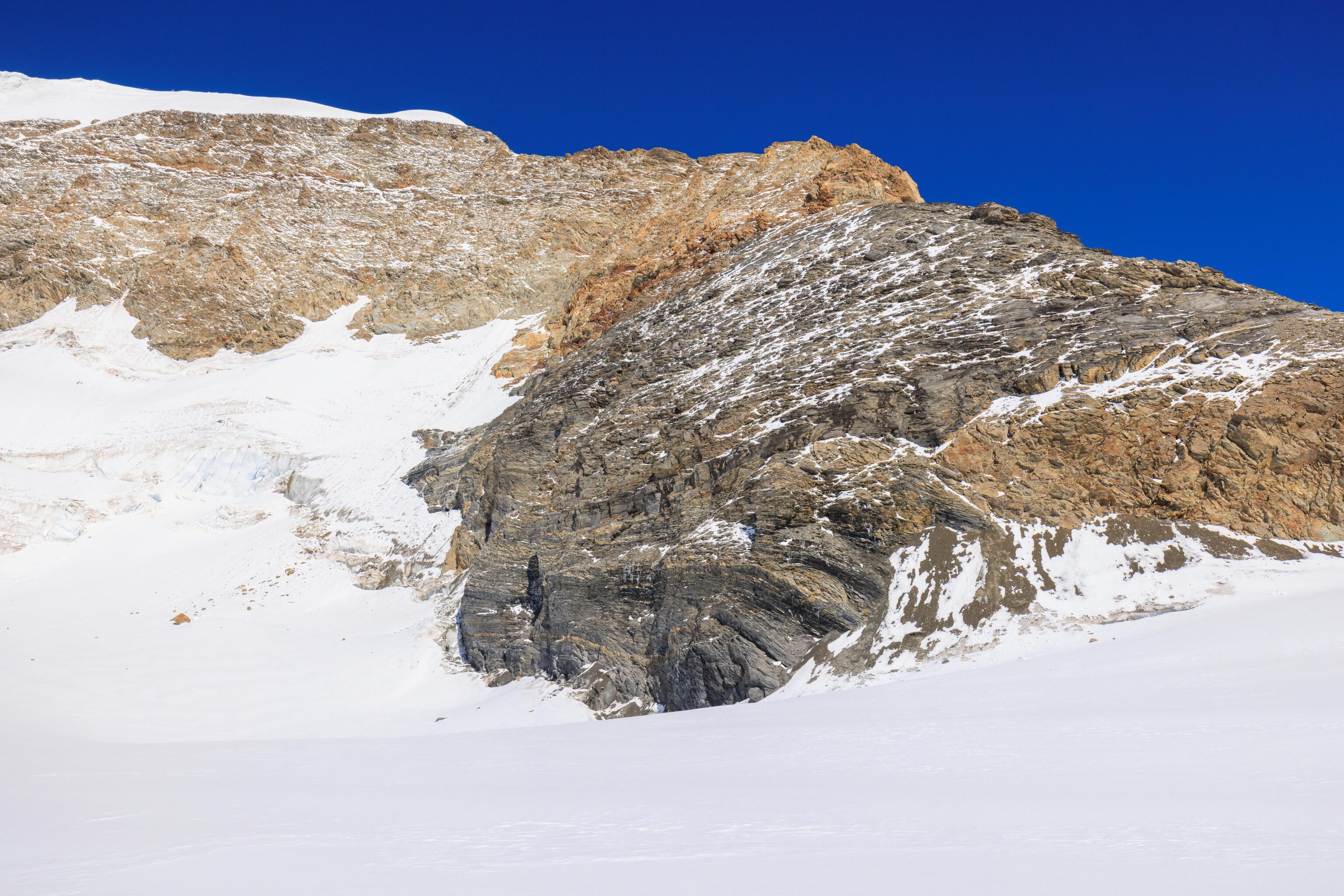
Looking back at Mönch, we can see five people up on the summit, near the left edge of the photo.
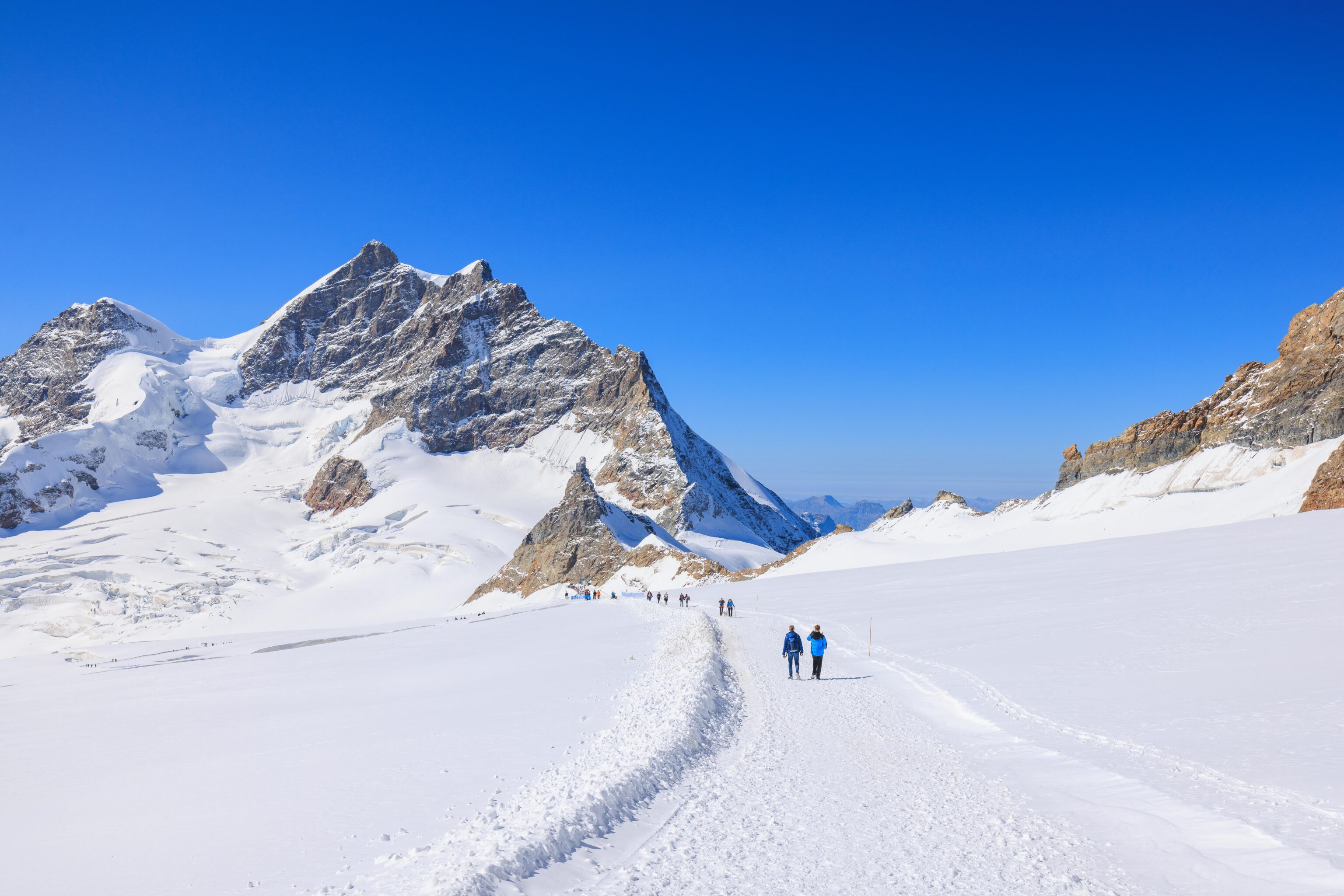
Looking back, we were now a bit above the Sphinx Observatory.
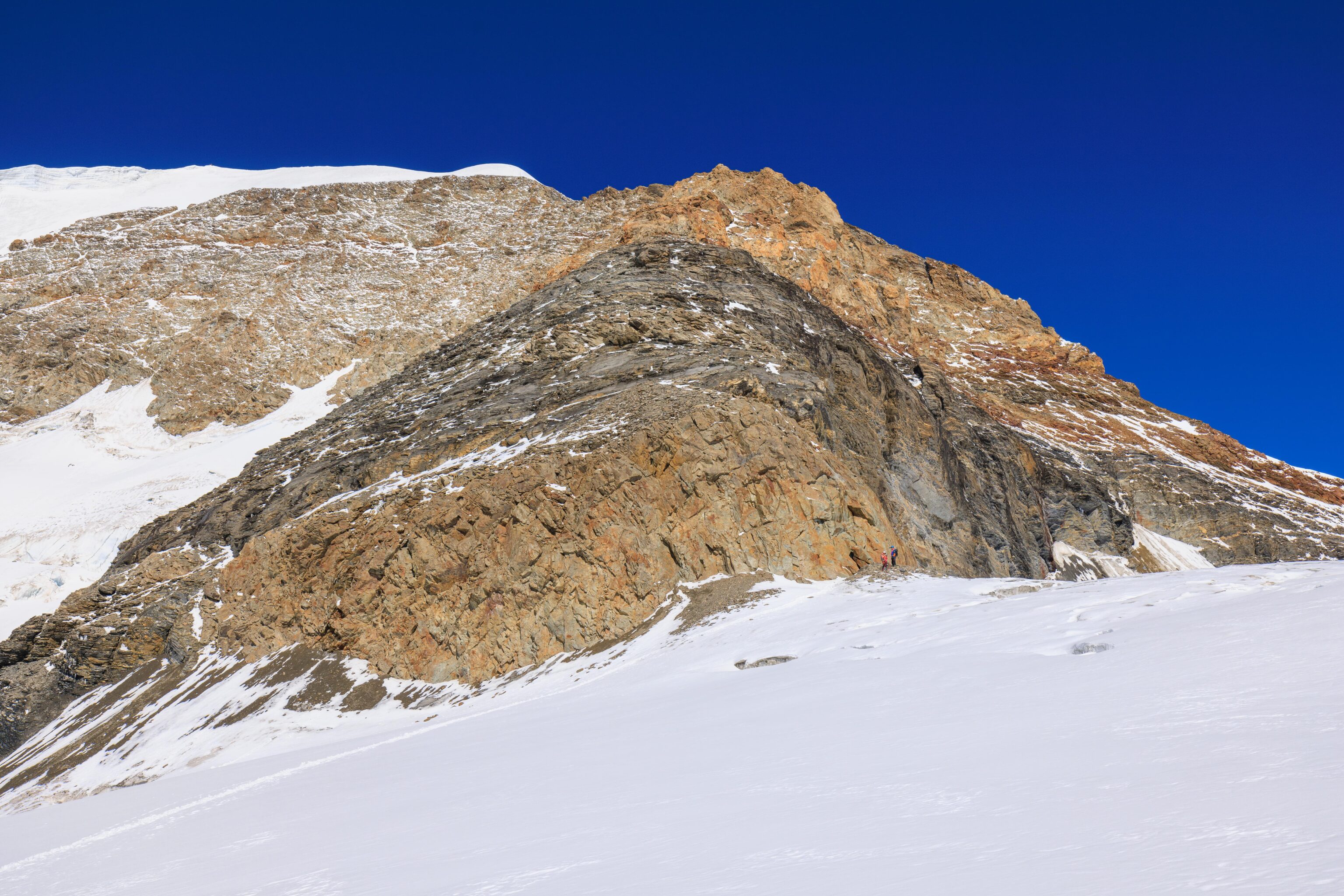
We saw two climbers getting ready to ascend Mönch. There is a small snow trail that leads up to what seems like it might be the start of a standard climbing route.
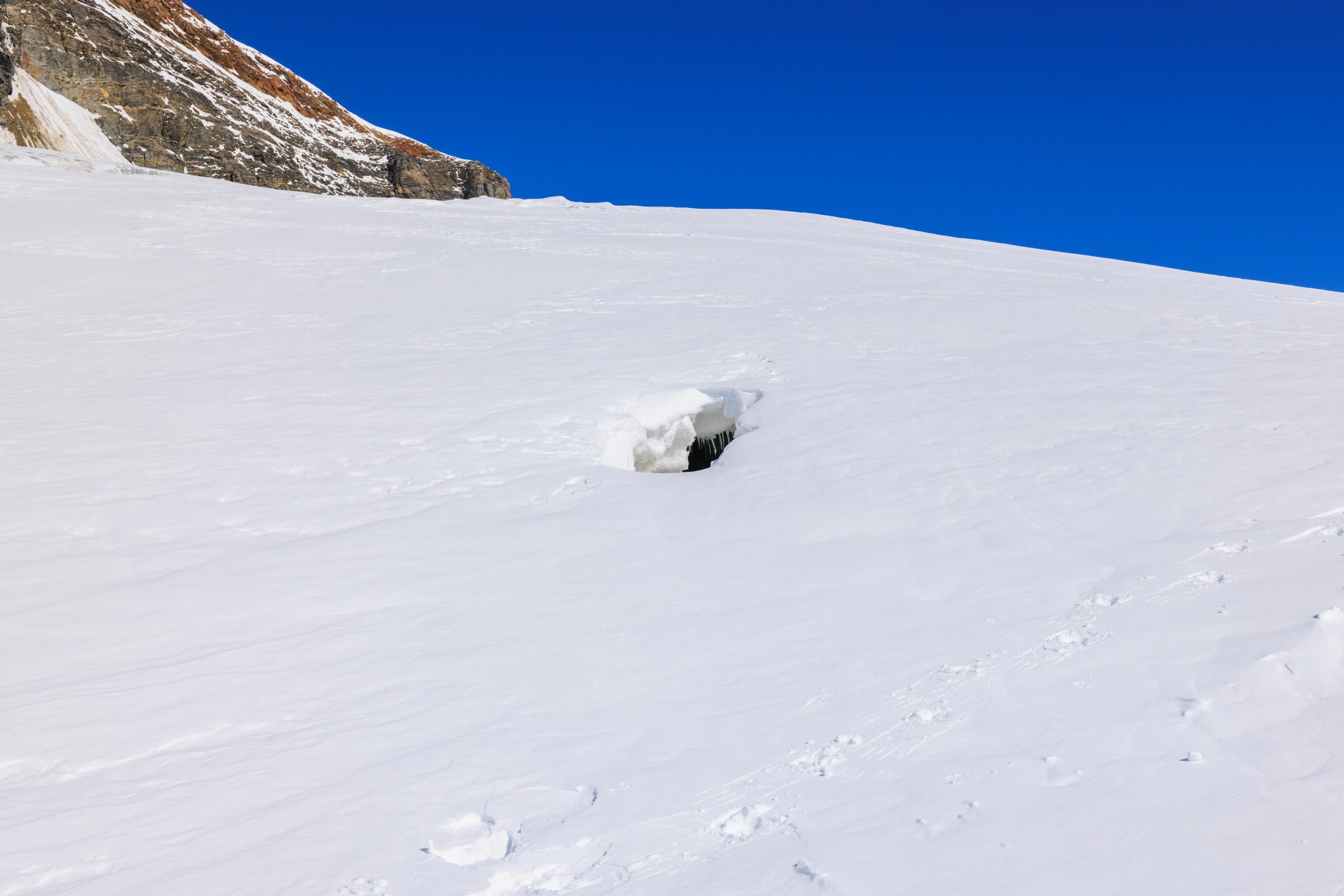
One good reason not to go wandering off trail…
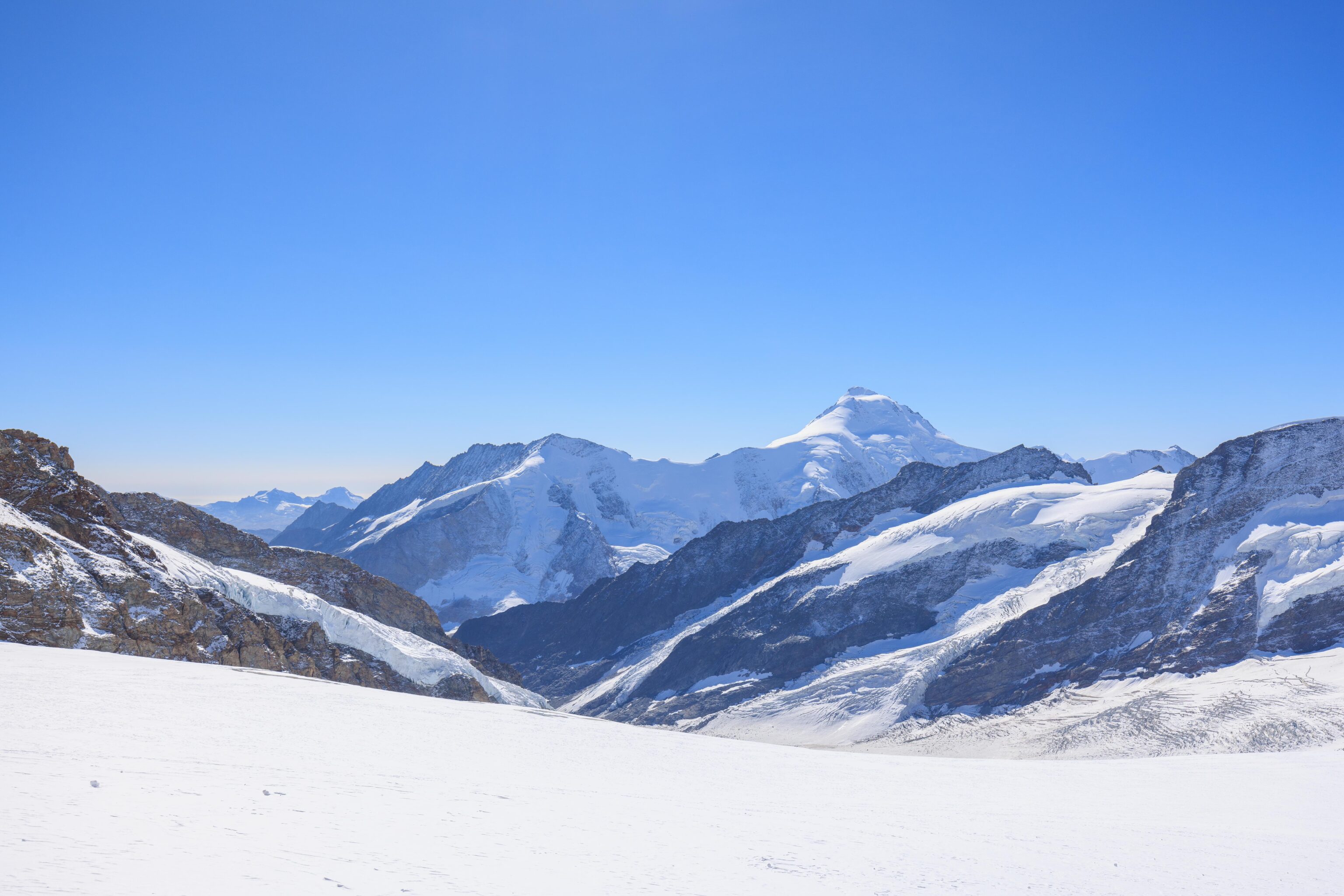
Looking to the south, the terrain masked the Aletsch Glacier. With our increased elevation, the Aletschhorn looked even more prominent than it did earlier when we saw it from the Sphinx Terrace.
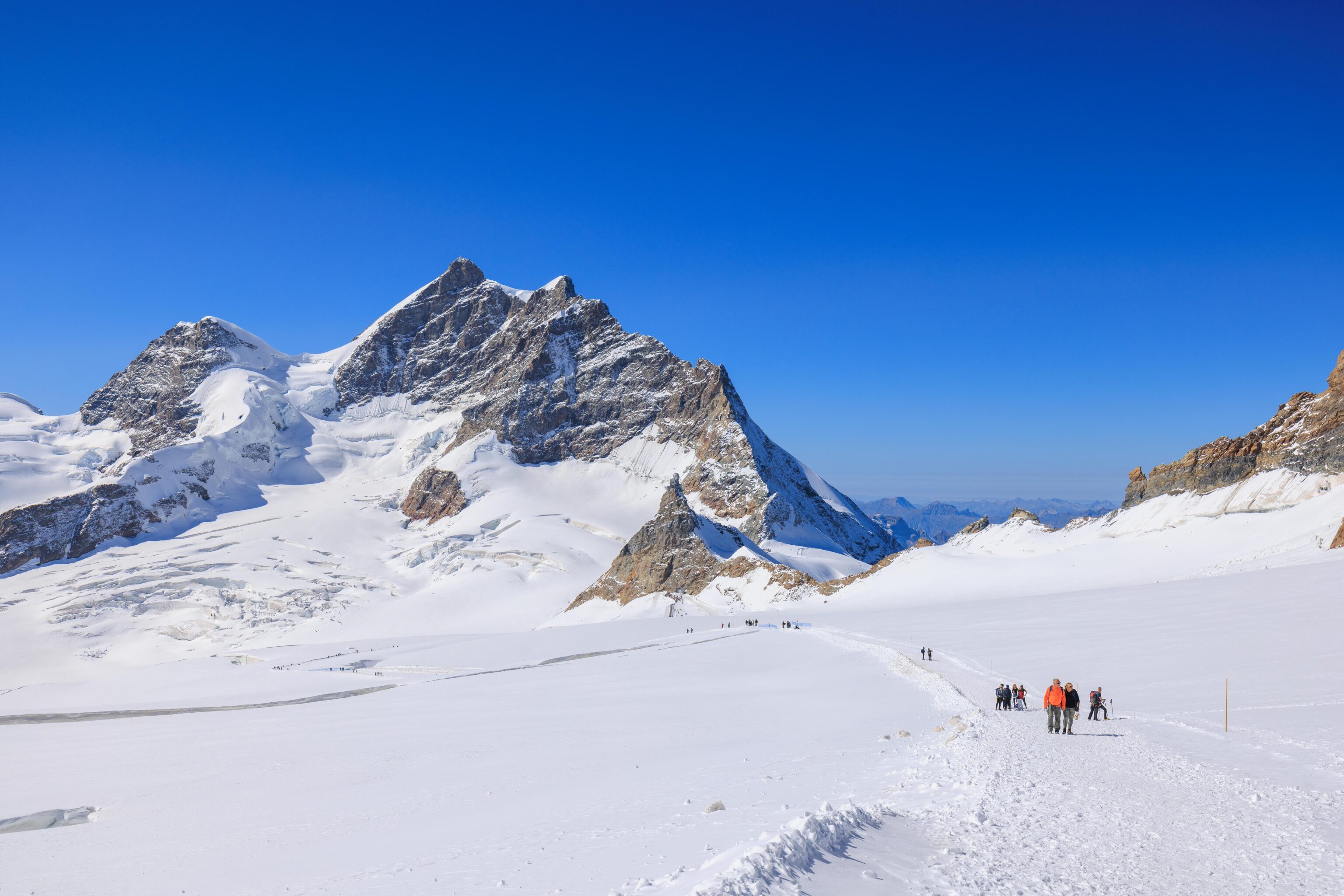
The trail was actually fairly popular. There was a constant trickle of people going in either direction.
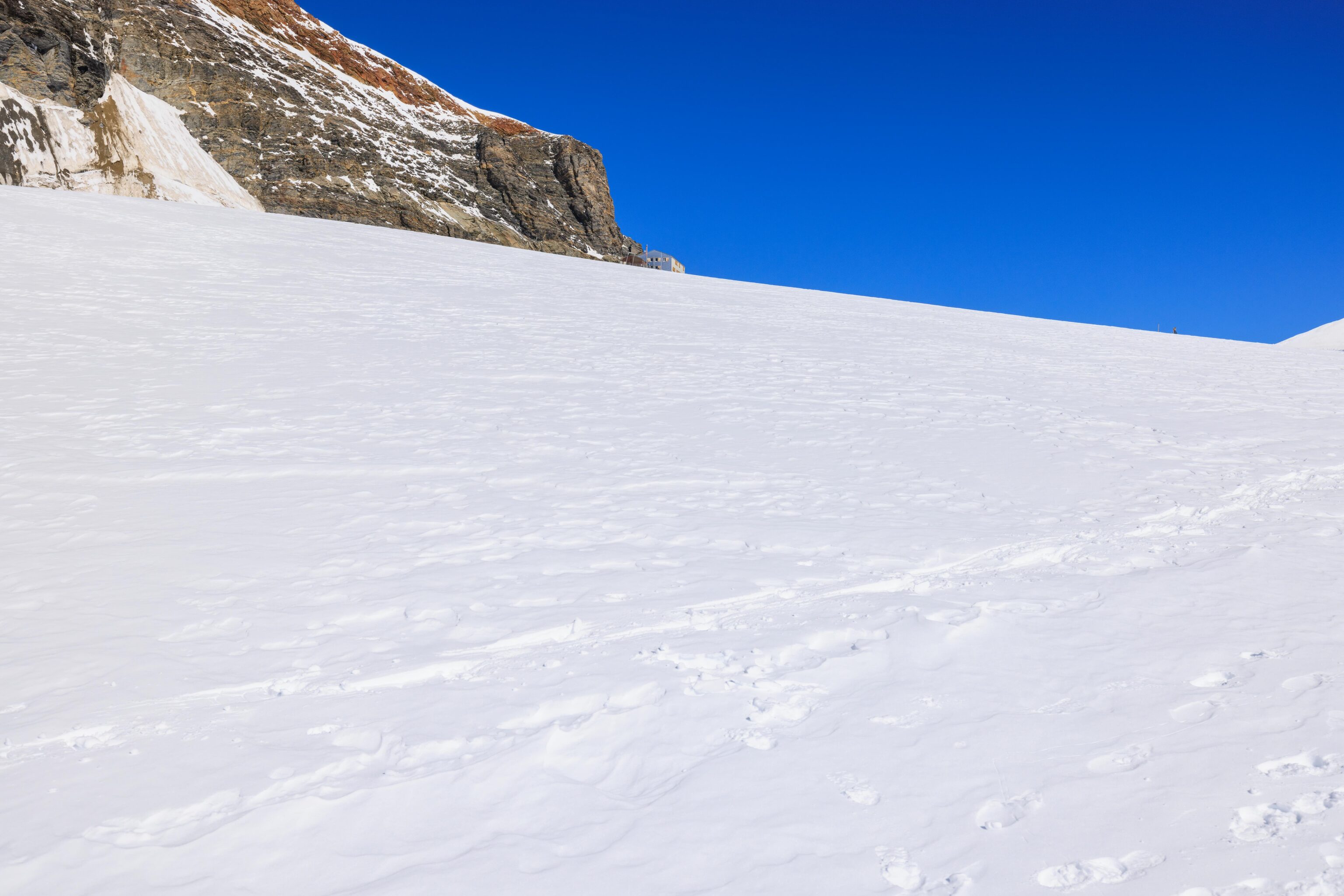
We soon noticed a structure up ahead, on the southeastern ridge of Mönch.
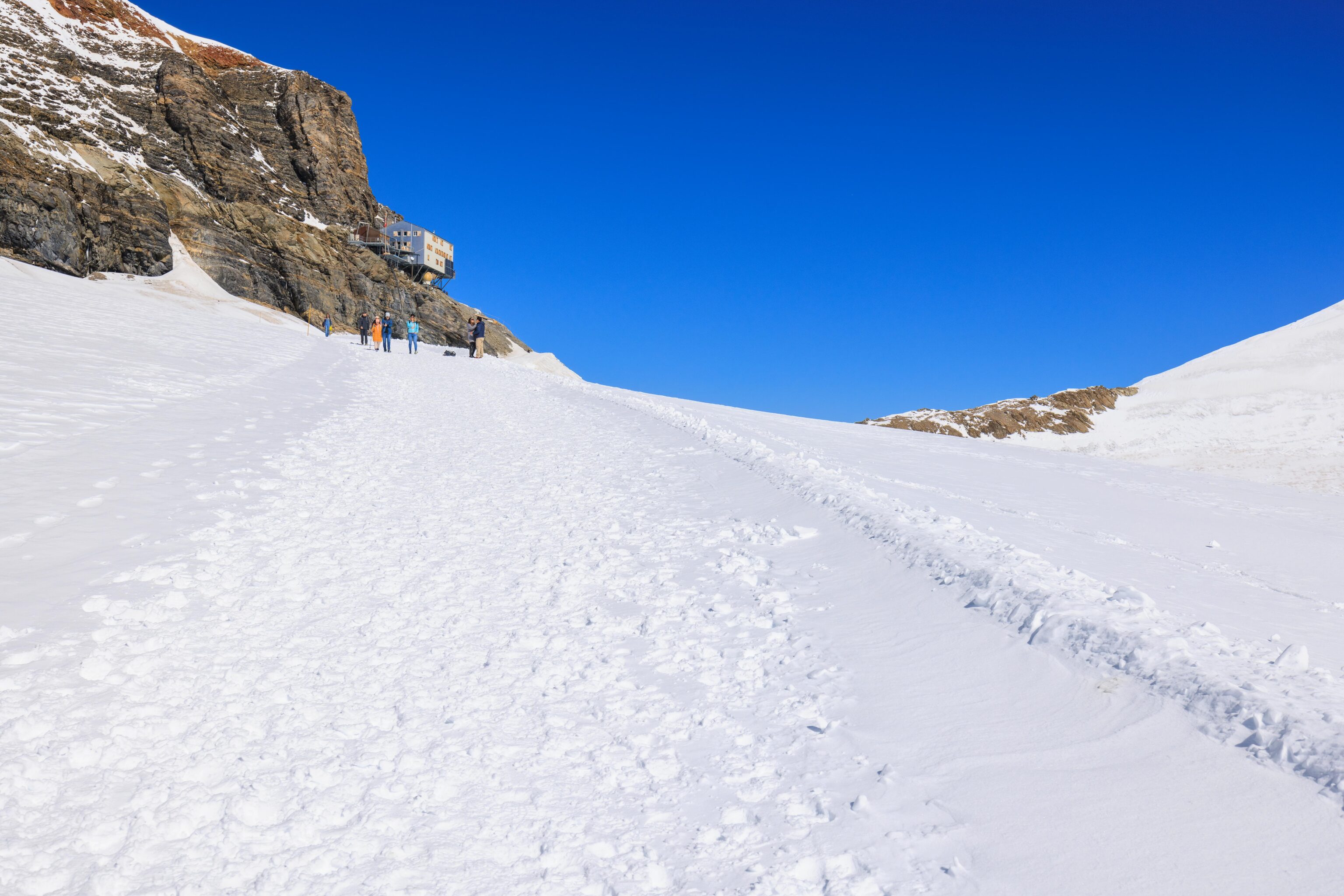
We didn’t expect to reach the Mönchsjochhütte due to the TV display indicating it was possibly 3+ hours away! Though, we could have determined its location easily by just looking on Google Maps, particularly as cell signal was never a problem.
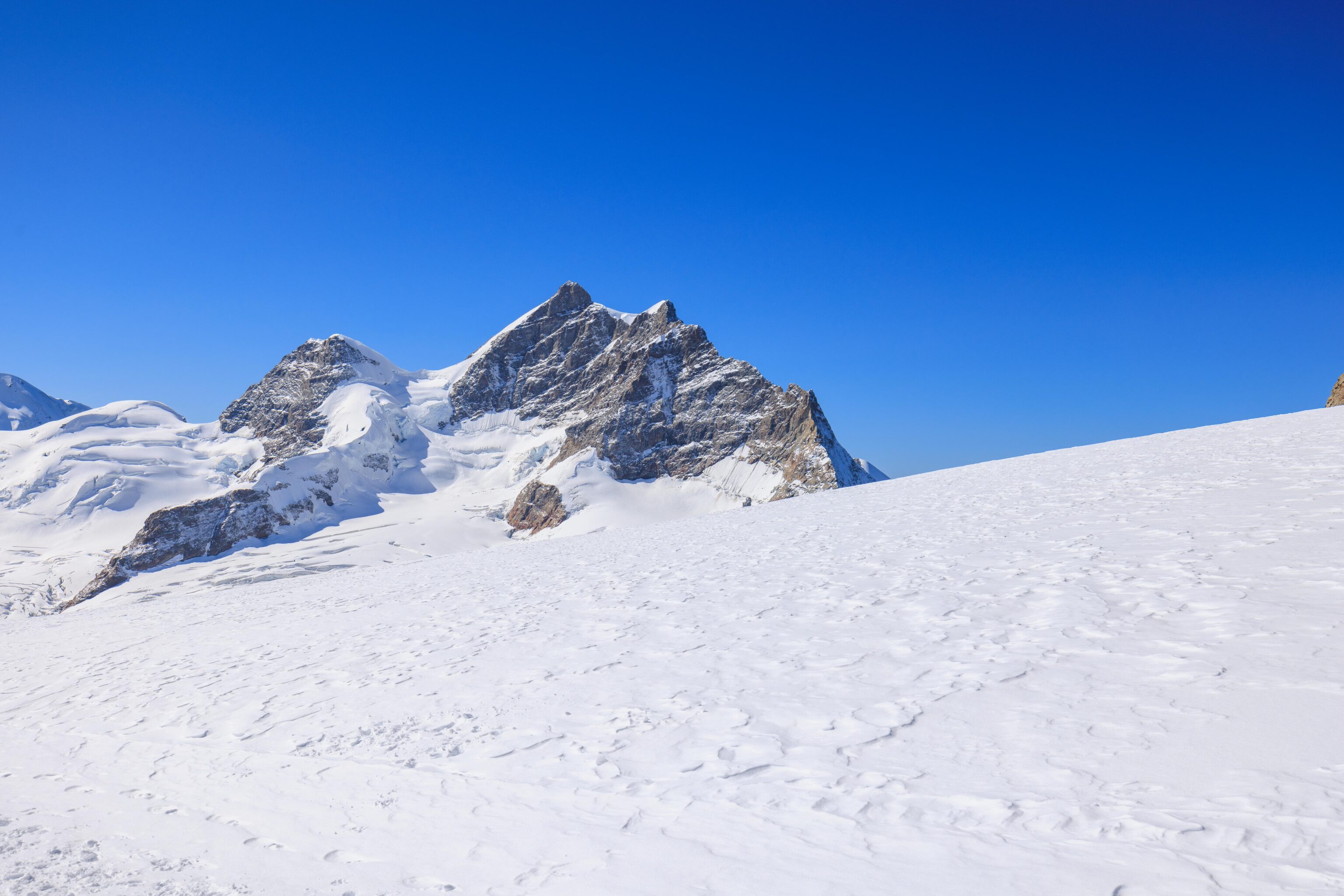
The trail climbed as we got closer to Mönchsjochhütte. Behind us, the Sphinx Observatory was about to drop out of sight.
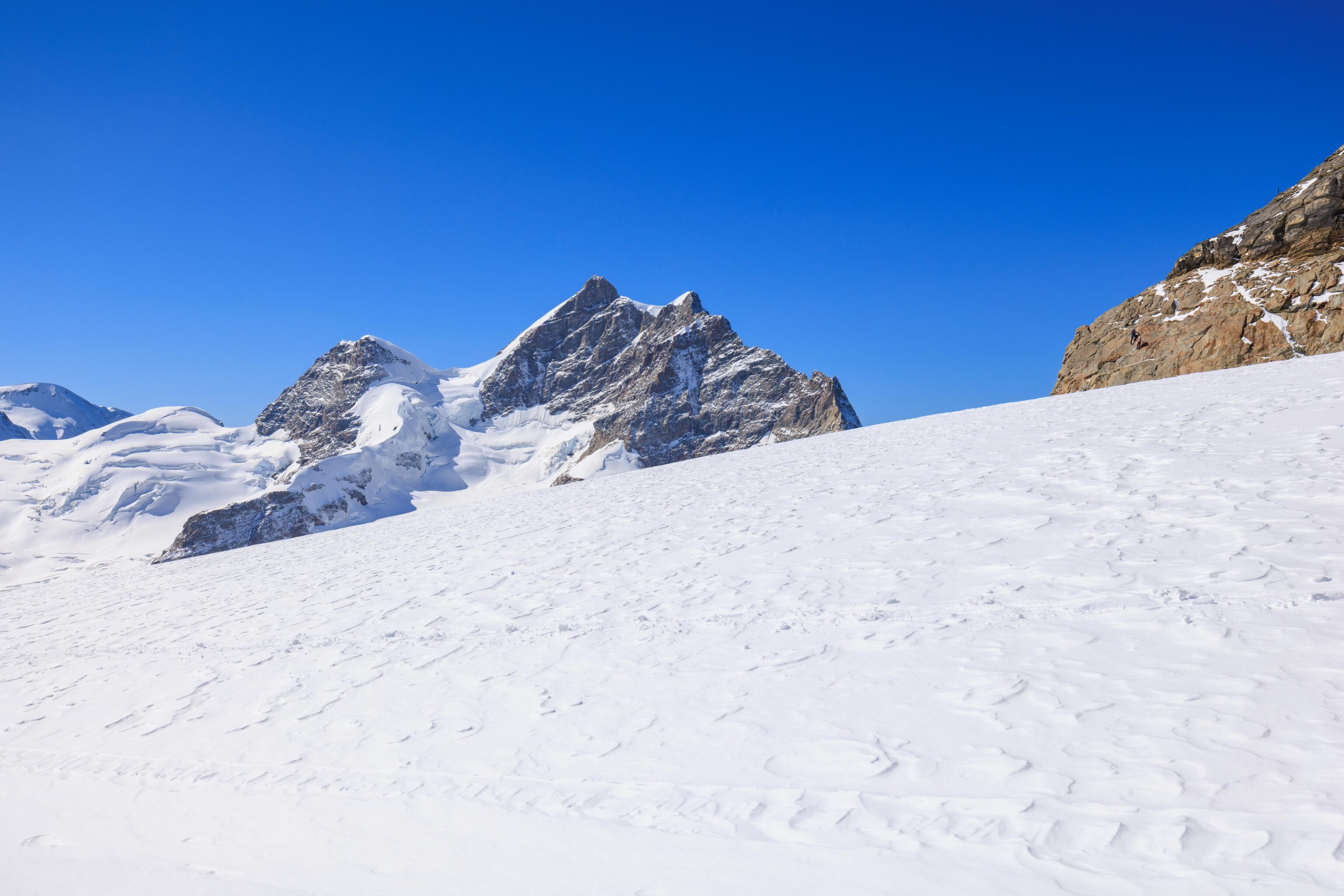
No more Sphinx!
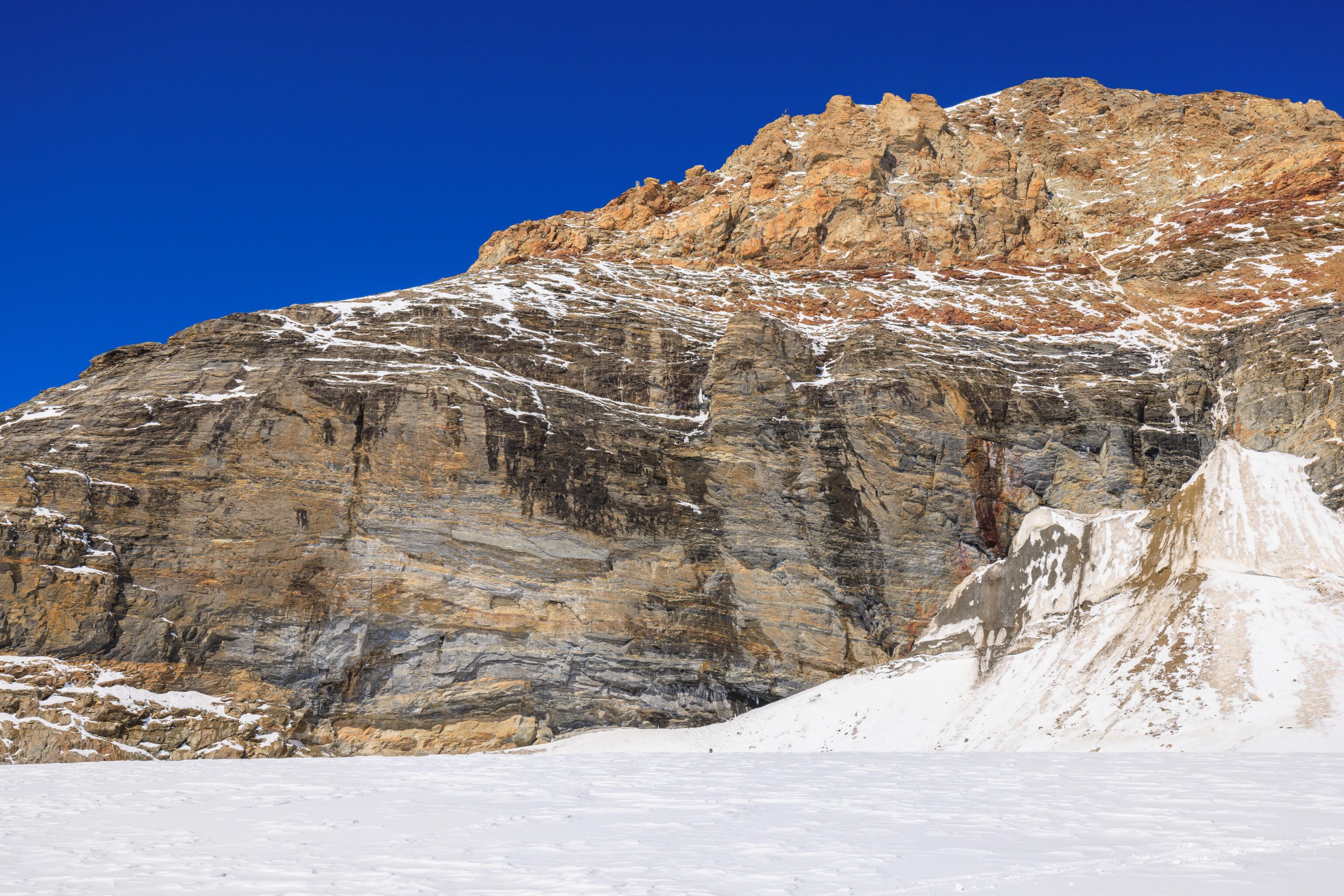
Mönch looks quite different from this perspective. There are two people up on the rocks above.
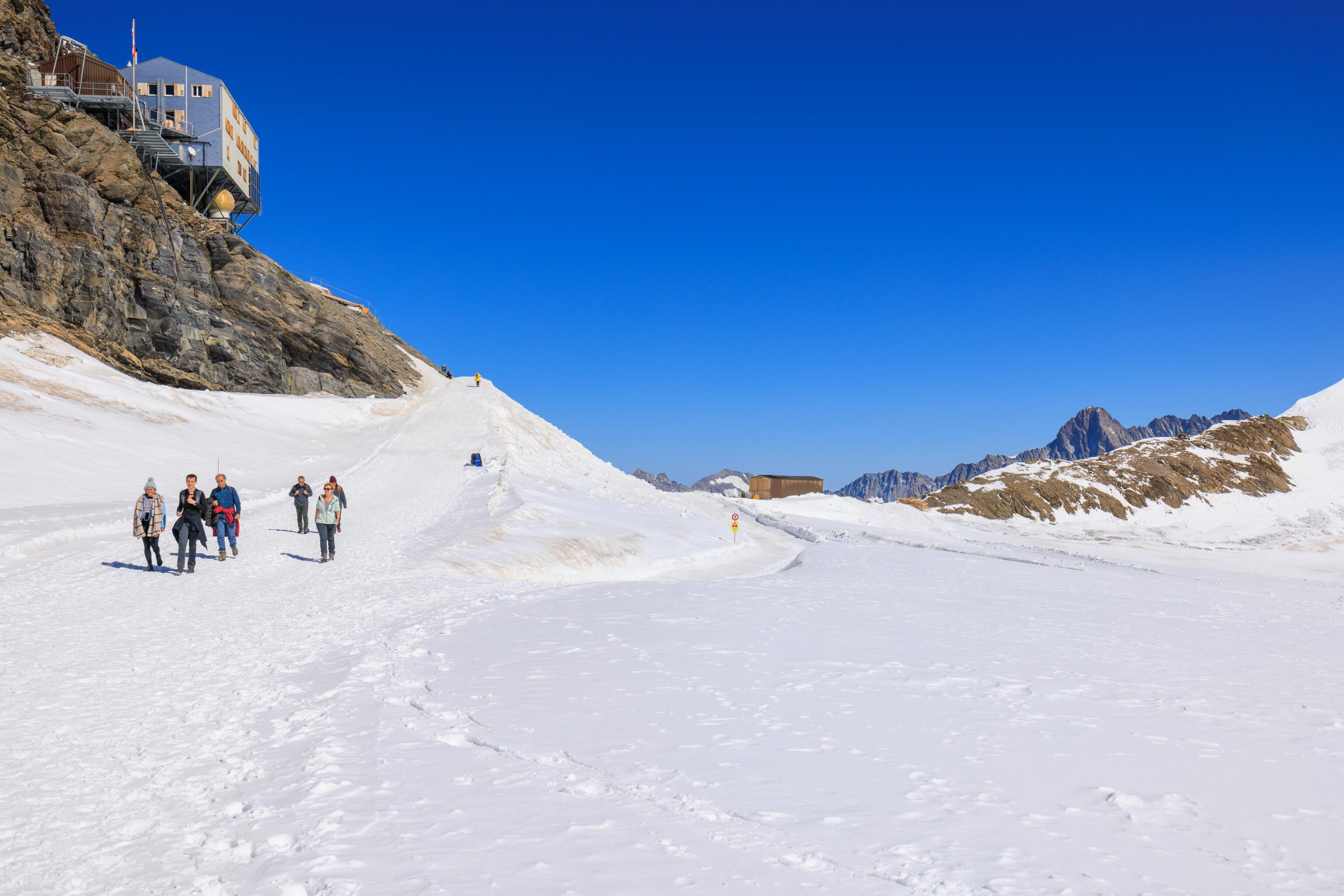
There was a junction in the trail here. The slope on the left went to the base of the Mönchsjochhütte, perched above. The trail to the right led to what seems like a storage shed. We guessed that the trail probably ended around there. We took the path on the left as we wanted to get to the Mönchsjochhütte.
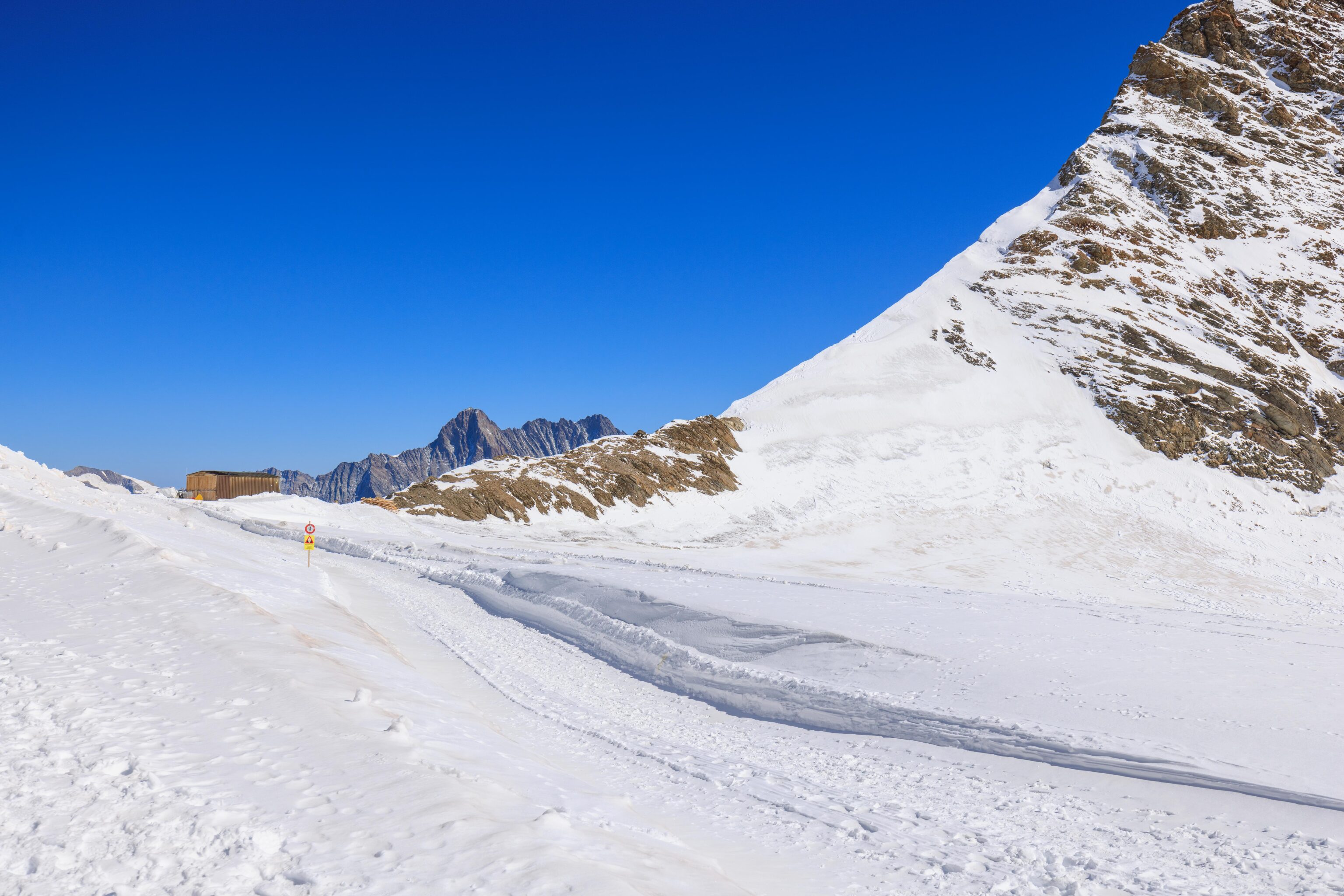
The view towards the path not taken as we headed up.
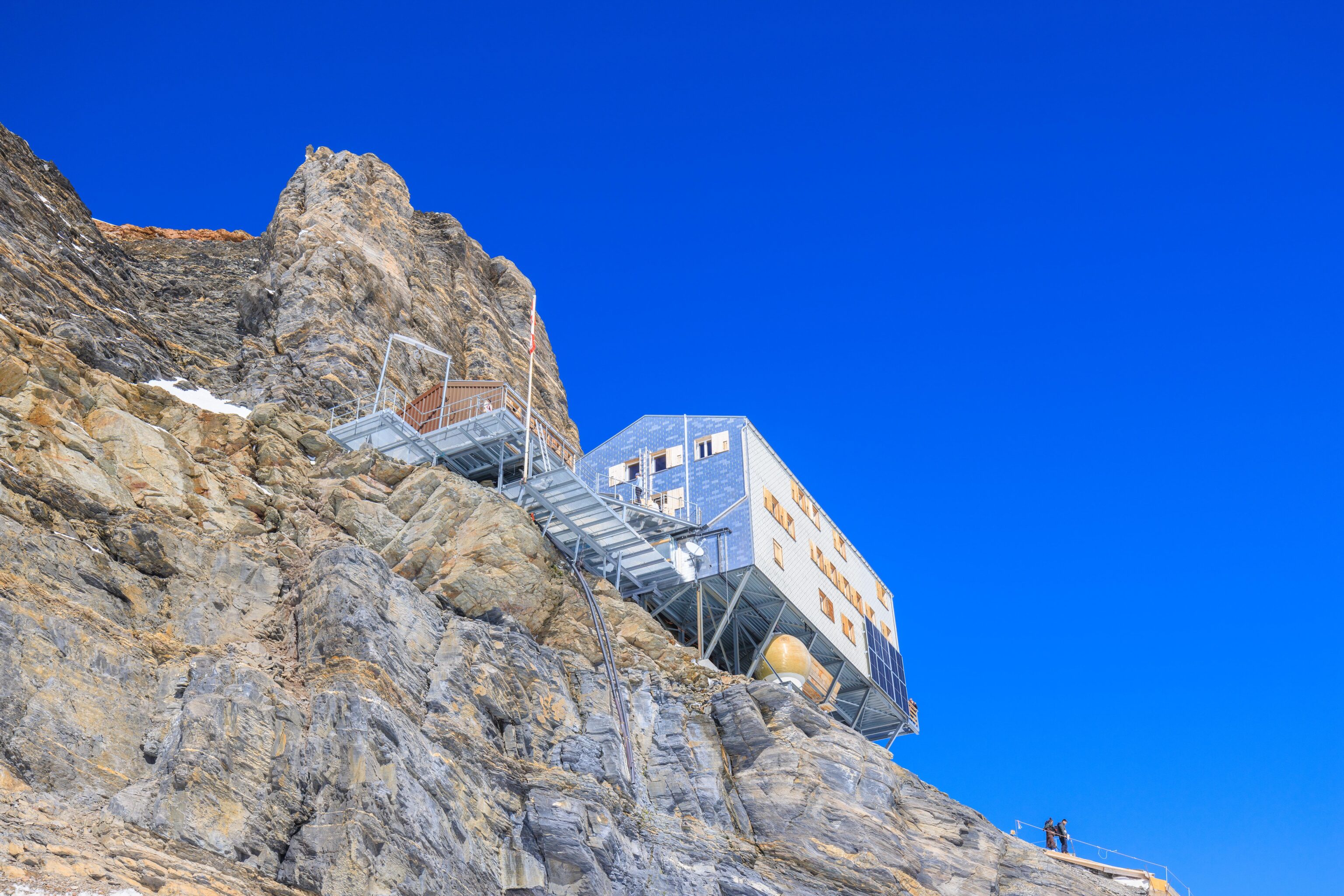
It looks quite high above us!
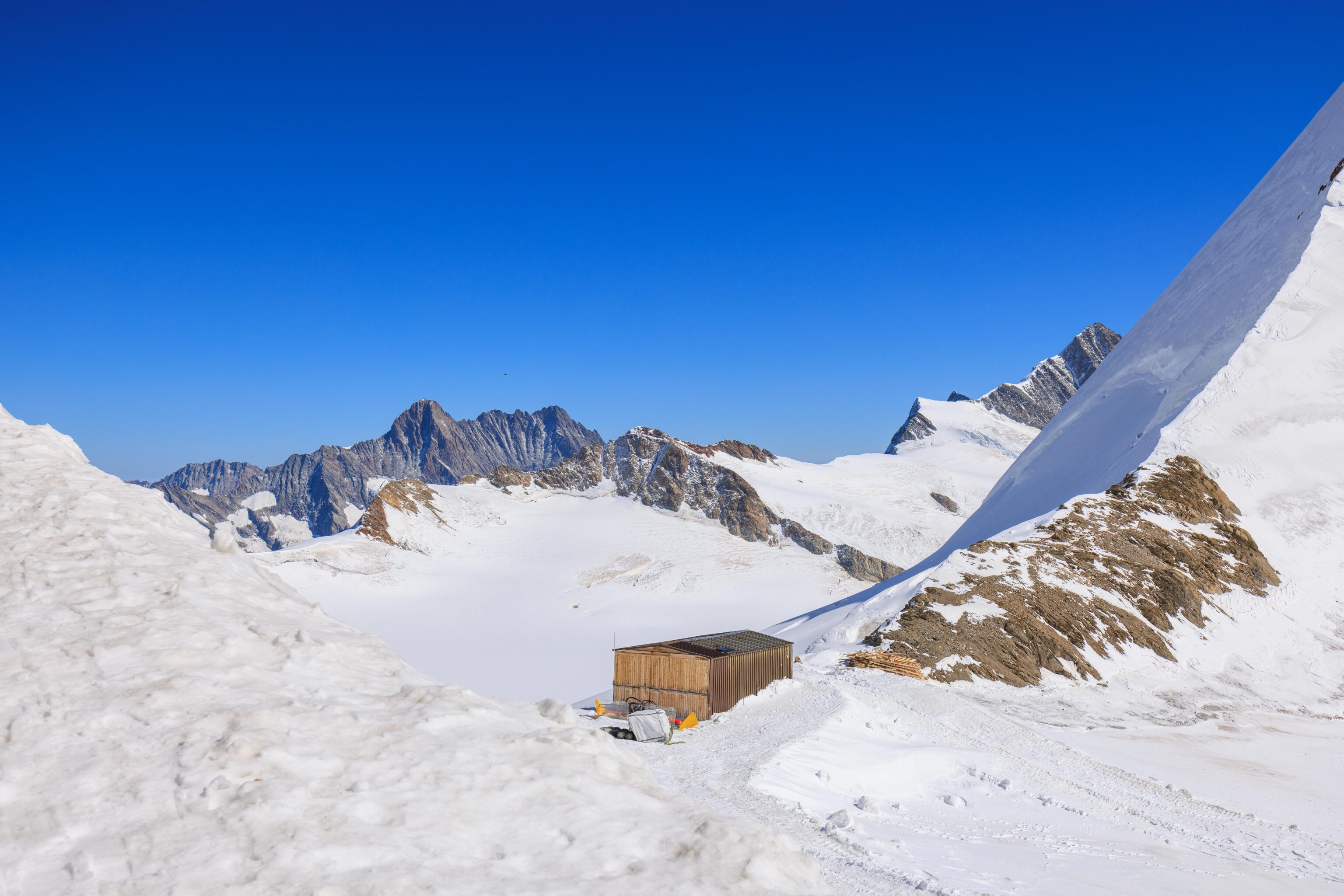
Looking down, we could see the shed and the end of the trail.
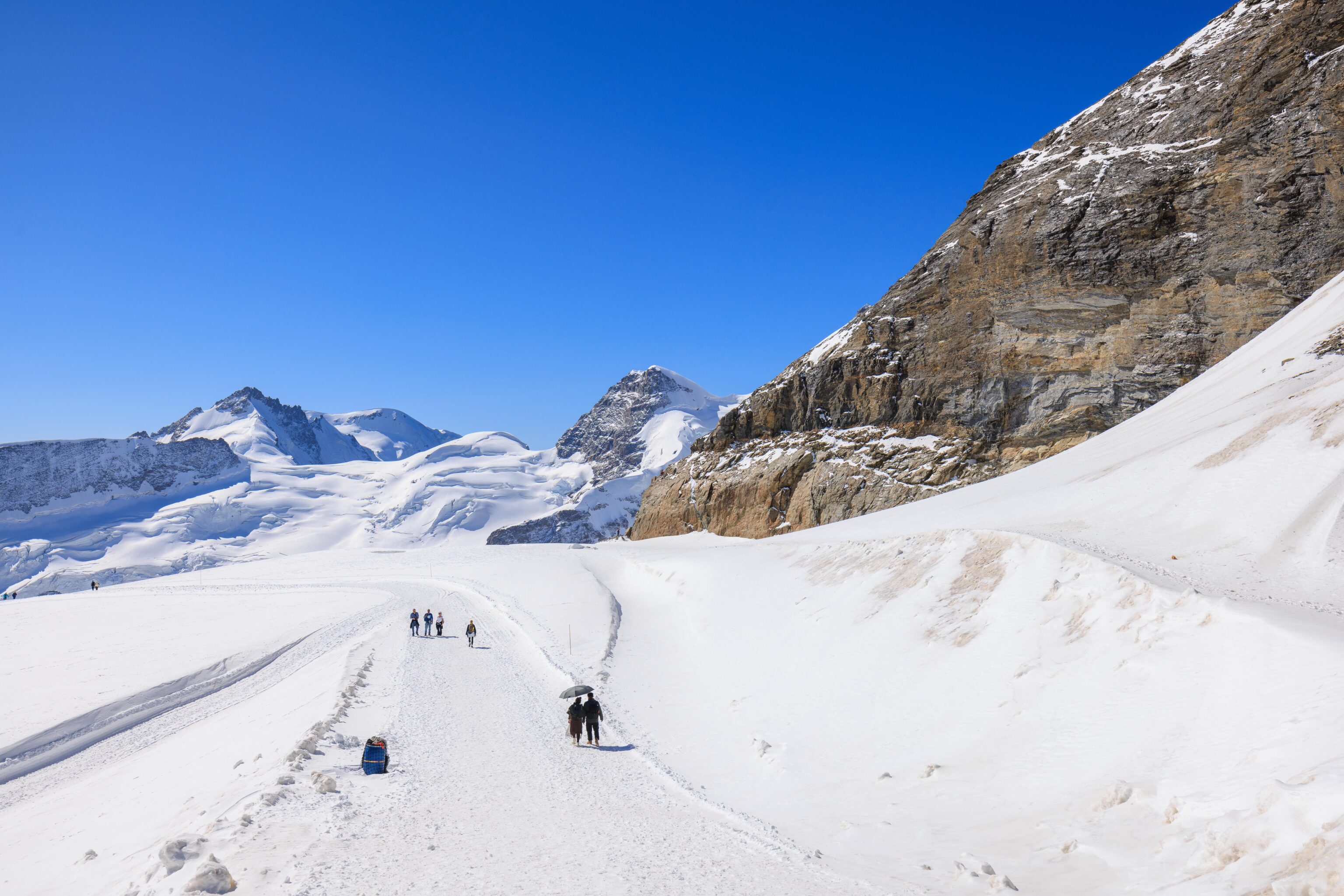
Looking back, we could no longer see any part of Jungfraujoch. Jungfrau is also no longer in view.
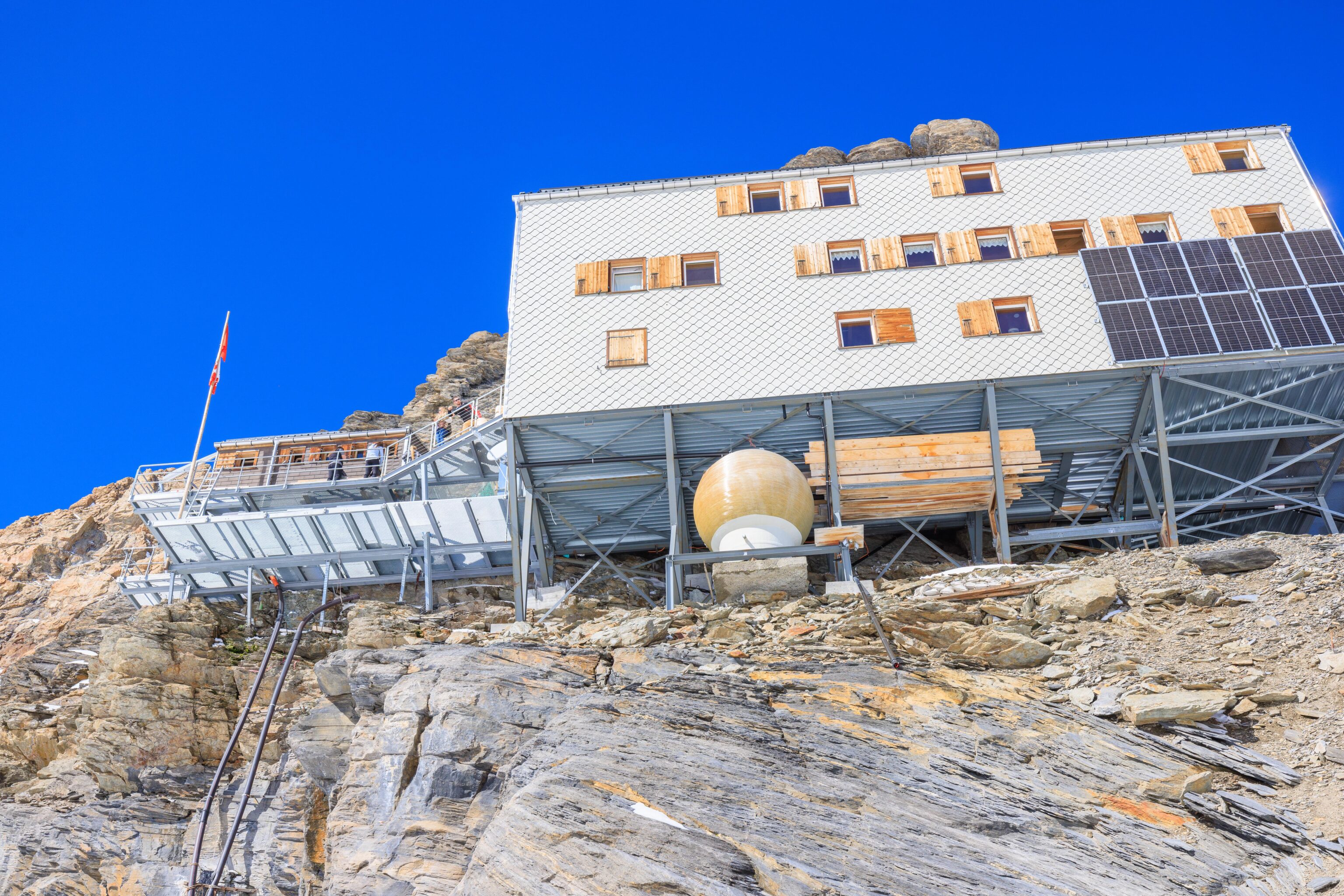
It still looks quite high above us! It turns out that there is a rather sketchy steep path that leads up to the Mönchsjochhütte, though it is really only sketchy because the snow on it was extremely slushy.
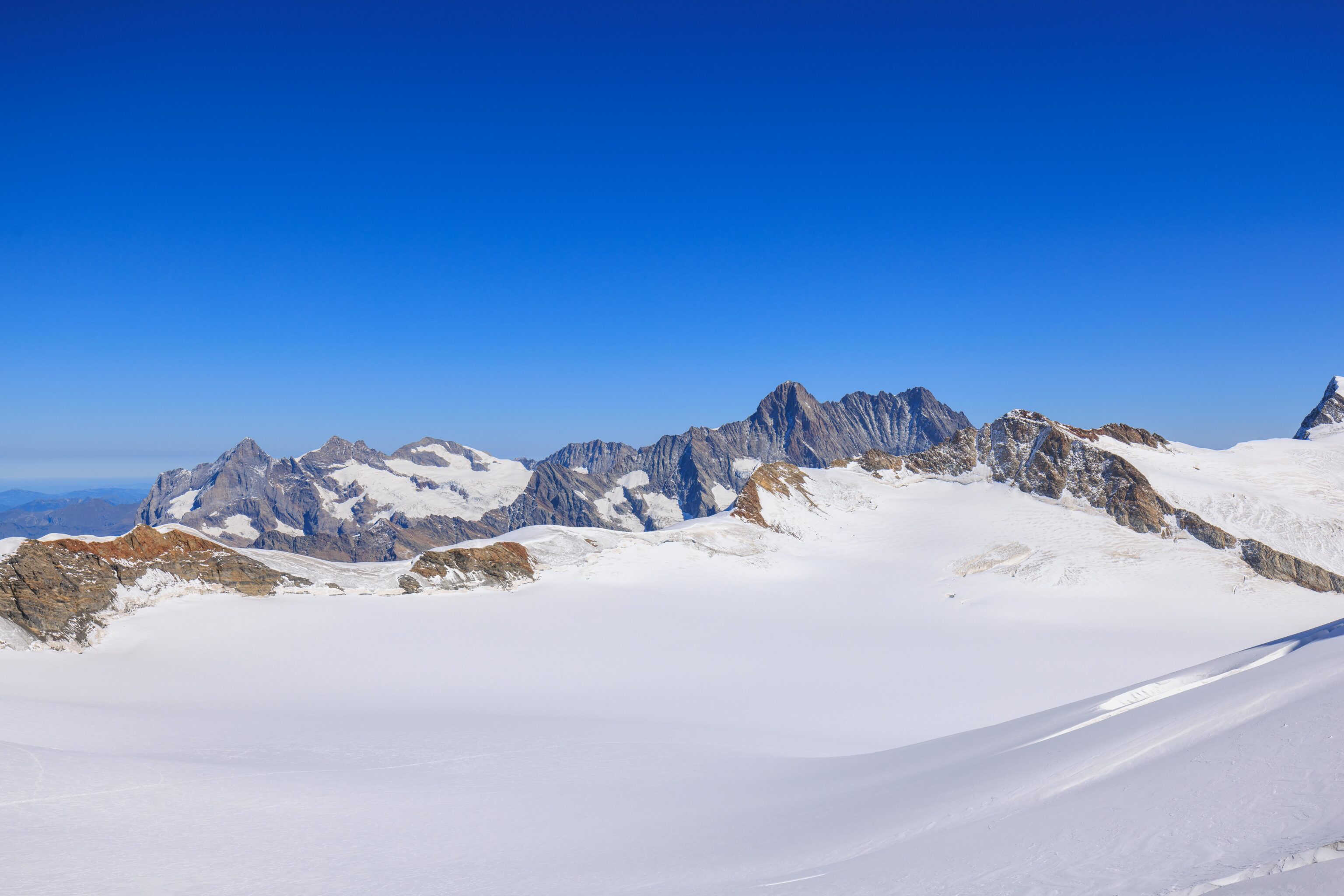
We went up carefully and eventually reached the Mönchsjochhütte. Looking to the east, there was a huge plain of untouched snow.
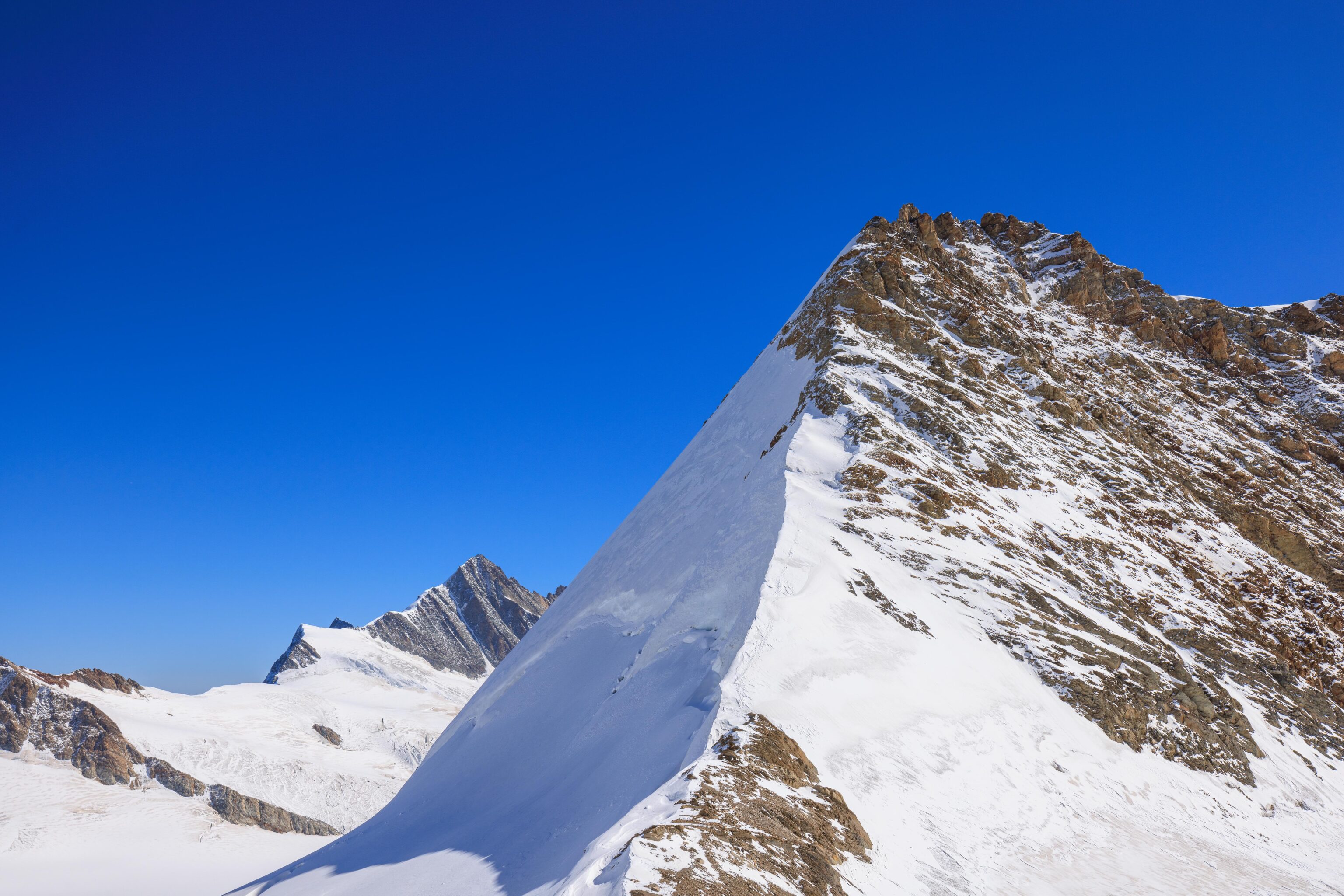
The Mönchsjochhütte sits above the saddle between Mönch and this mountain to the southeast, the Trugberg.
We entered the Mönchsjochhütte through its door on the east side of the building. Inside, footwear must be replaced with slippers that are provided, many of which are Crocs. It is a bit like being in Japan!
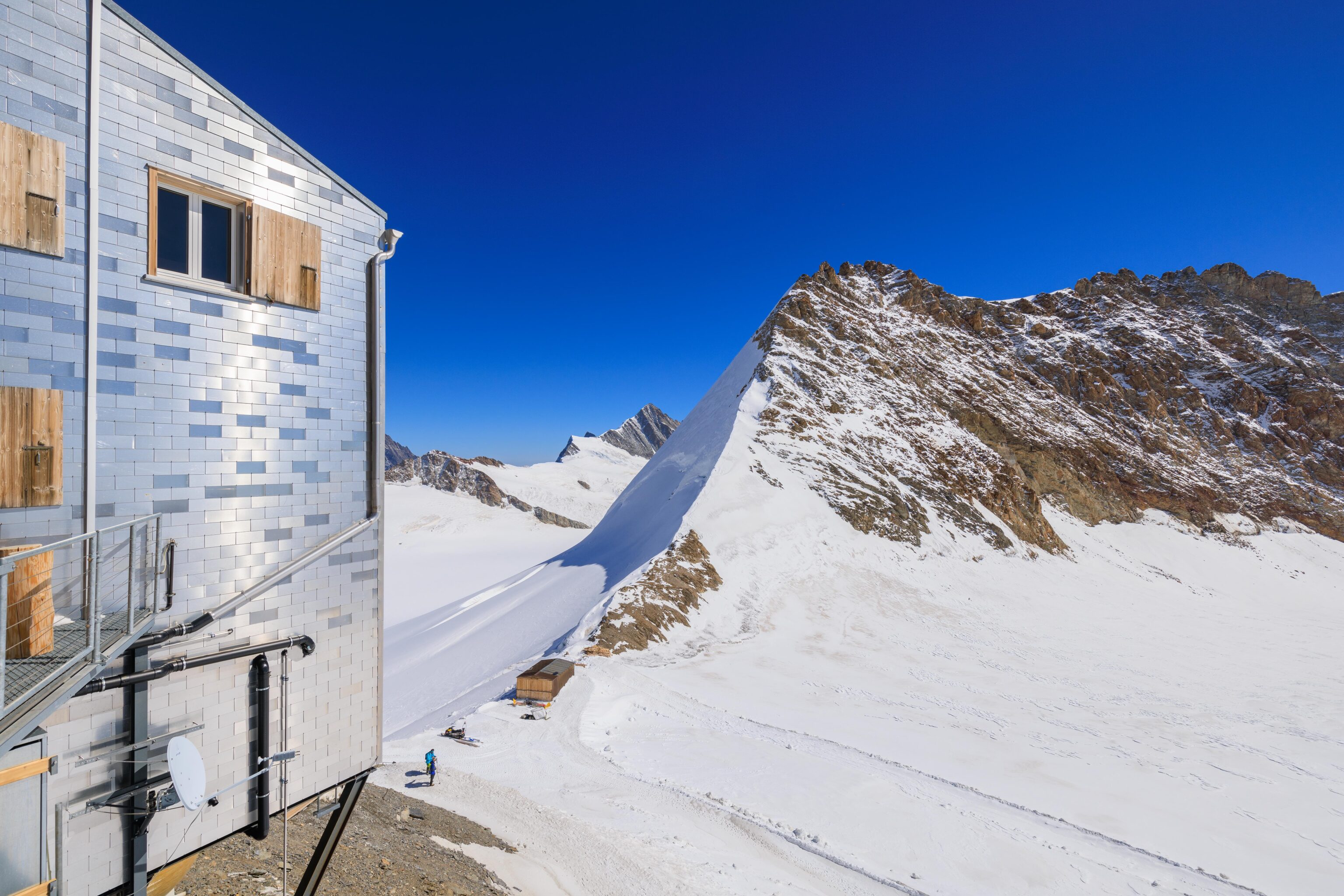
We went through the building and out a door on the west side that leads to an outdoor deck.
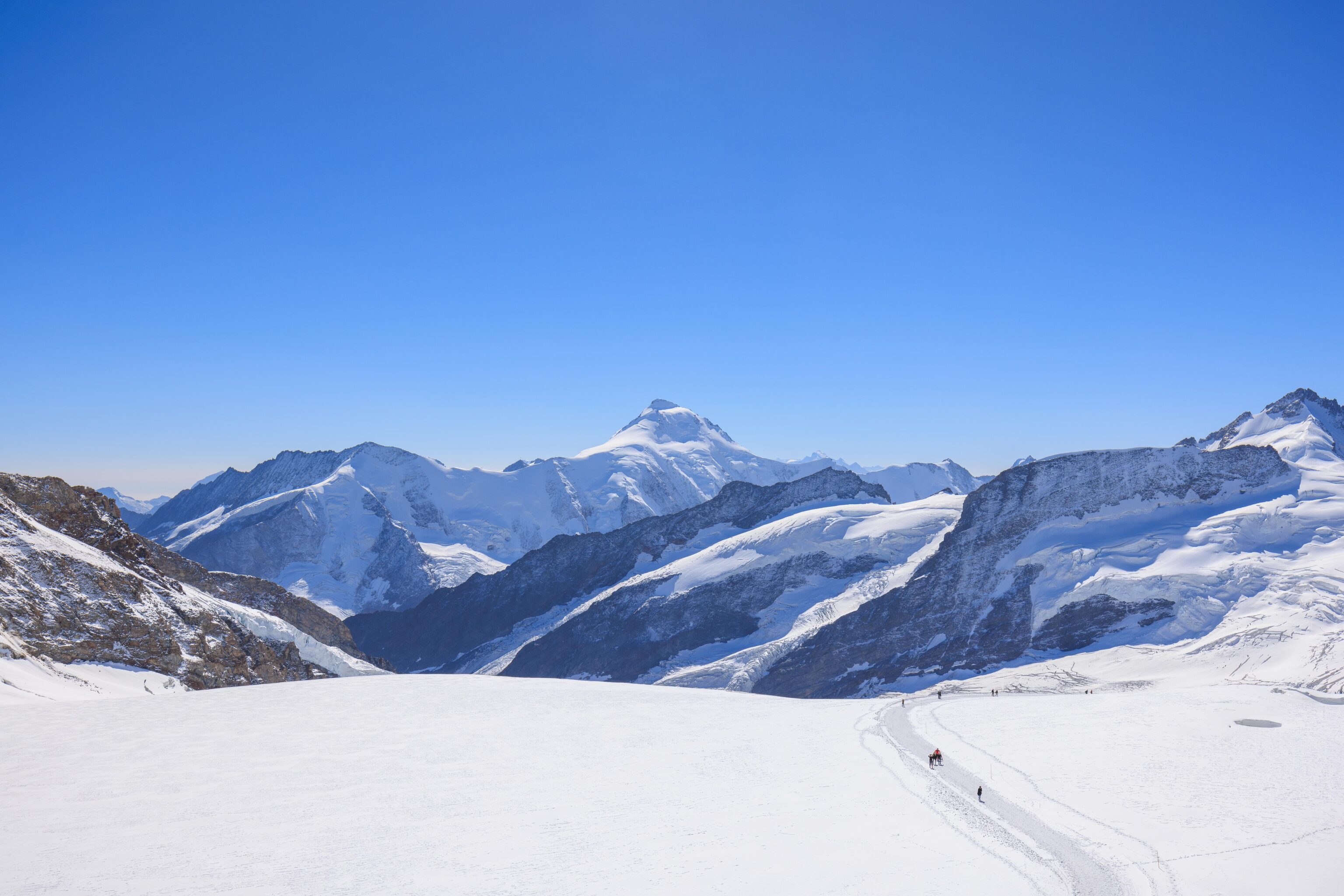
The view to the south with the Aletschhorn at the center.
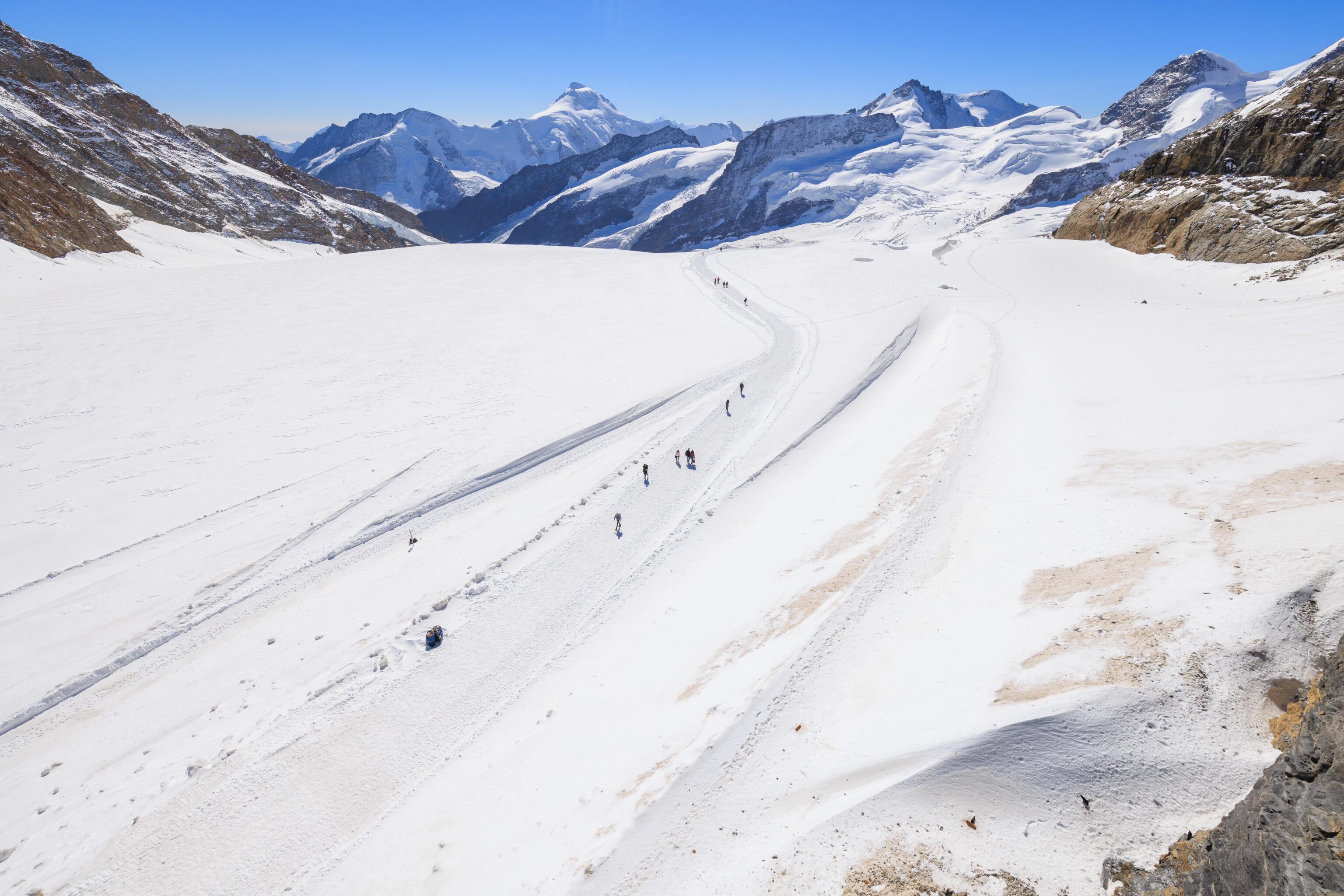
Looking down, we can see the snow trail that we hiked in on.
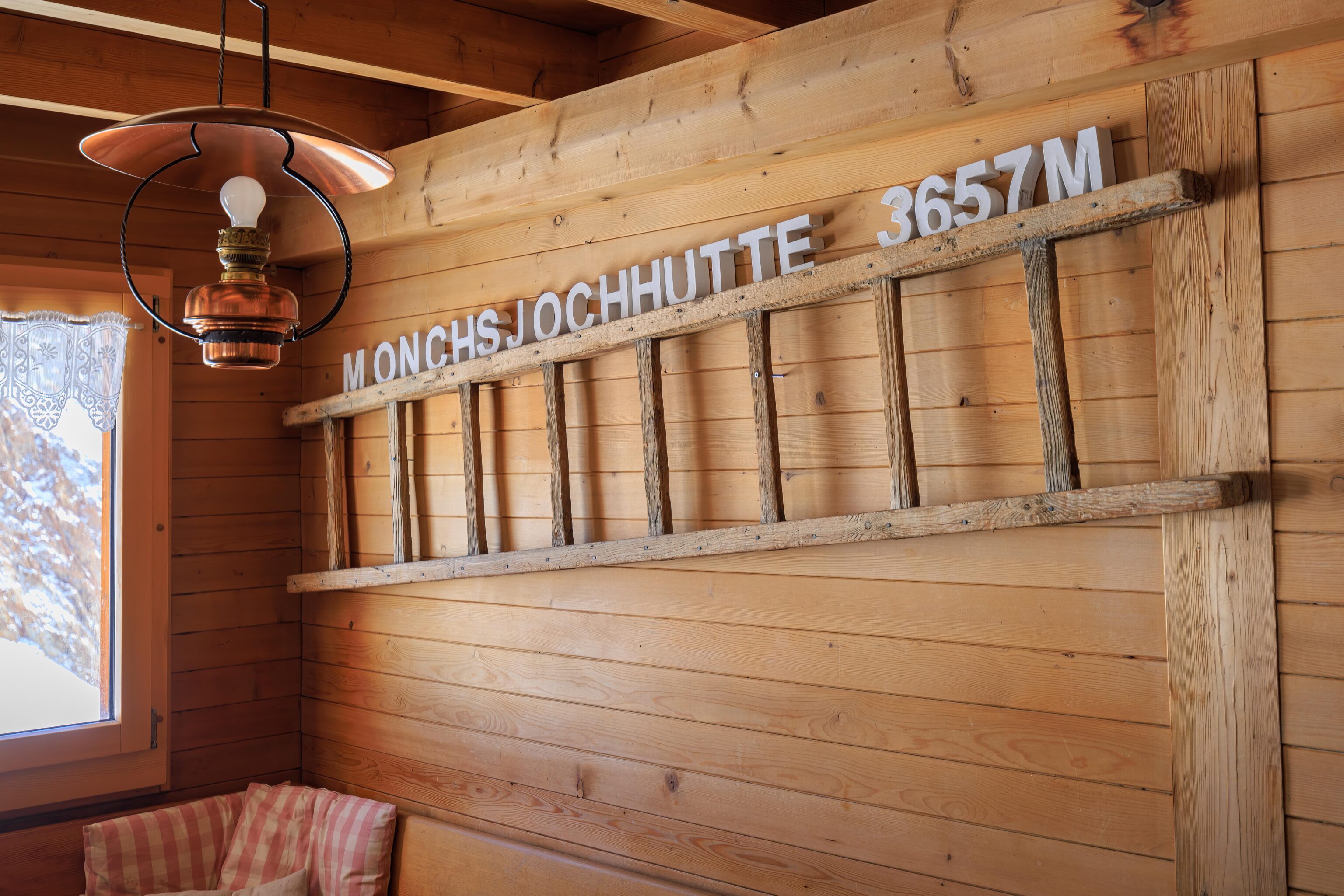
We went inside to see if food was being served. It was 1:30pm and we were hungry!
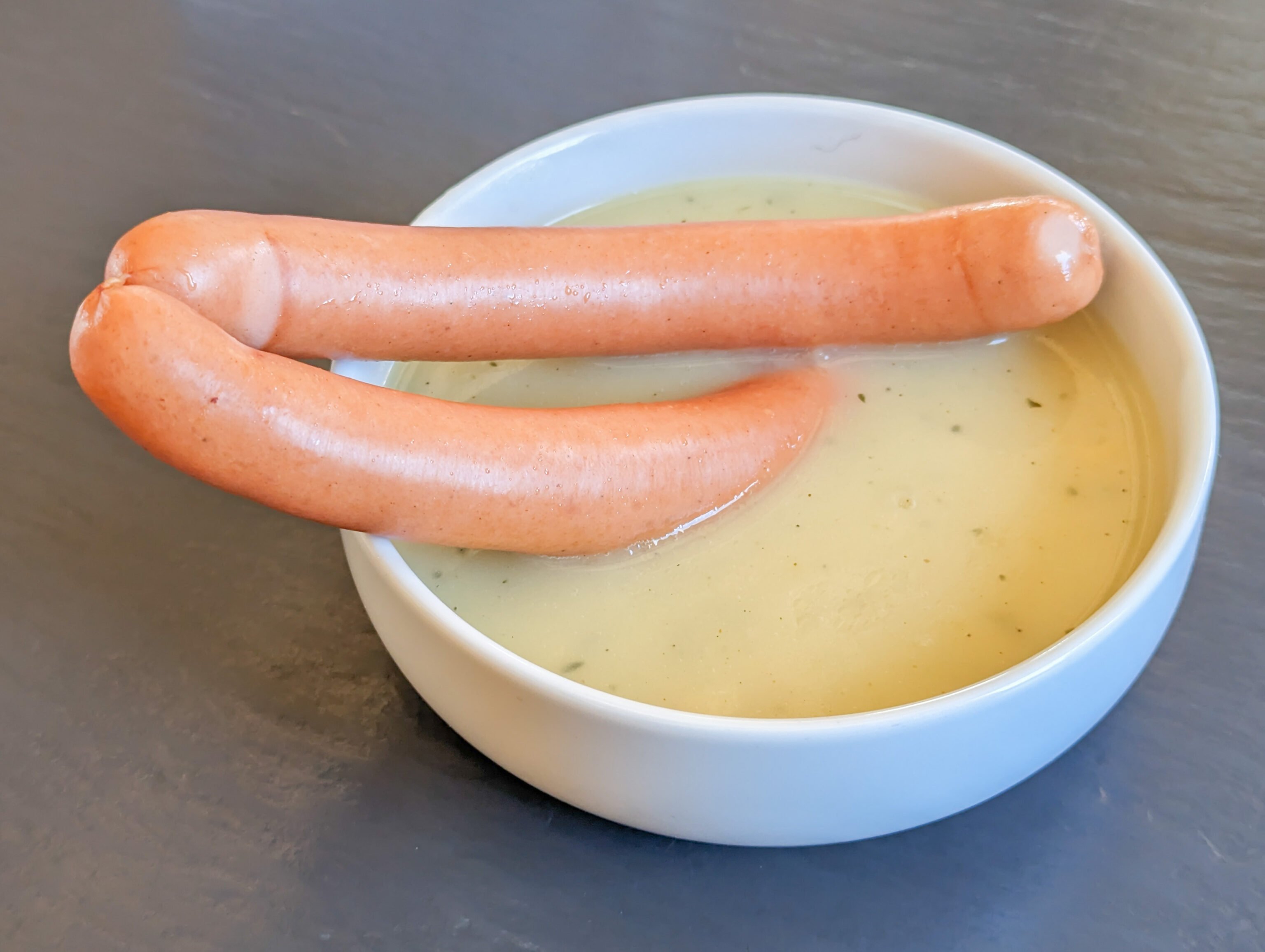
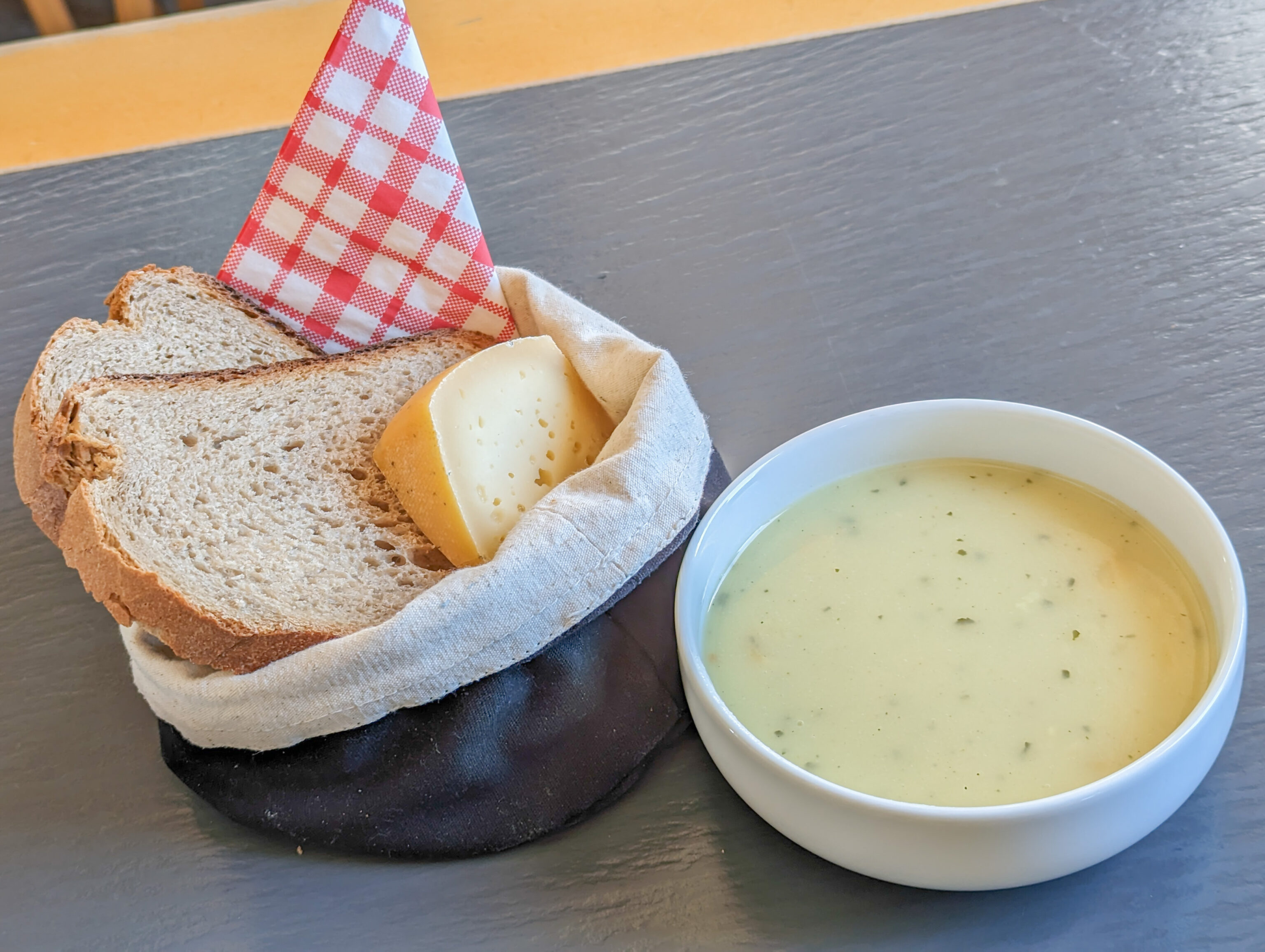
The only hot food option is soup, with either bread and cheese or two Vienna würstchen, basically hot dogs or Frankfurters.
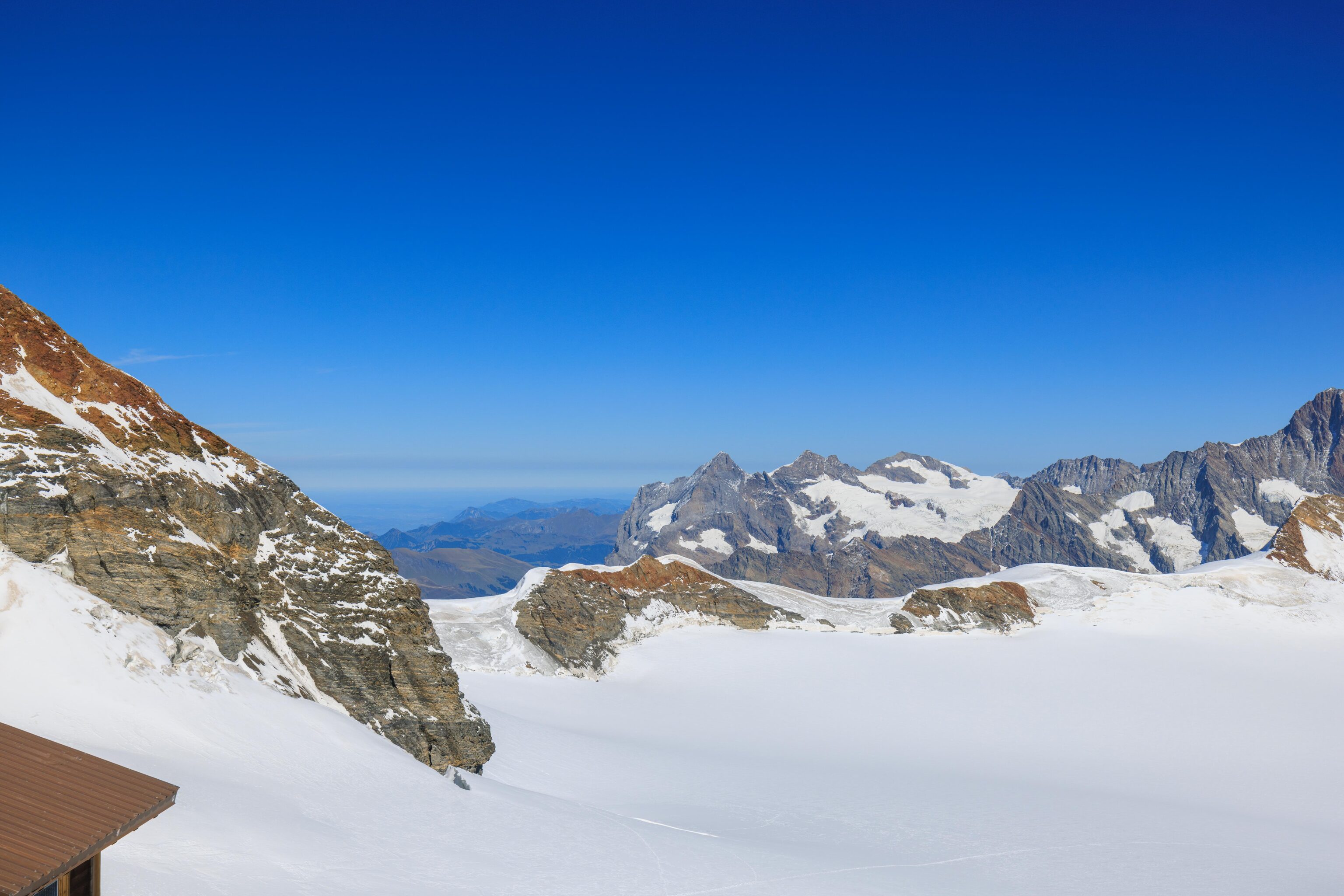
The view from the window to the north in the dining area.
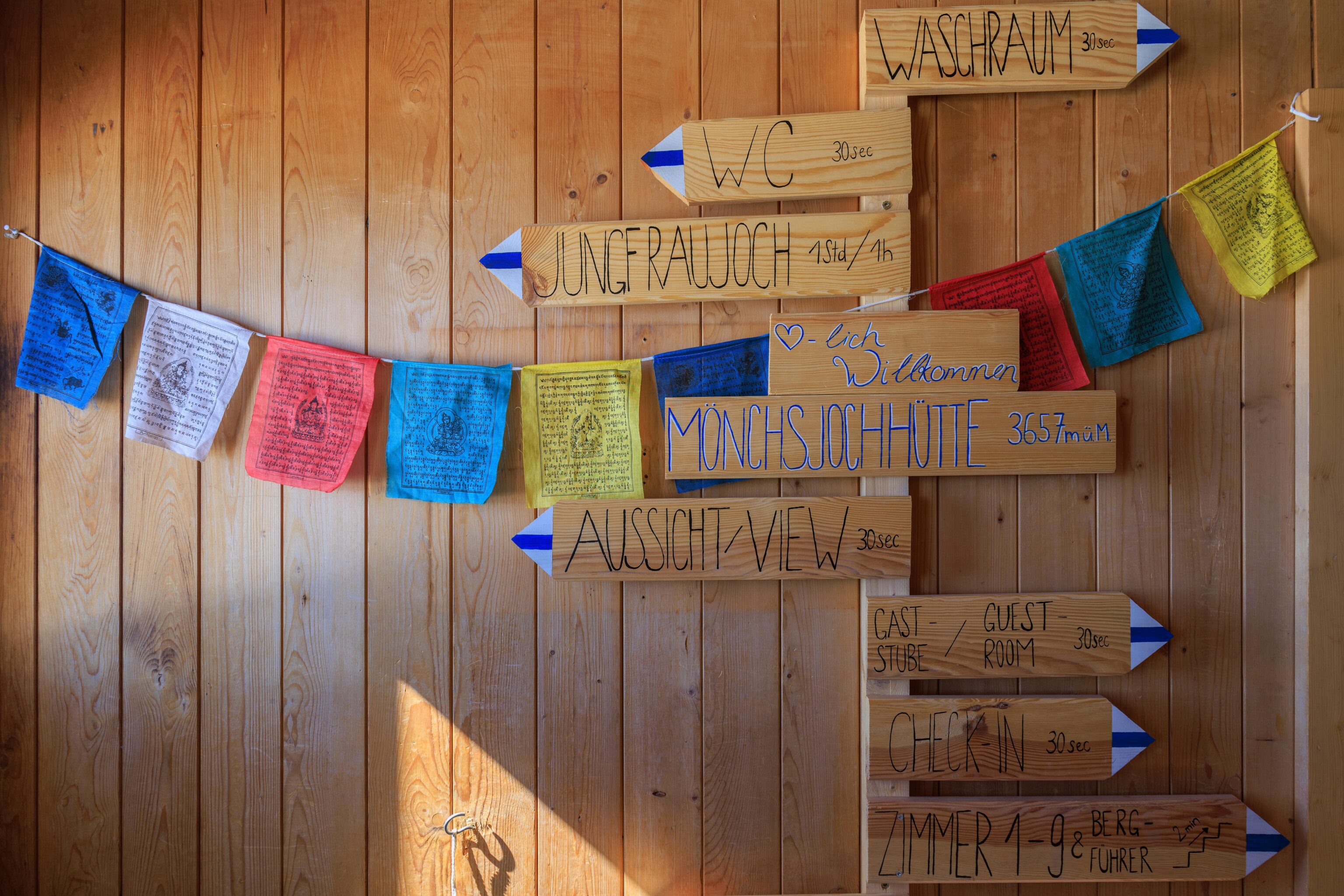
Directions to some important locations… Bergführer is the German word for mountain guide. It is weird to see the word führer because in American English it is solely used to refer to Hitler. But, führer just means leader or guide in German.
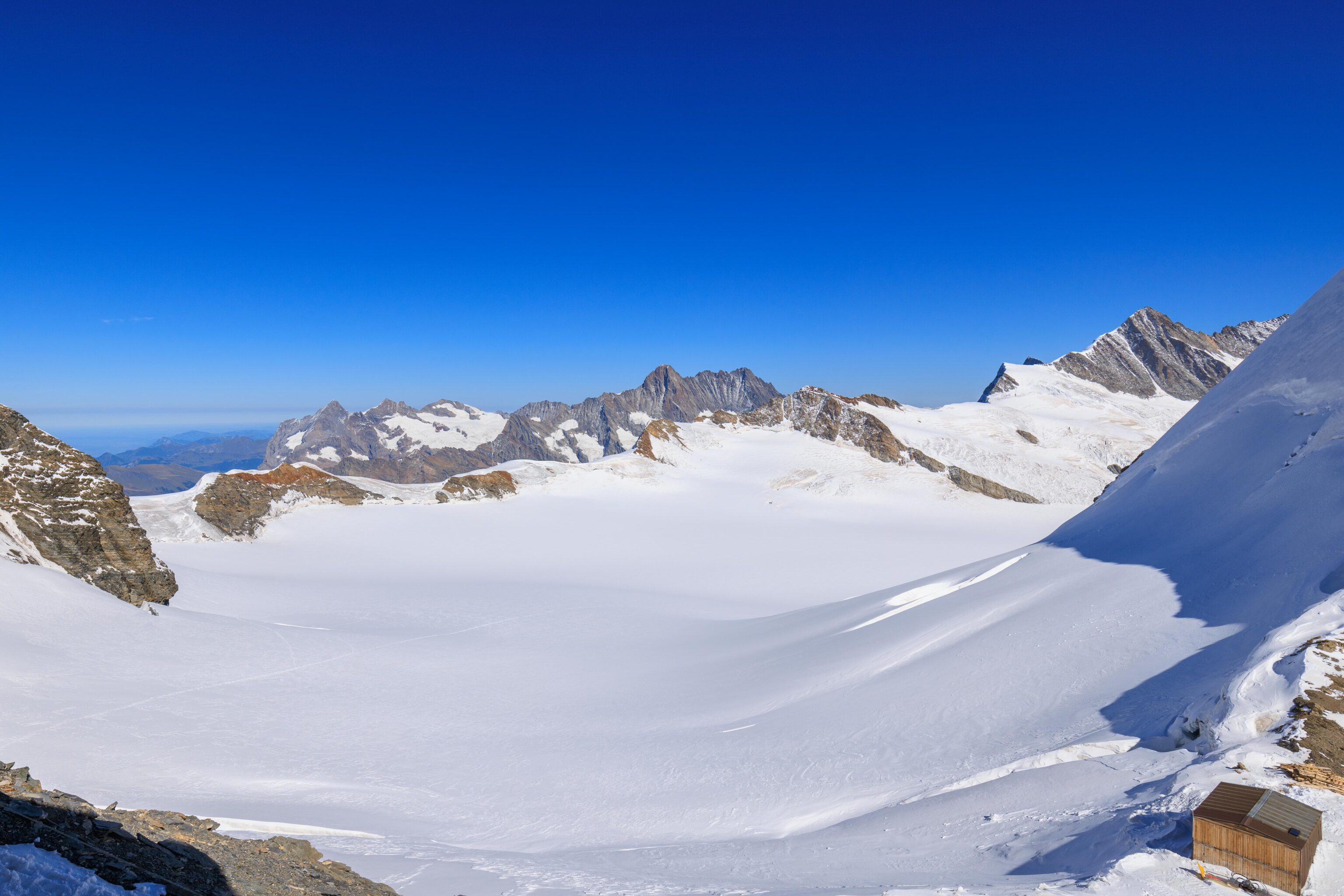
After using the WC, we headed back out to return to Jungfraujoch.
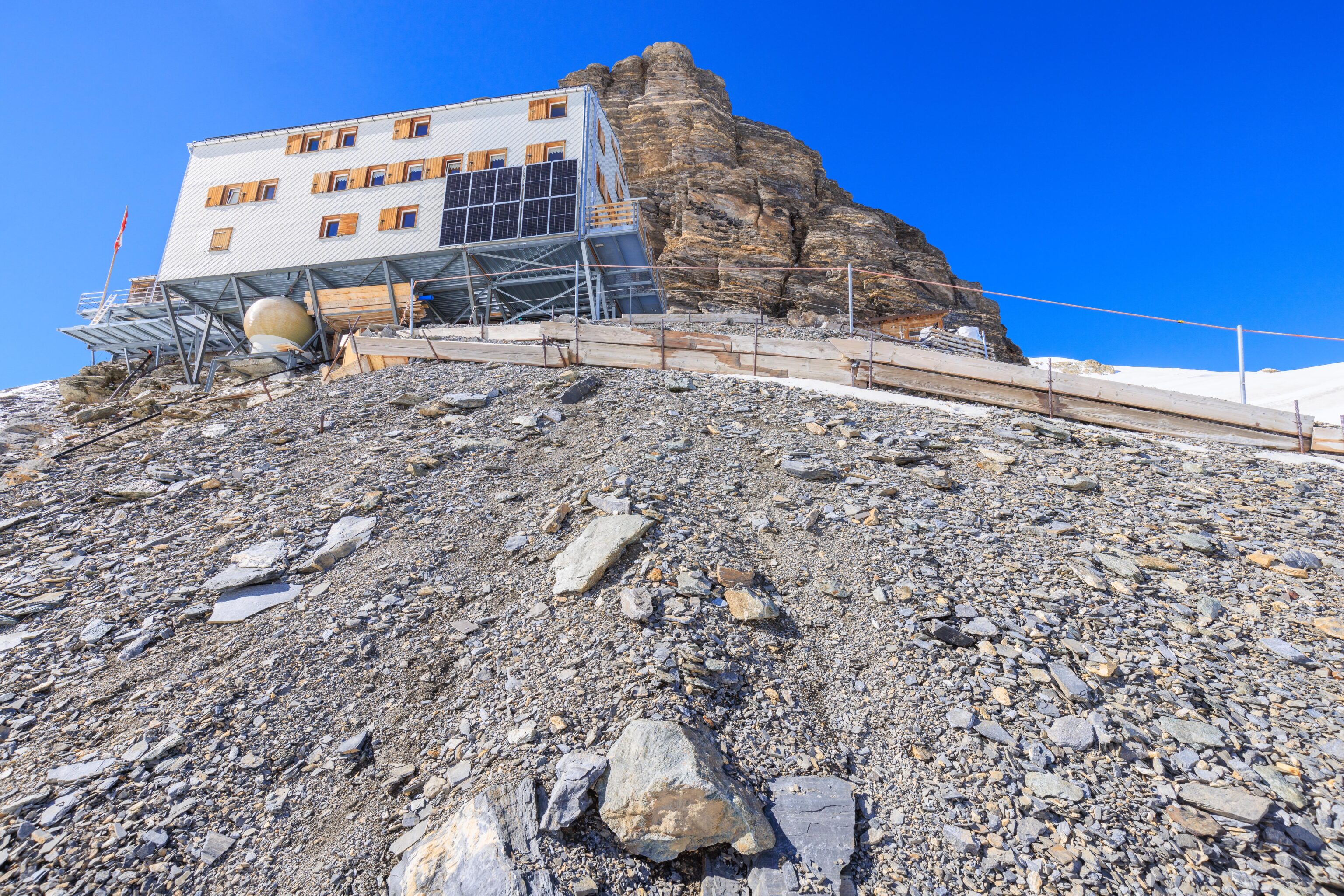
Going downhill on slush is more sketchy than going uphill, but we made it by moving slowly and carefully.
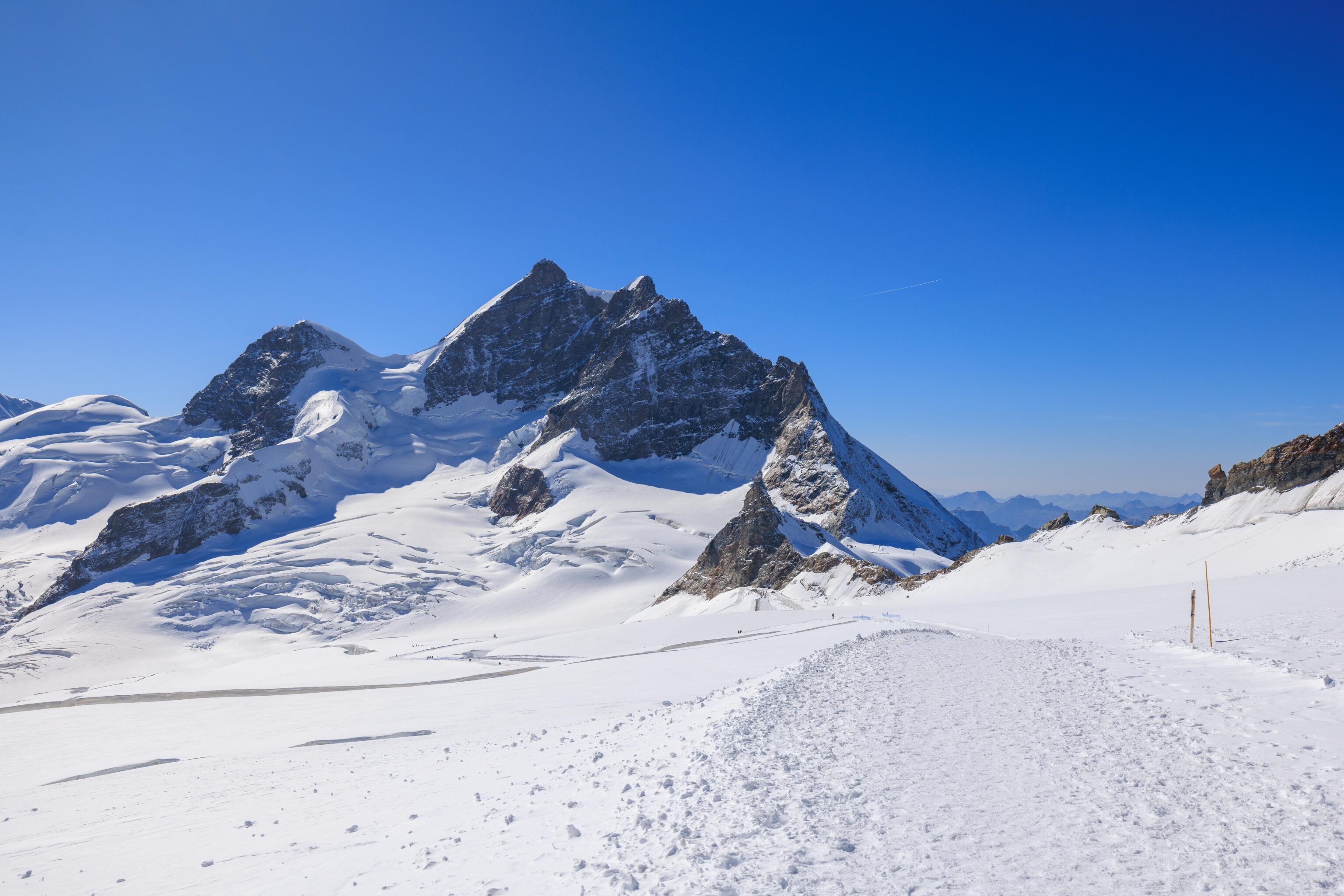
Going back was much easier as it is mostly all downhill. By now, it felt quite hot outside. The sun was shining in a clear sky. The snow was also likely reflecting quite a bit of sunlight, resulting in it feeling extremely hot. We were dressed in layers so could easily adjust.
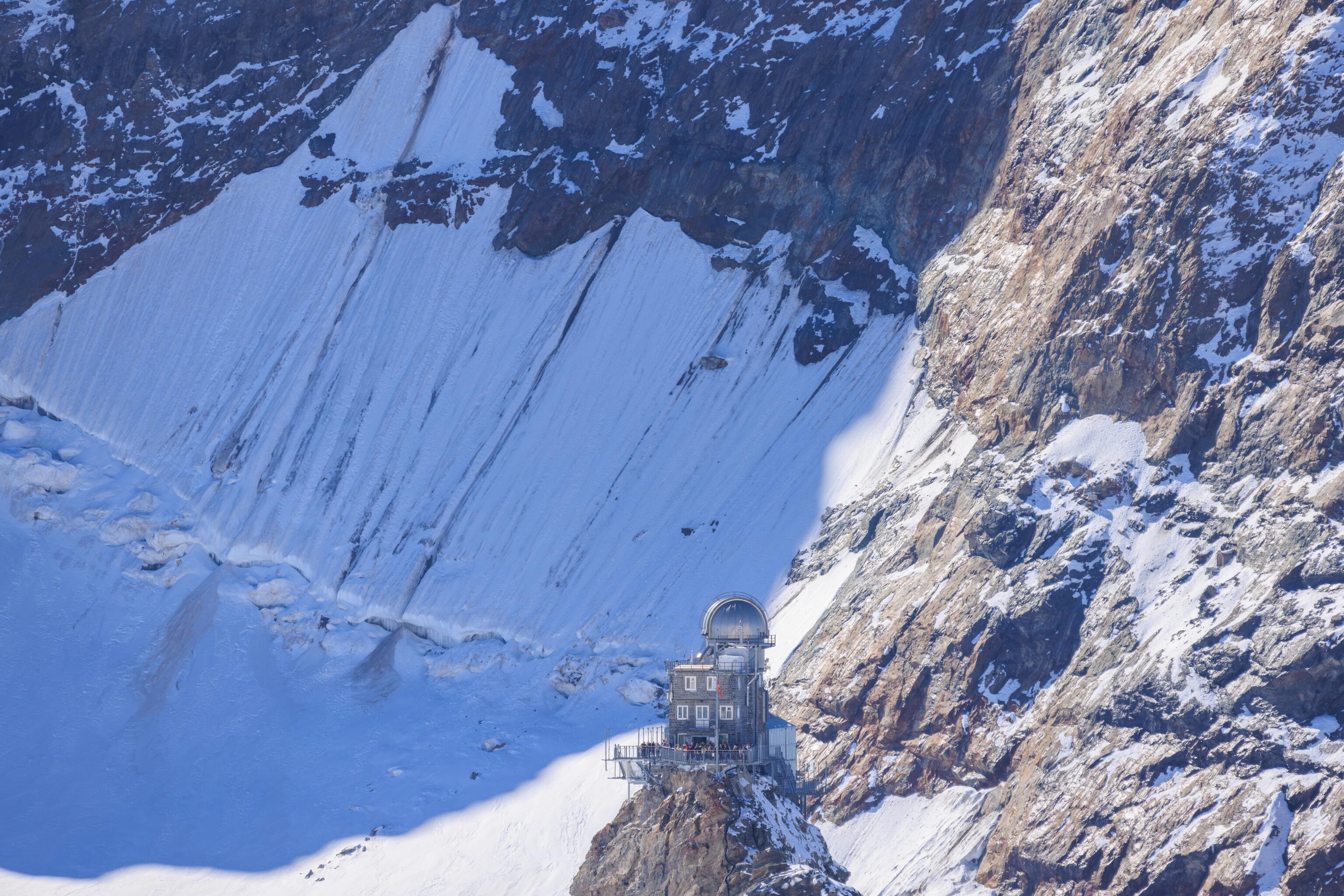
We briefly switched to the telephoto lens to take a closer look at some of our surroundings. Here, we could easily see the Sphinx Observatory and the terrace.
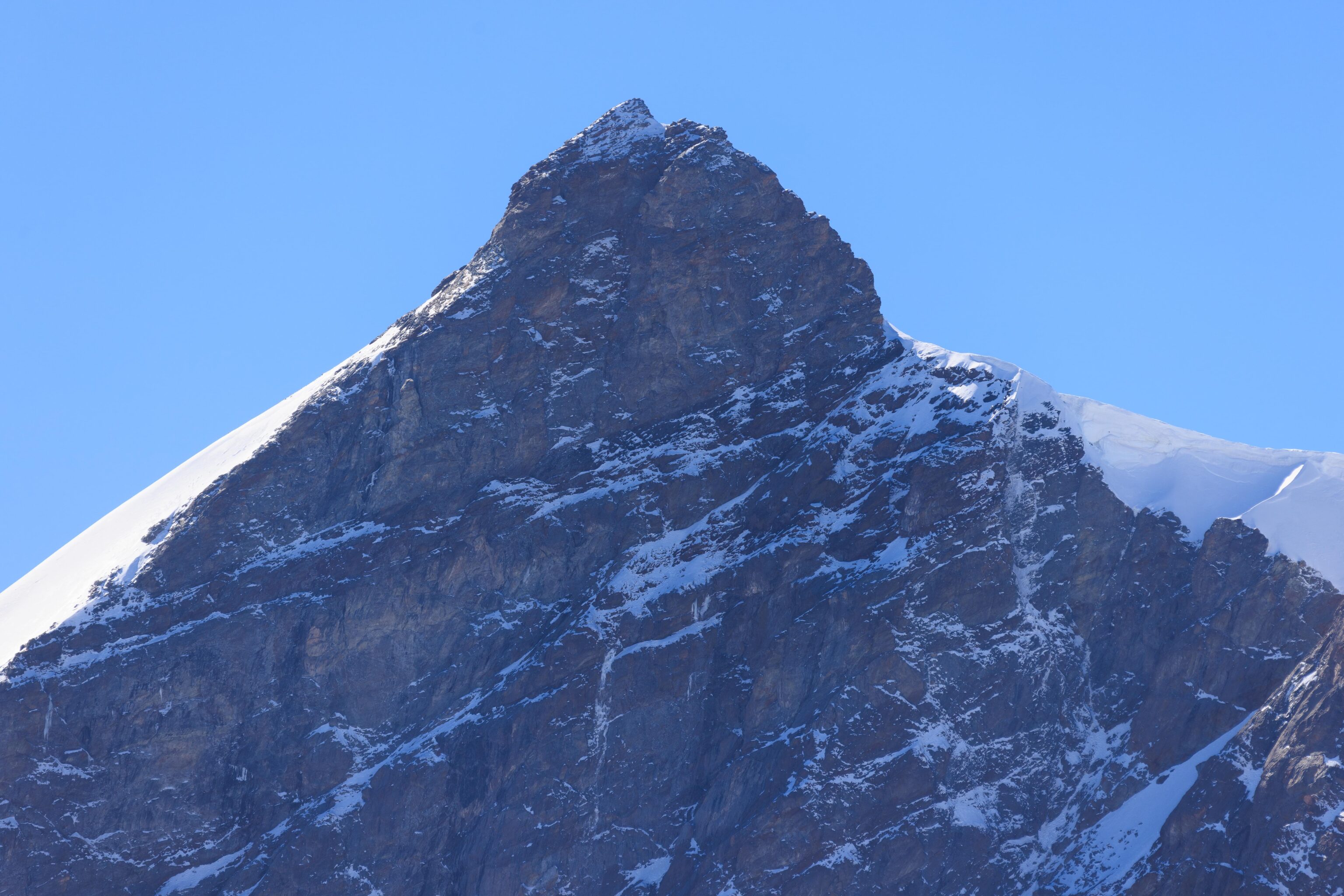
The highest peak of Jungfrau.
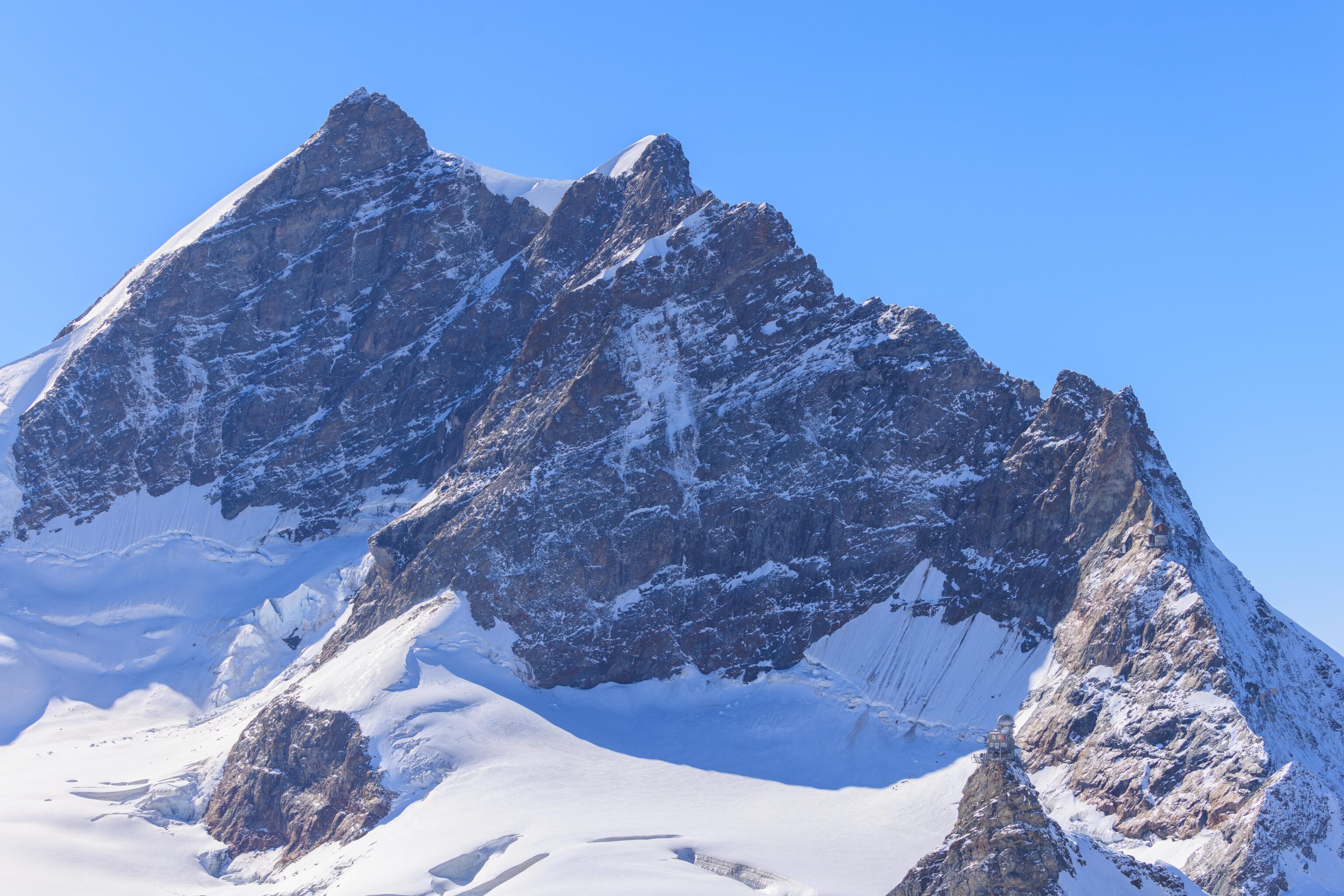
More of Jungfrau.
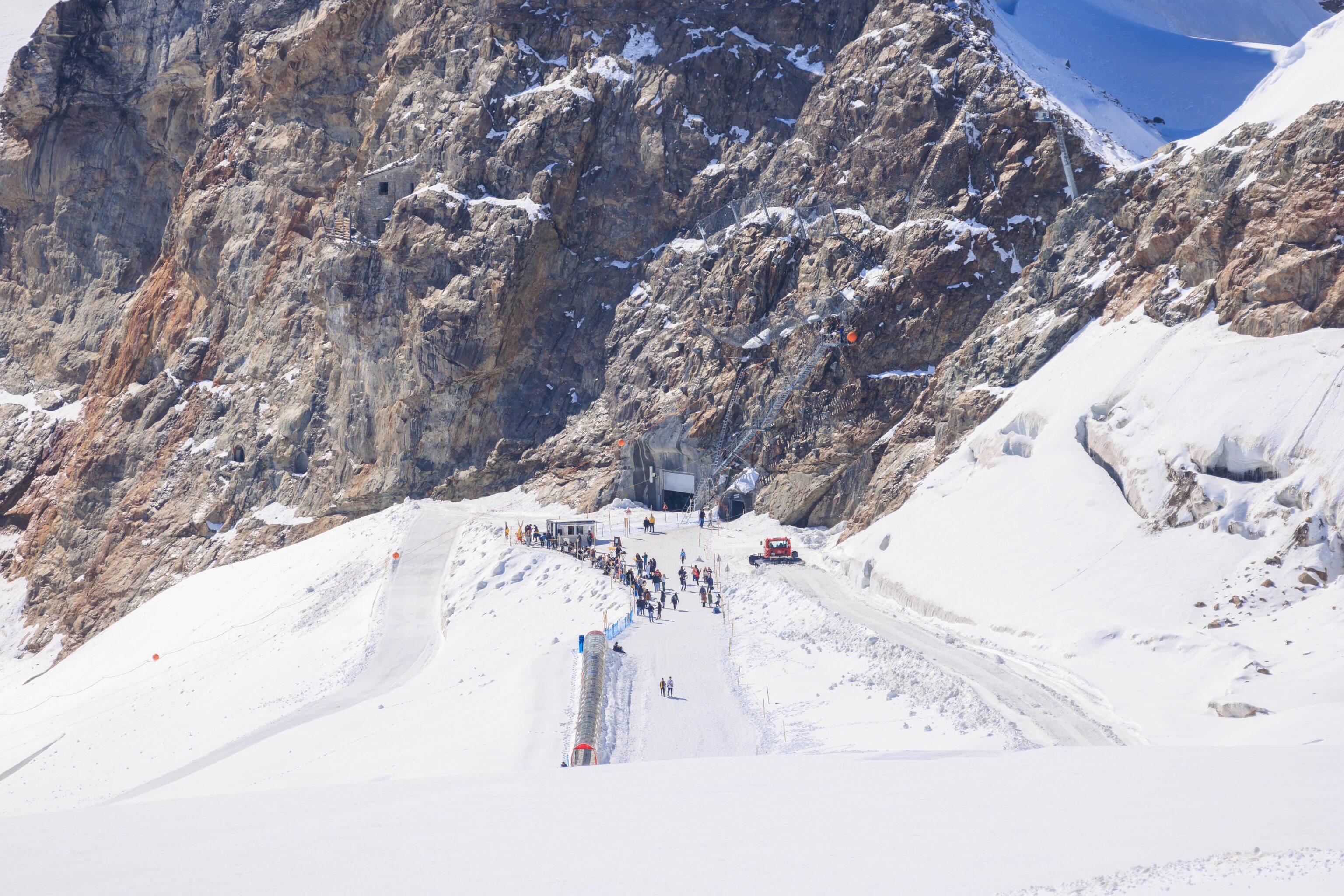
The entrance to Jungfraujoch.
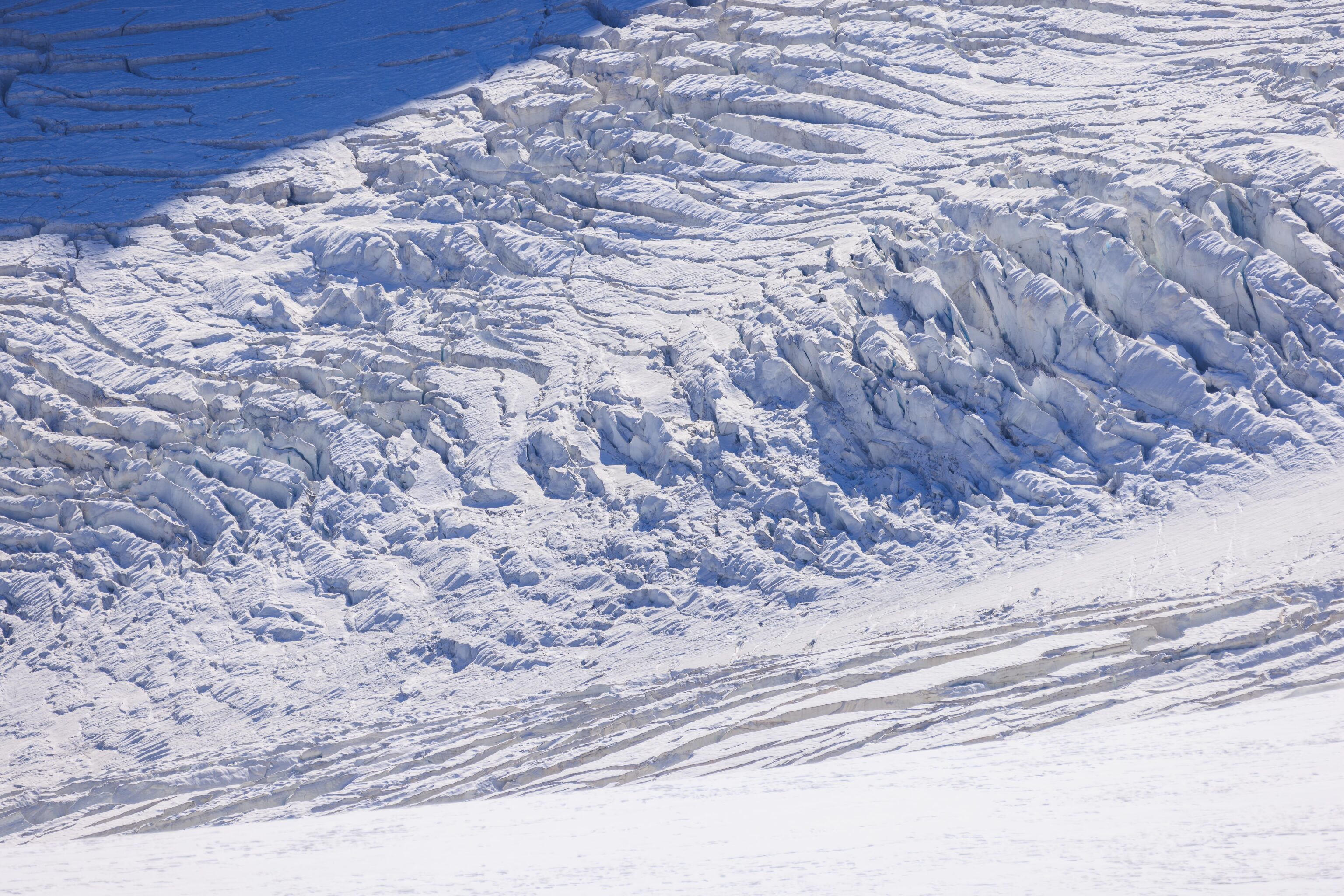
A bit of glacial snow.
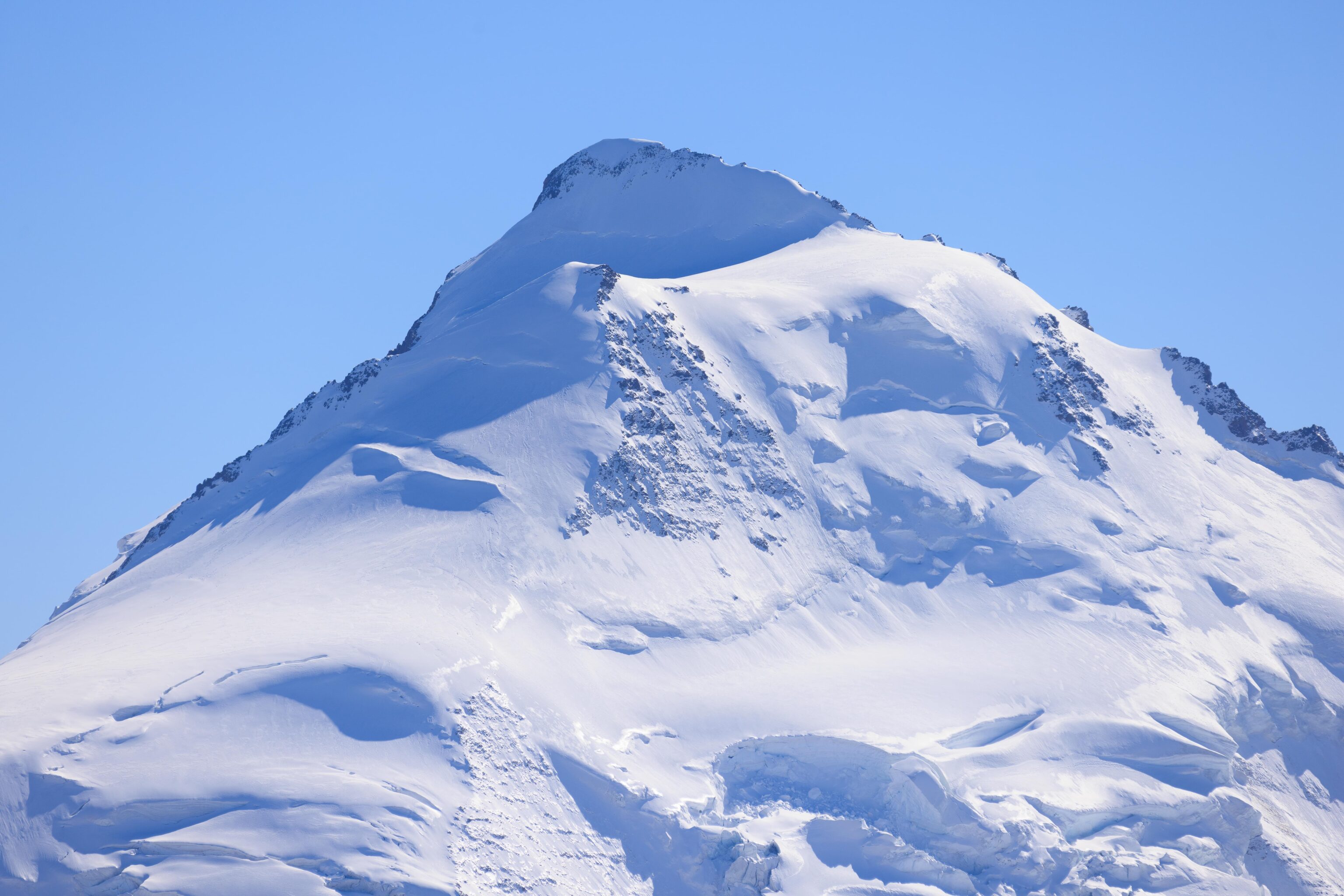
The Aletschhorn to the south.
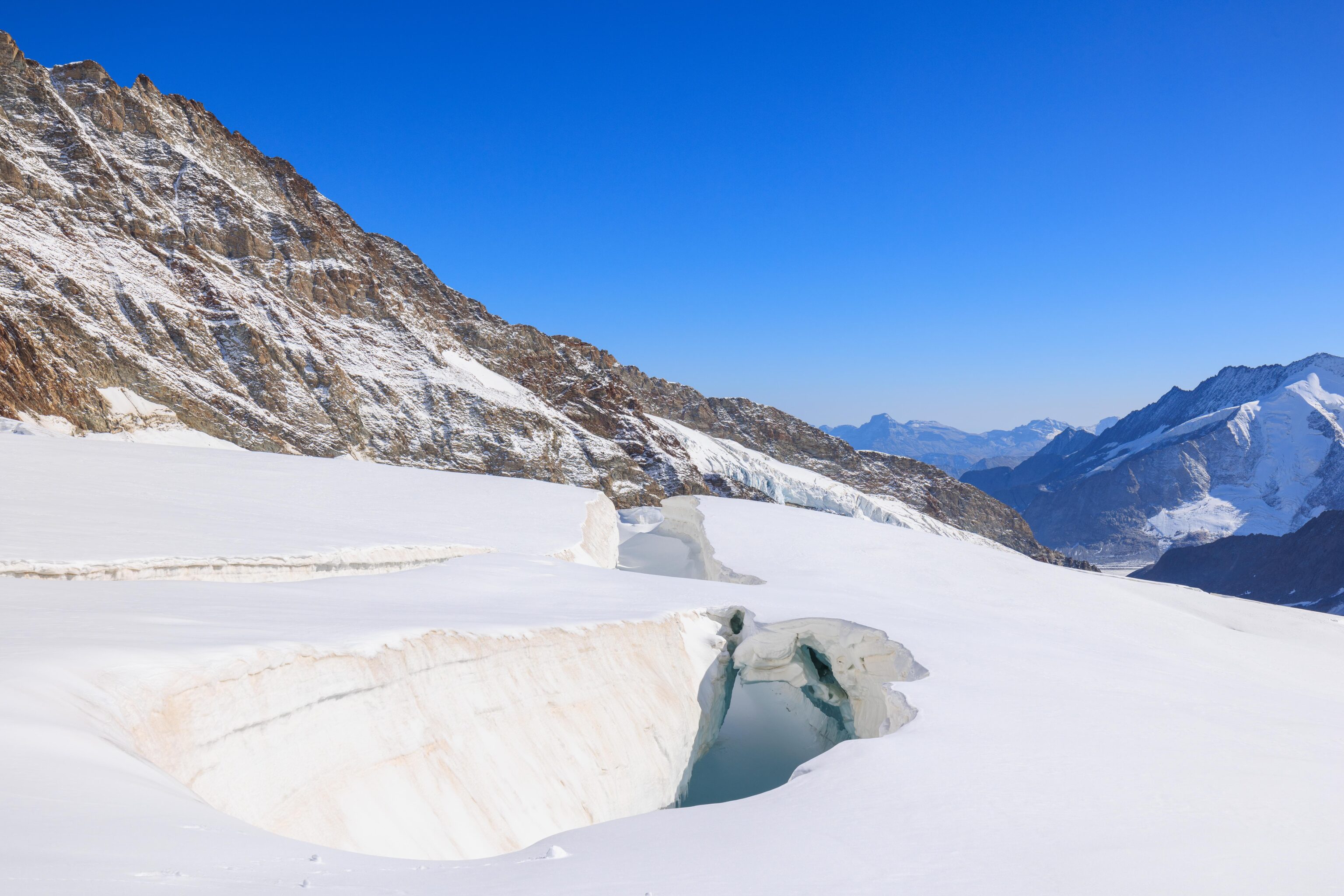
The second crevasse that we passed by earlier, showing how it has formed a tunnel and natural bridge.
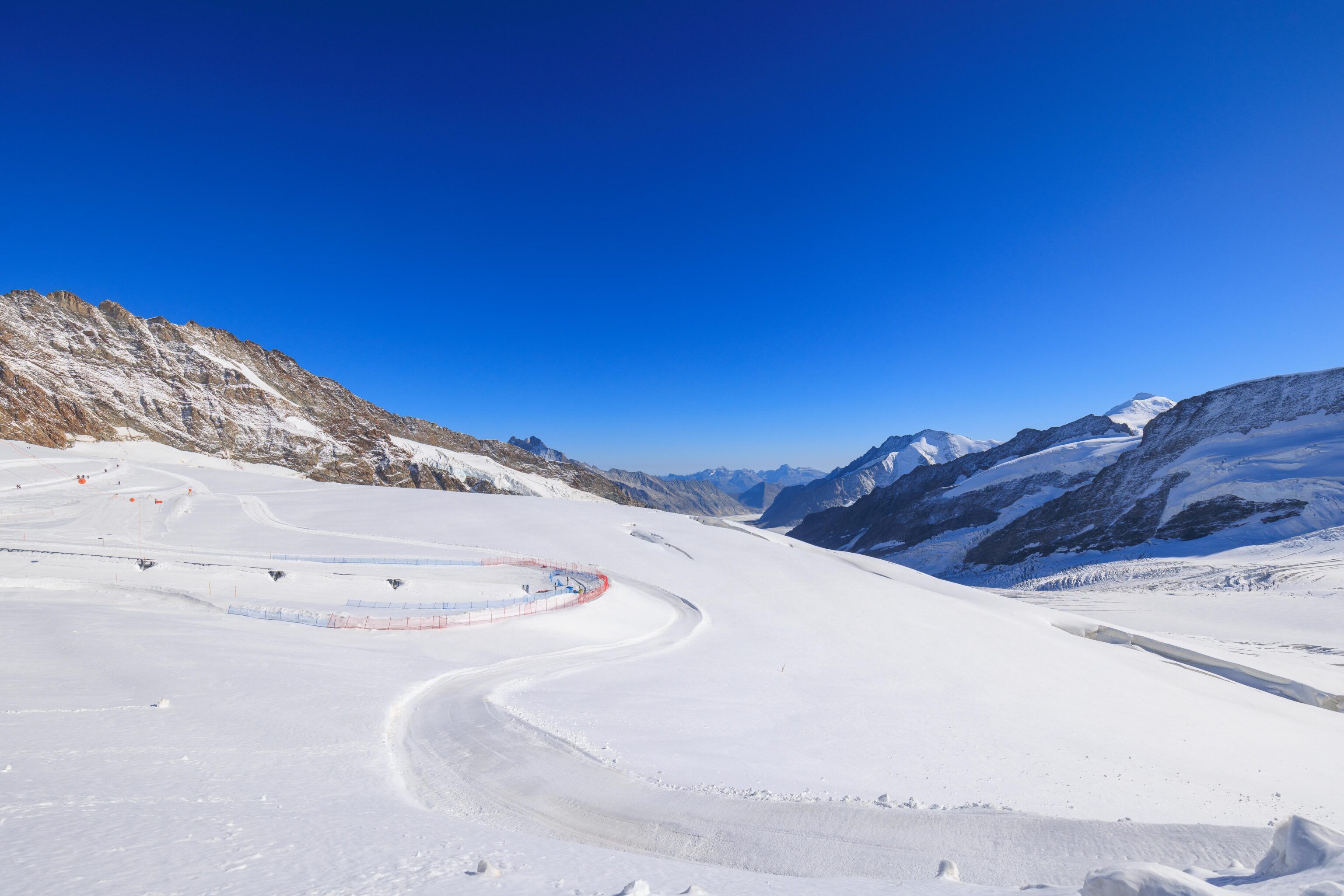
We quickly made it back to the Jungfraujoch entrance. After going back in, we quickly put our layers of clothing back on as we no longer had the heating effect of the sun. We tried to visit the Ice Palace but the normal entrance was closed. Instead, we ended up at the Glacier Plateau.
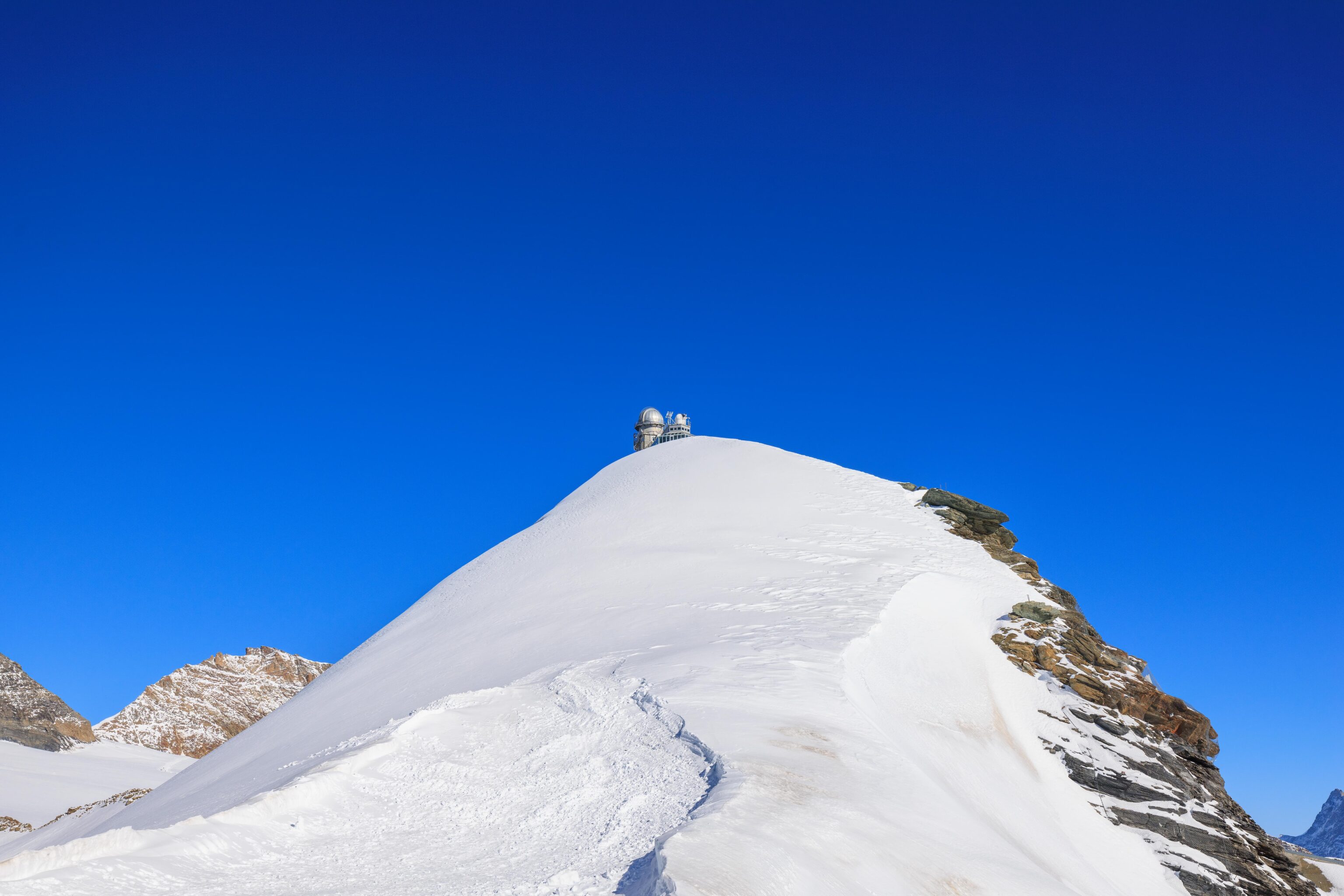
From here, we could see the Sphinx Observatory above us.
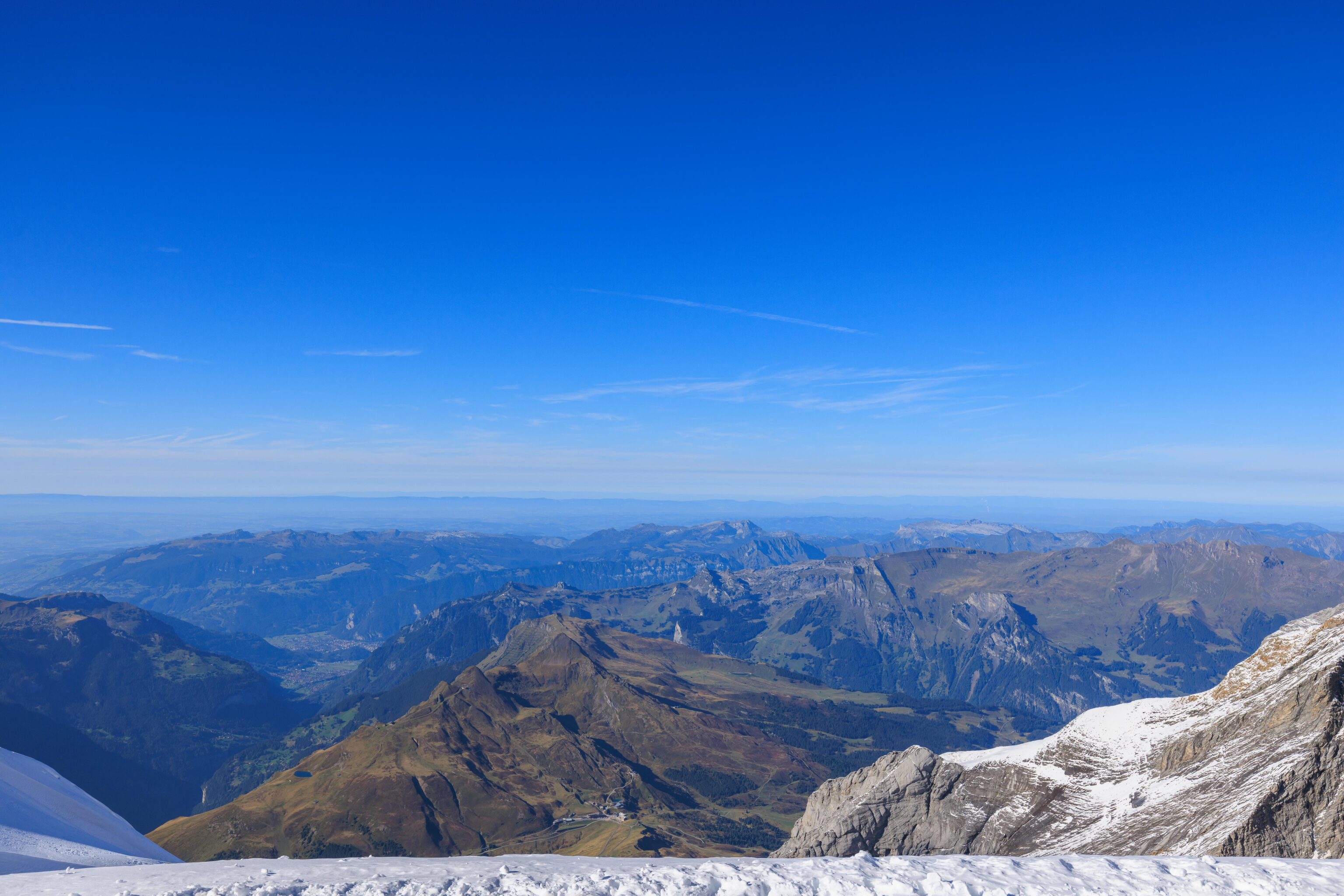
Quite an expansive view to the north, though similar to what we saw from the Sphinx.
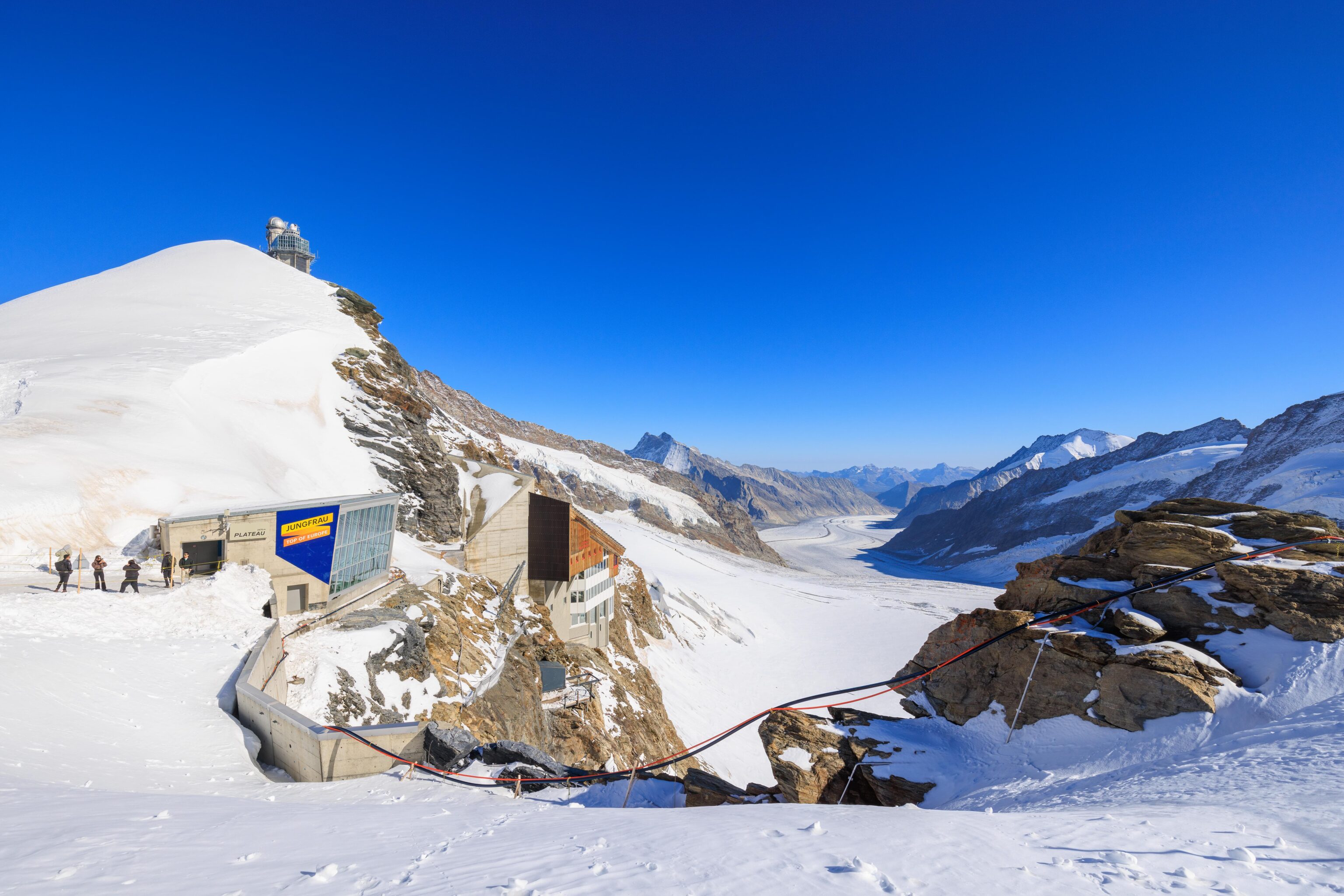
We could see more of the Sphinx after walking away from the entrance into Jungfraujoch. More of the Jungfraujoch structure is visible from here as well, though the majority is still underground.
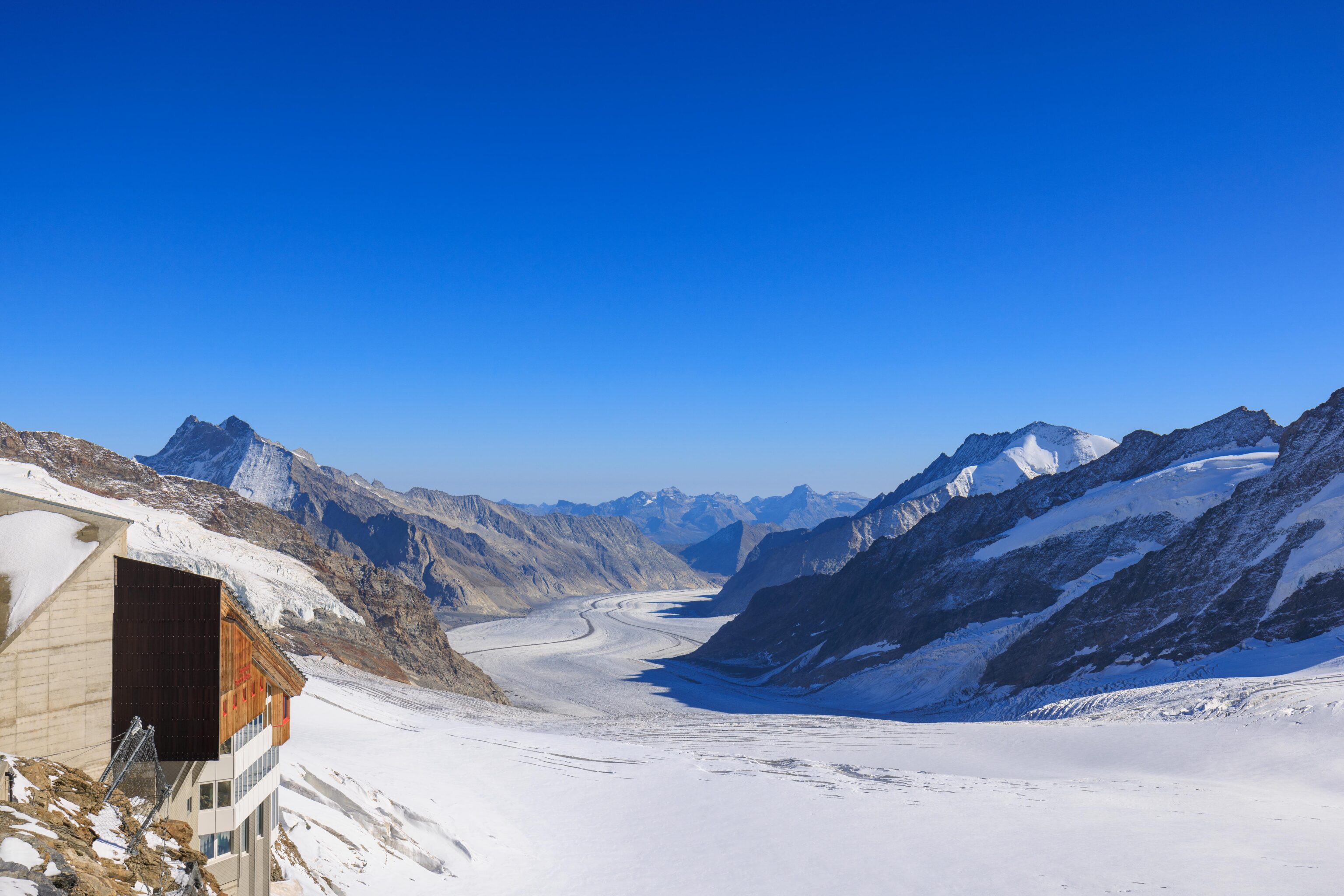
A nice view down the Aletschgletscher. There isn’t really anywhere to go at the Glacier Plateau other than a small groomed area of snow. We went back inside and found the alternate entrance to the Ice Palace, which seems like it is the normal exit.
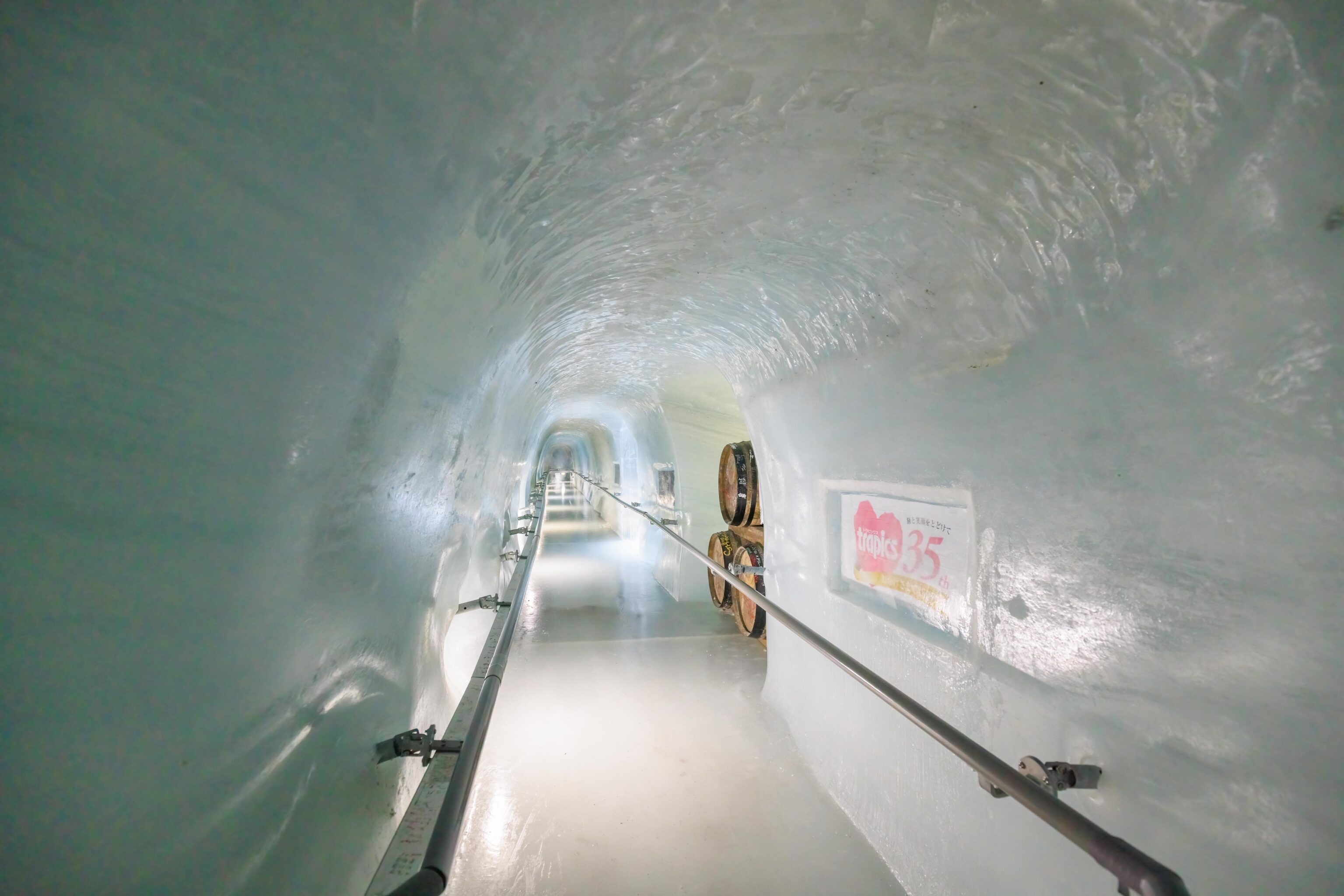
Three is a similar series of ice tunnels carved underground at Klein Matterhorn. Those tunnels are called the Glacier Paradise. The key difference is that there, they have mats on the ground for traction. Here, the ground is pure ice. There is a sign indicating that traction devices are not permitted as they would ruin the floor. So, this was something like ice skating in boots.
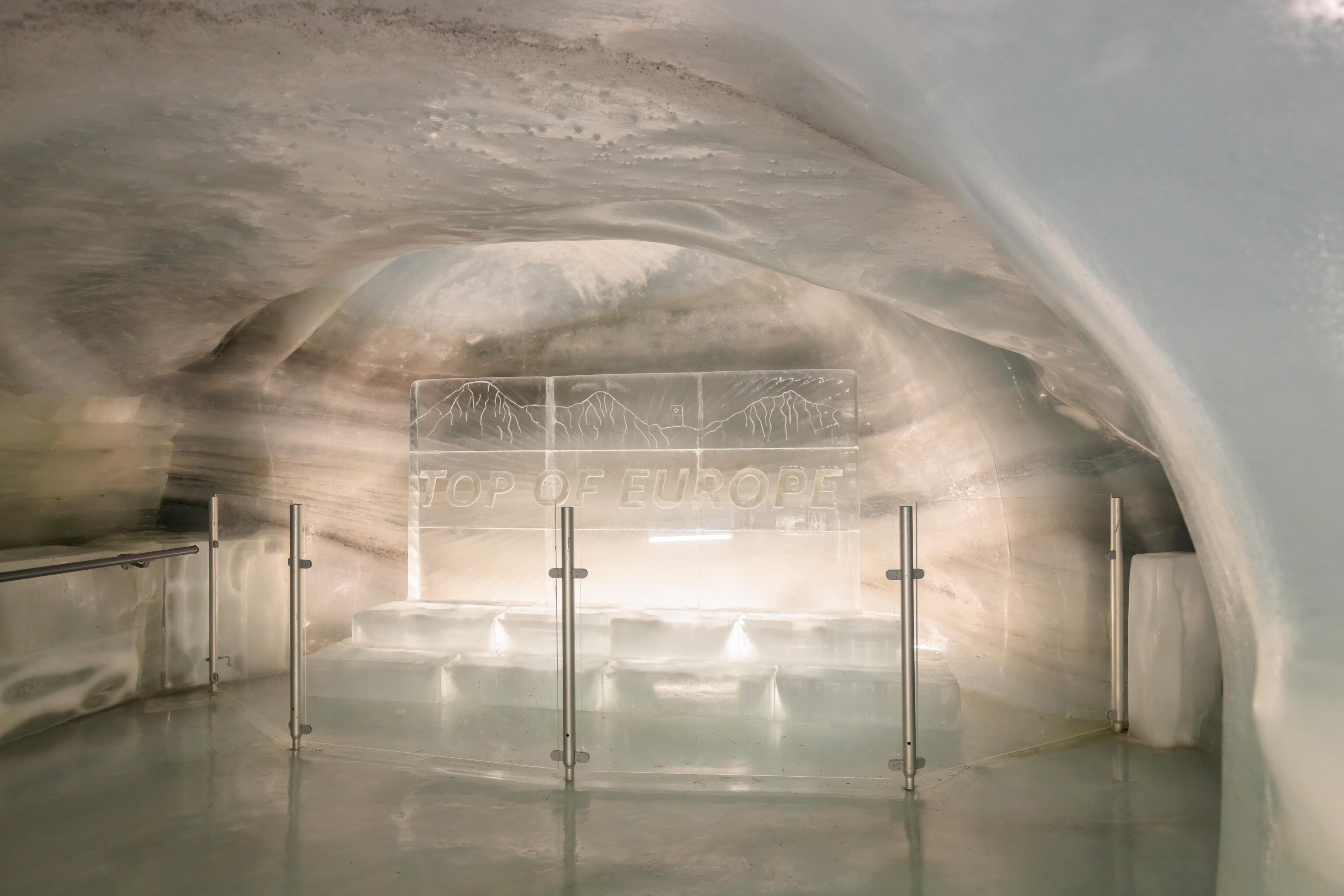
The Top of Europe! Not really, but it is a nice slogan.
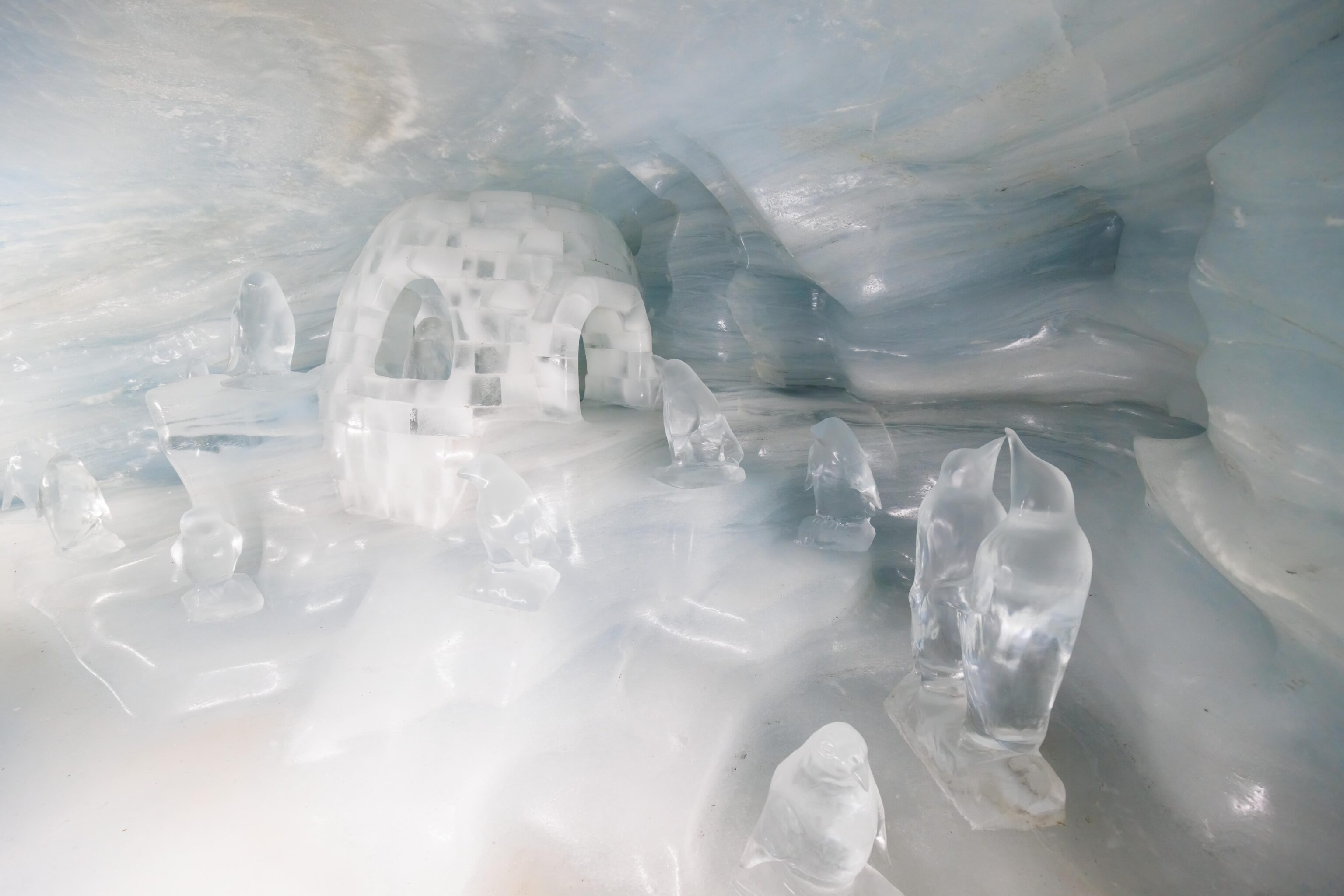
Penguins and an igloo.
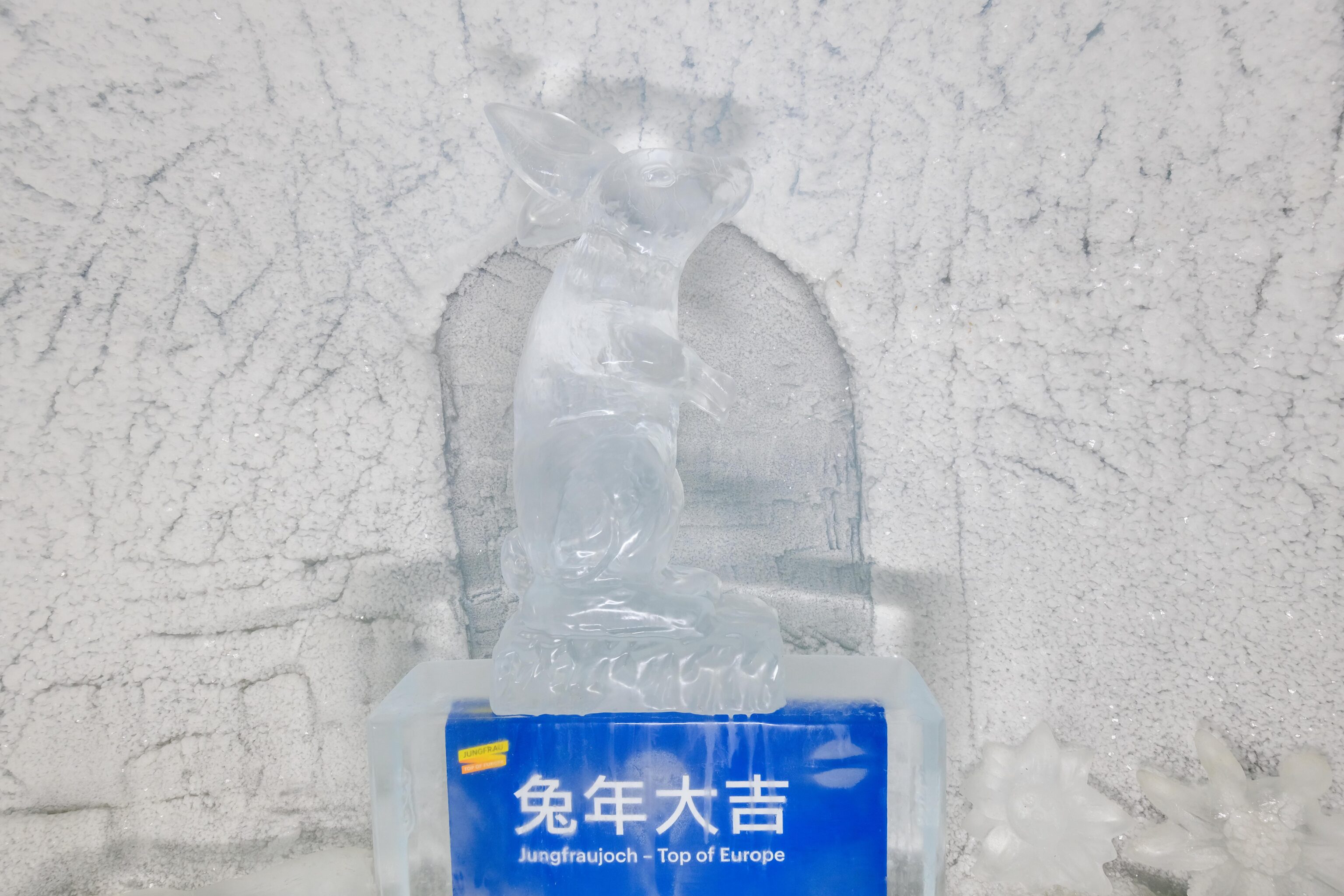
Presumably, this was carved earlier this year for the Year of the Rabbit.
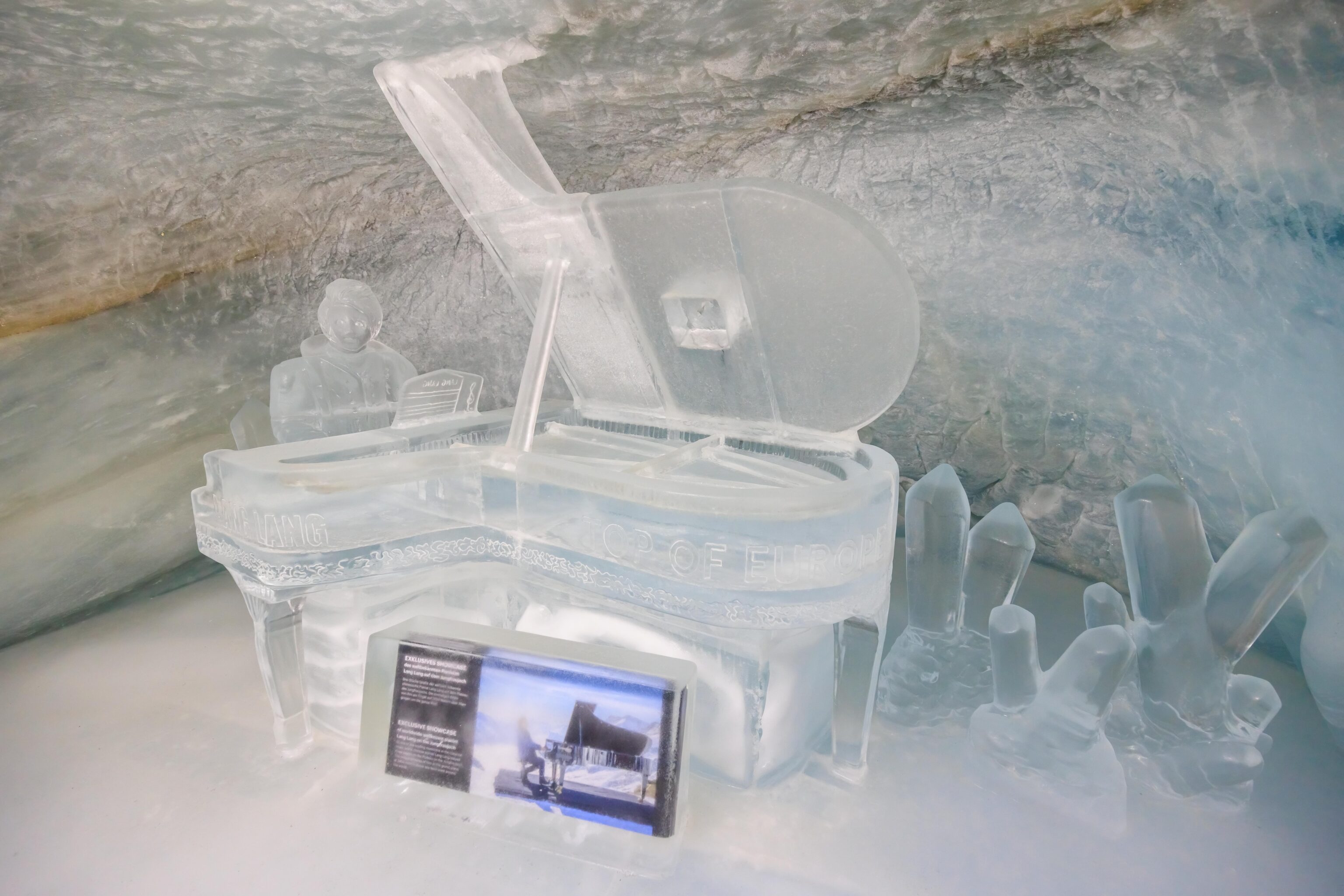
Various promotional events have taken place here at Jungfraujoch. One of them was a piano performance by Chinese pianist Lang Lang.
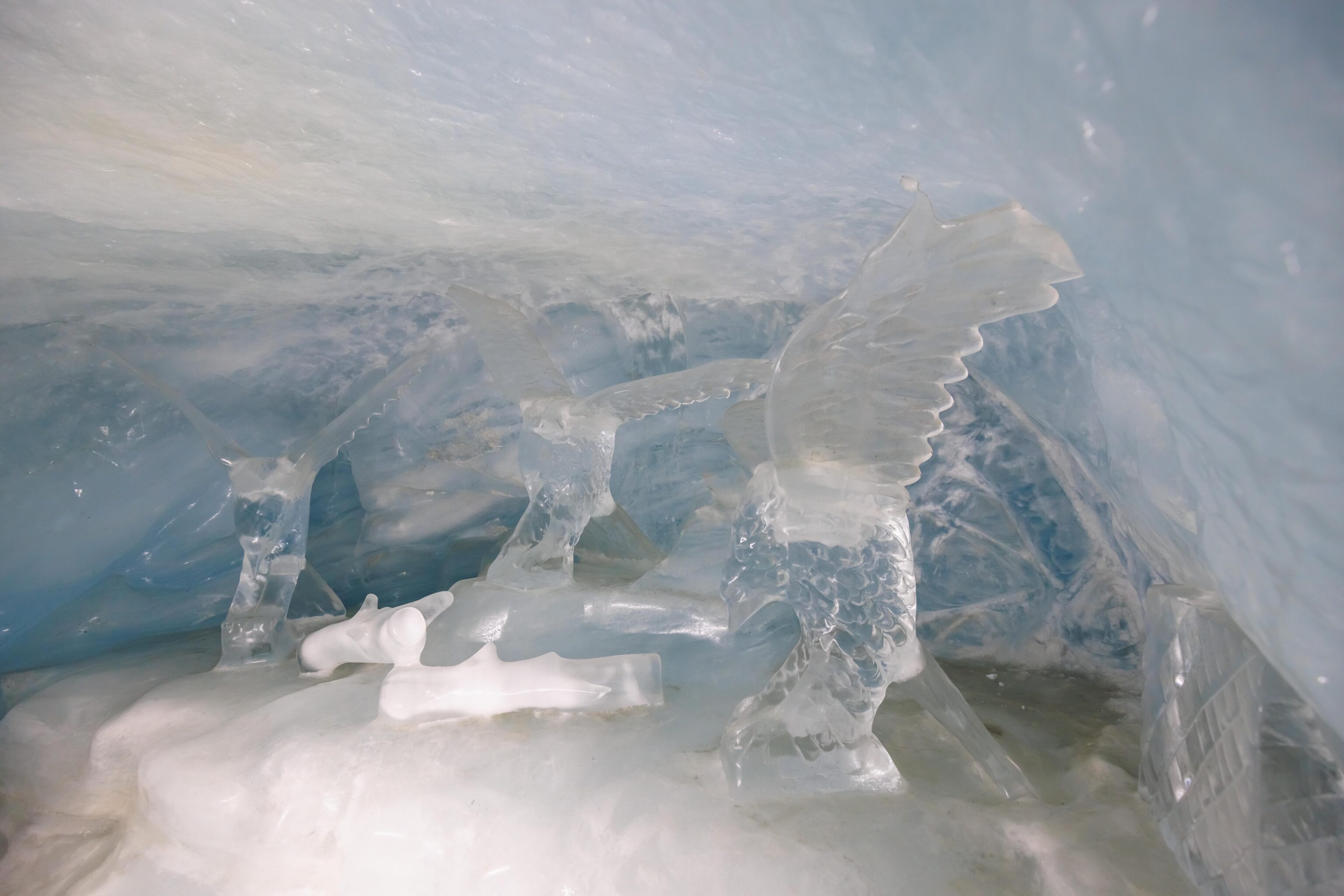
Three eagles, though they’re a bit hard to make out.
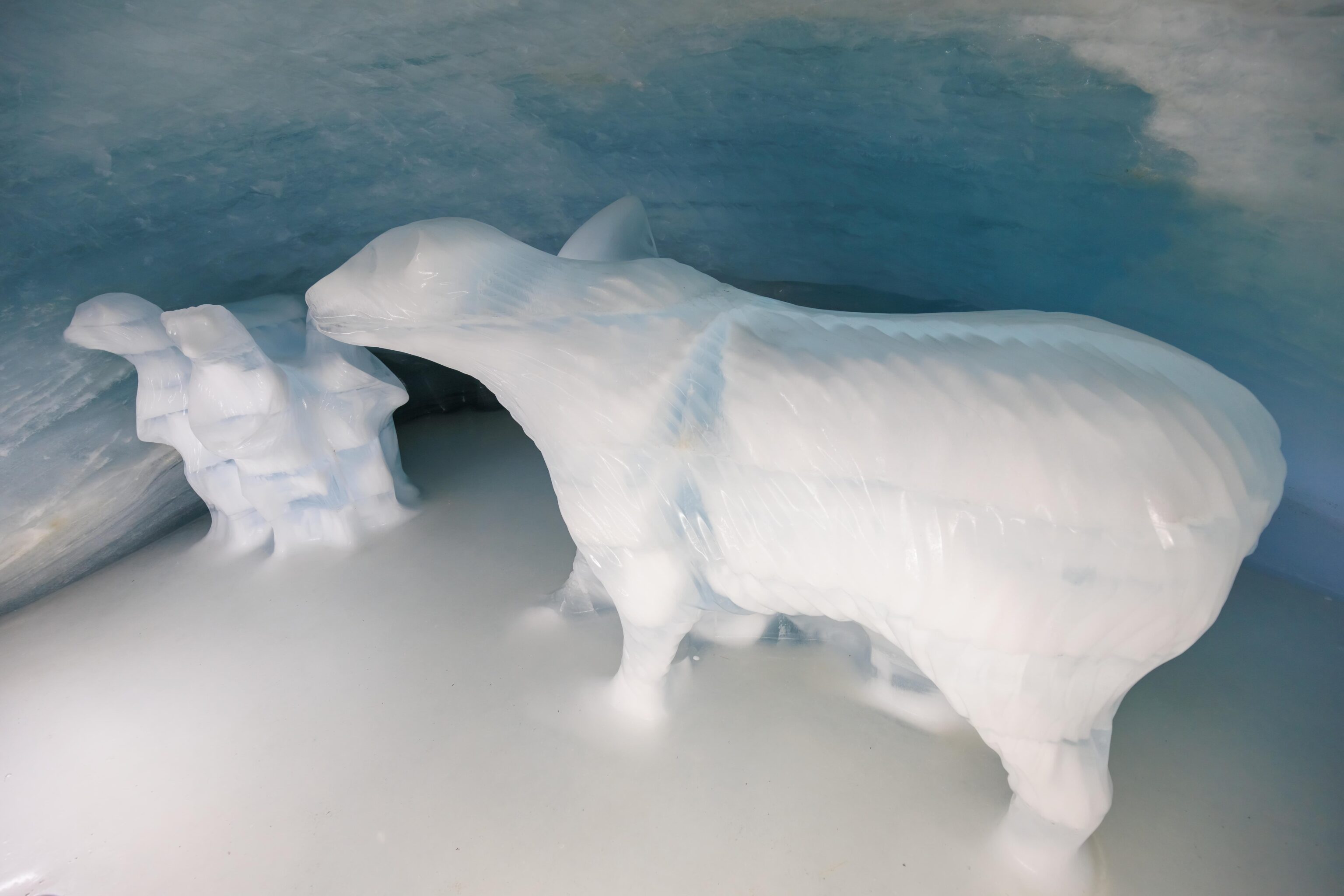
This is supposed to be a bear and three cubs. The cubs look a bit like prairie dogs though! We ended up near the normal entrance, which was closed for maintenance. We had to backtrack to exit. On the way, we photographed some things that we quickly passed by earlier.
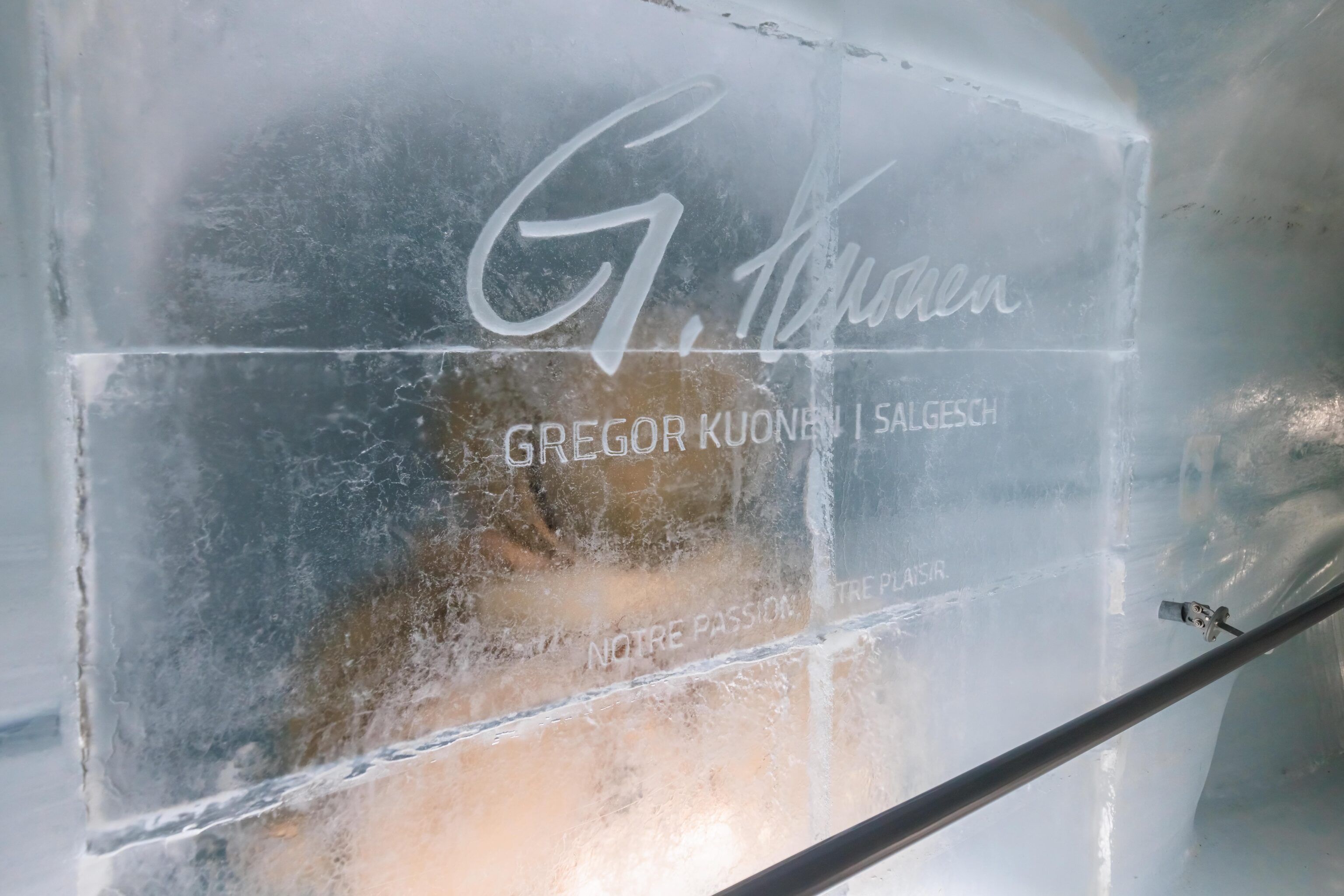
This apparently refers to wine that was aged for a year here.
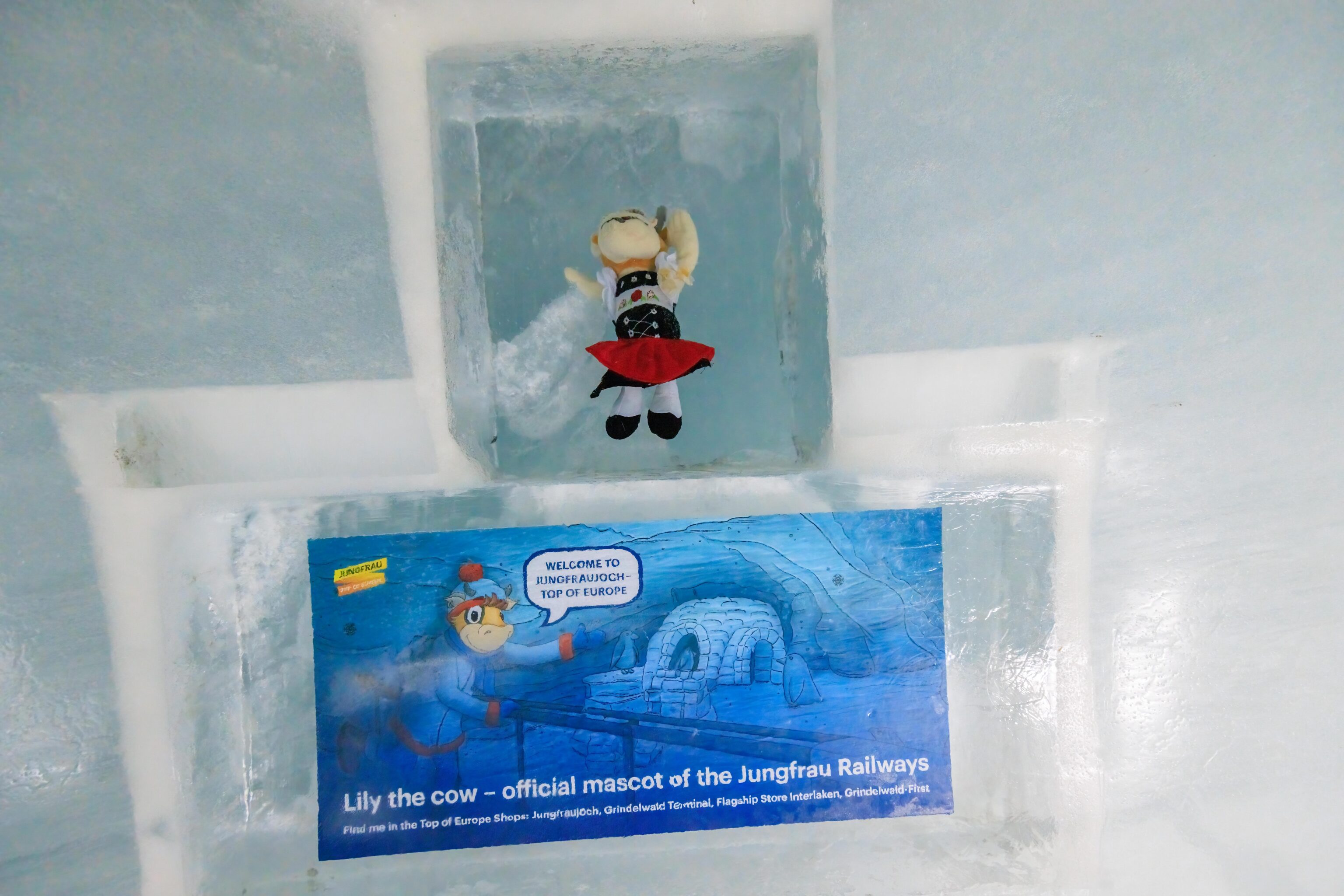
We’ve seen a few Lily the Cow items in the gift shops.
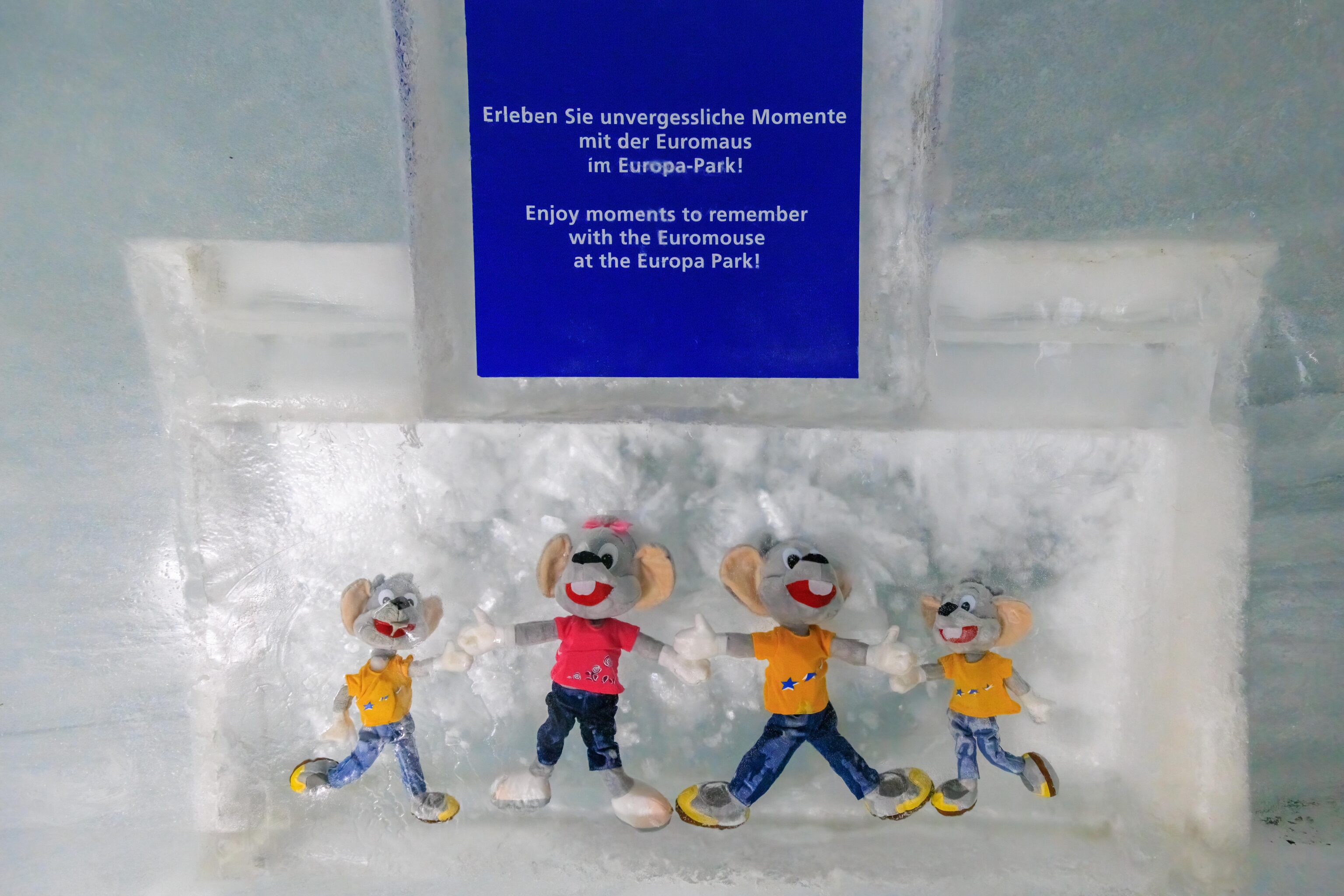
This display refers to Europa Park, an amusement park in Germany to the north of Basel. The Euromaus refers to their mice mascots. One of them seems to be named Ed.
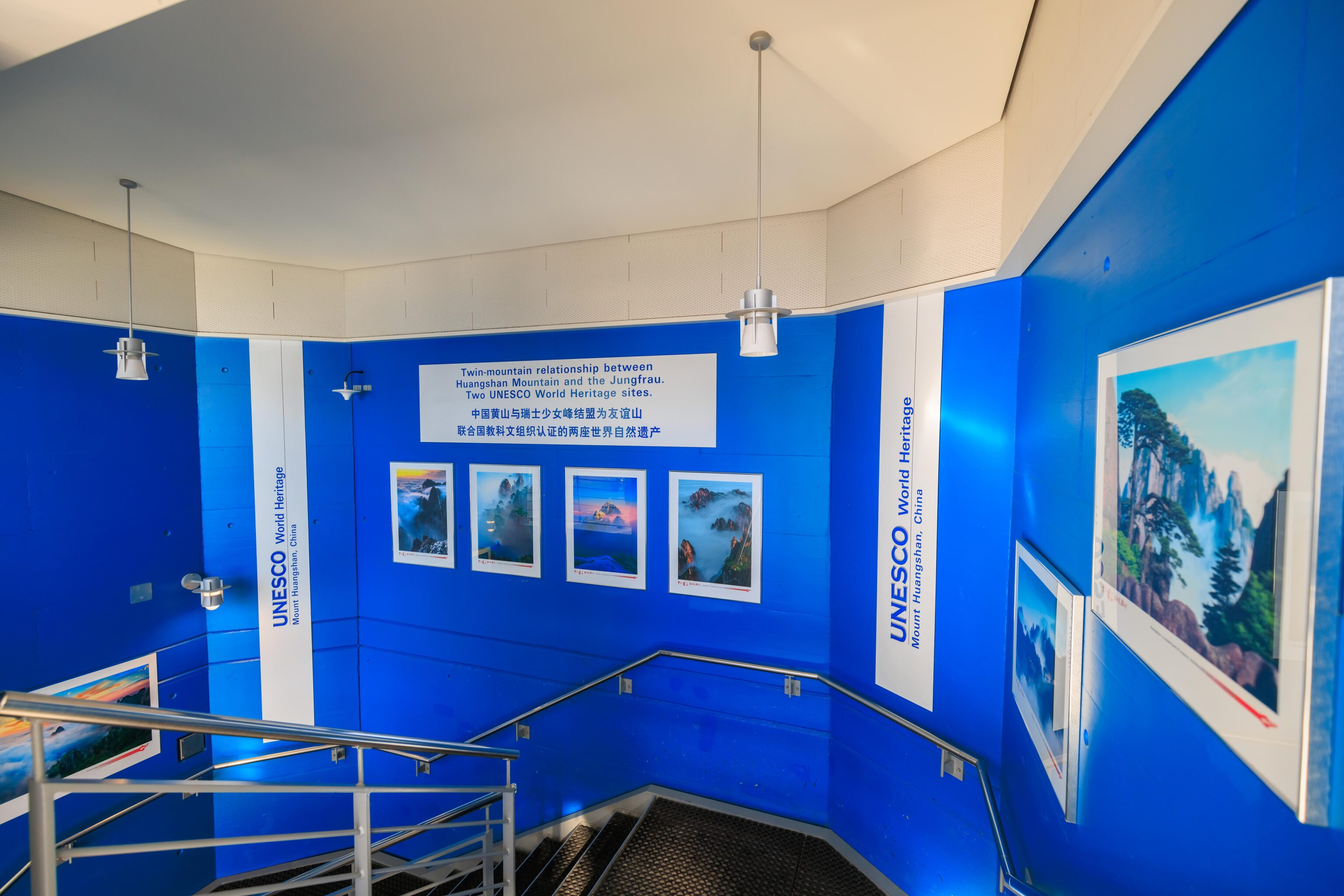
The stairs at the exit show Huangshan in China. Jungfrau and Huangshan are both UNESCO World Heritage sites and have a twin mountain promotional relationship.
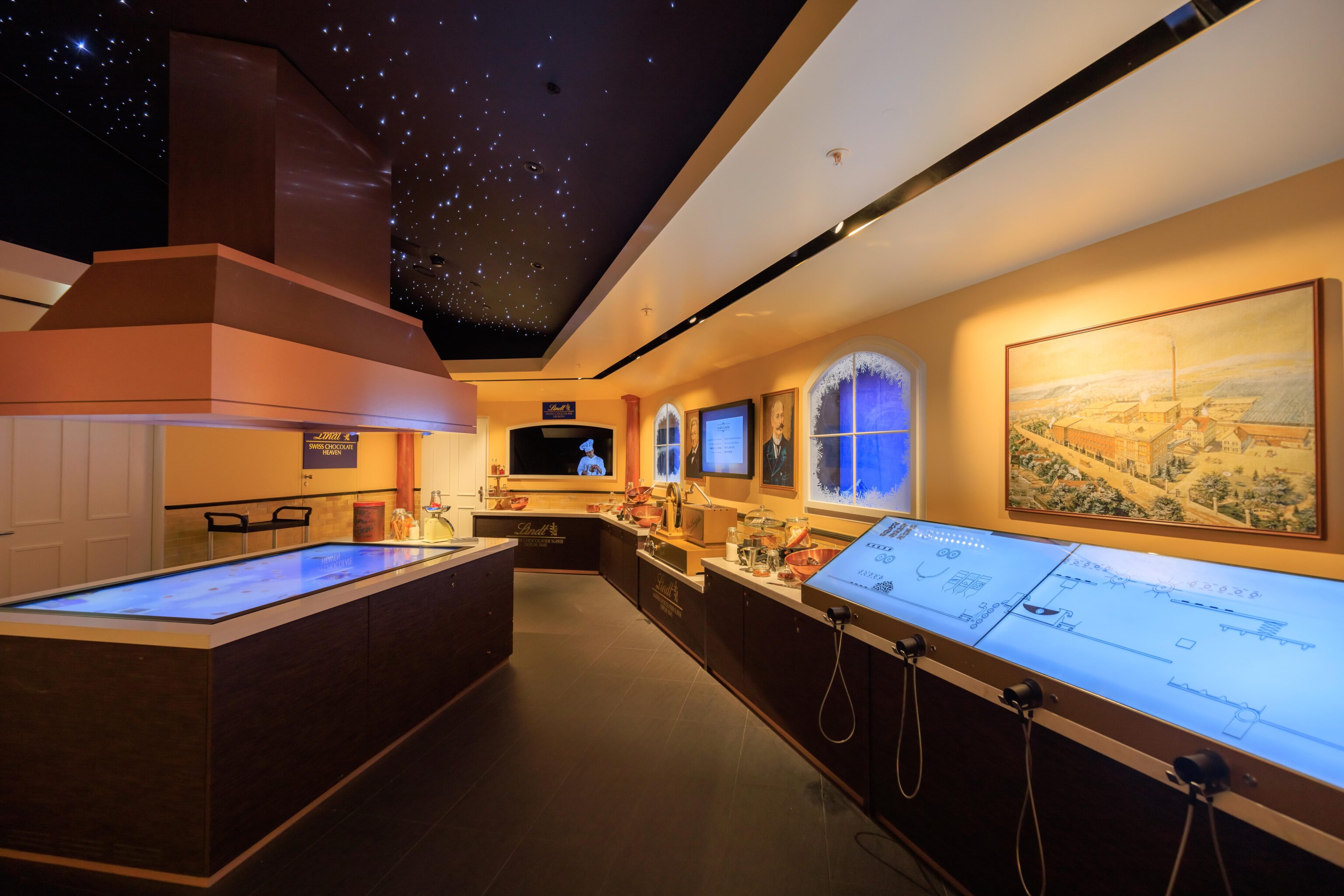
We briefly stepped into the Lindt Swiss Chocolate Heaven. Unfortunately, the shop didn’t seem to have any Jungfrau specific items.
The larger gift shop in Jungfraujoch was closed but the smaller one at train level was open. We browsed it for a bit and bought some souvenirs before heading back down on the train.
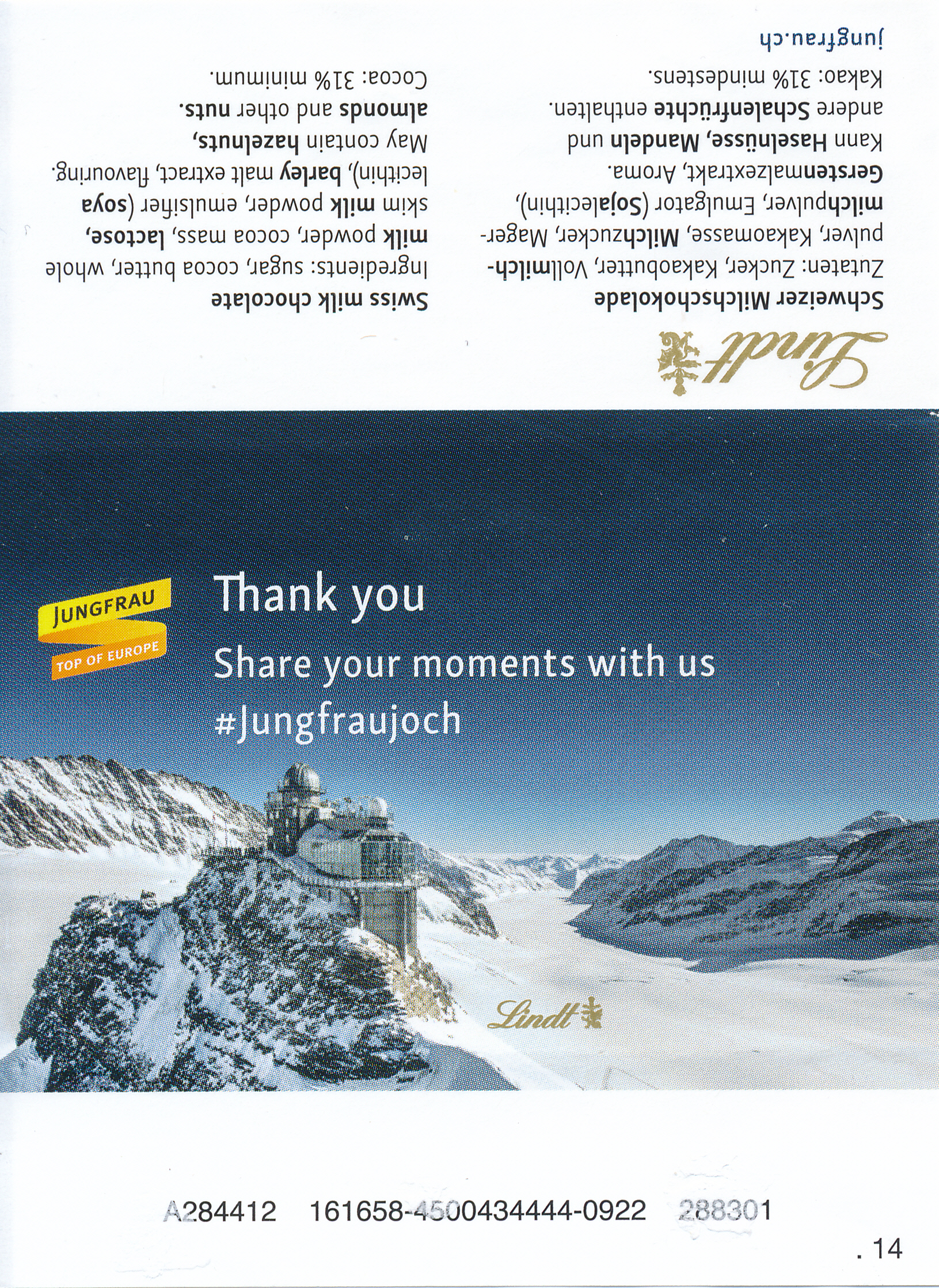
Thank you chocolates from Lindt were given out on the train.
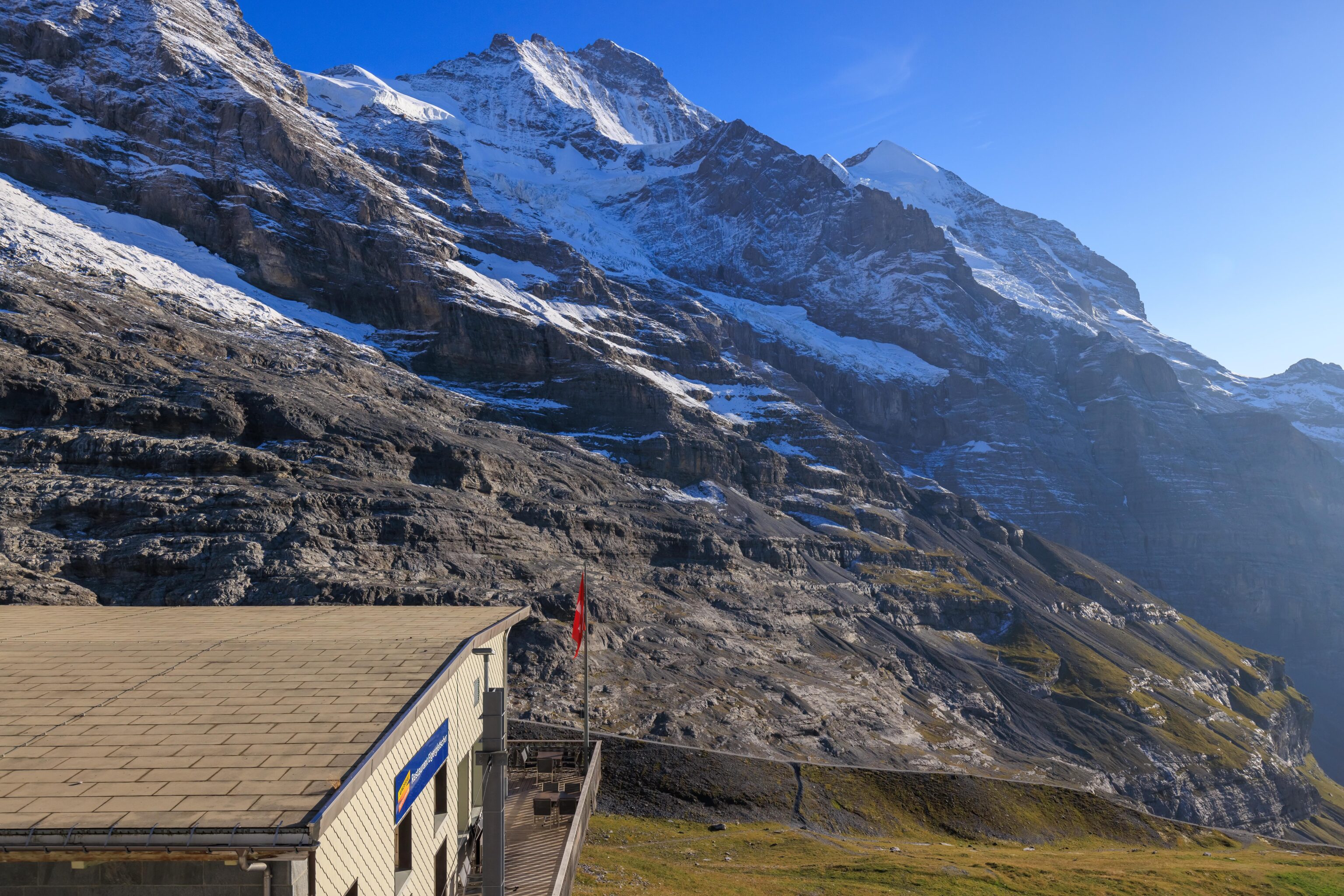
It was 5:40pm by the time we got back to Eigergletscher. We took a quick look around outside. Quite different from that snowy first day when we were outside here!
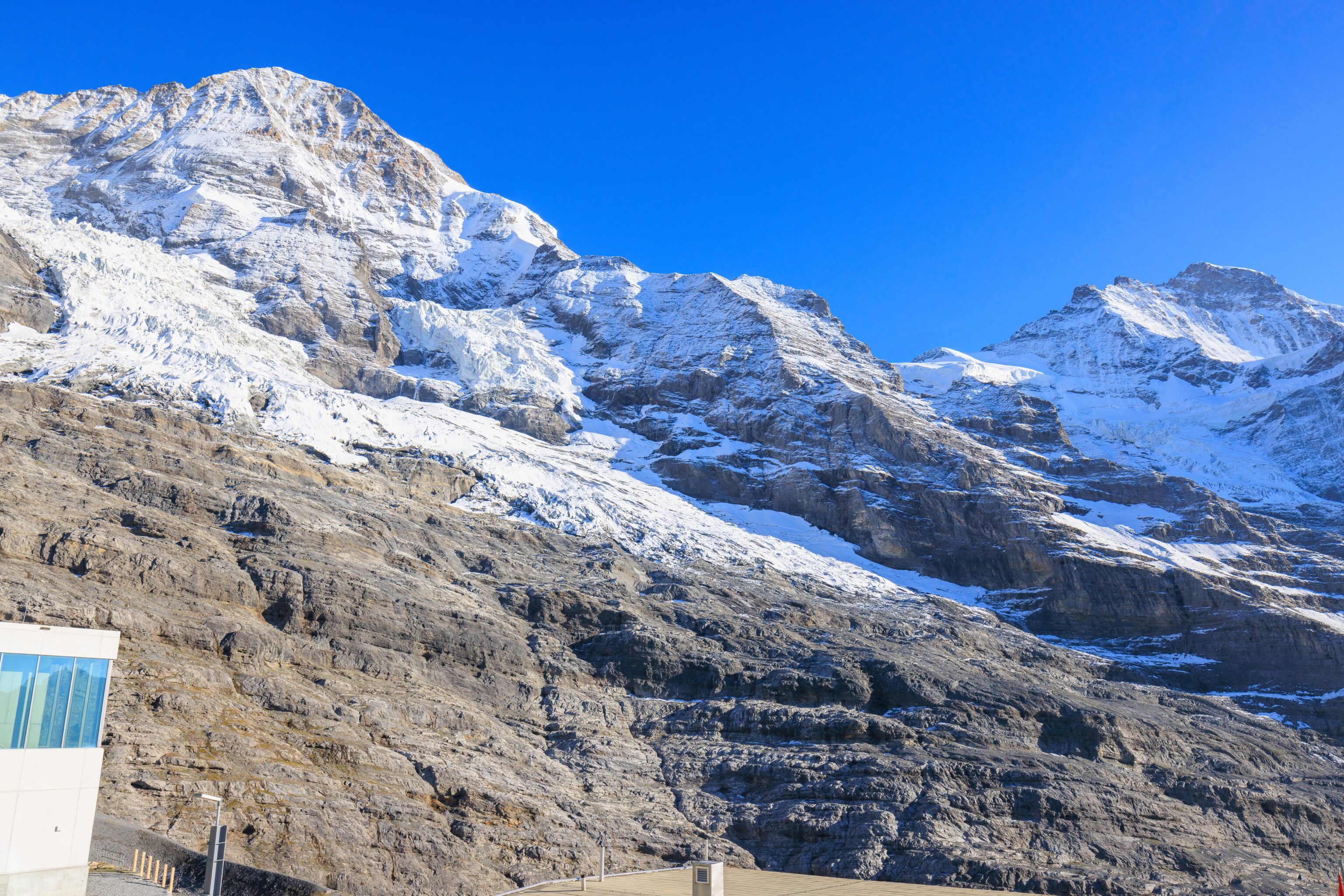
There is a Crash Landing on You paraglinding scene which happens somewhere above here. We saw the sign for it on our first day.
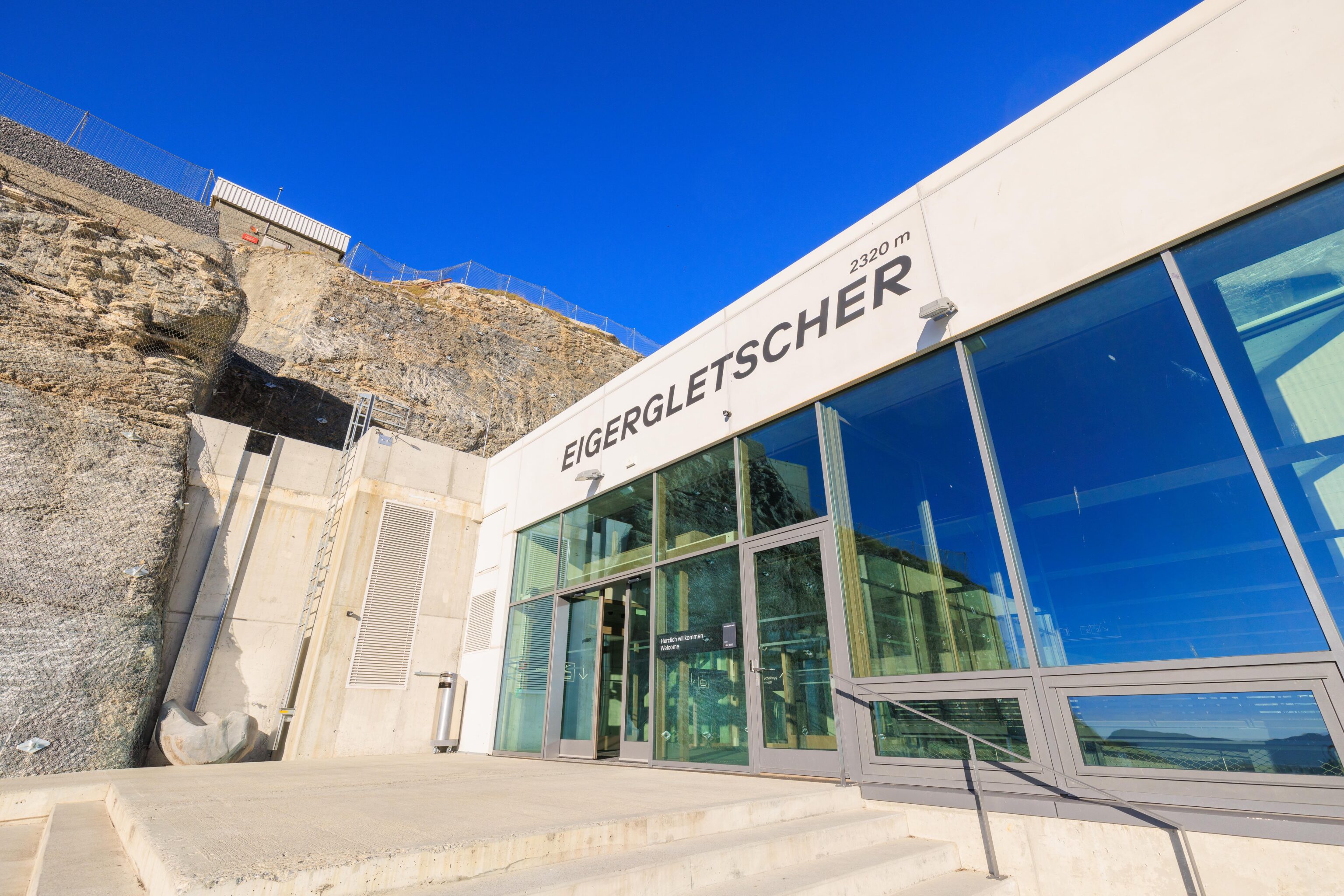
We went back inside to catch the Eiger Express down to Grindelwald Terminal.
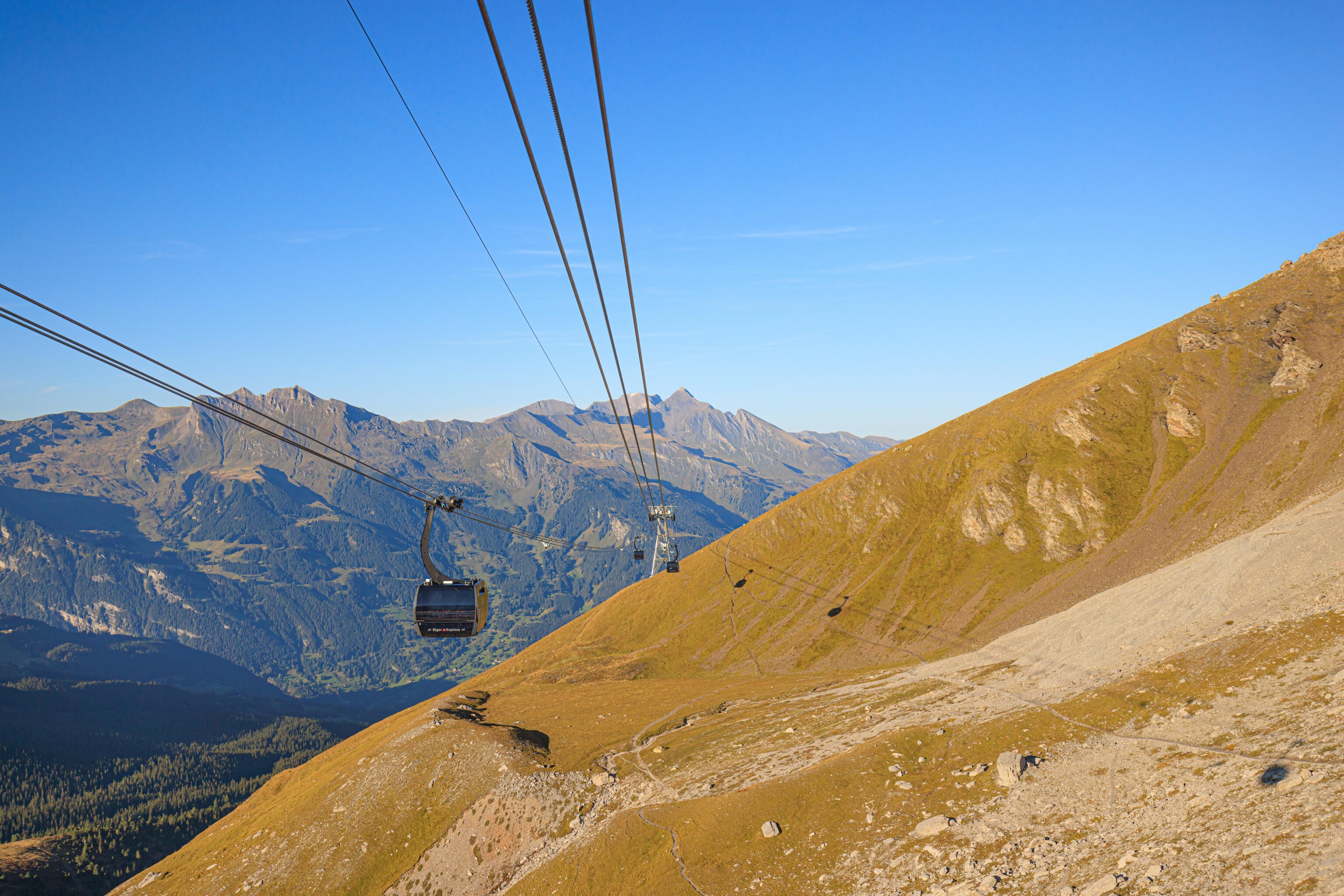
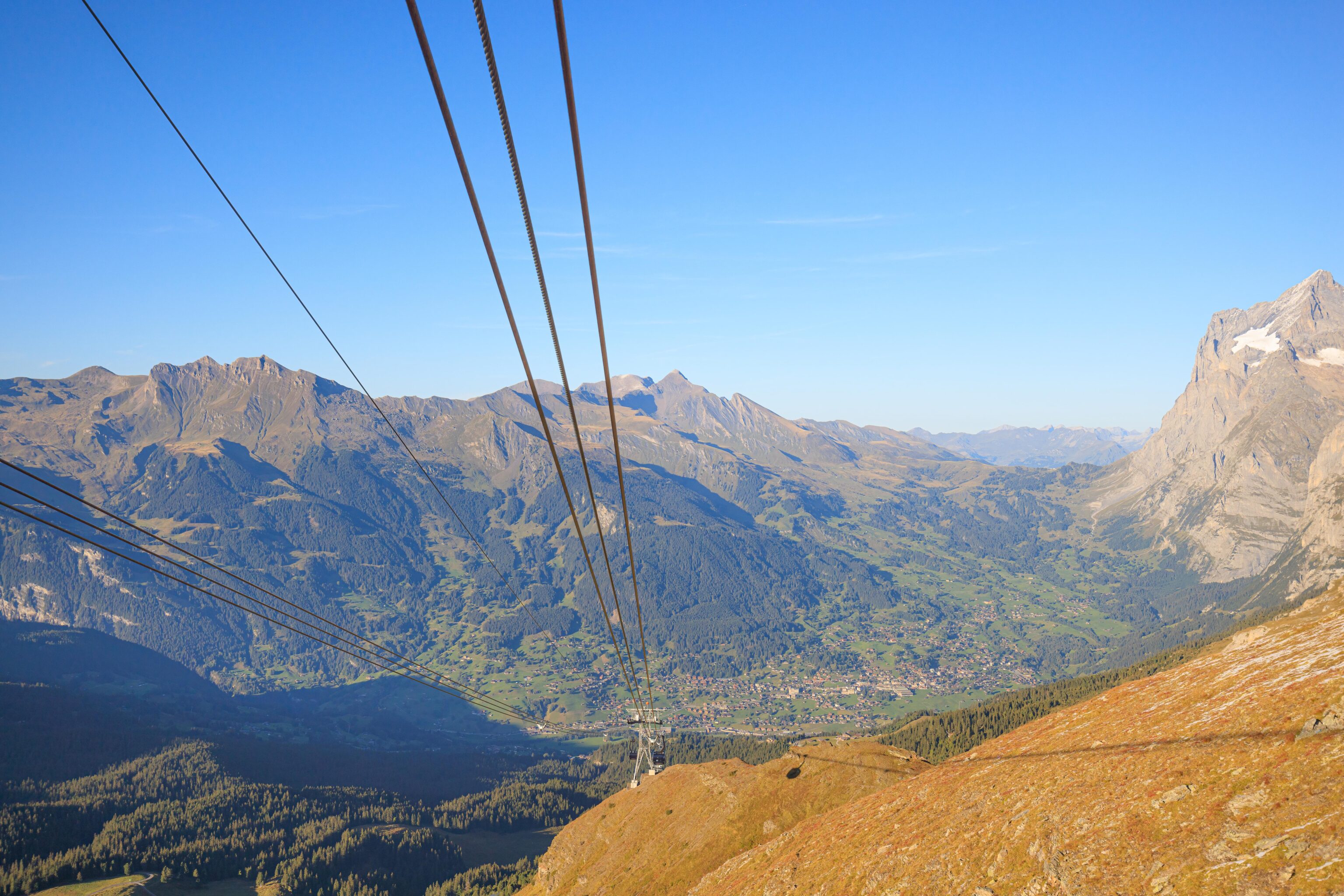
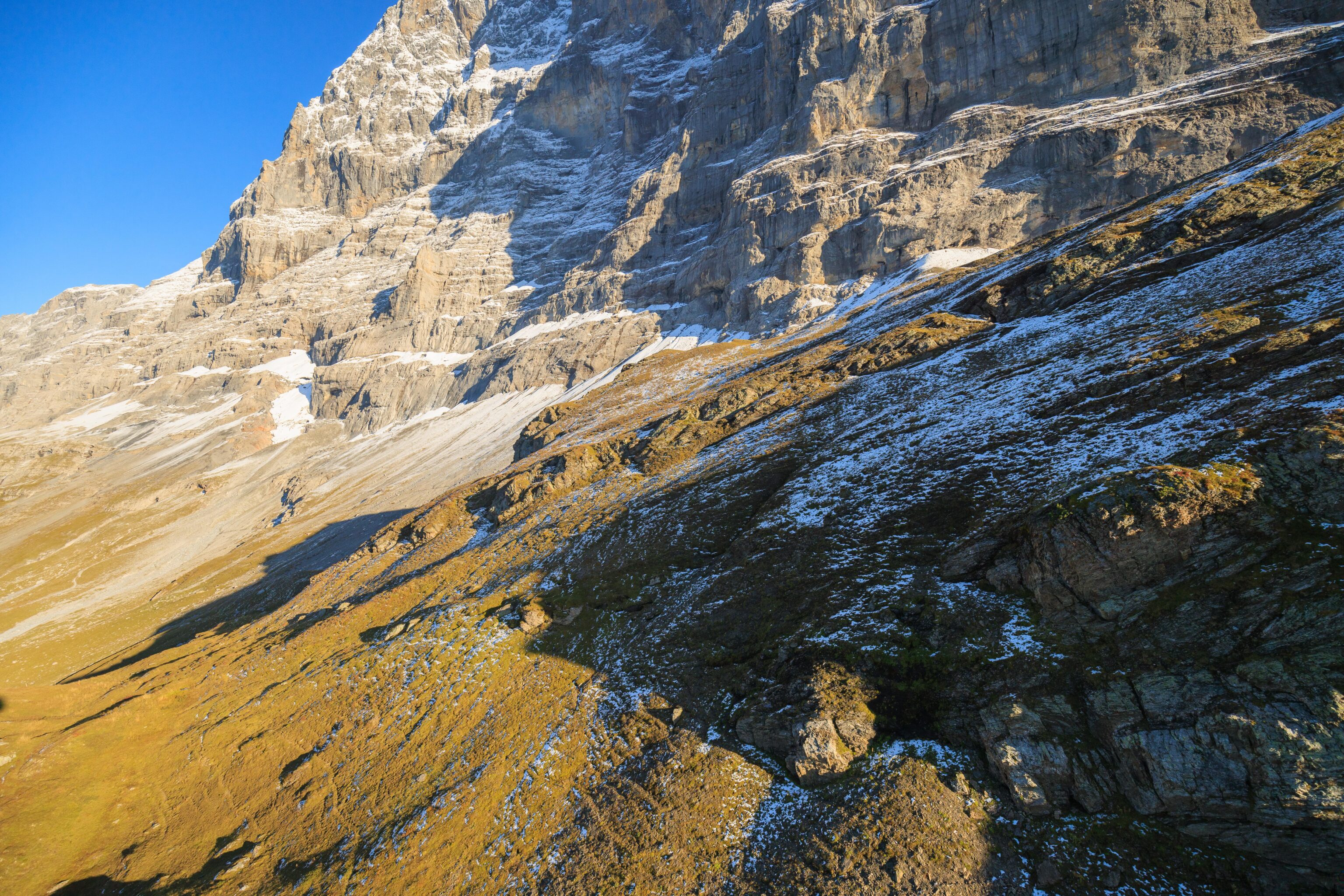
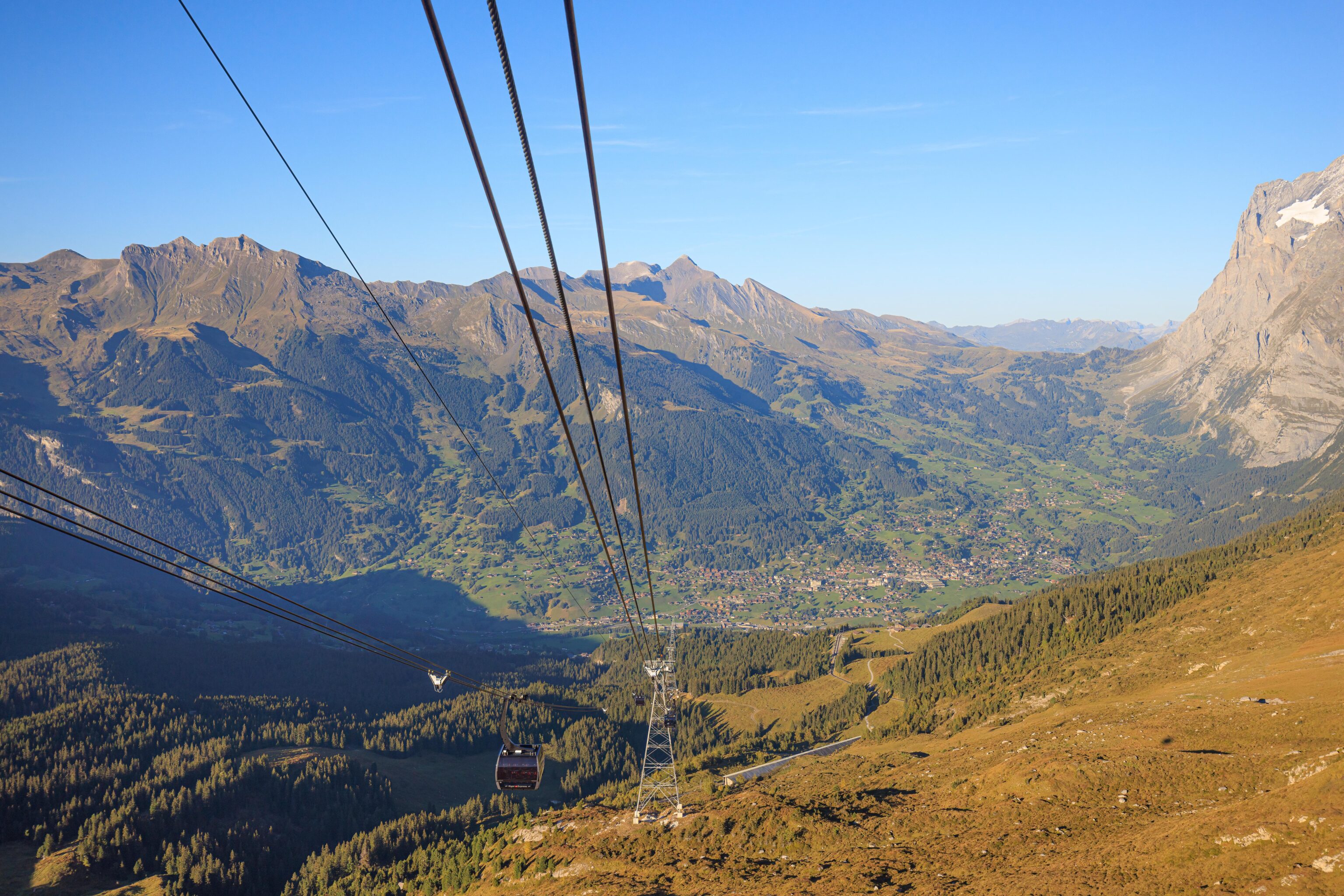
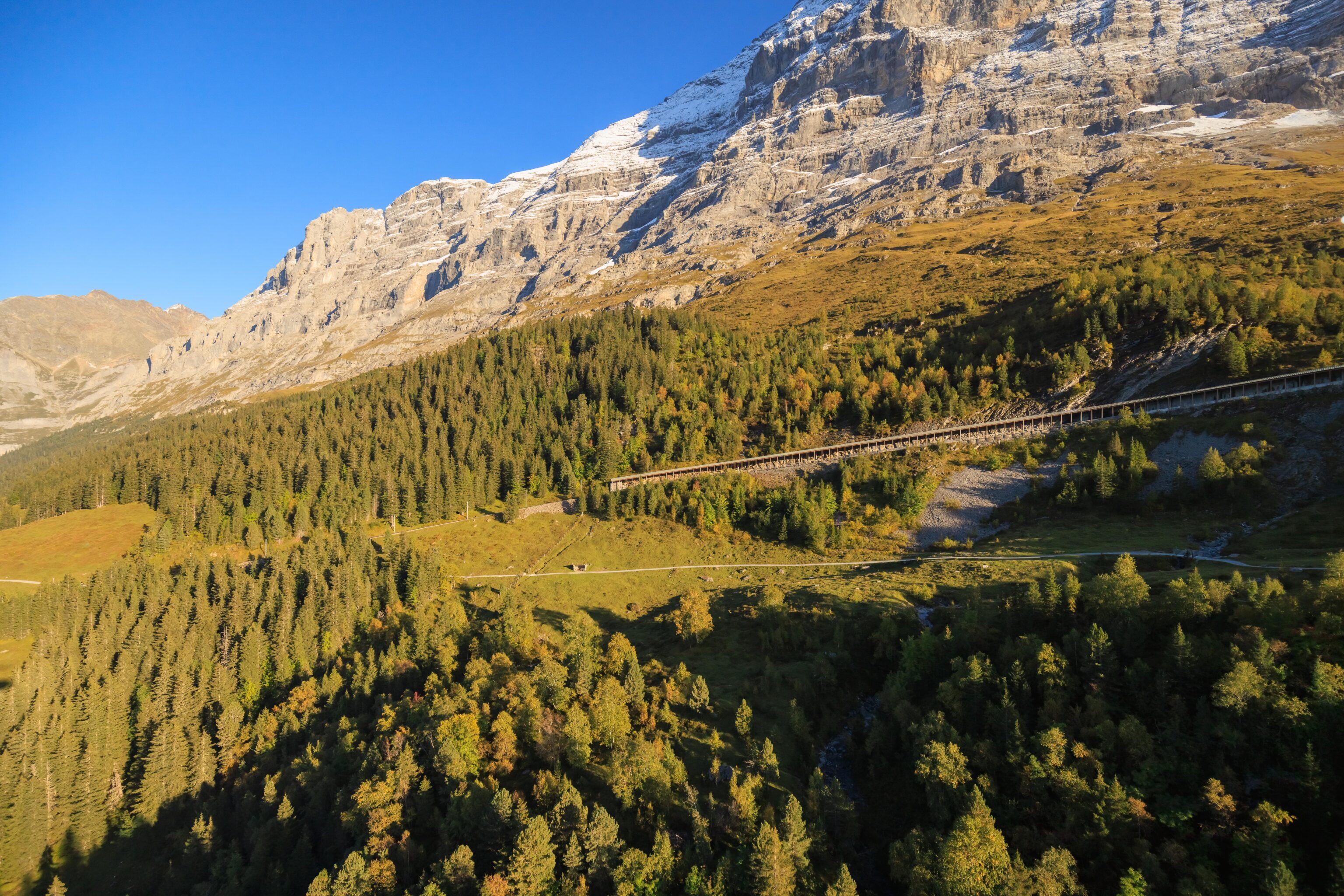
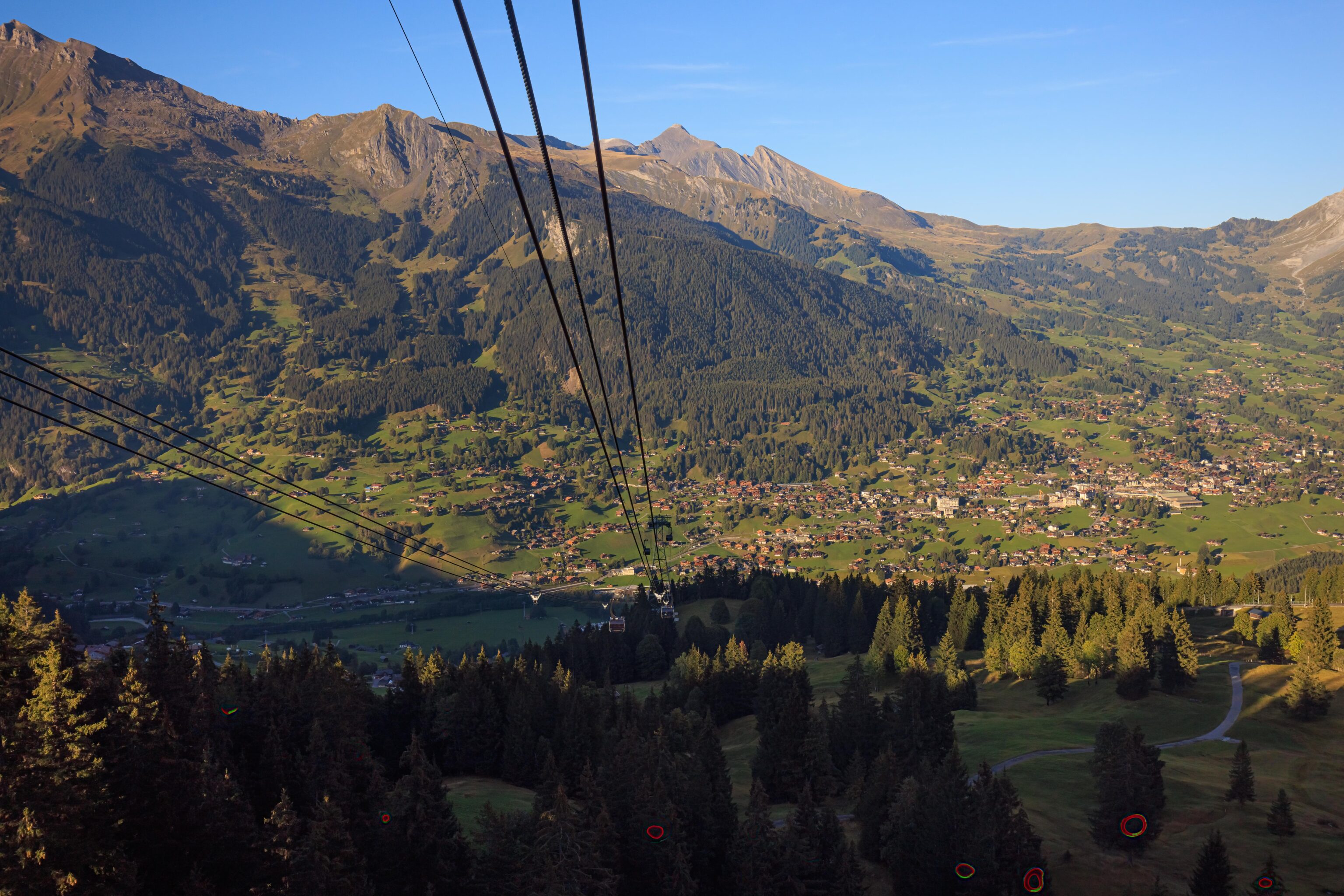
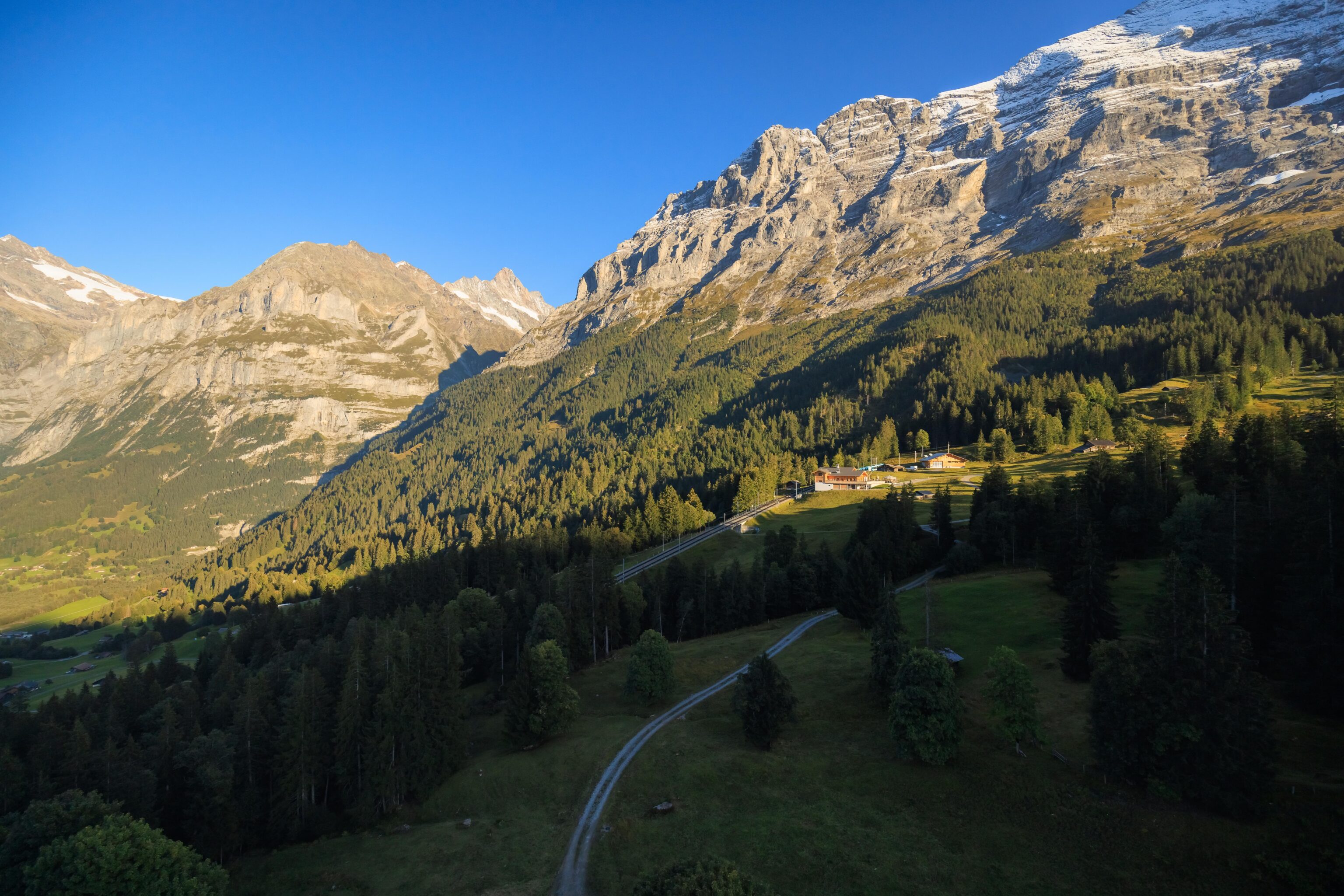
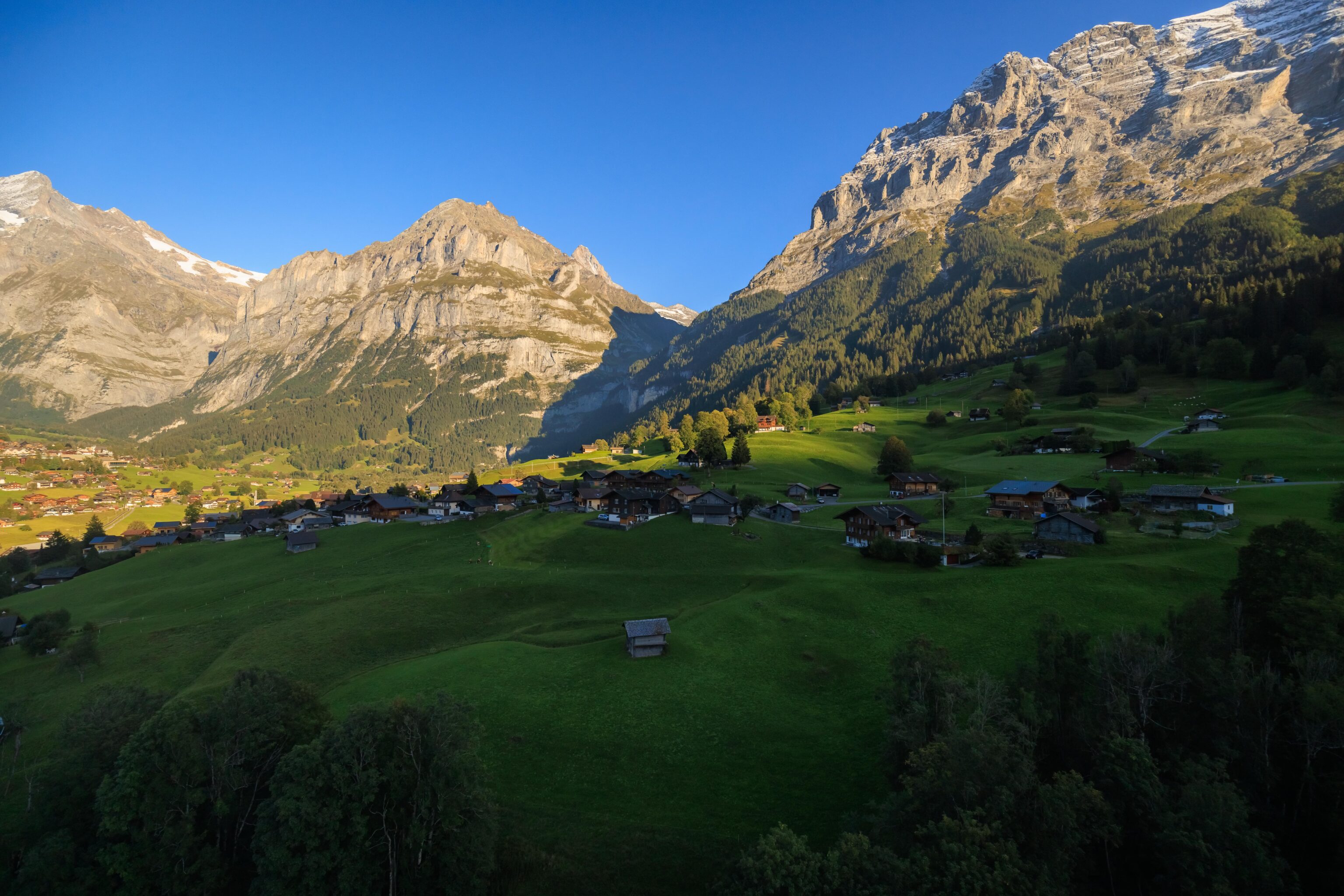
It wasn’t busy at Eigergletscher and we soon were back at Grindelwald Terminal.
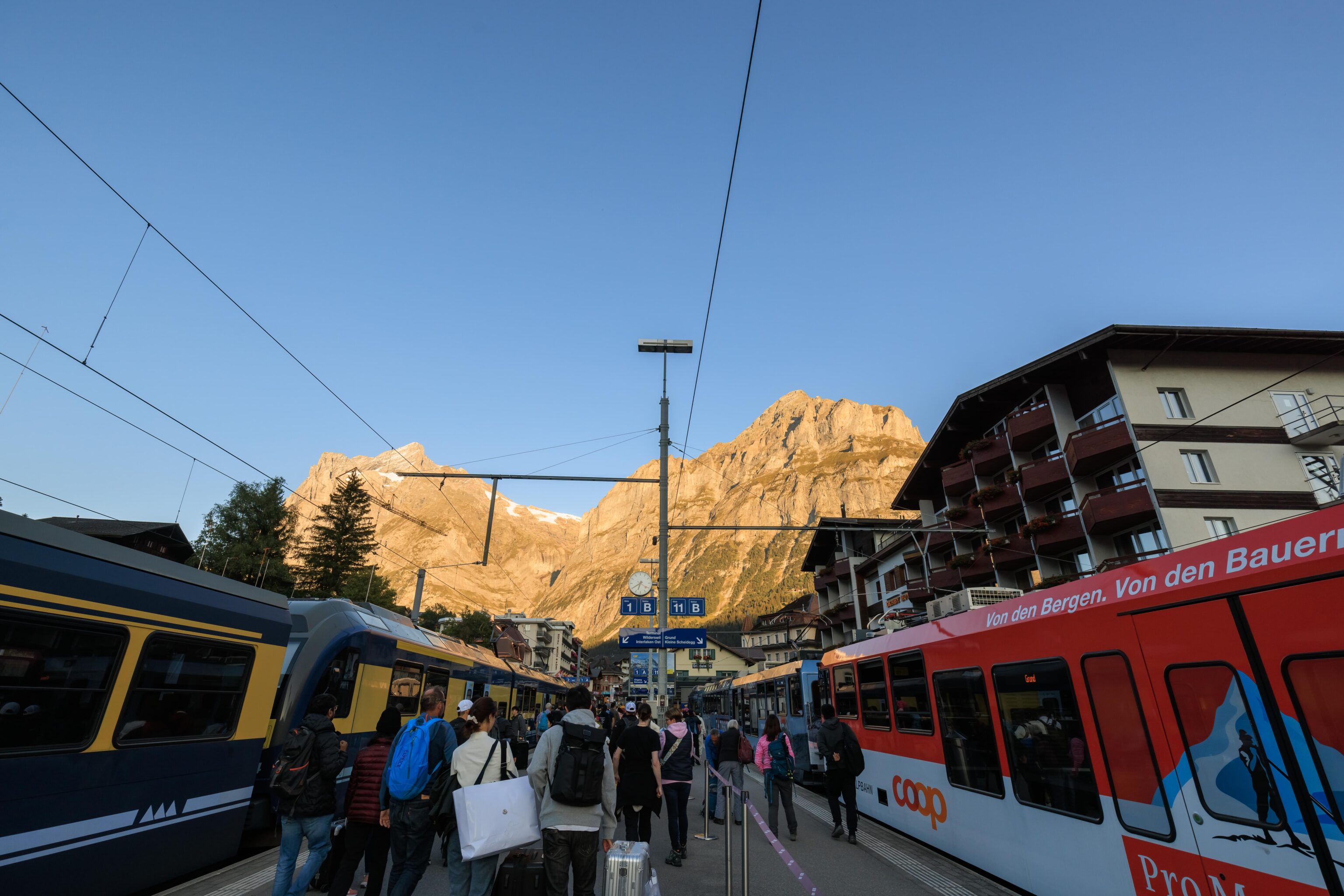
We caught the next train, returning to Grindelwald at 6:40pm.
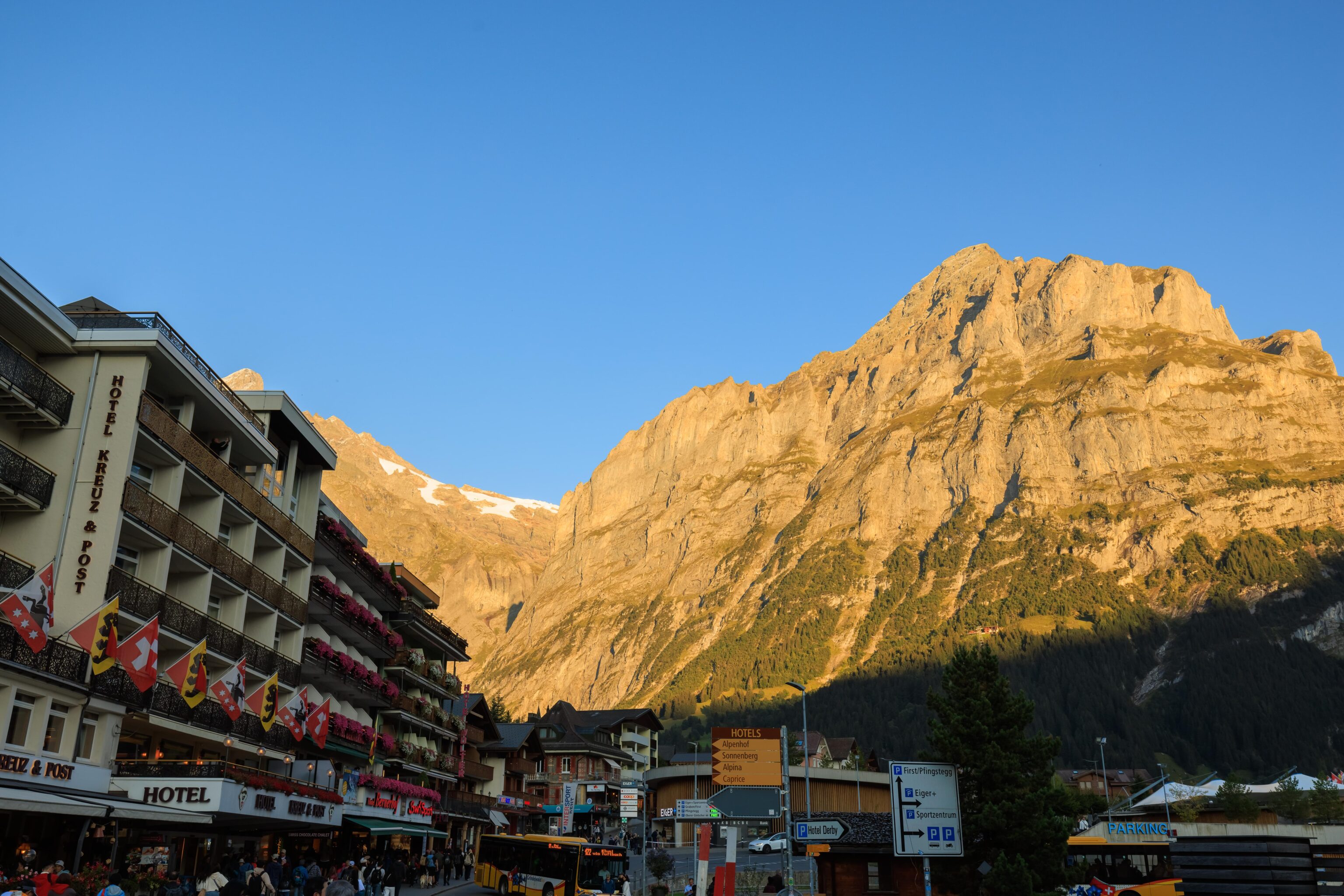
The mountains were starting to glow as sunset was approaching.
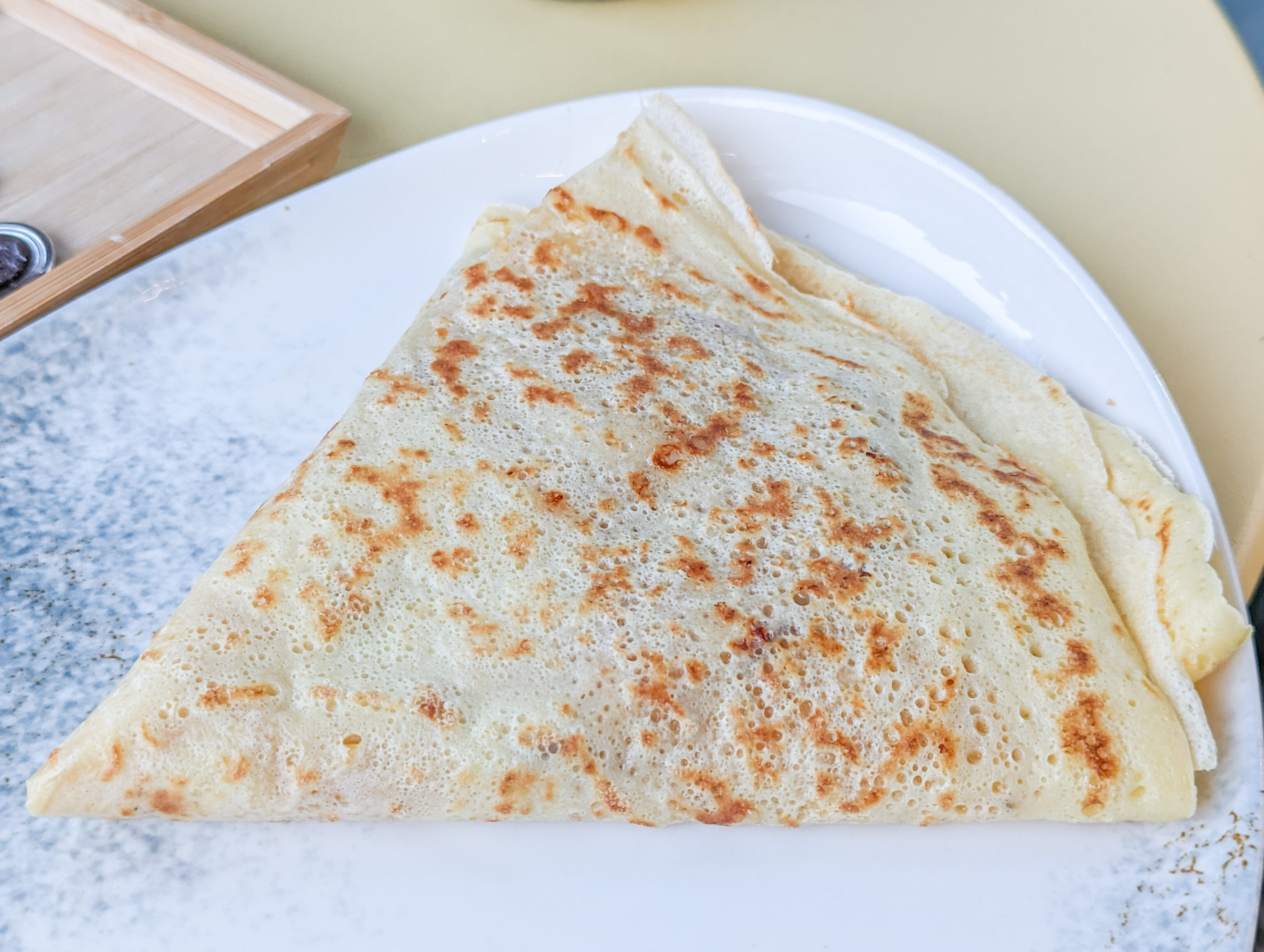
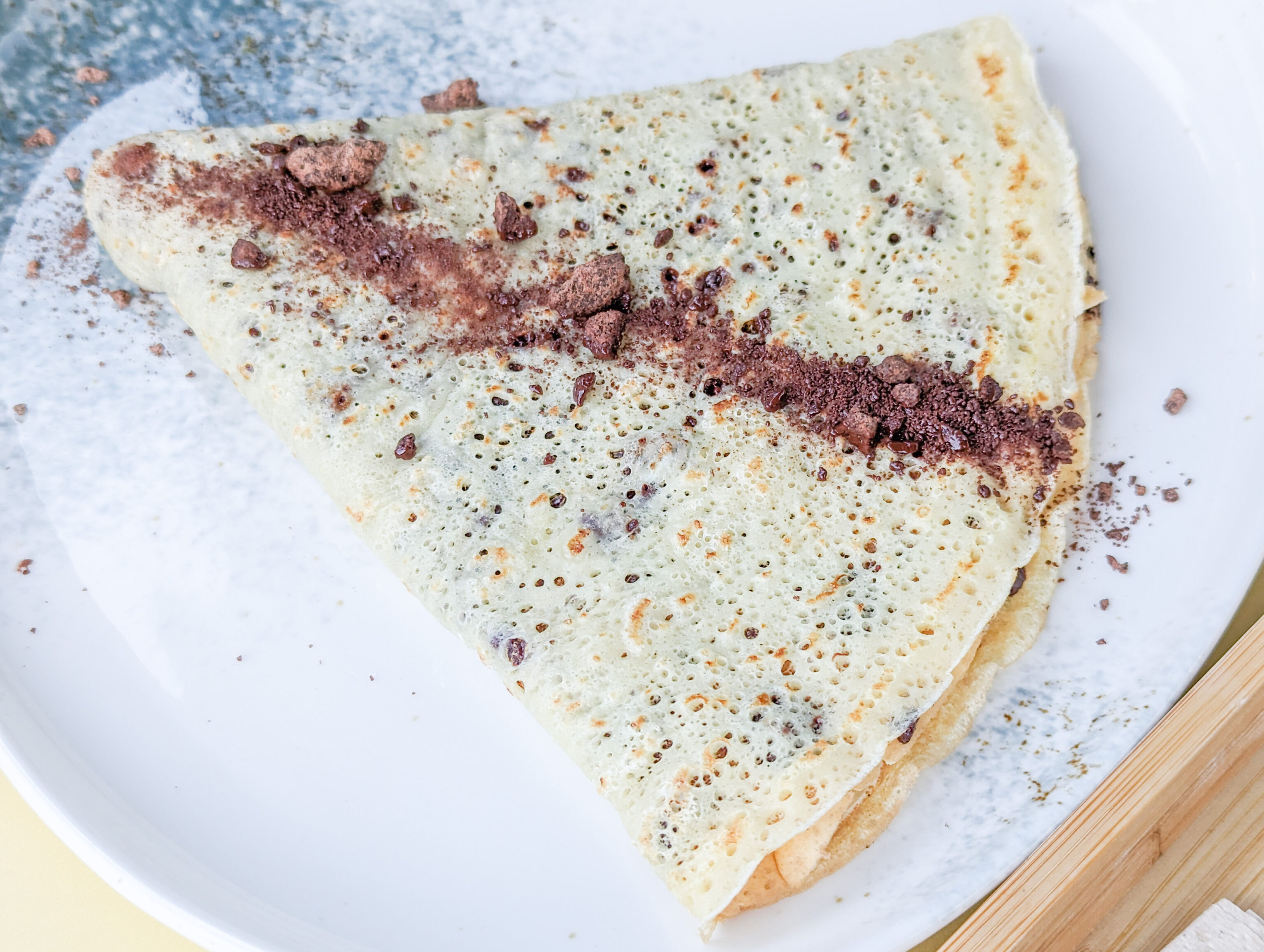
We went to Clubhaus, a tiny cafe, for crepes. We were able to sit at an empty table outside. We got two crepes, one with cheese and beef and the other with dark Swiss chocolate. Both were very good. We’re not sure what the exact type of beef was, it was something like corned or maybe pastrami.
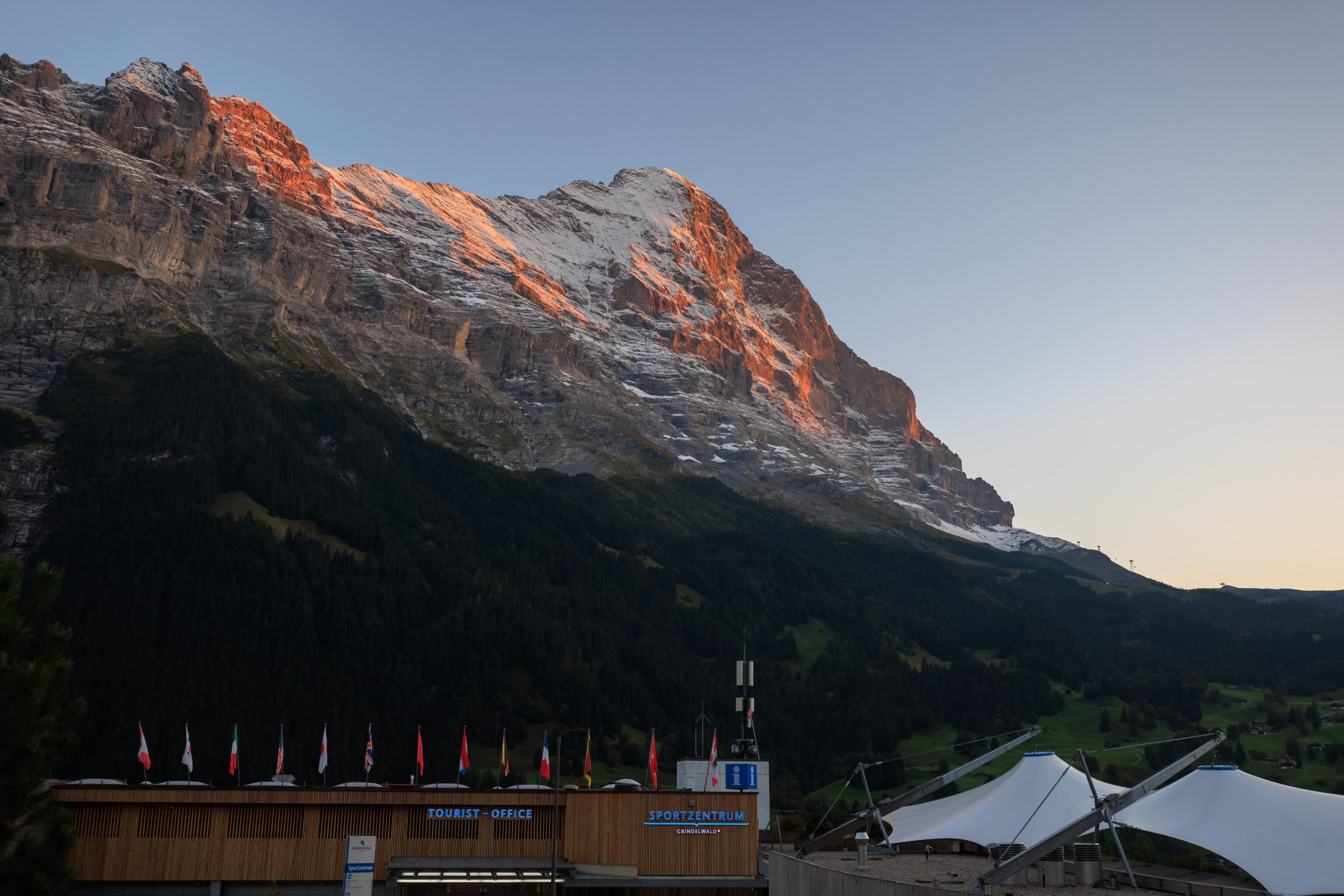
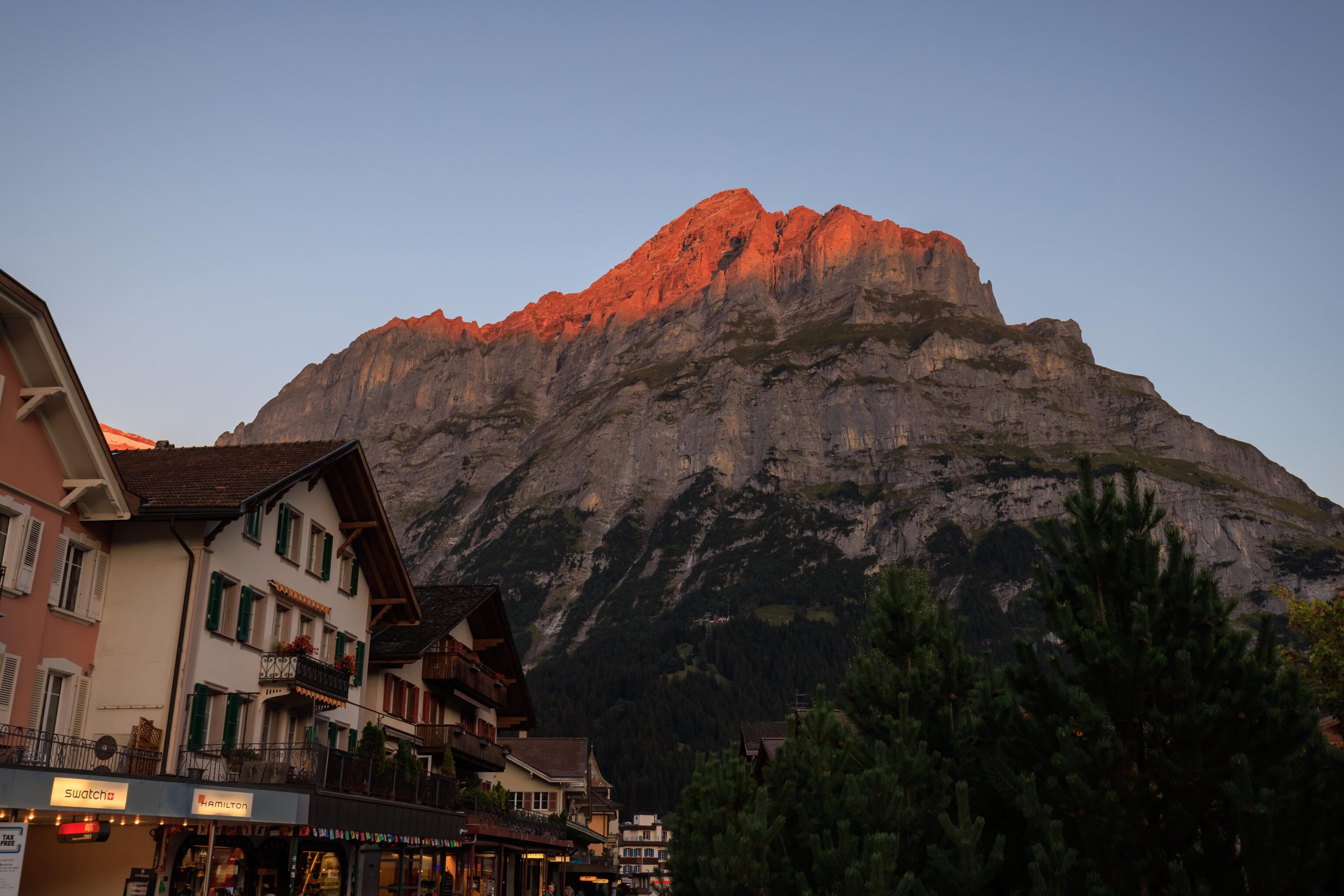
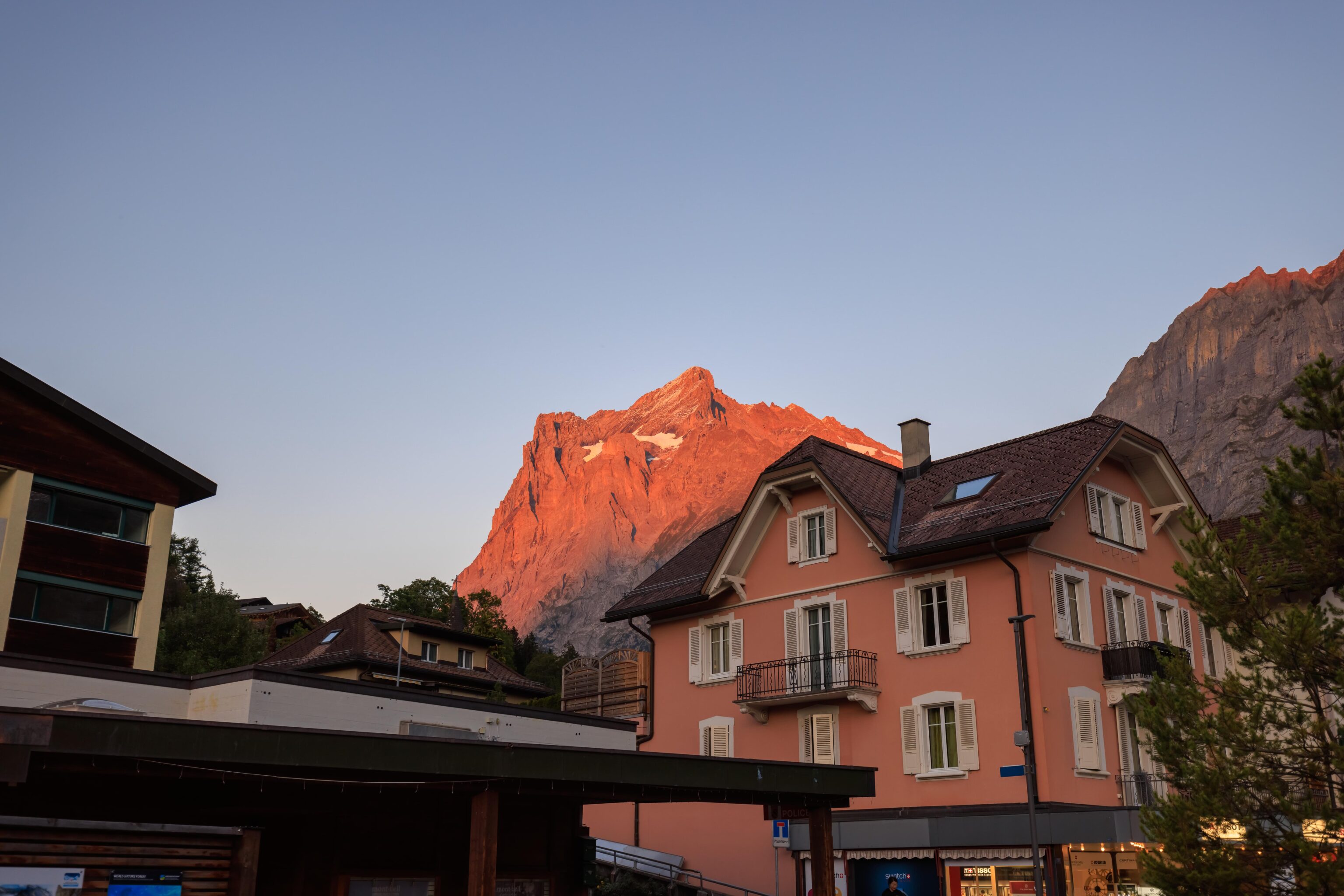
We headed back to the Hotel Belvedere as the last rays of sunlight receded from the mountains above us.


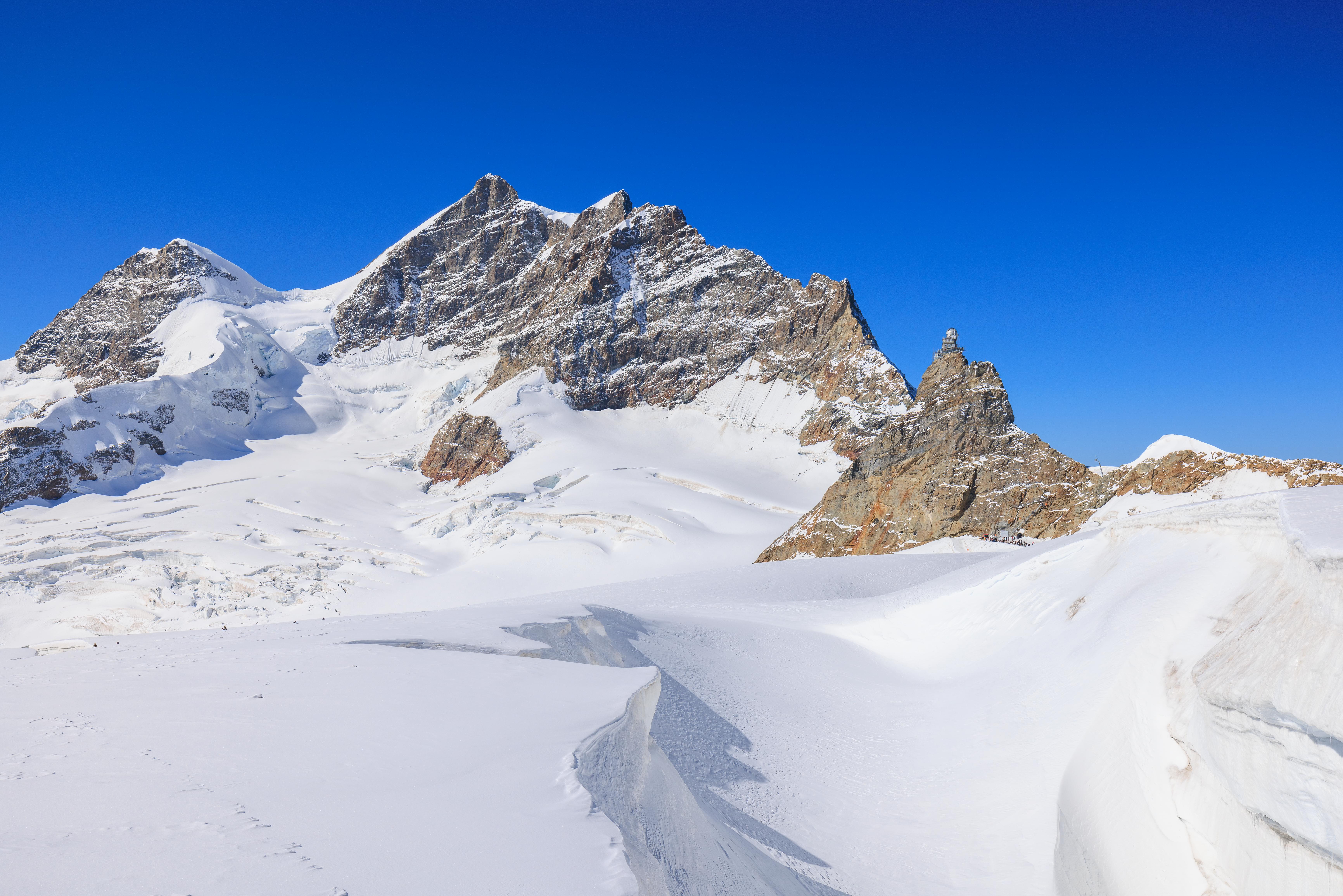
2 Replies to “Jungfraujoch”